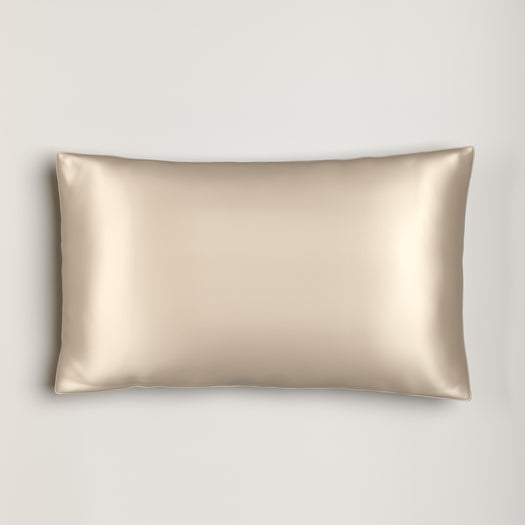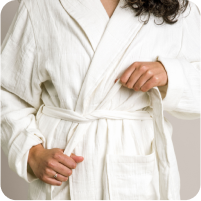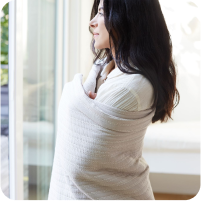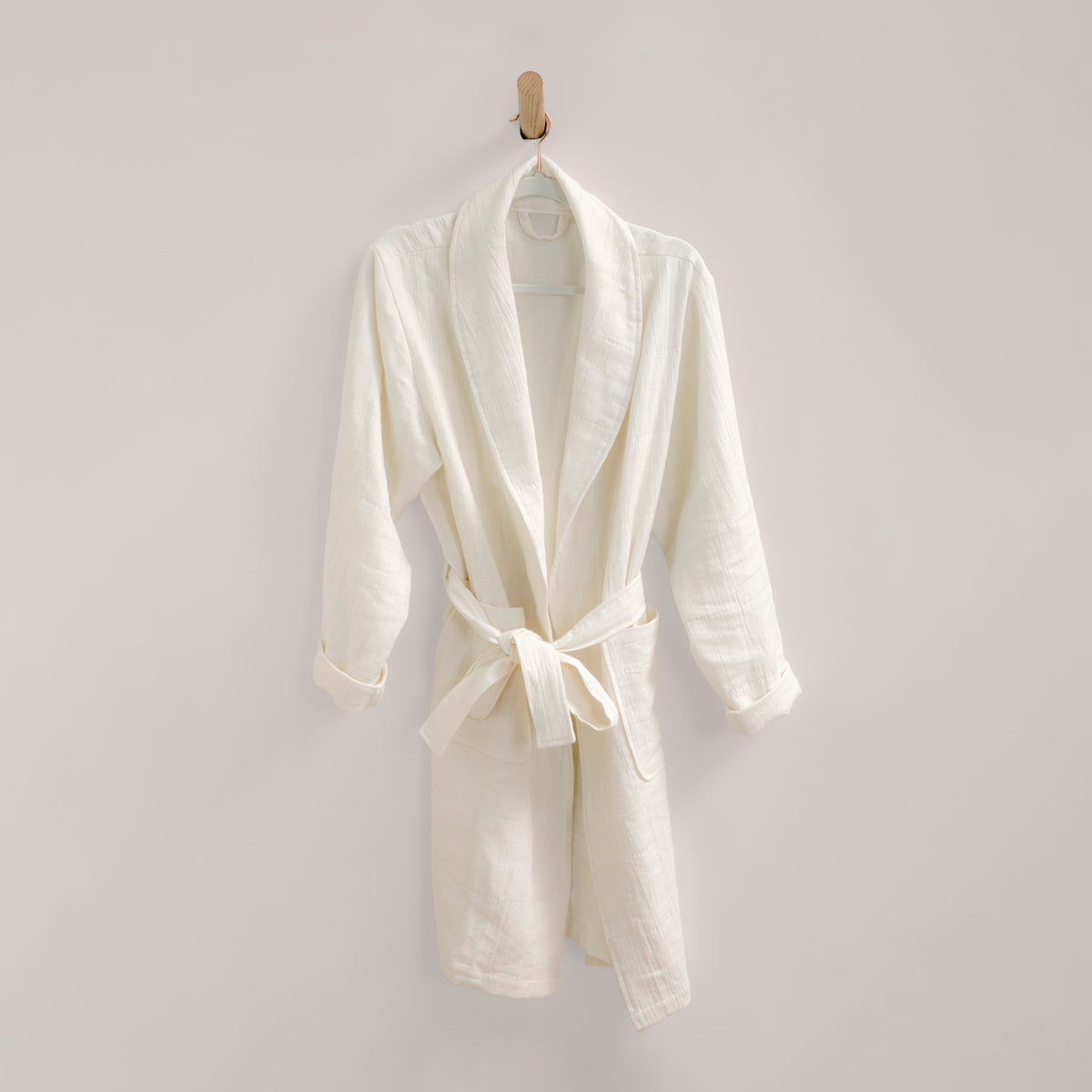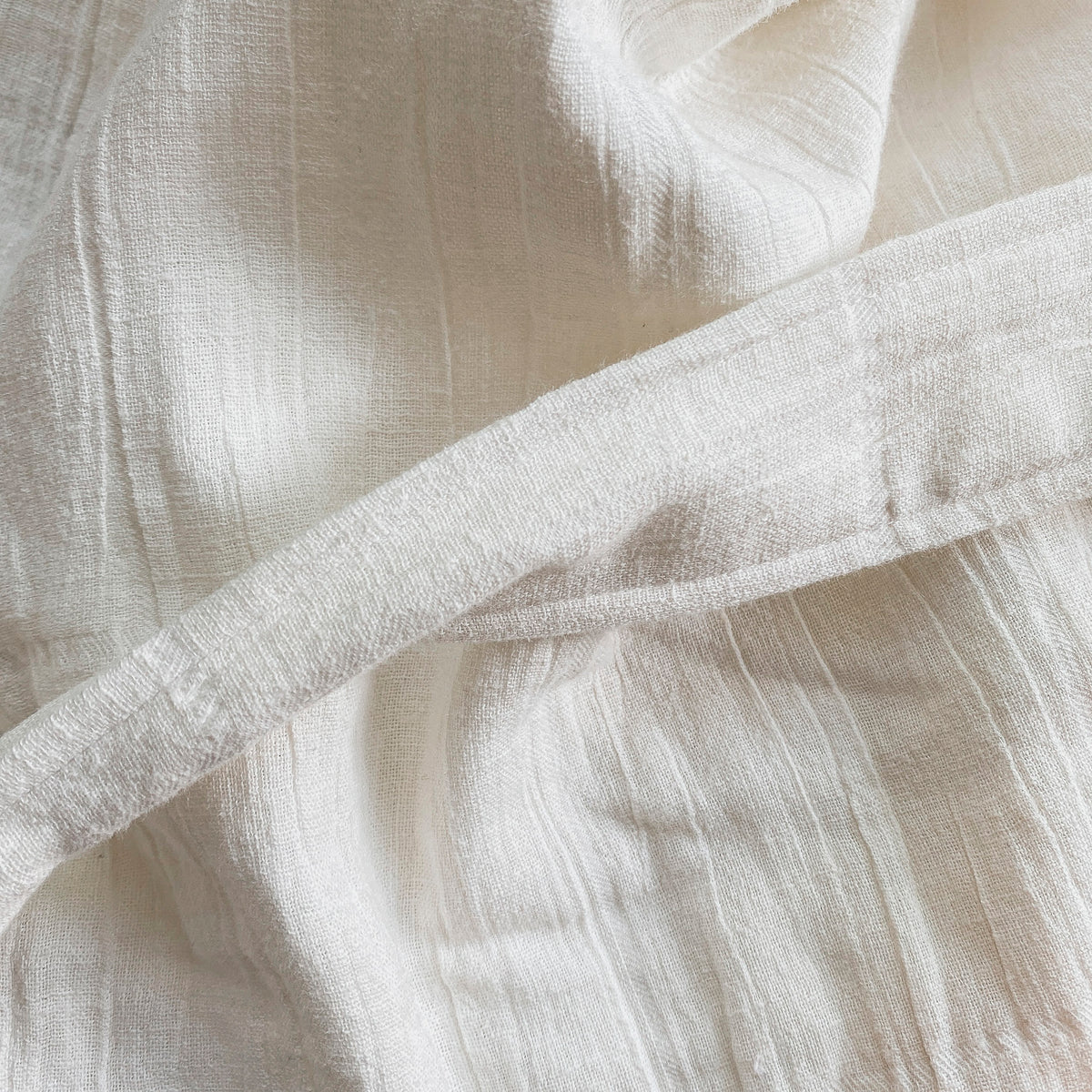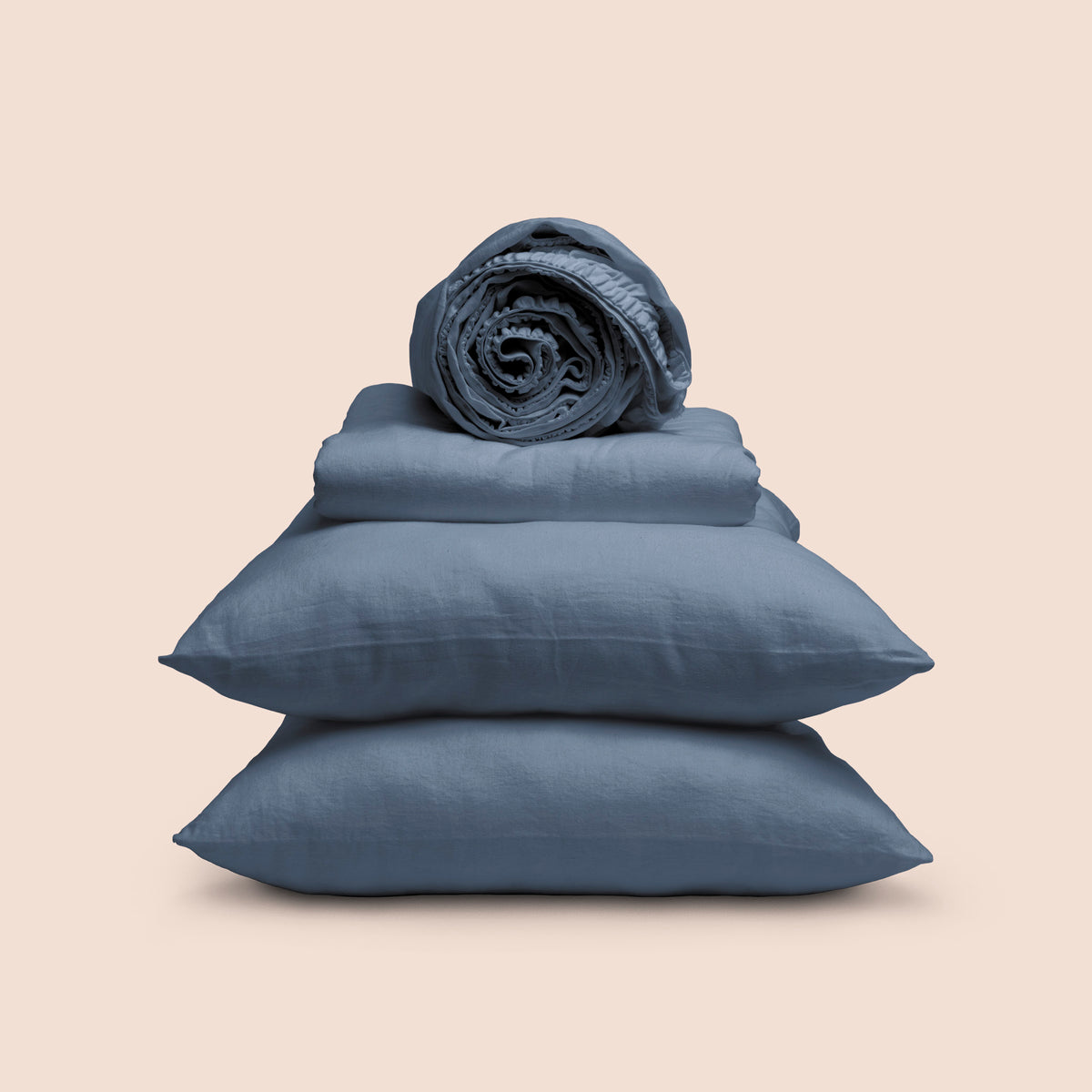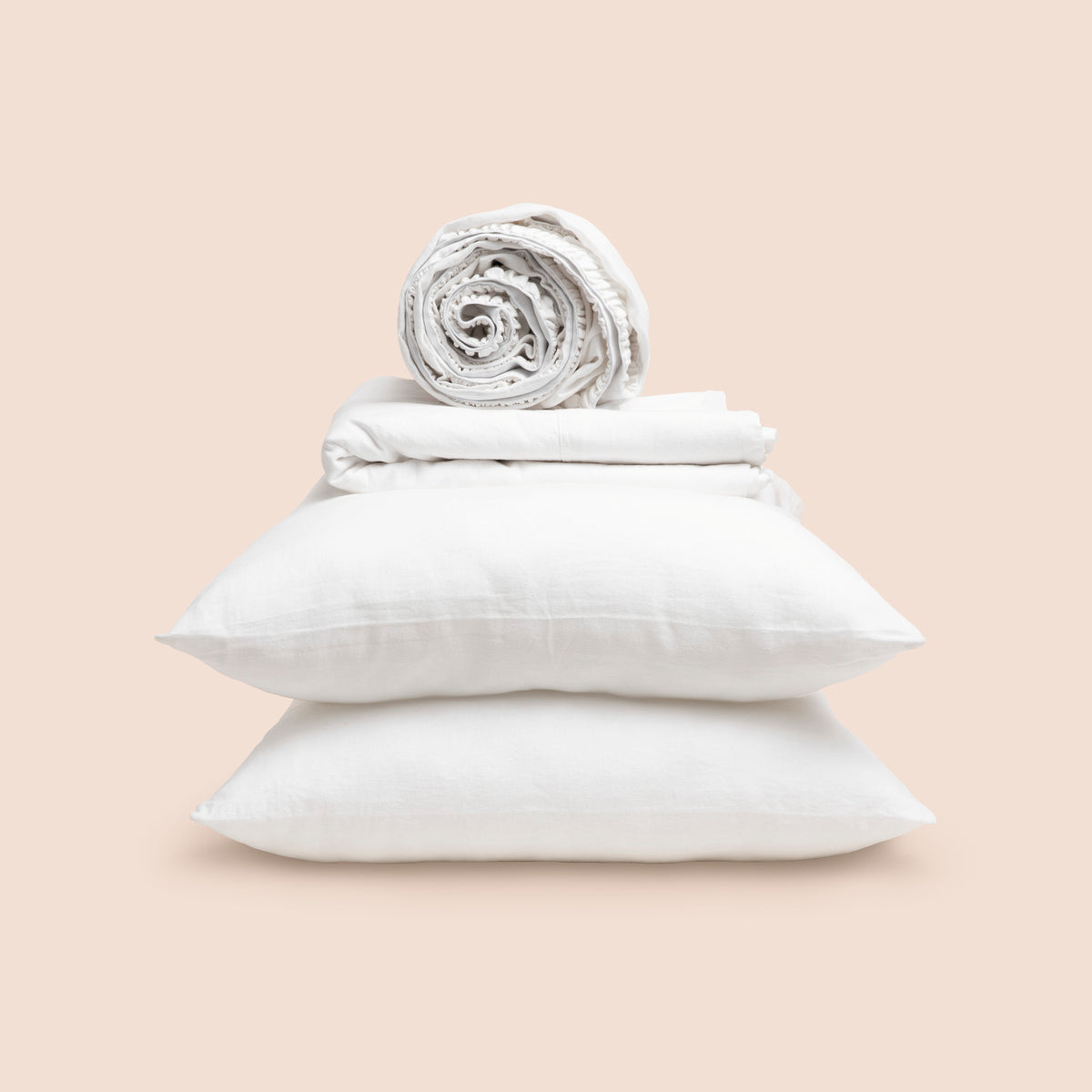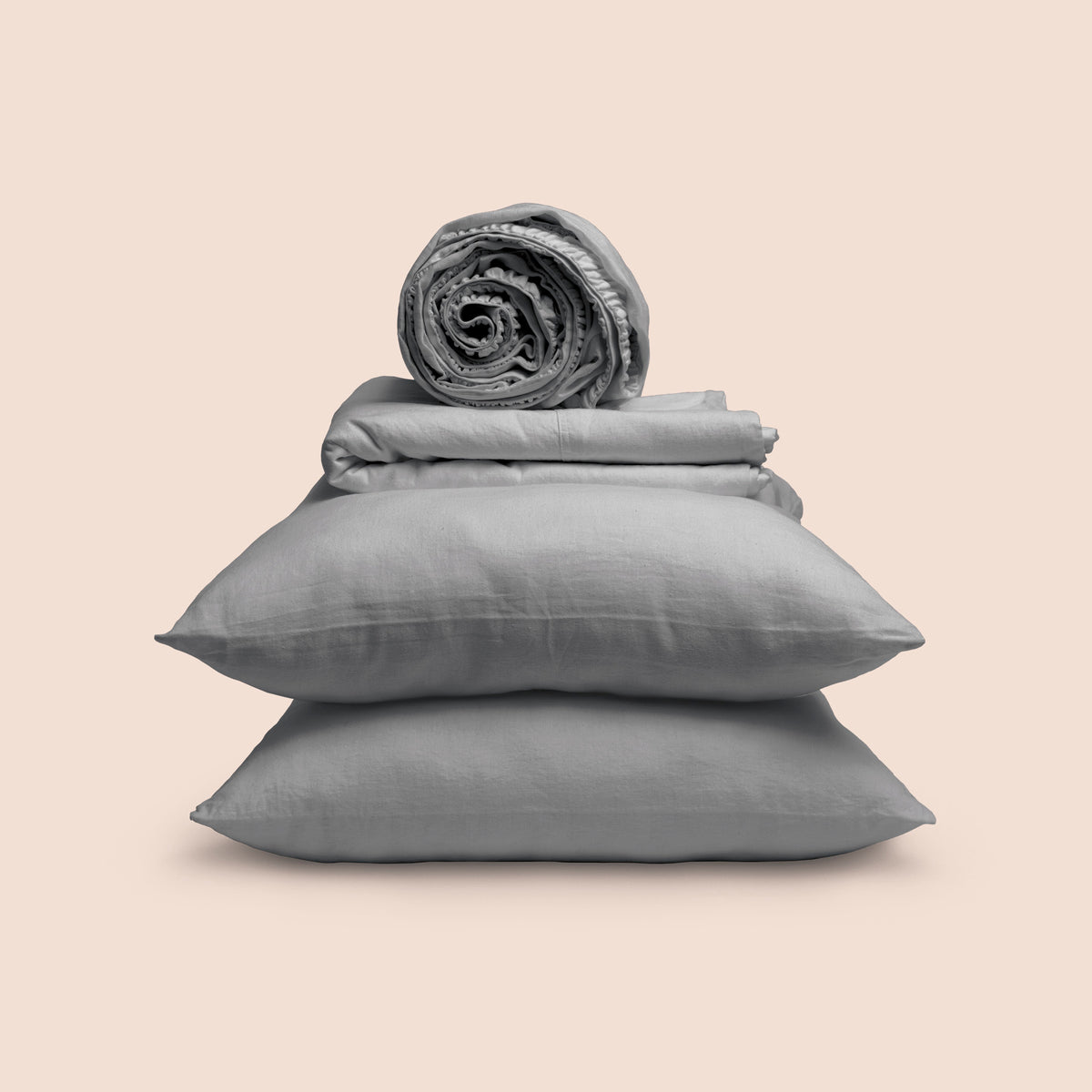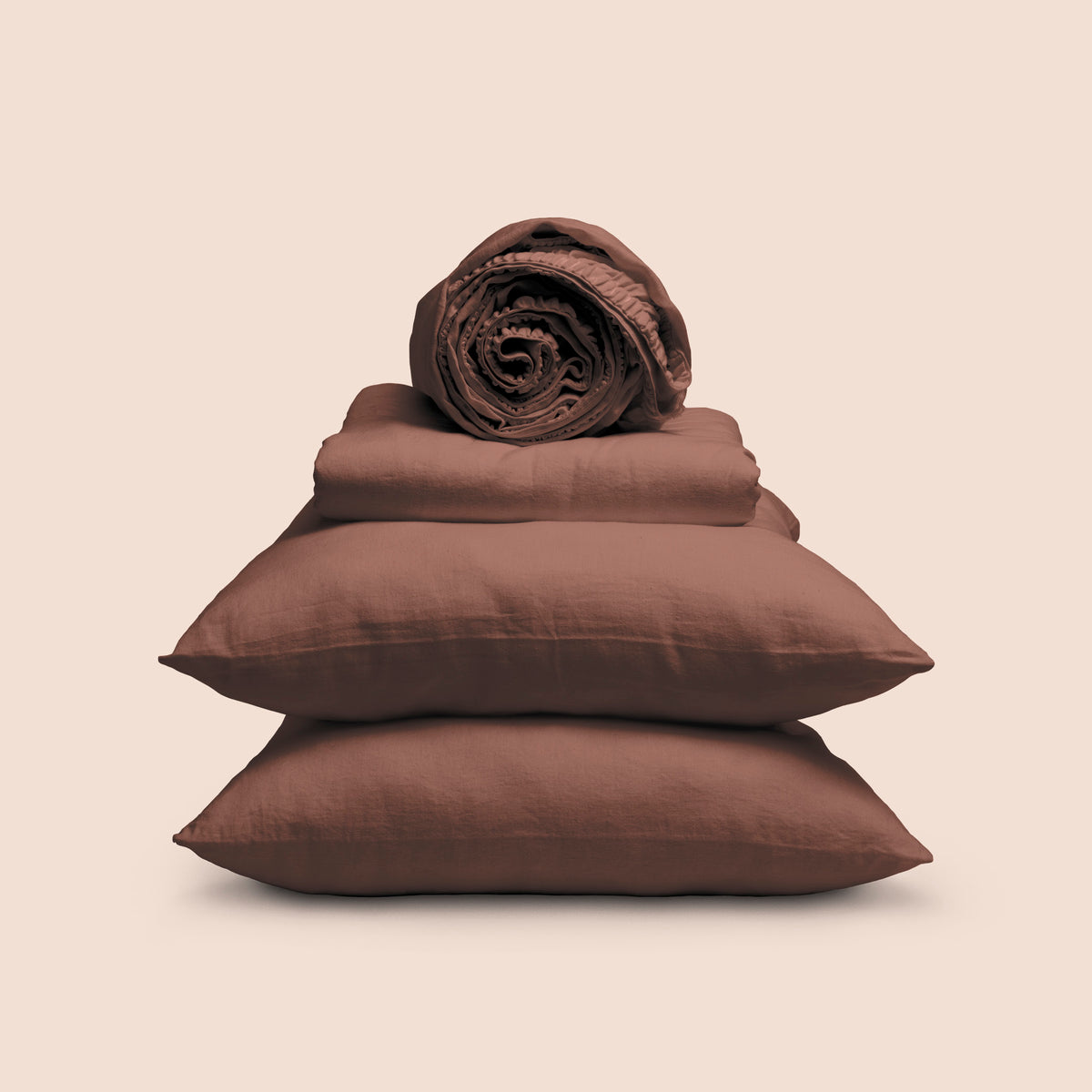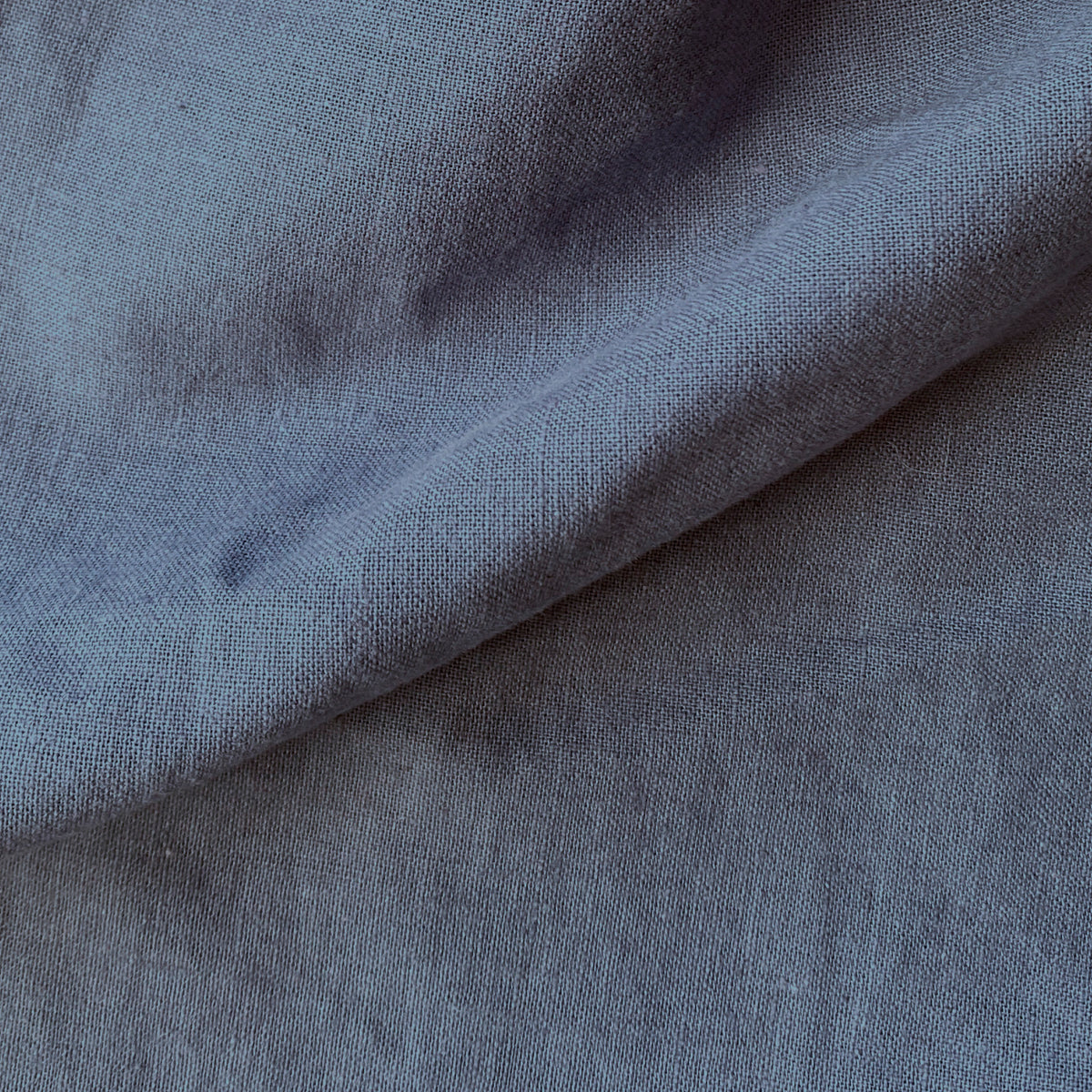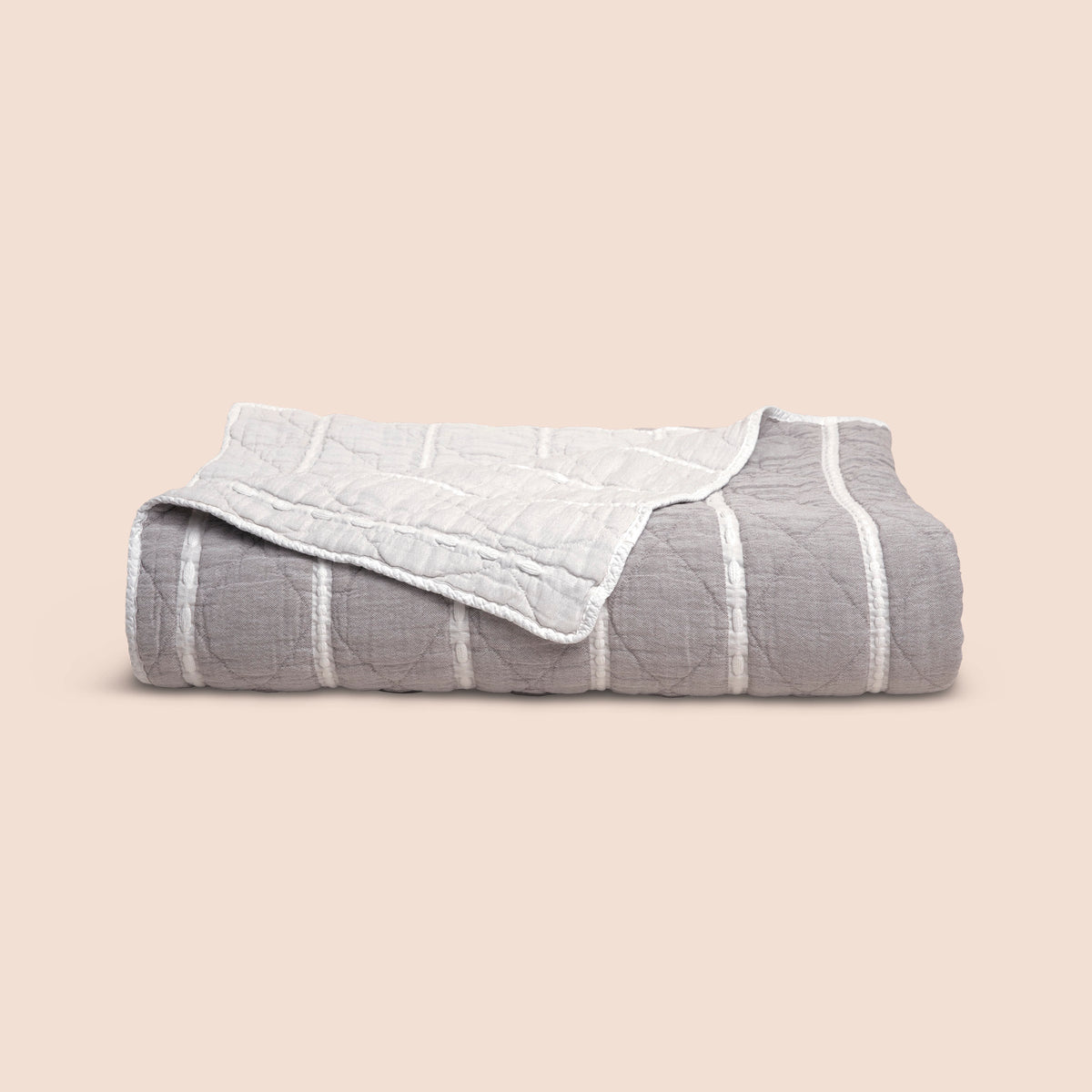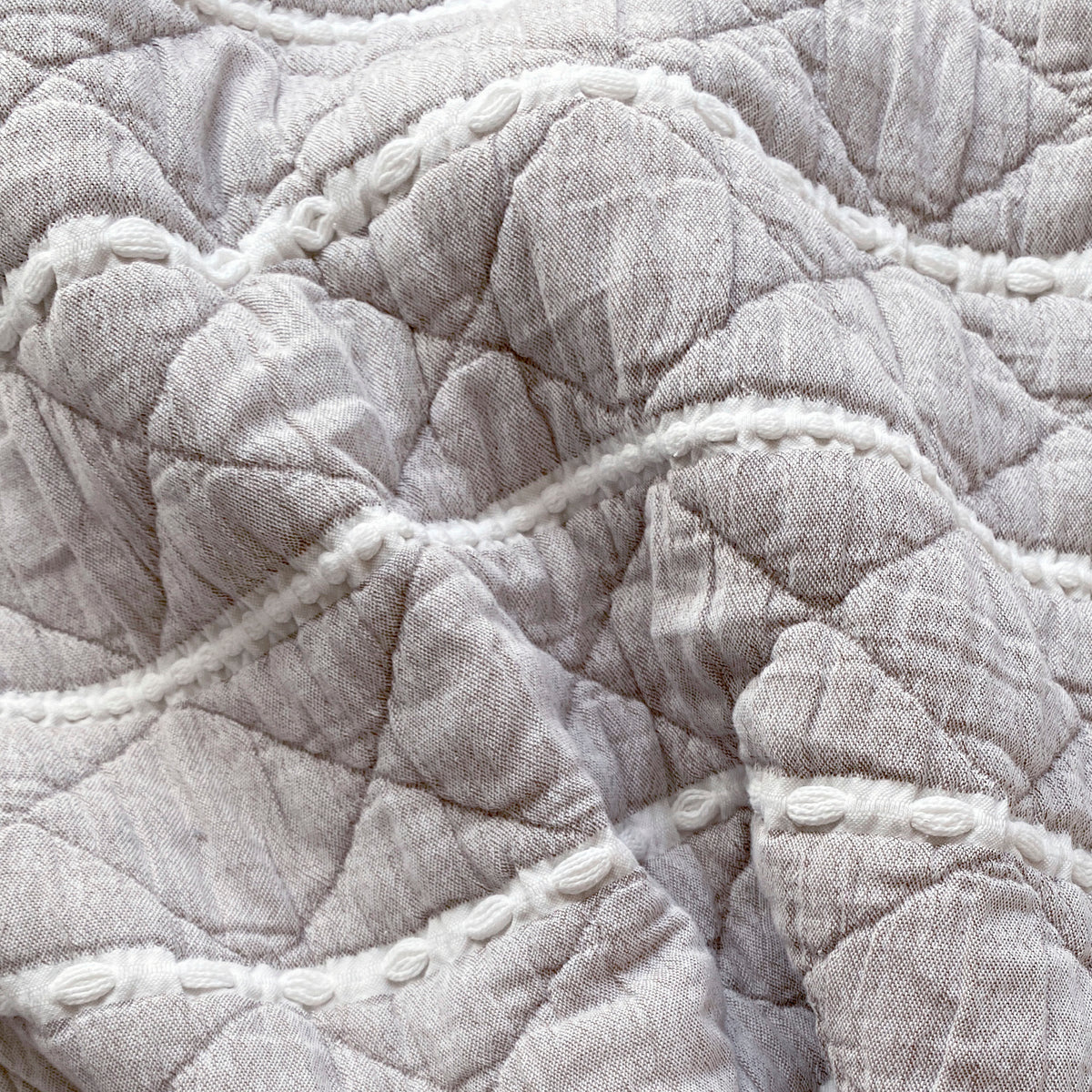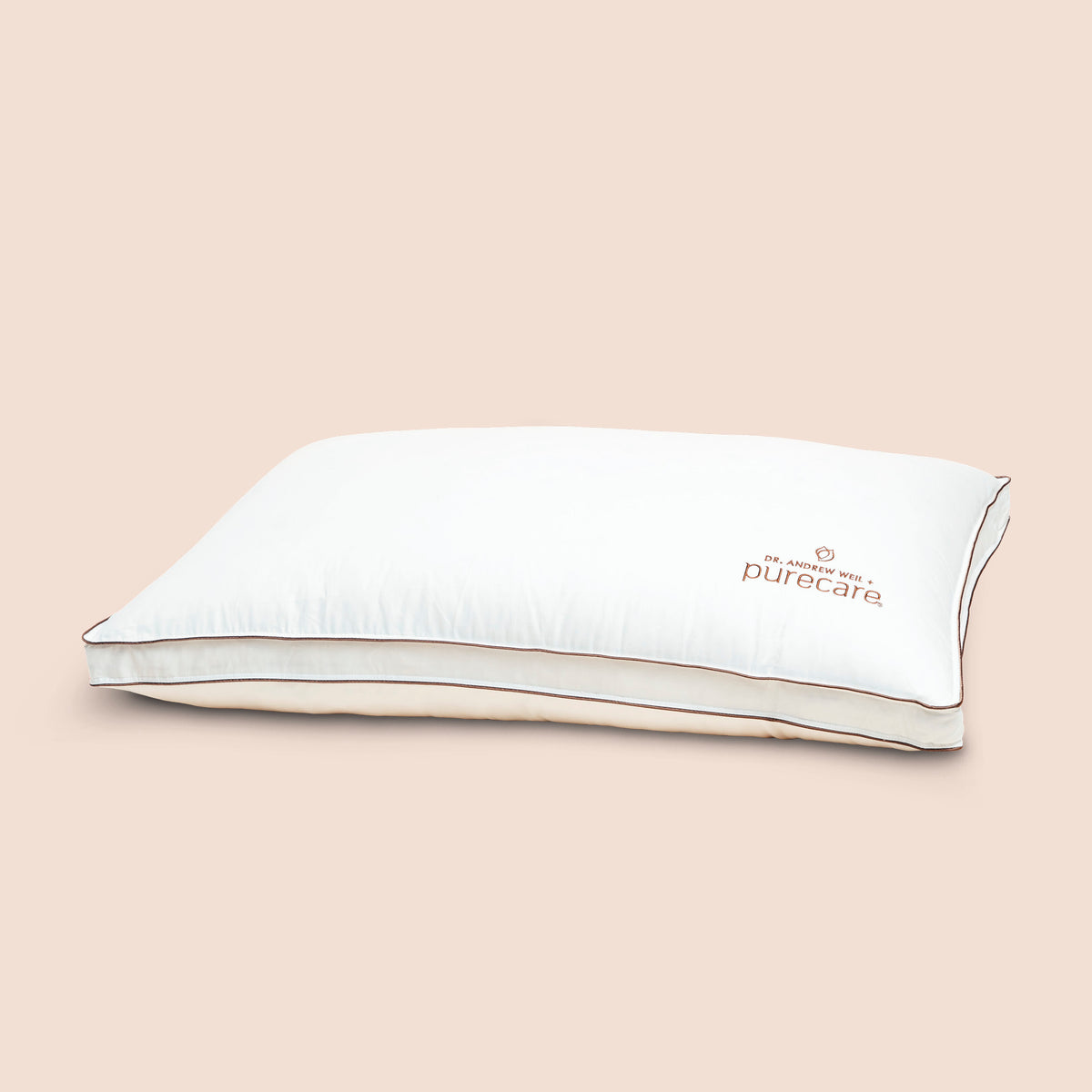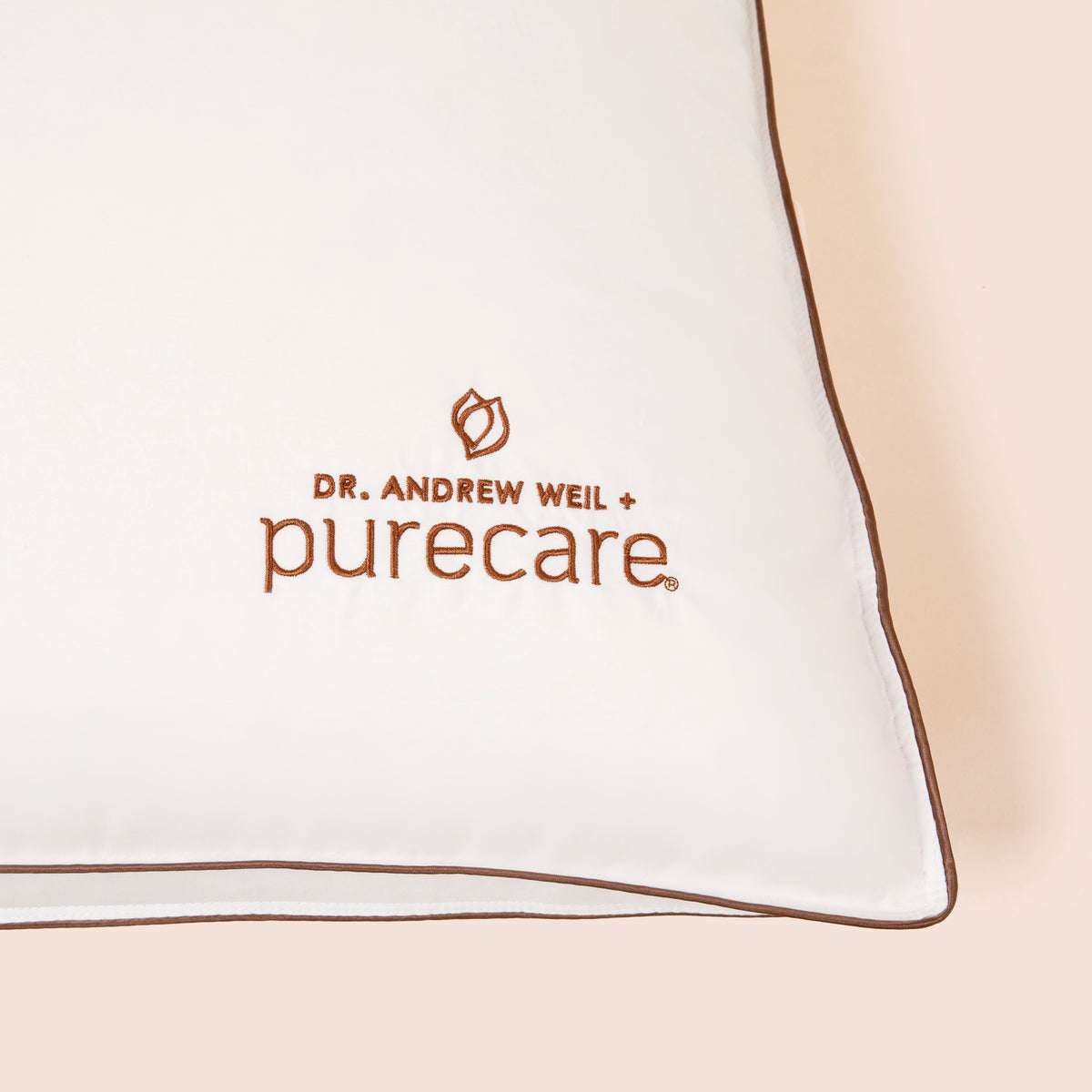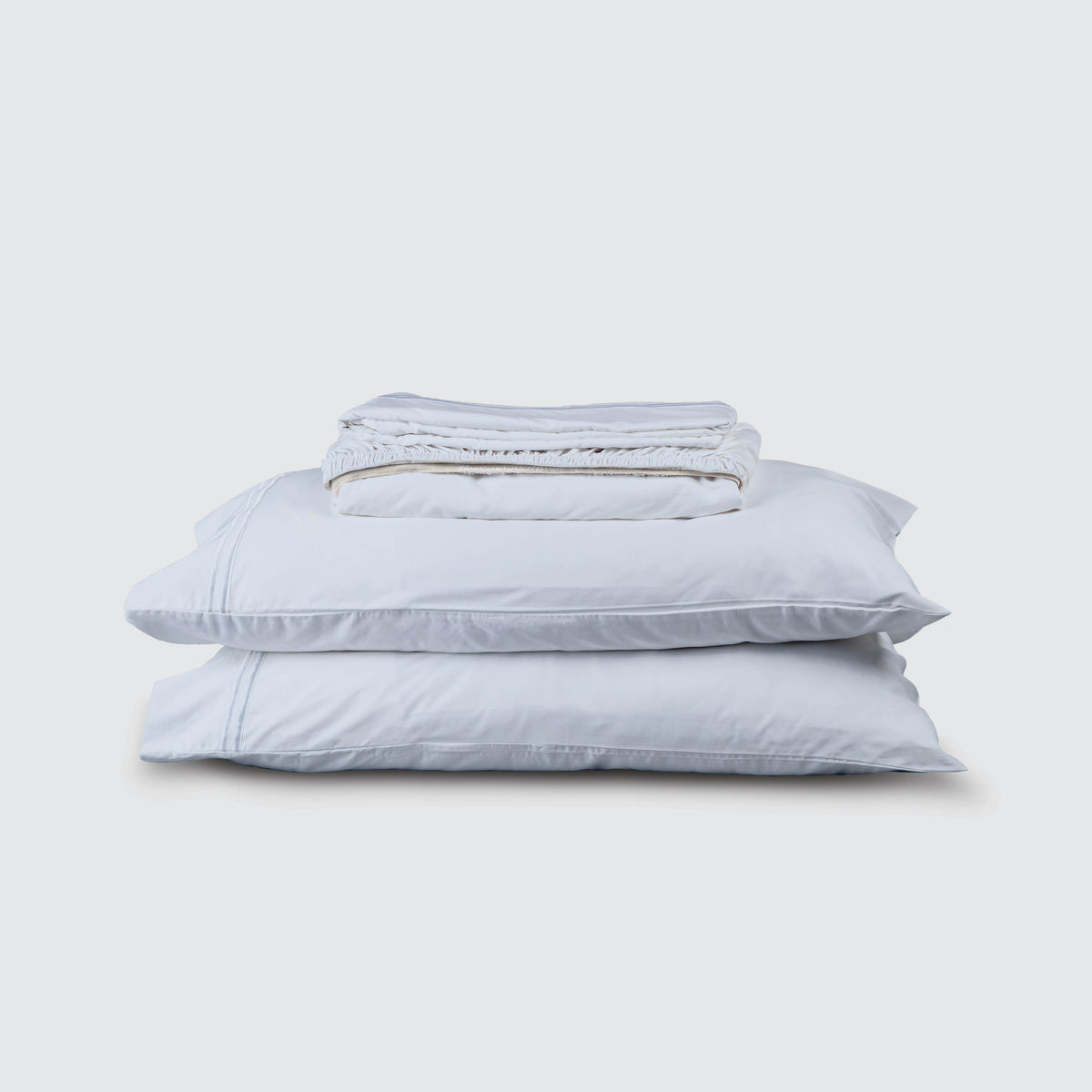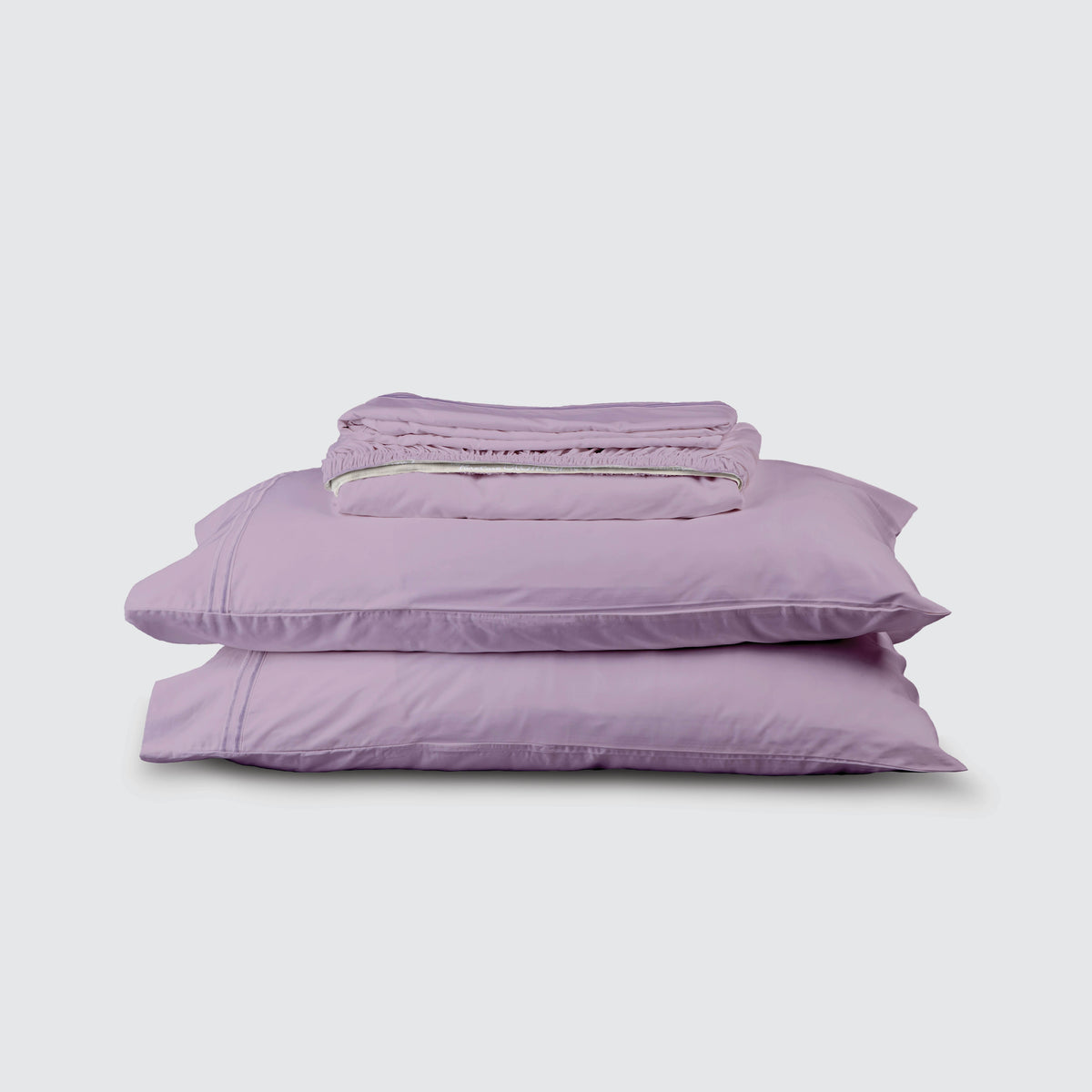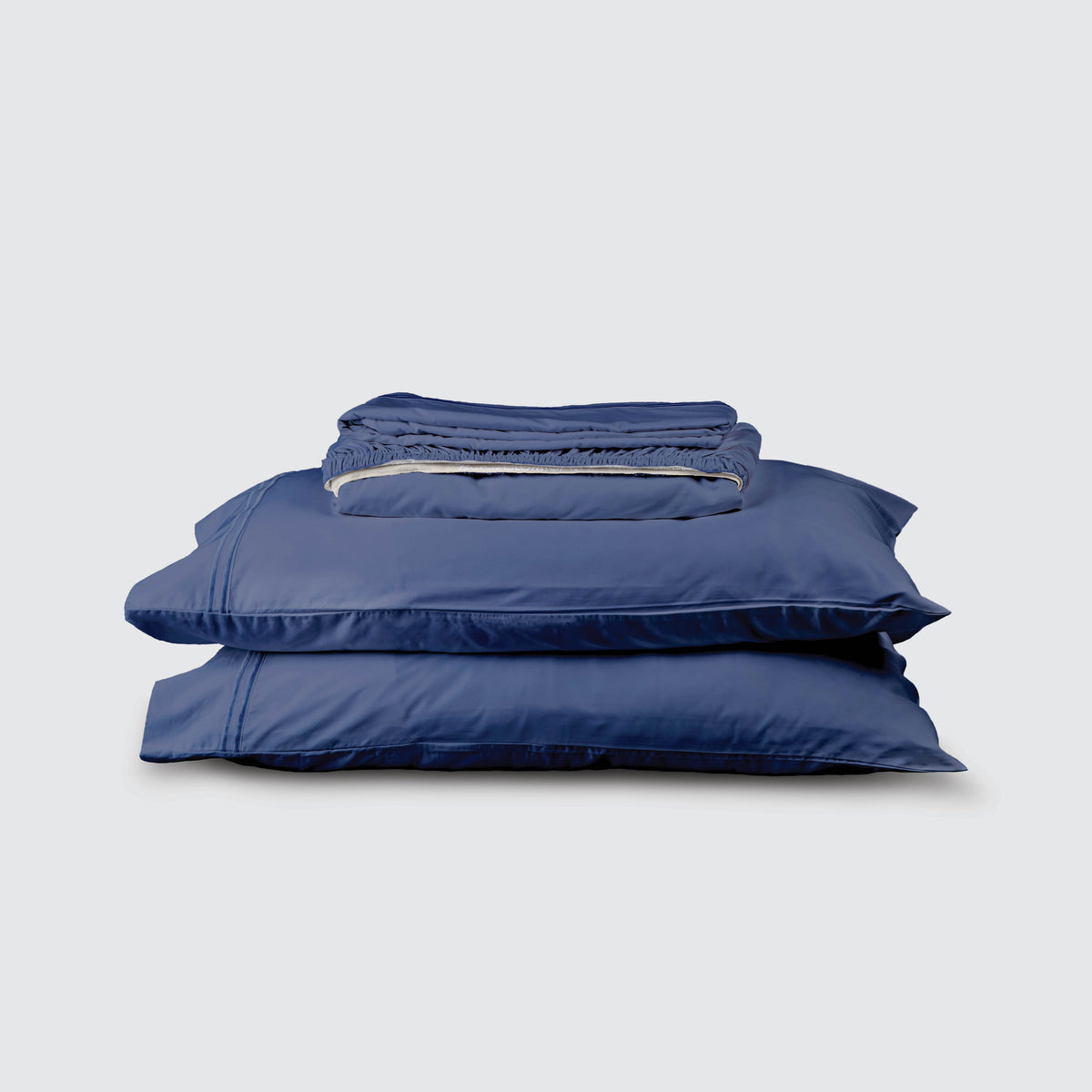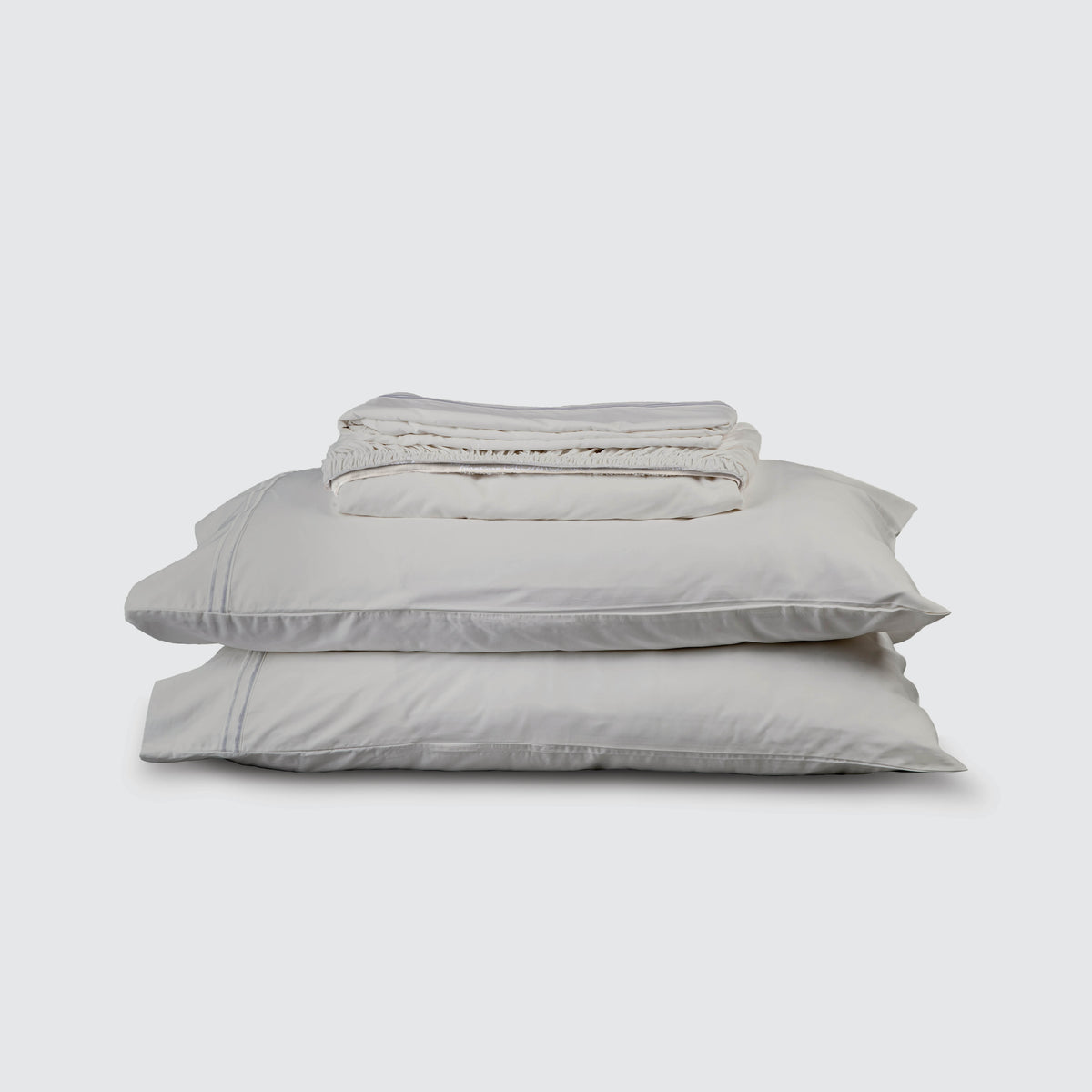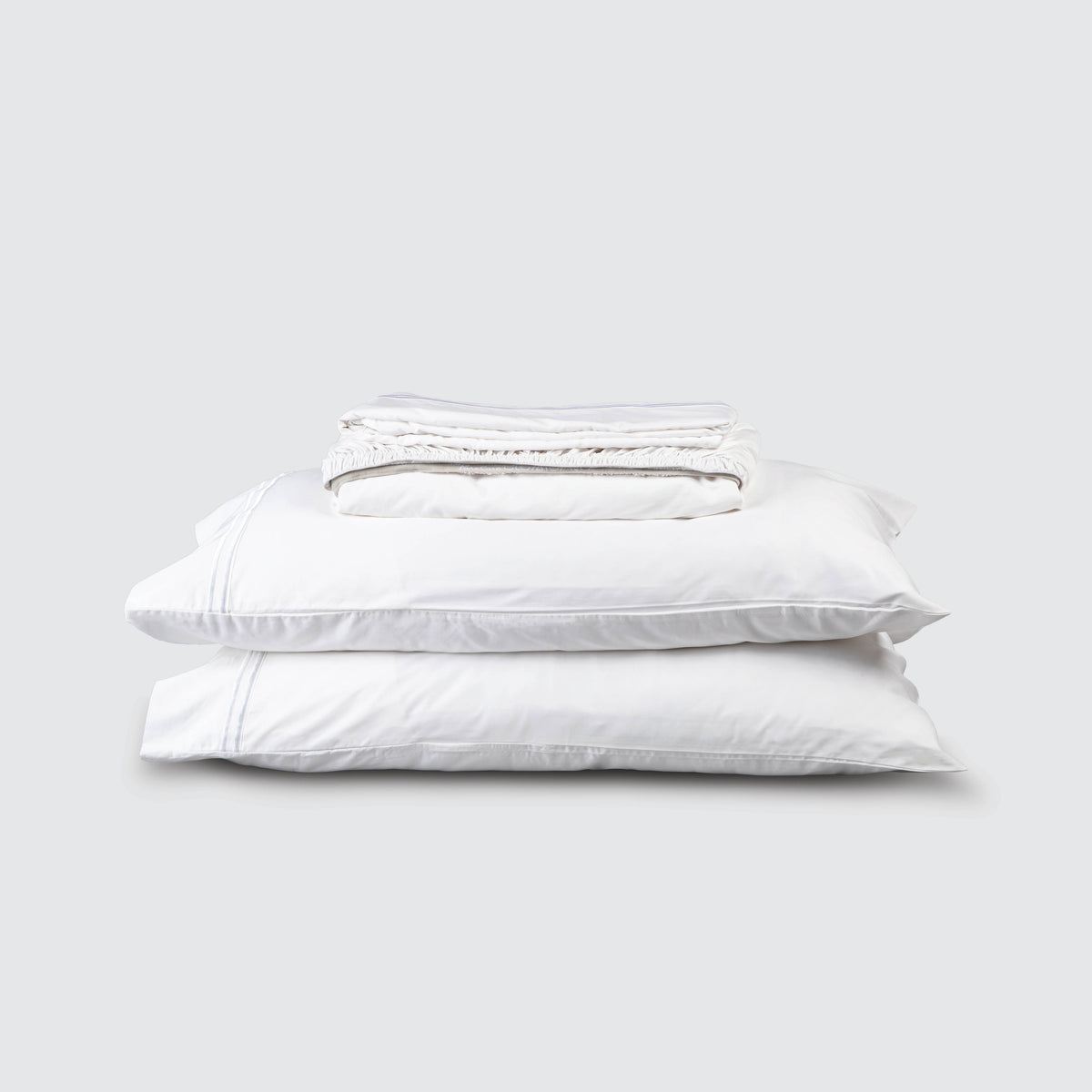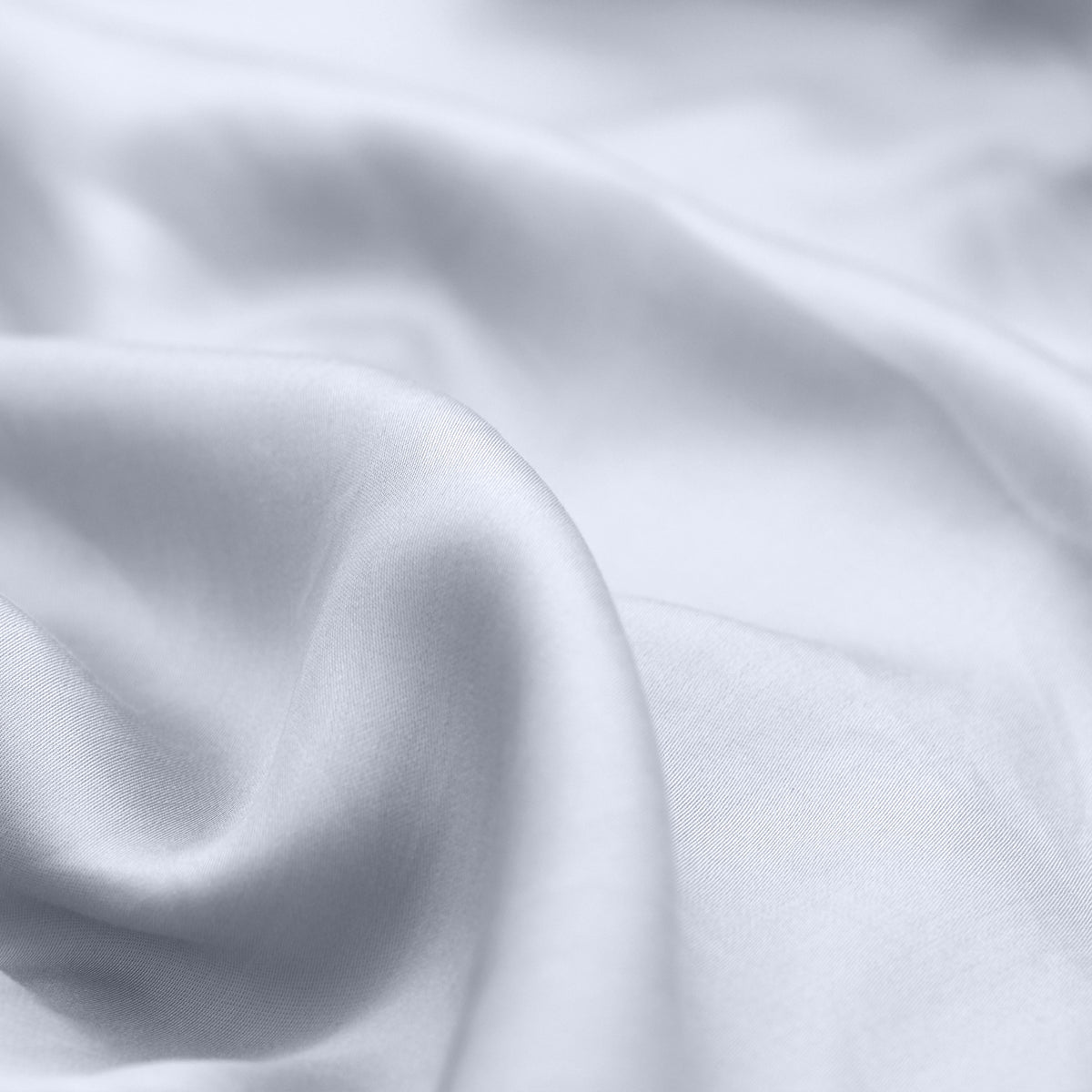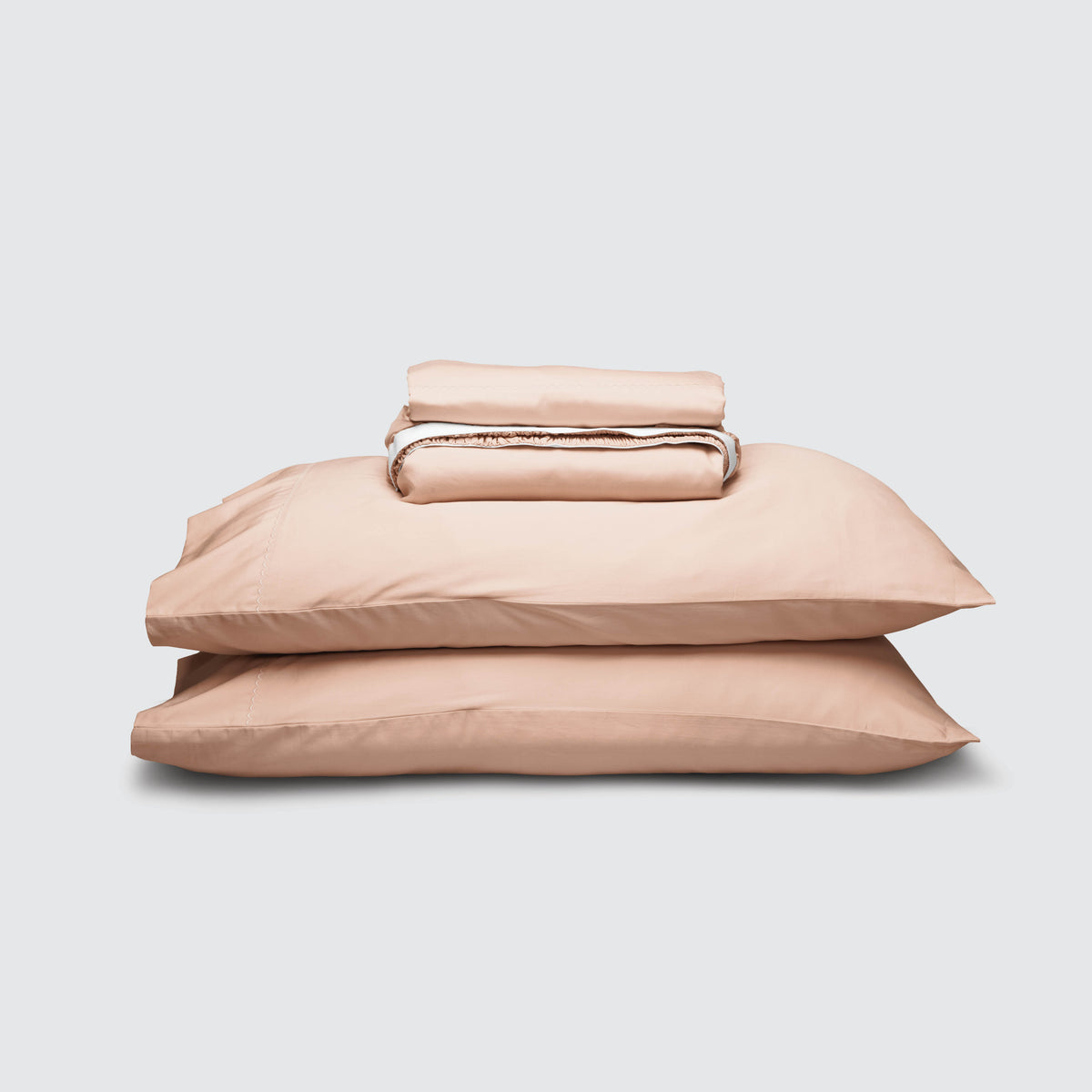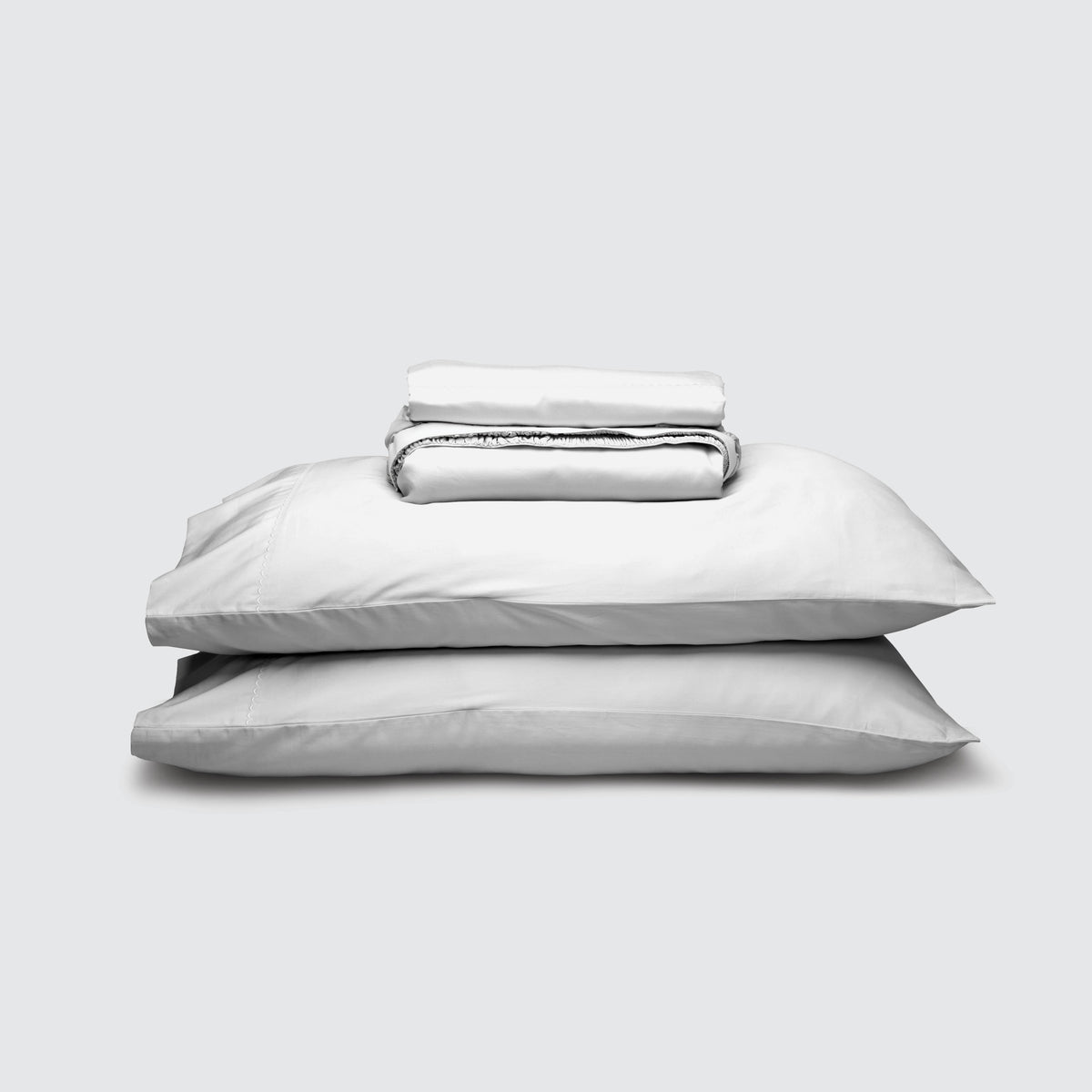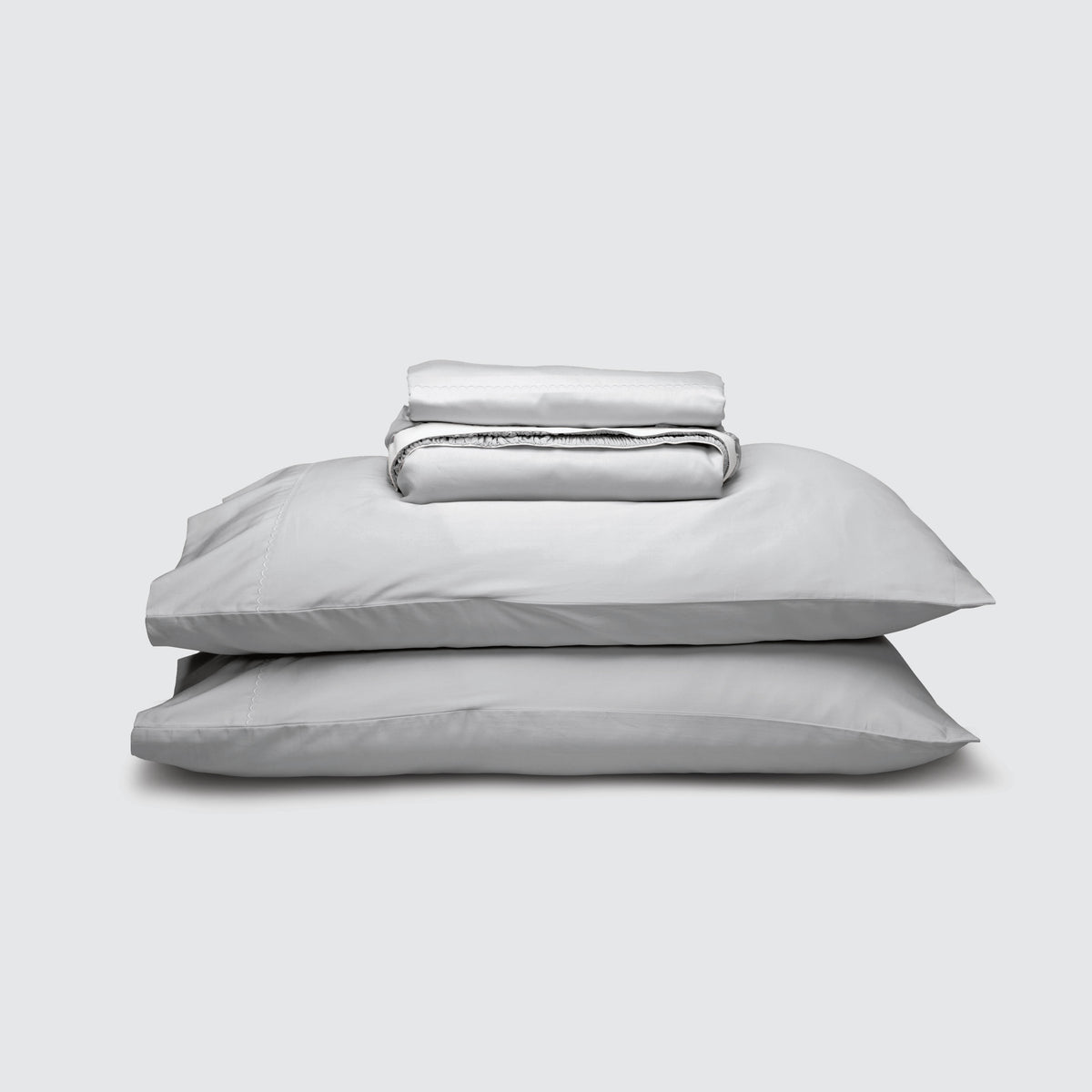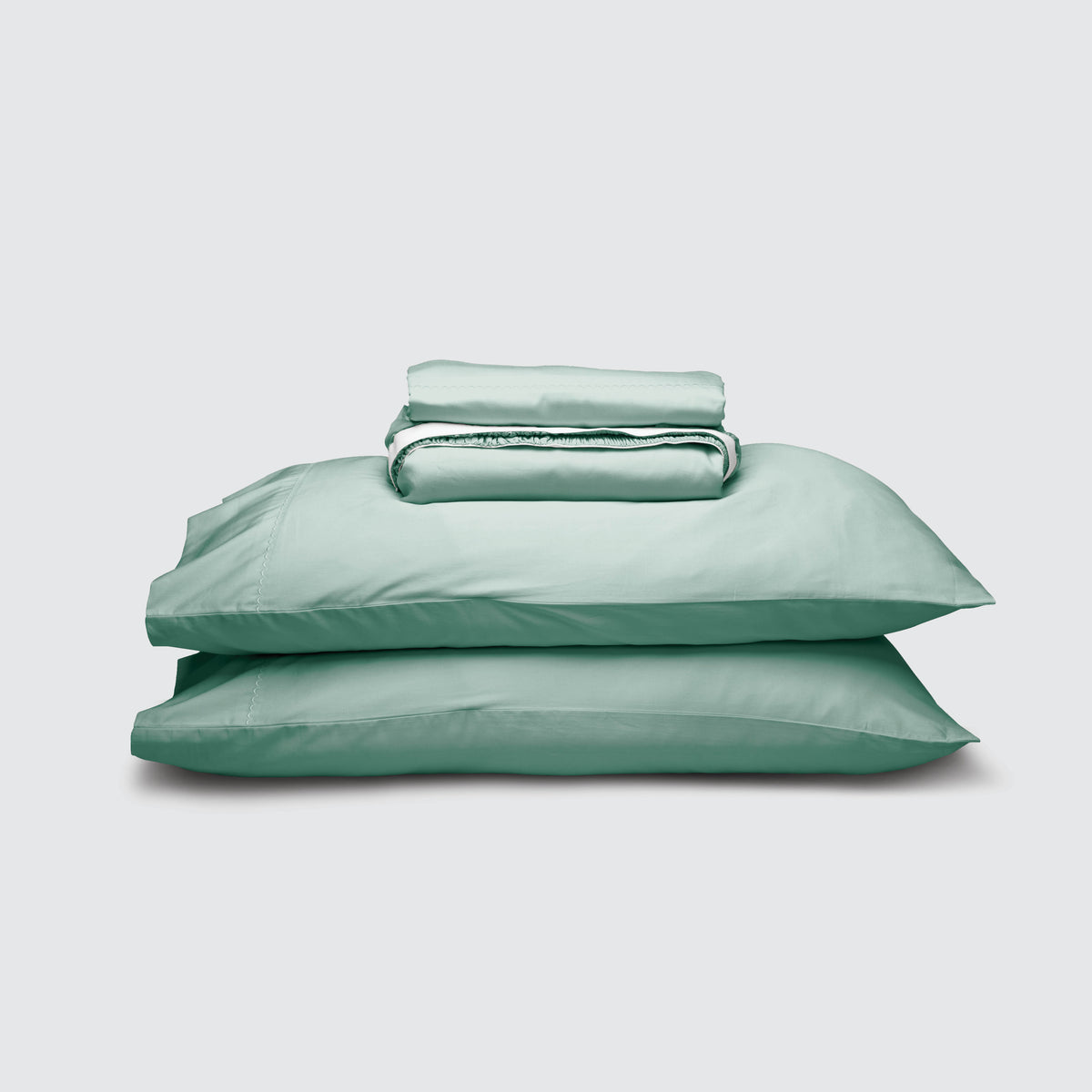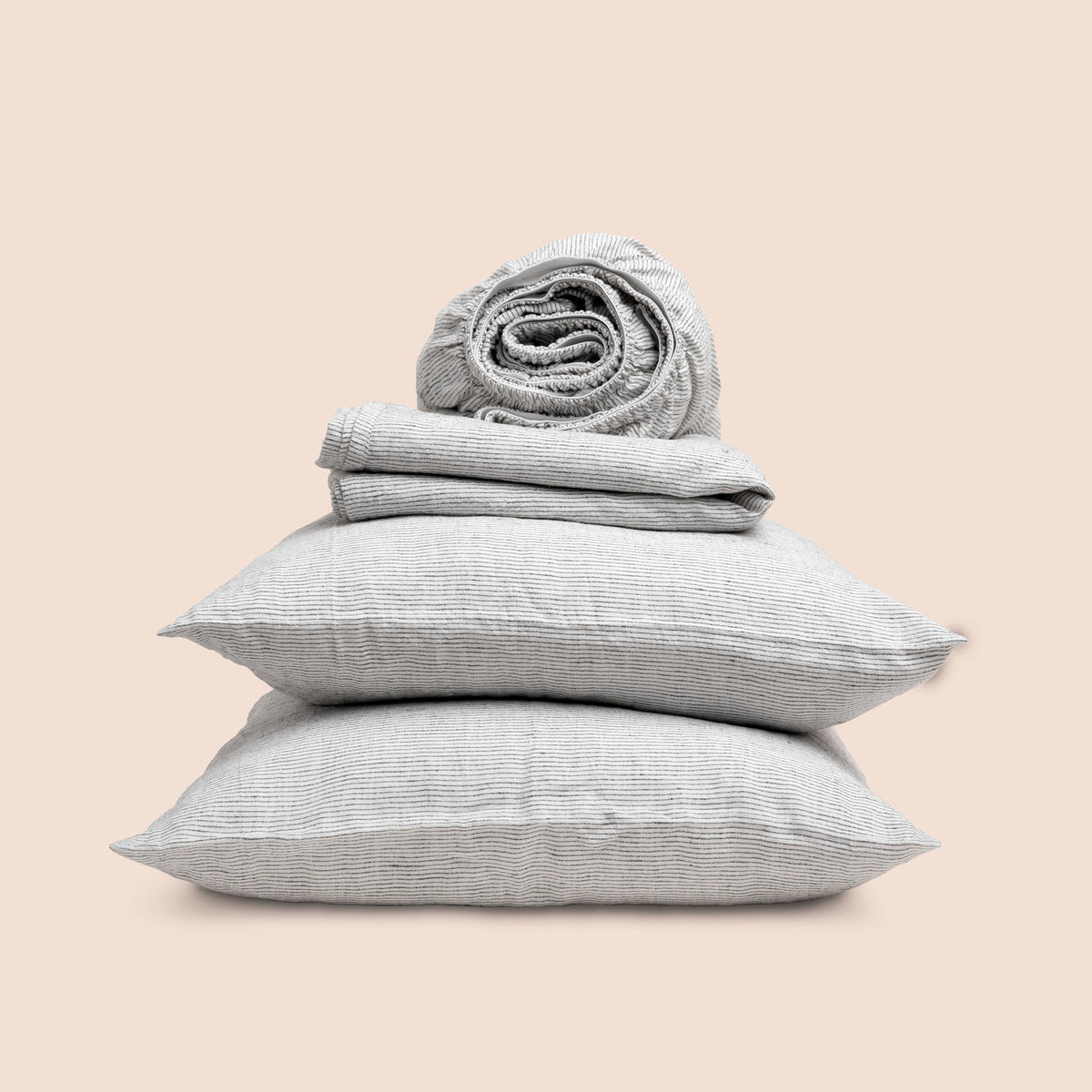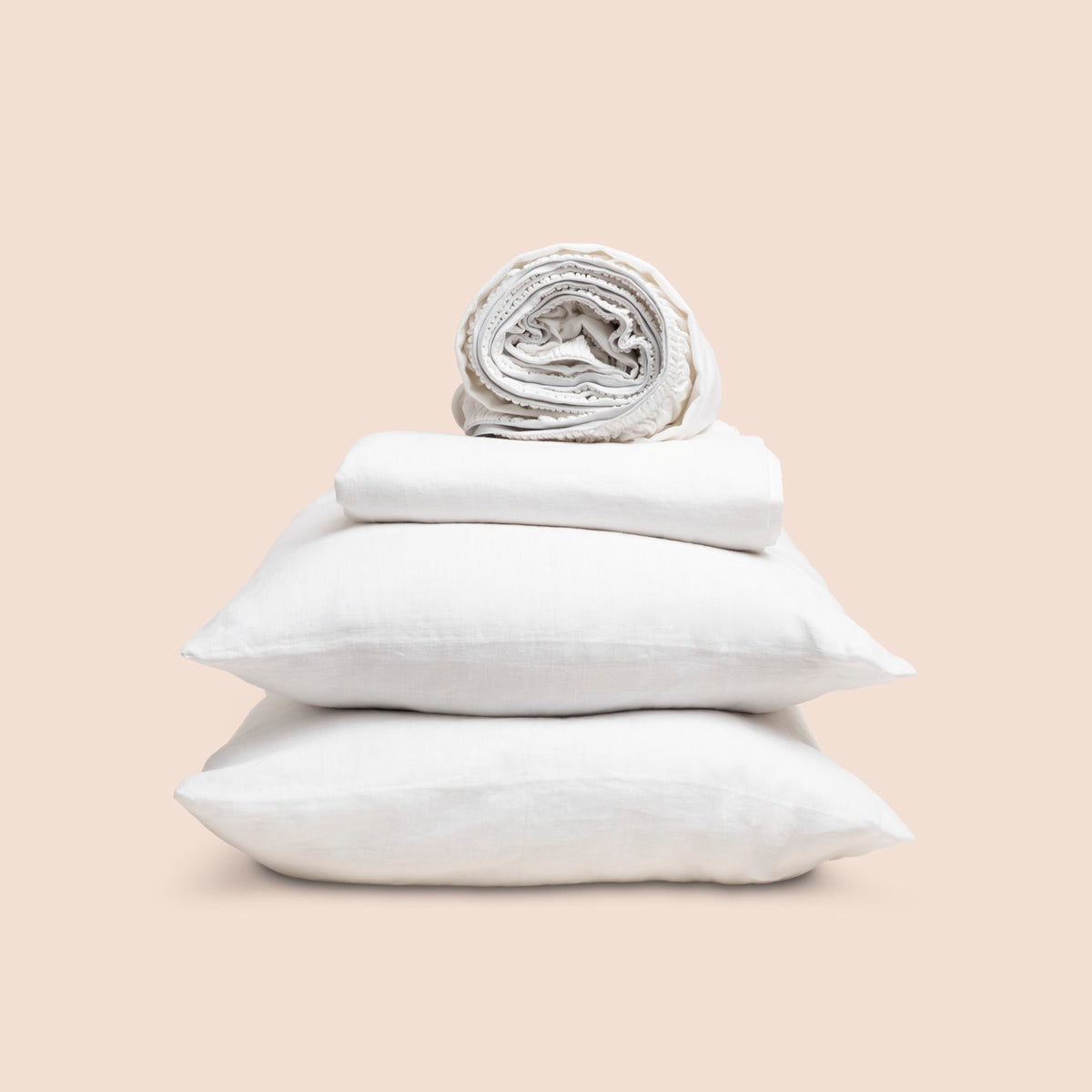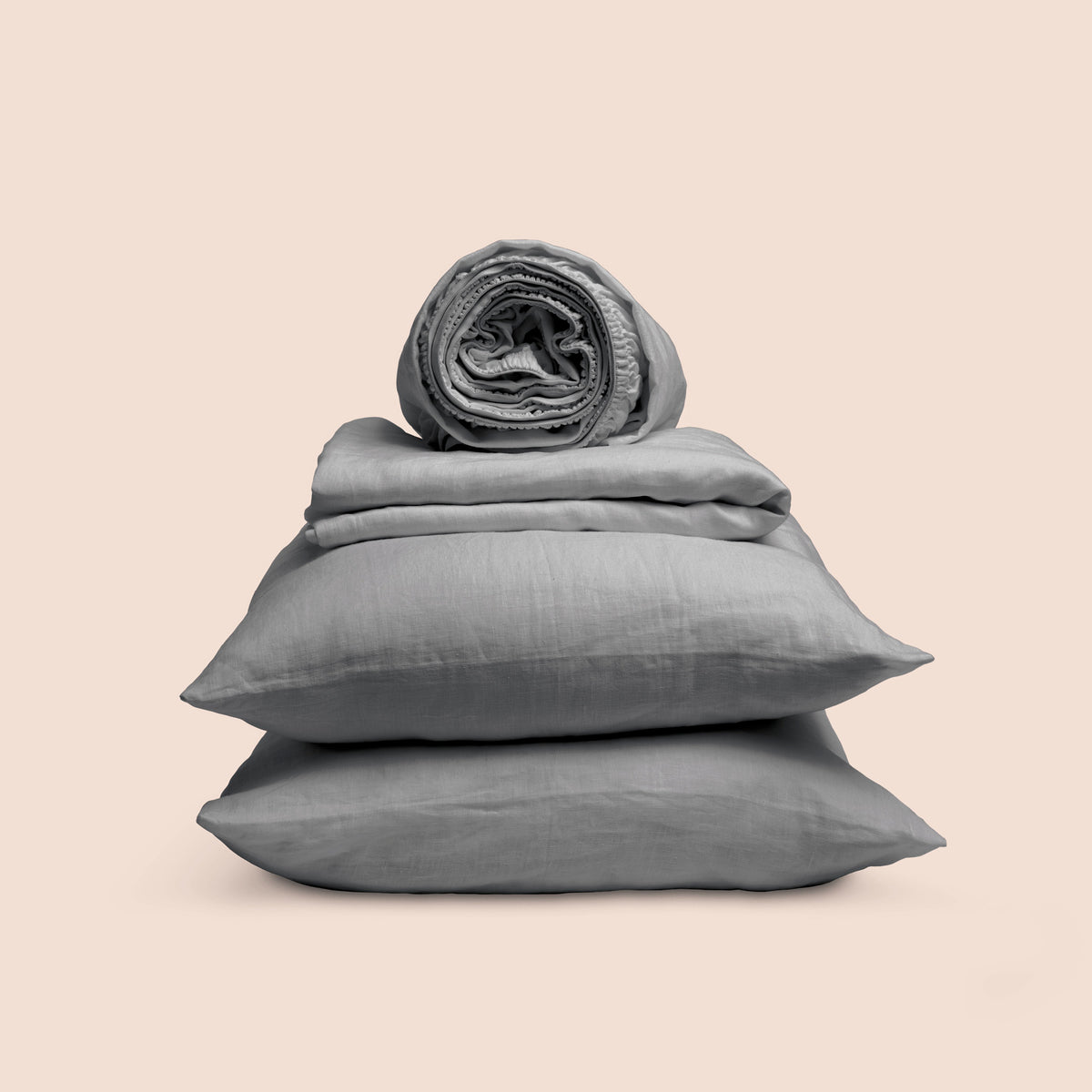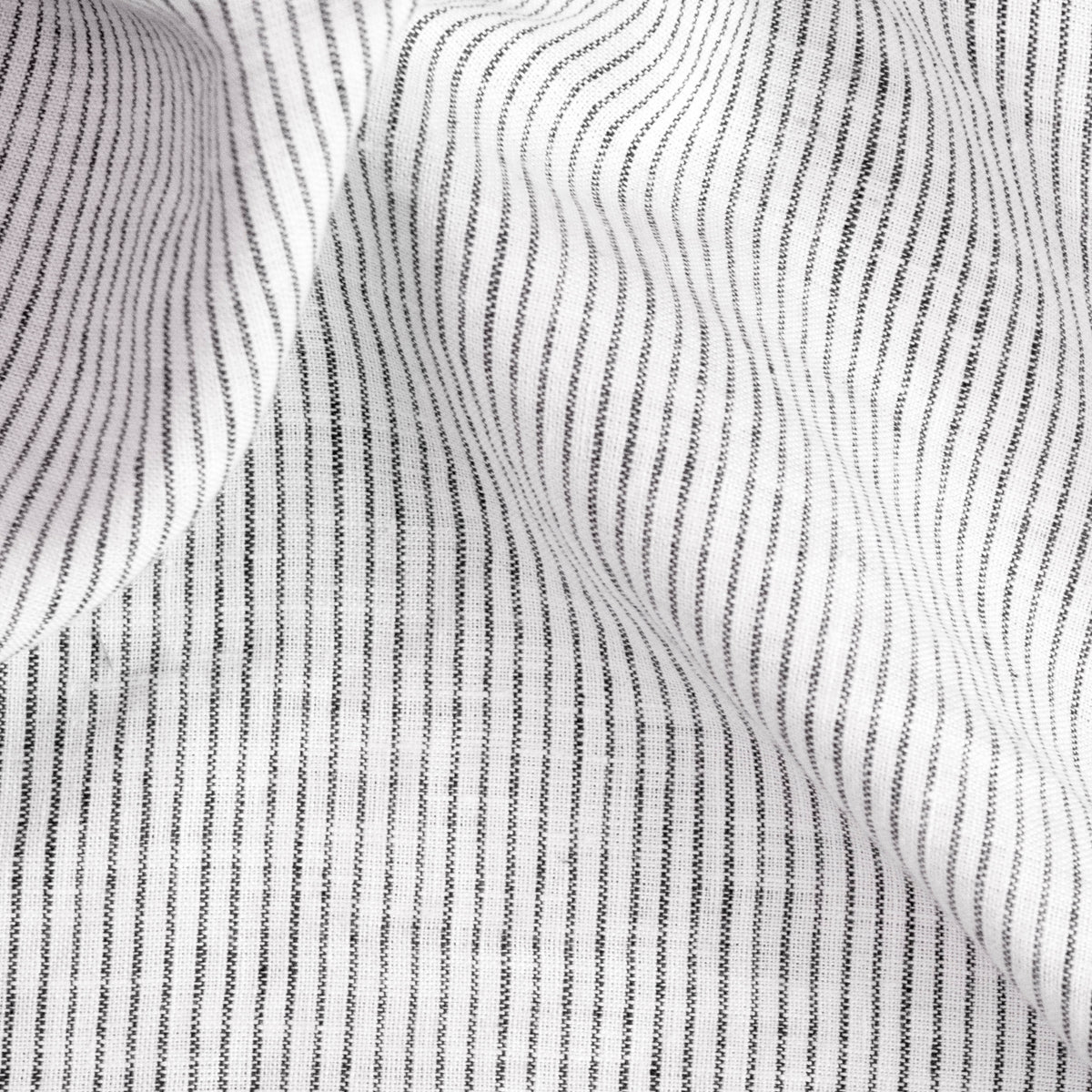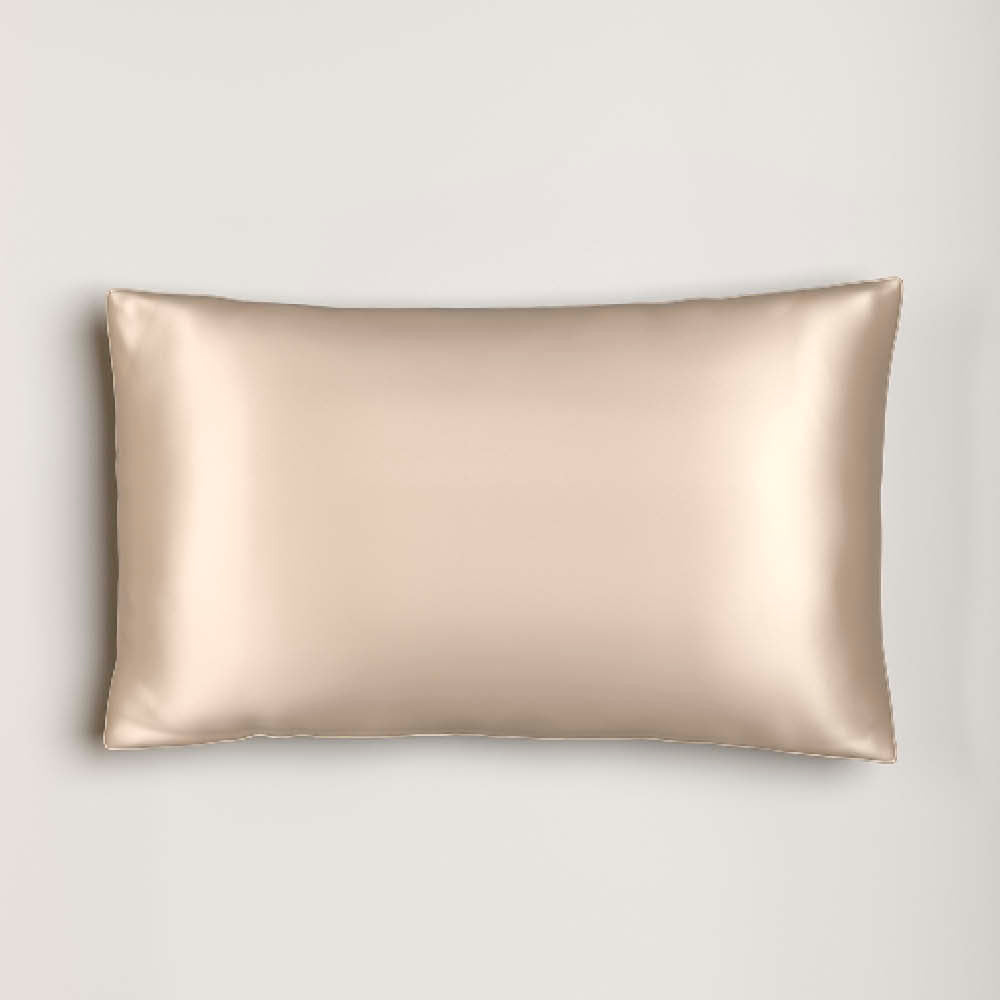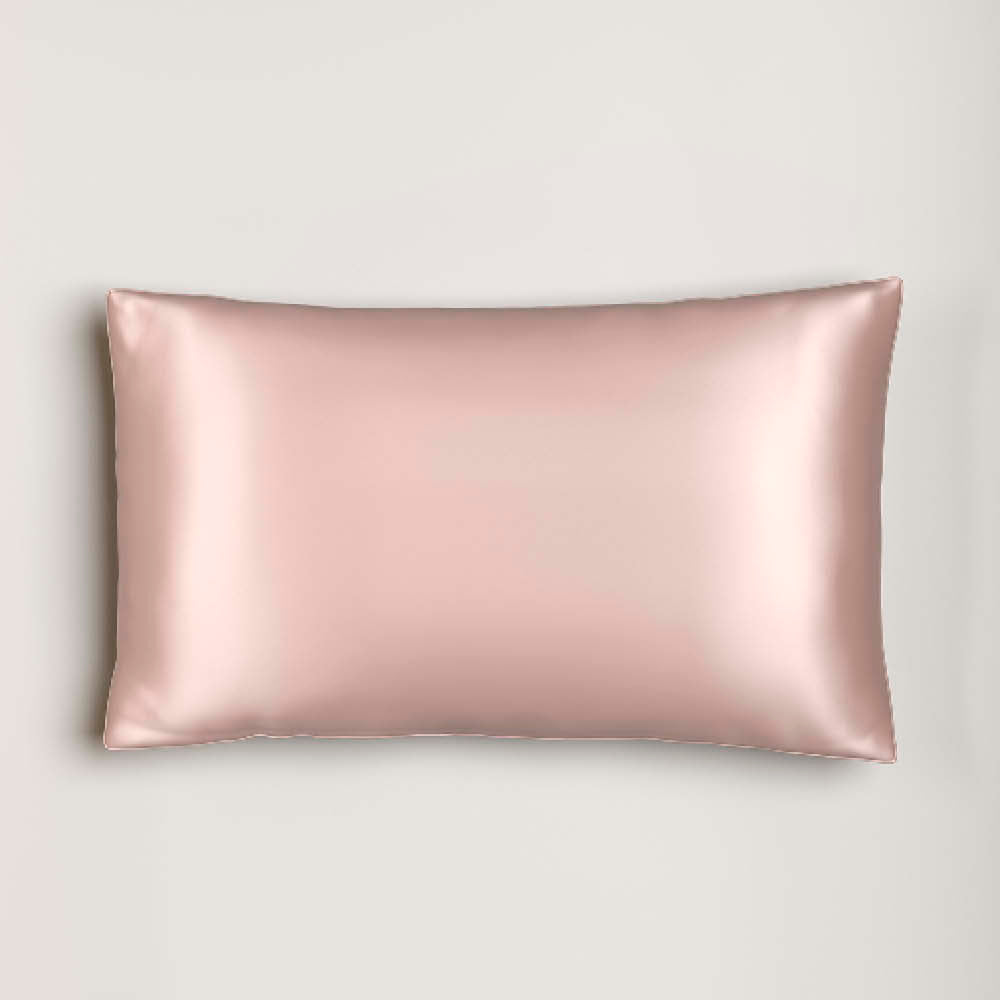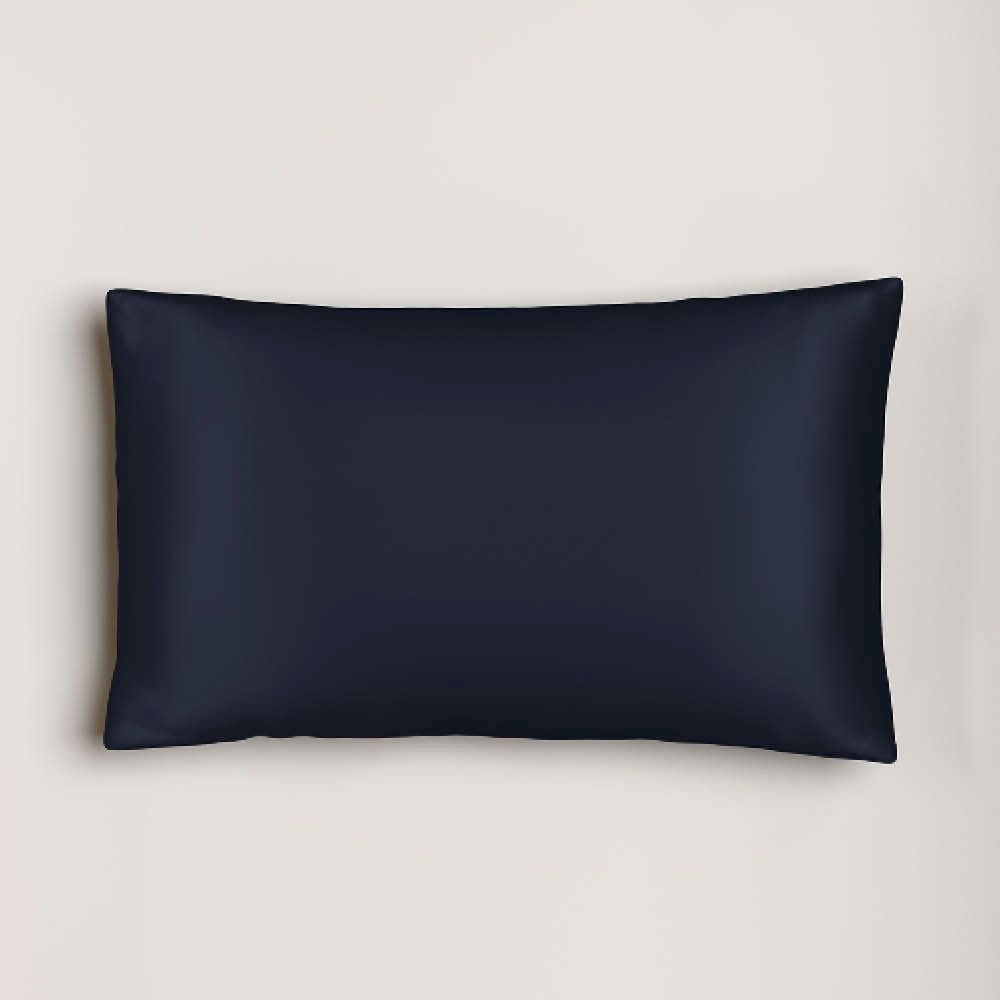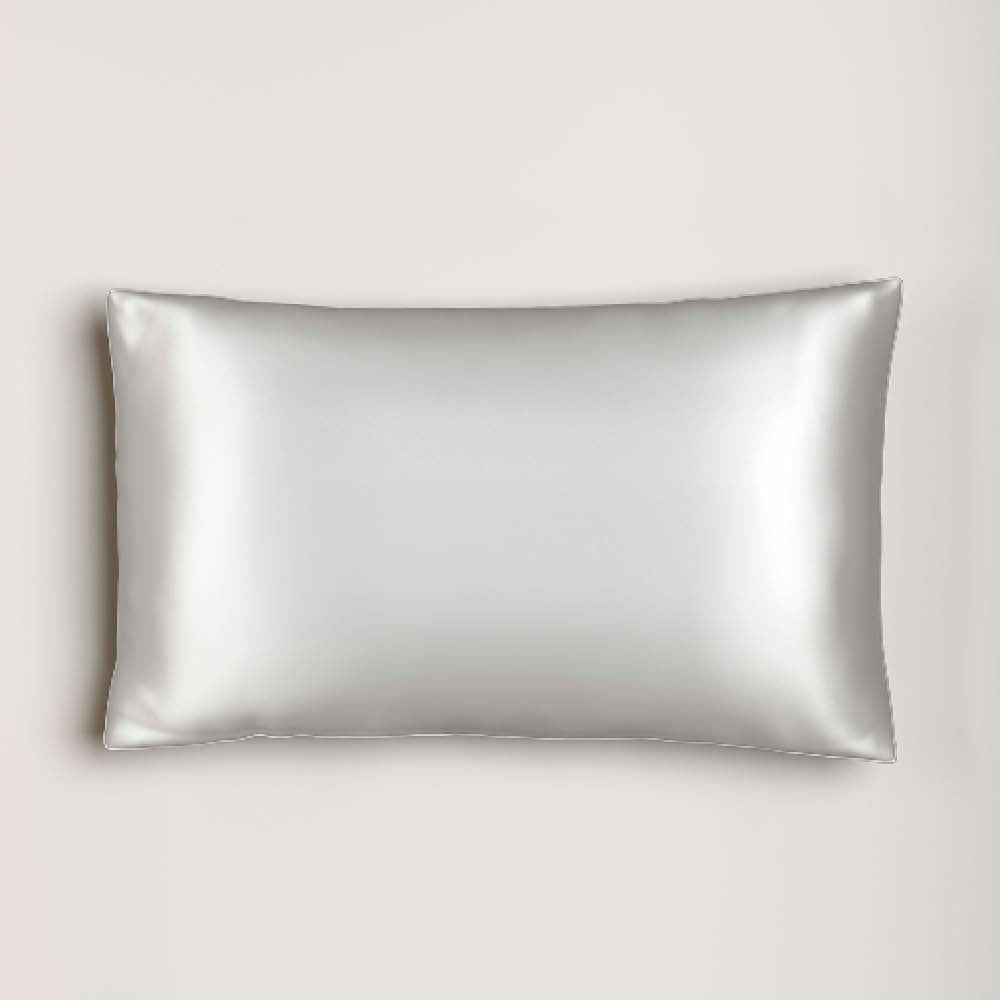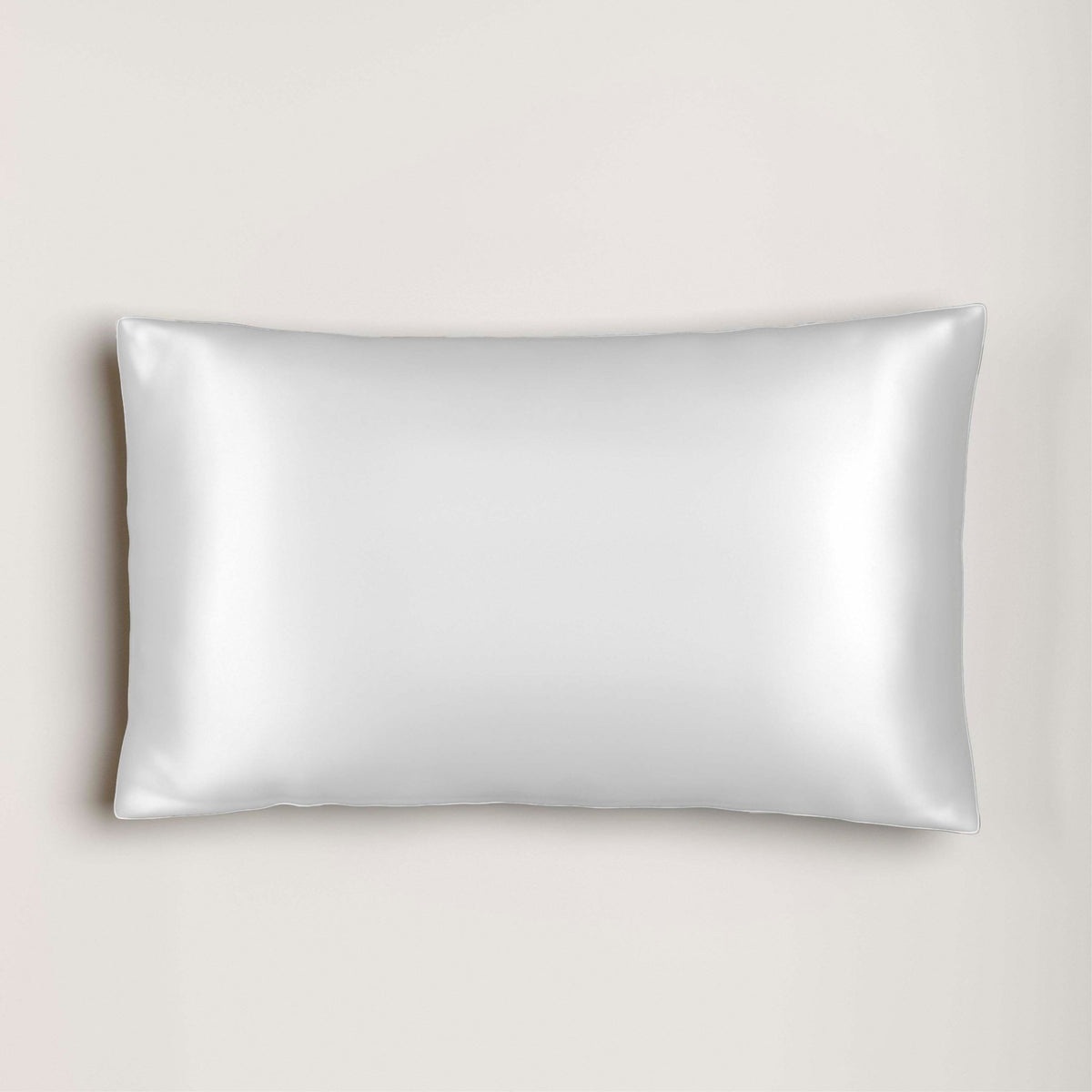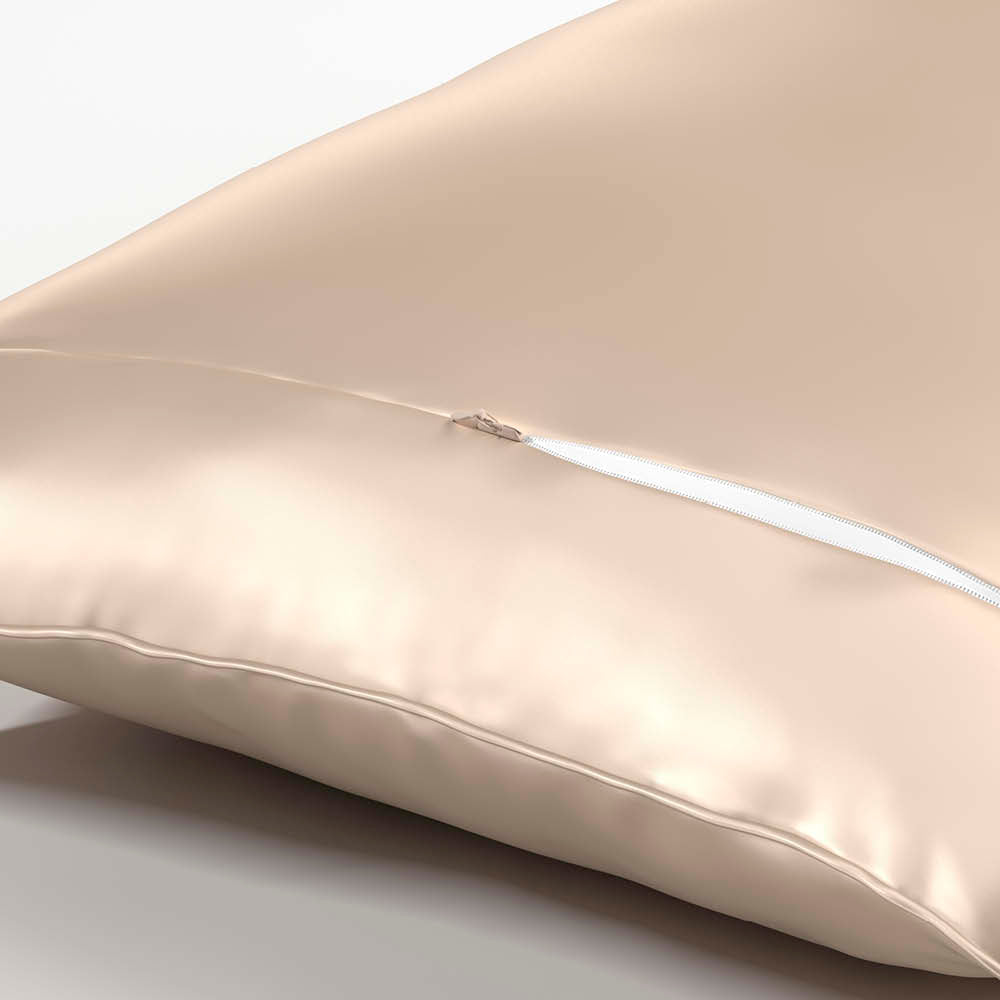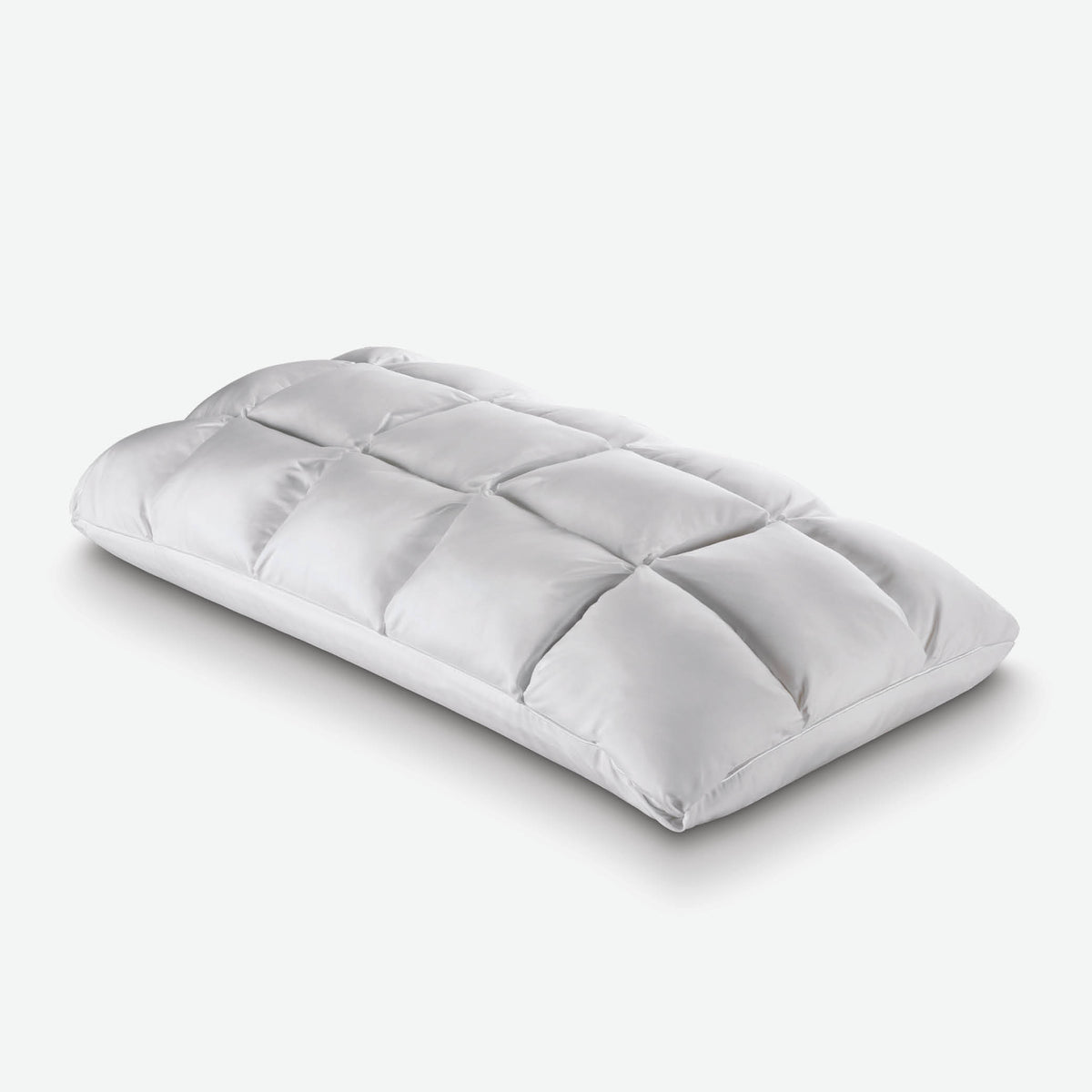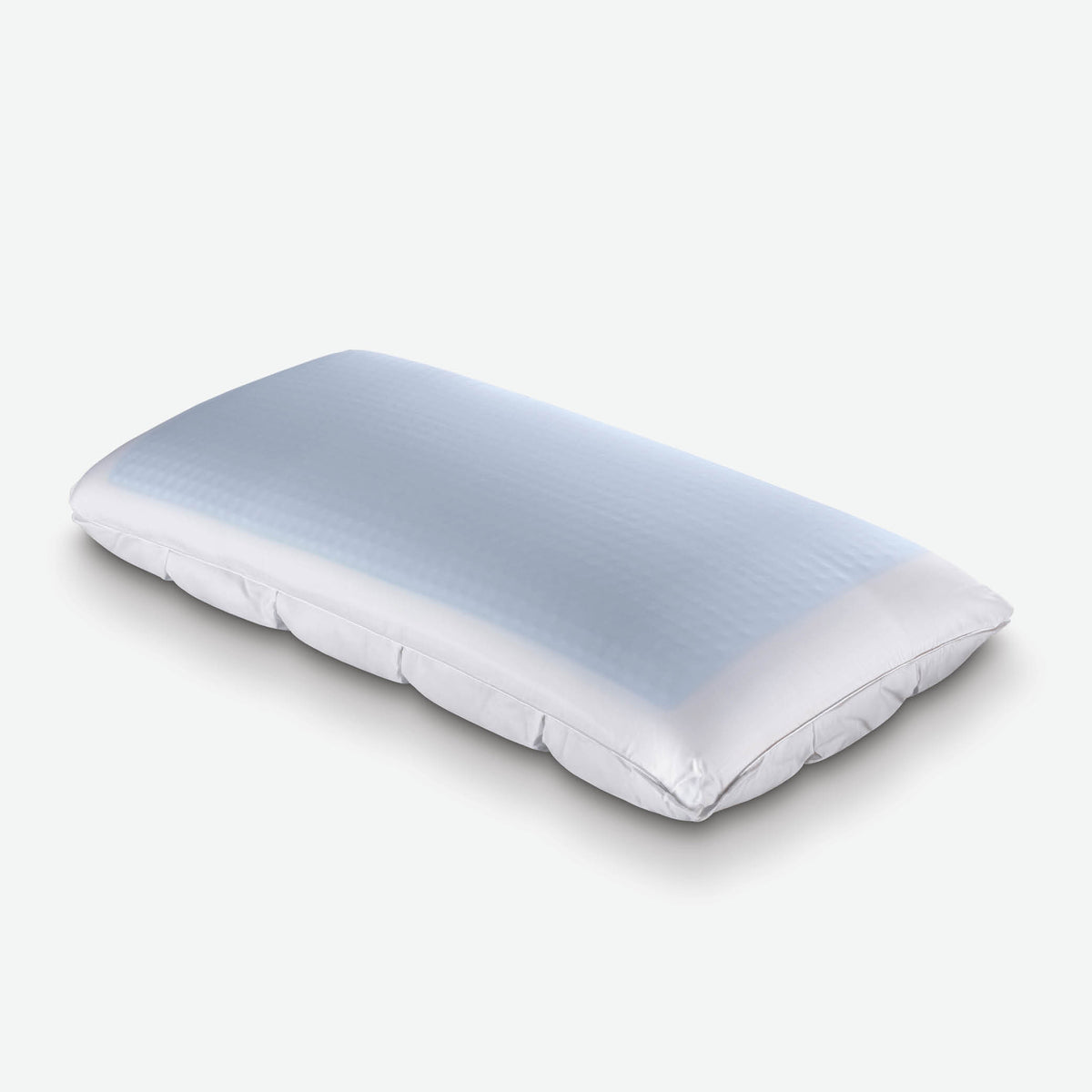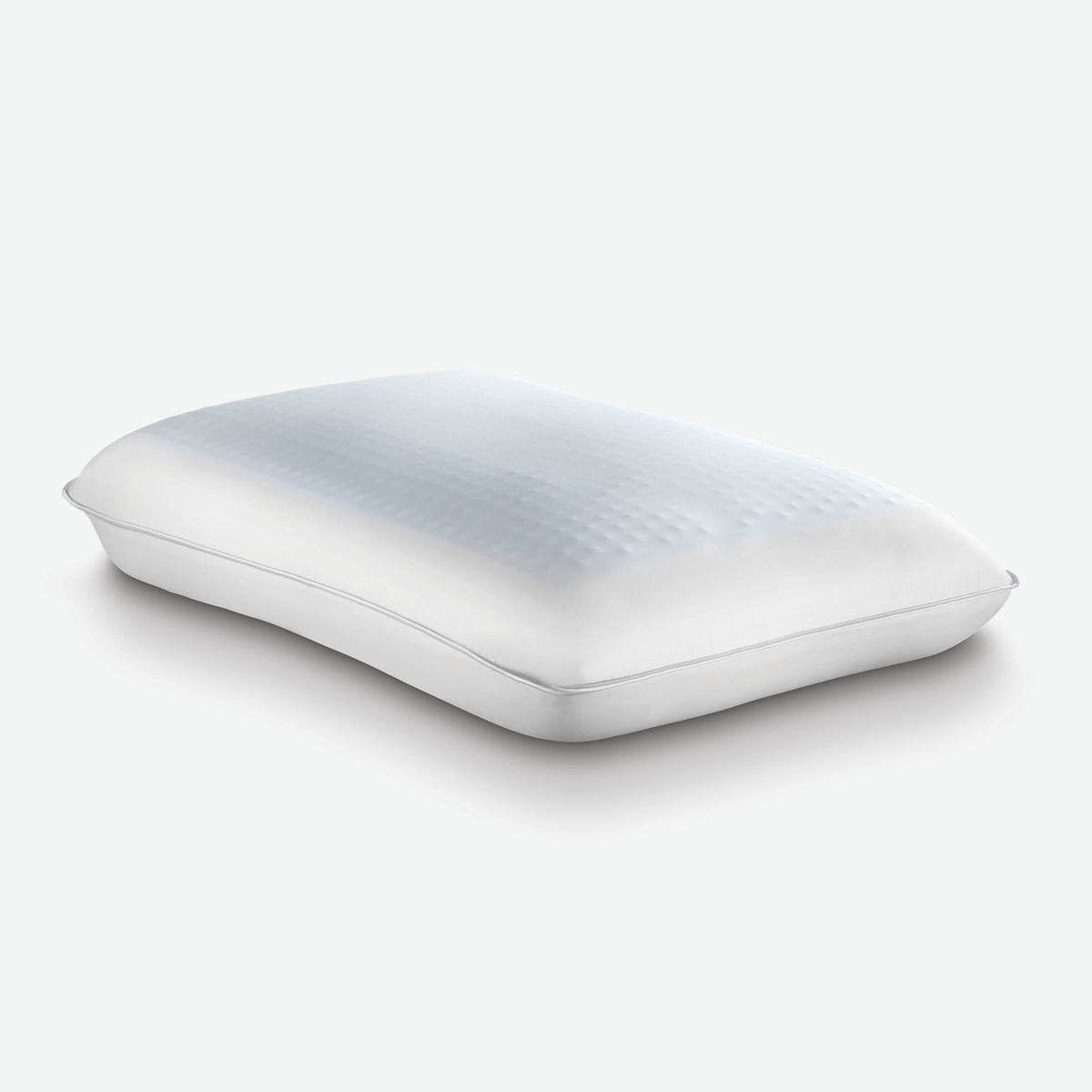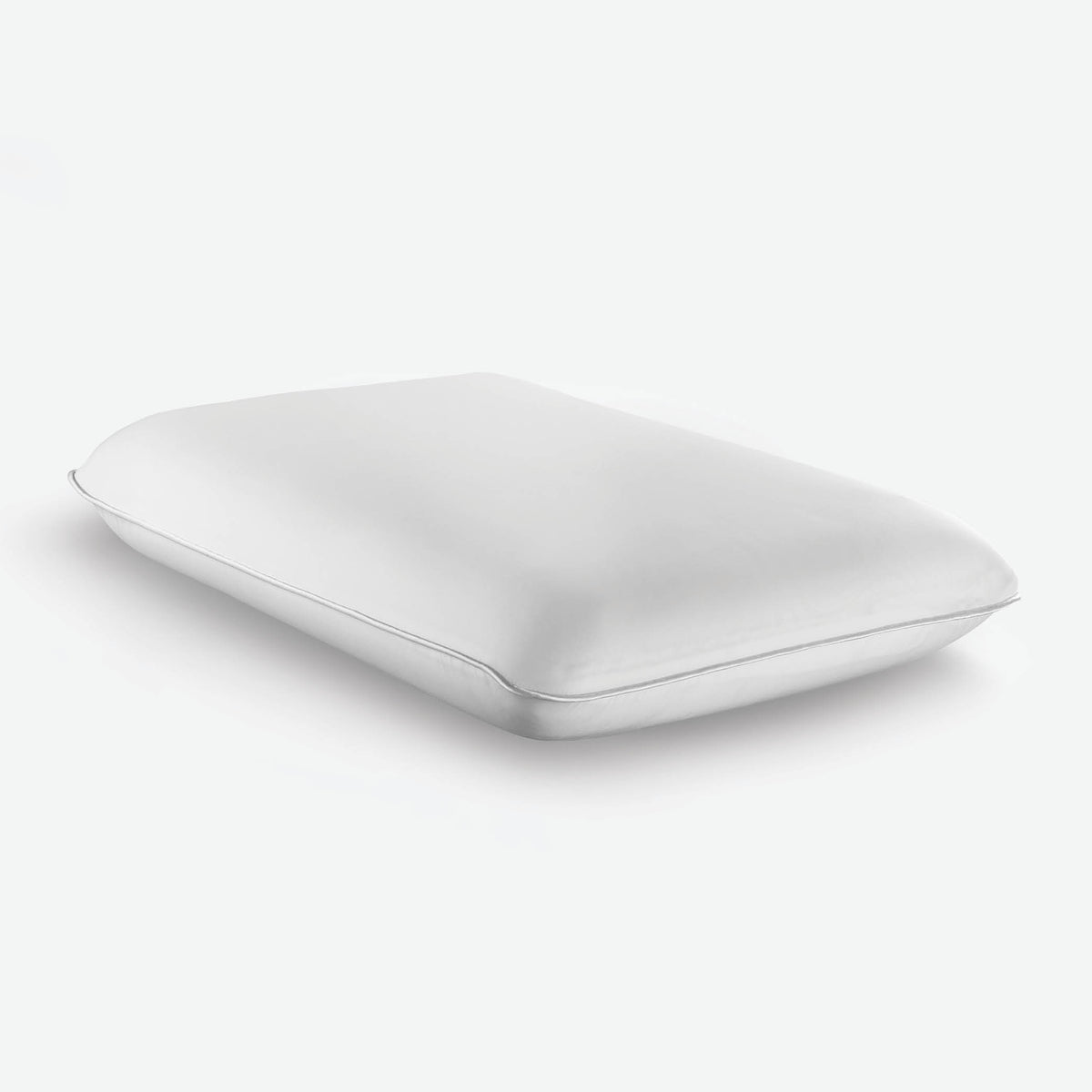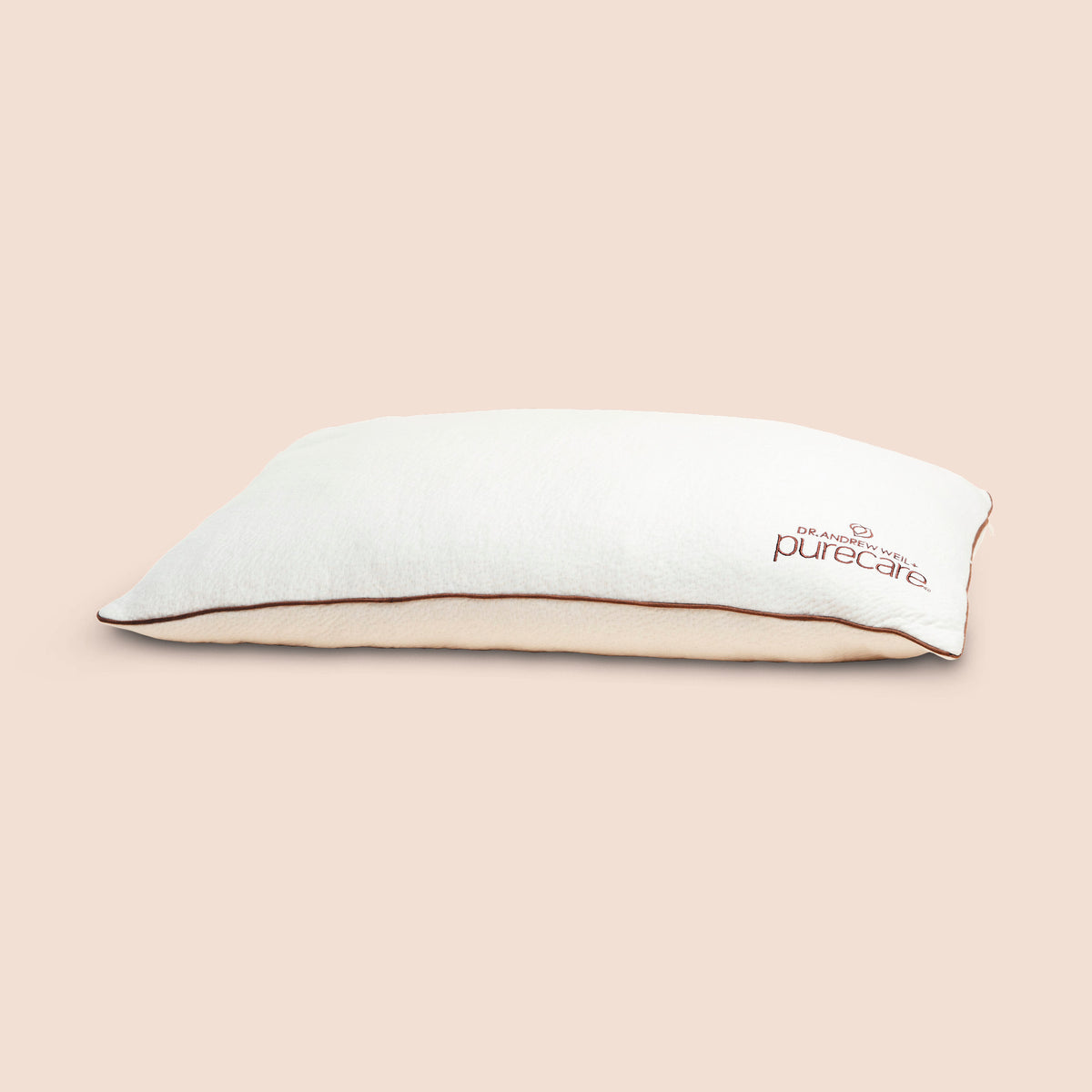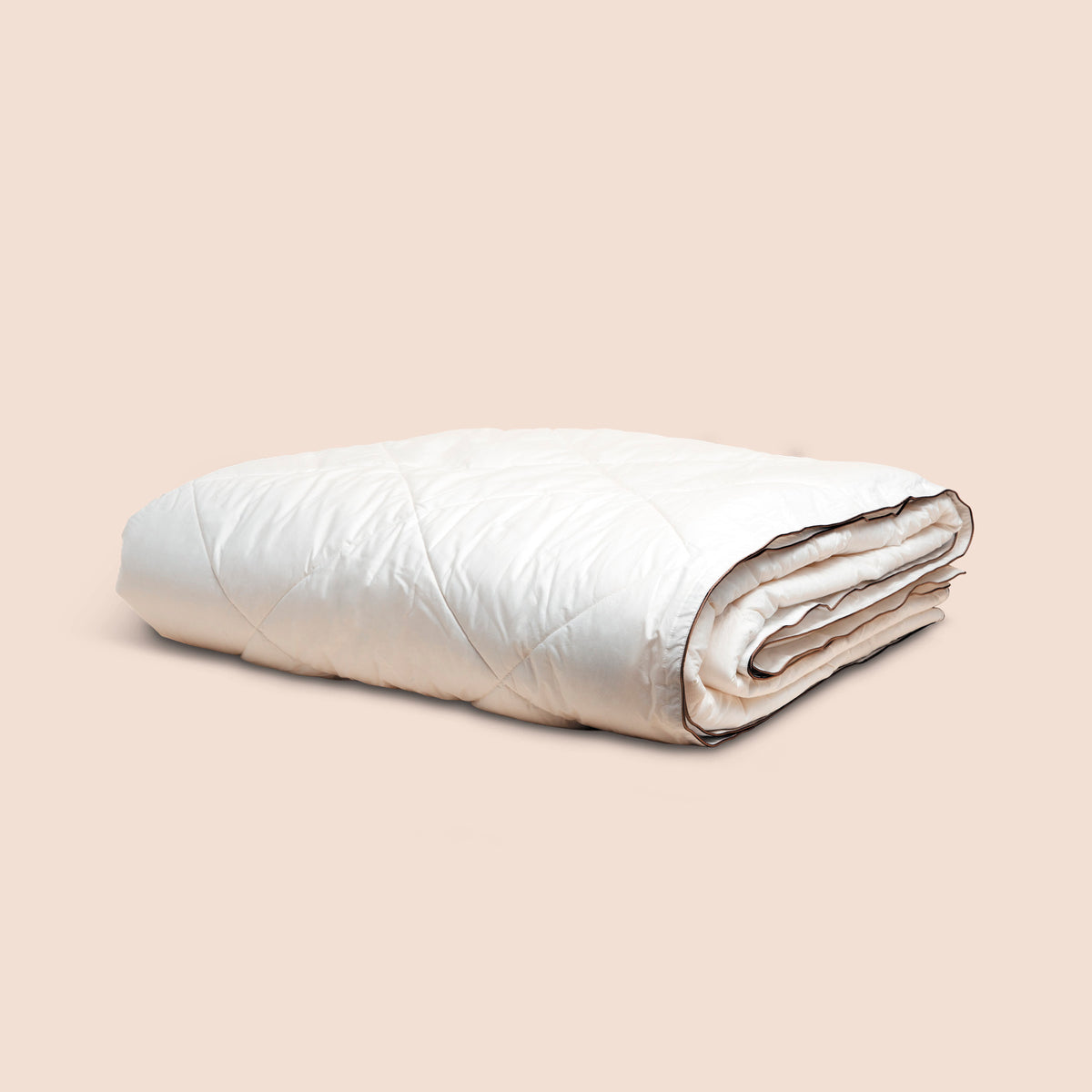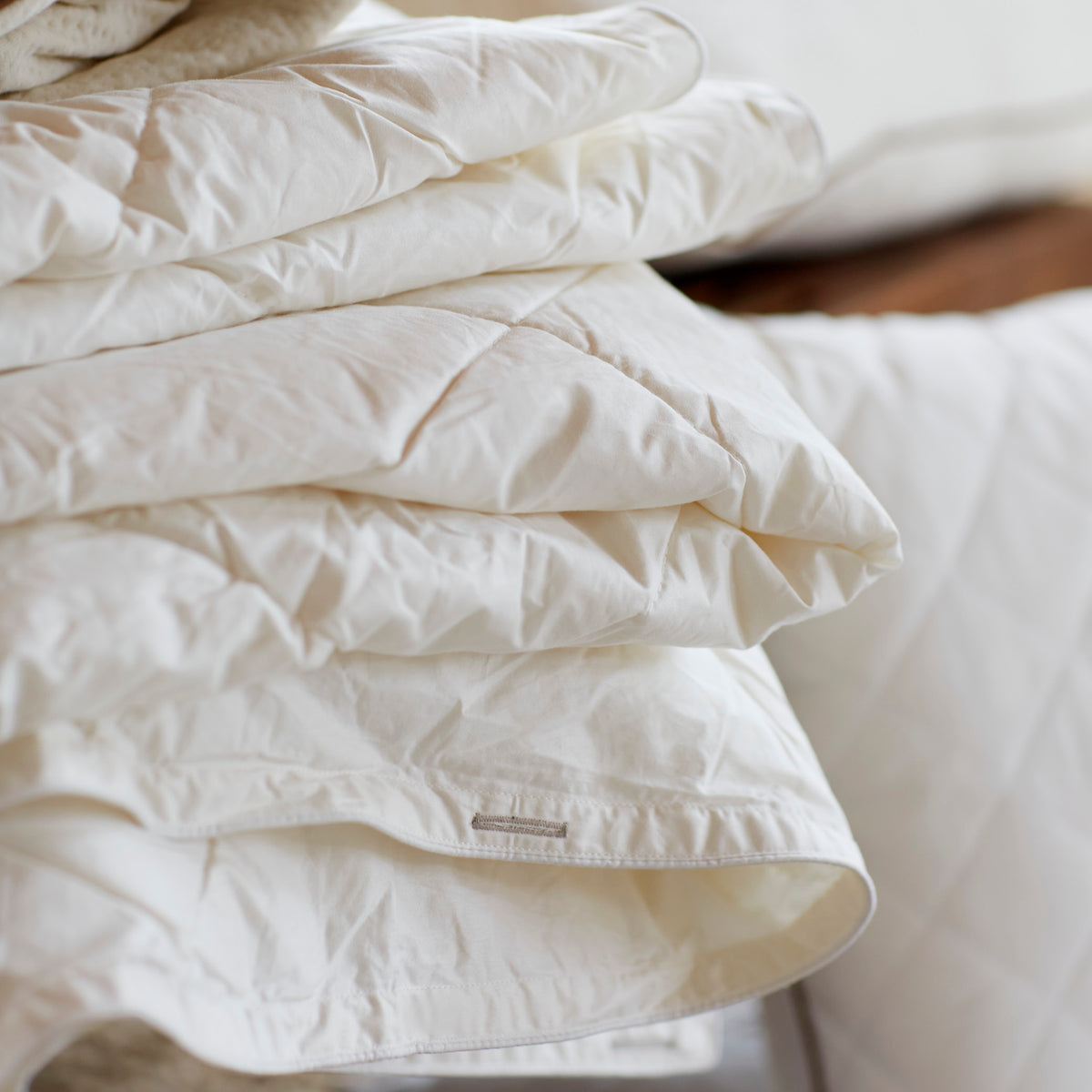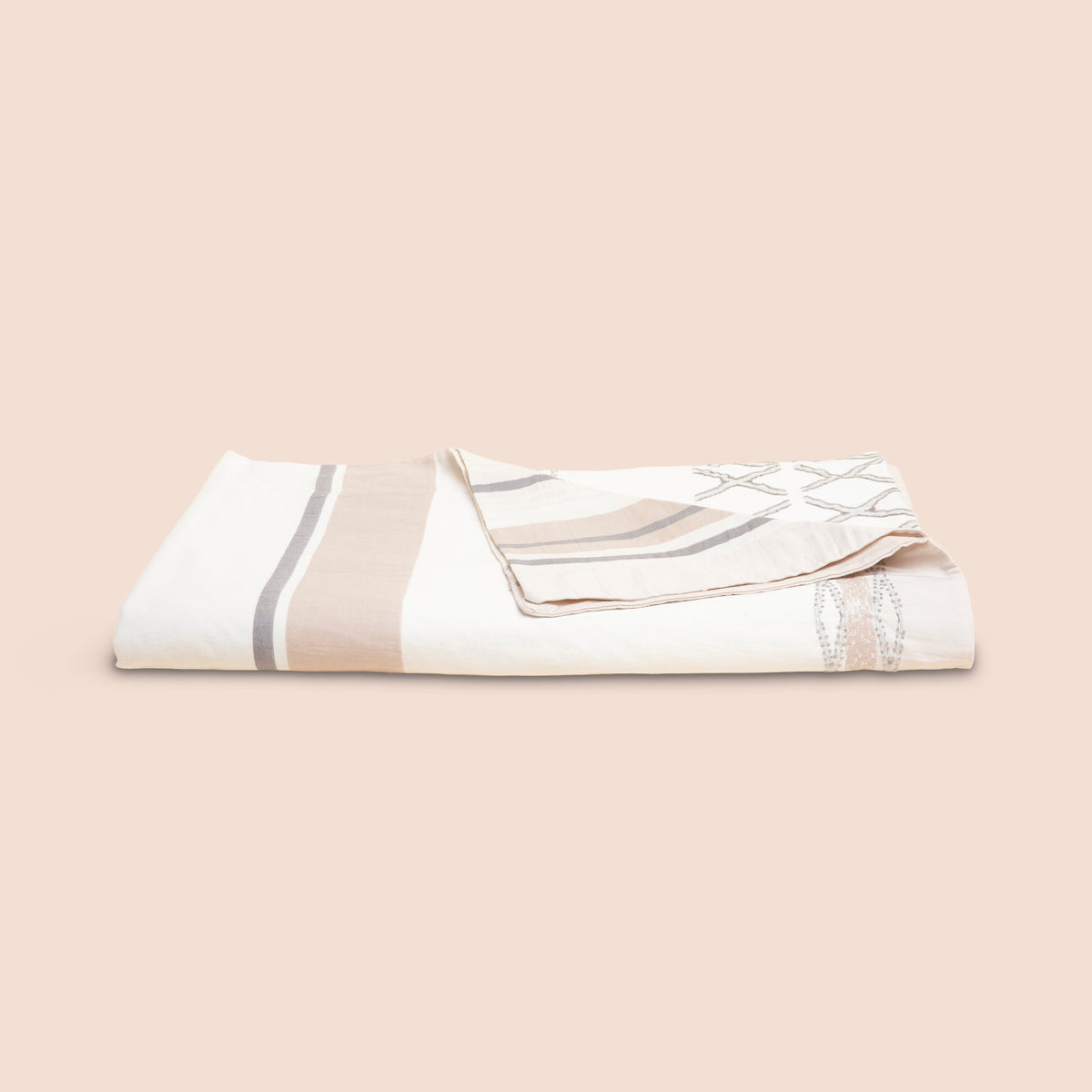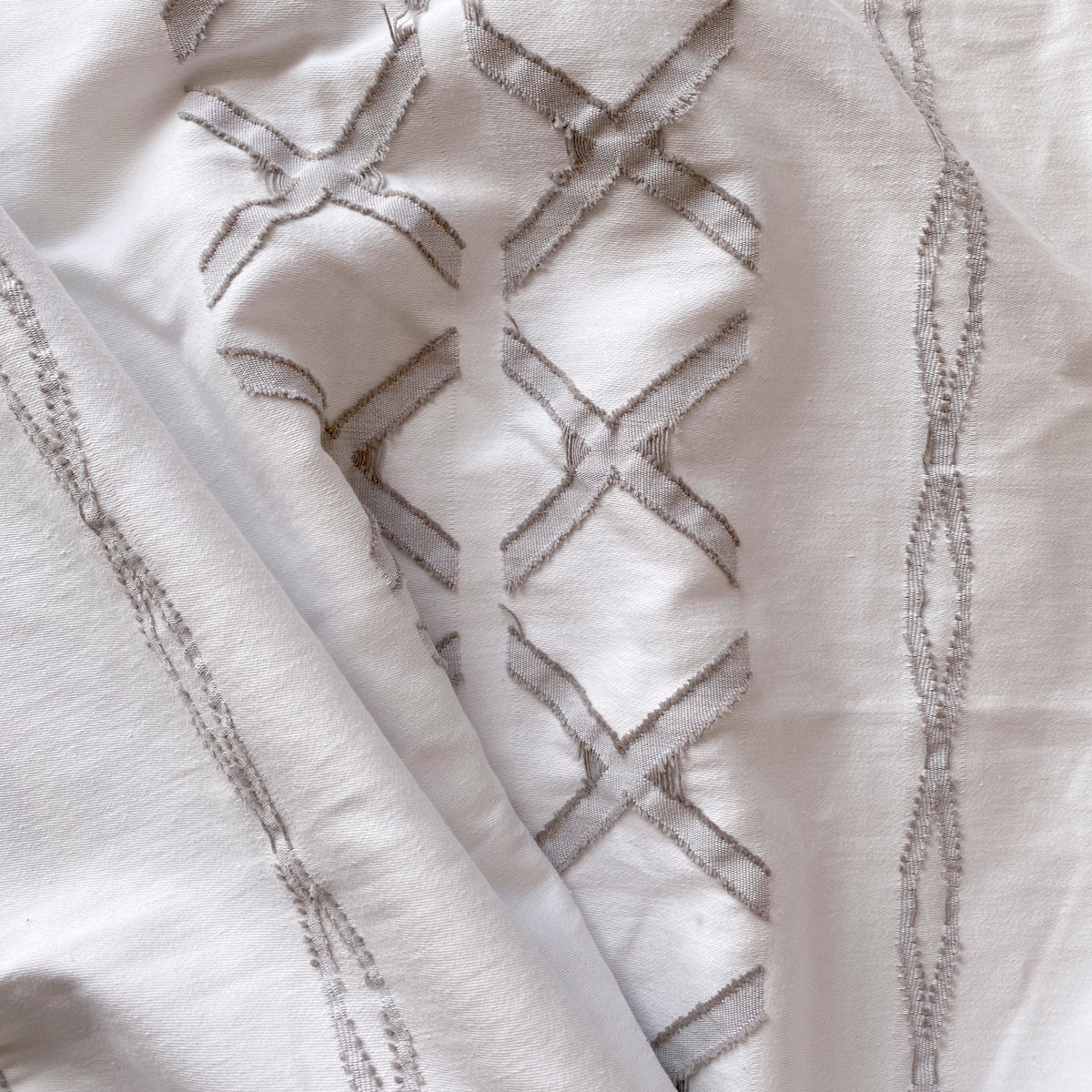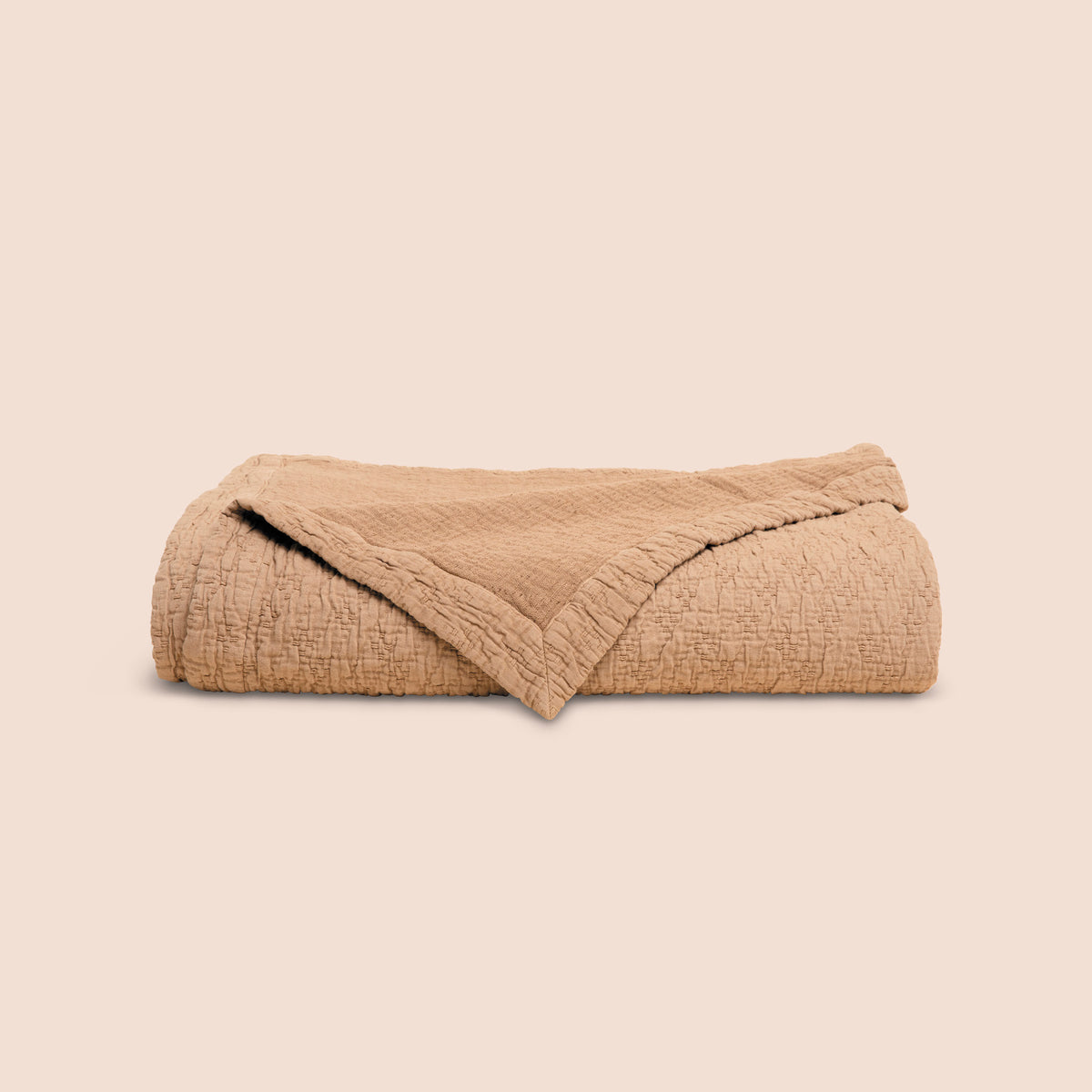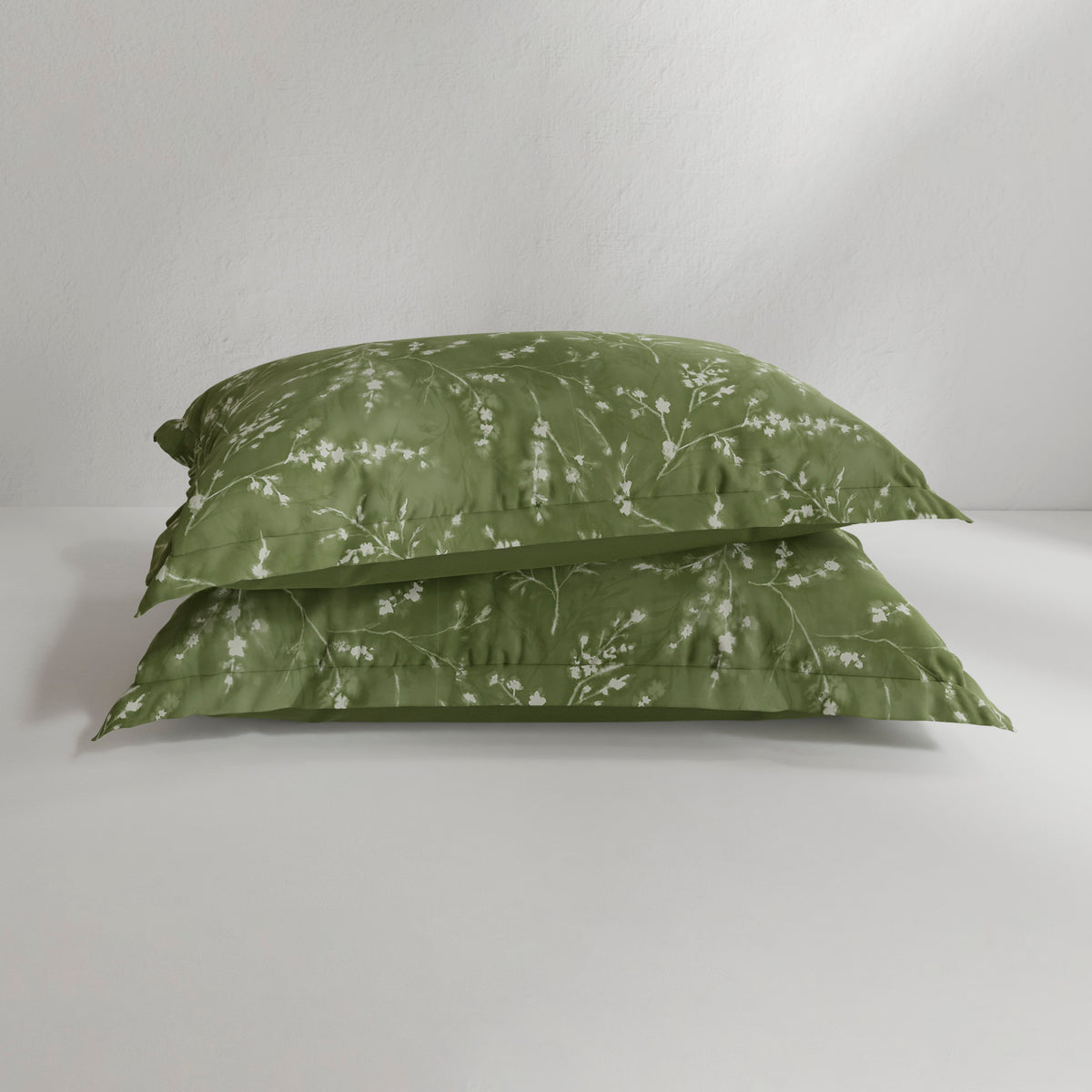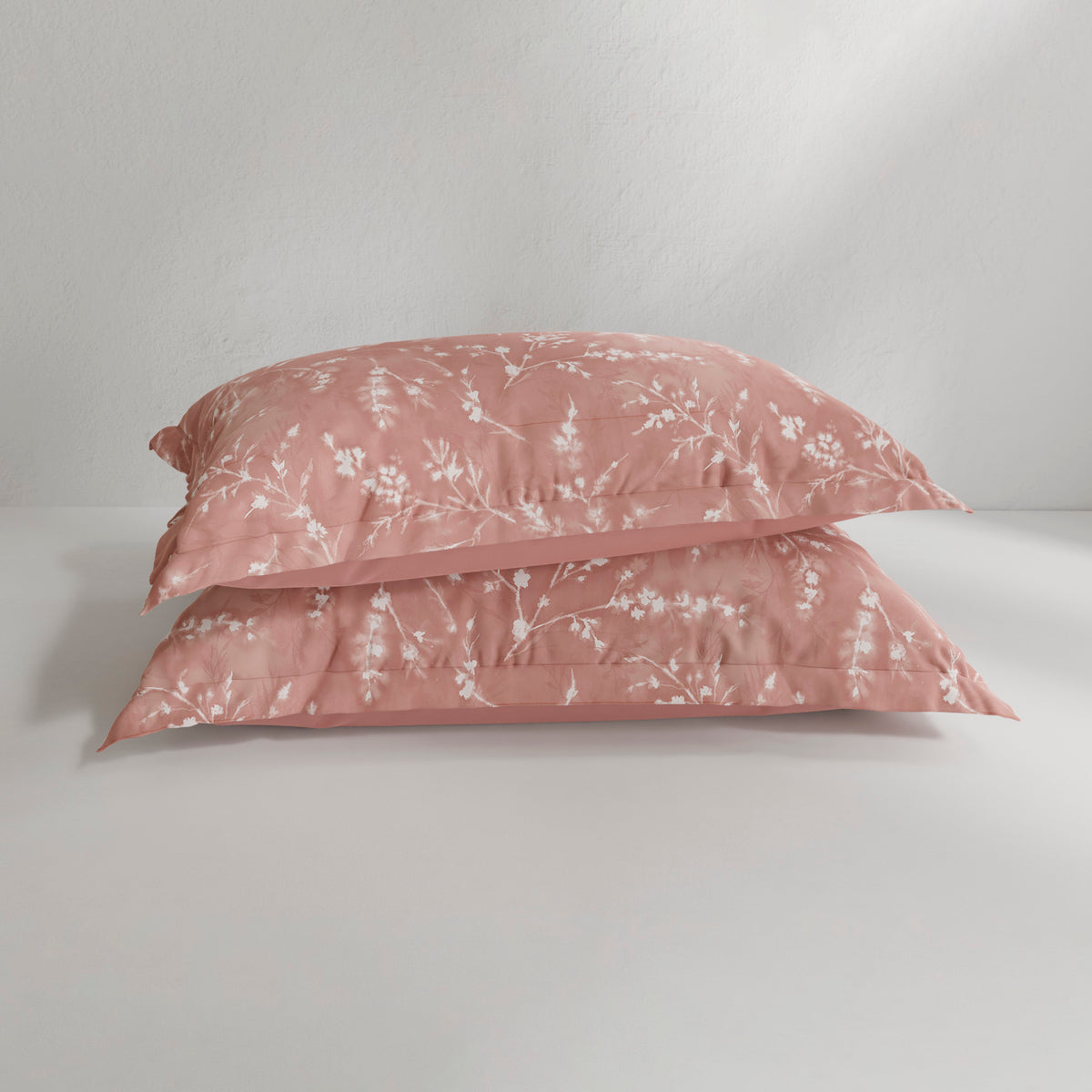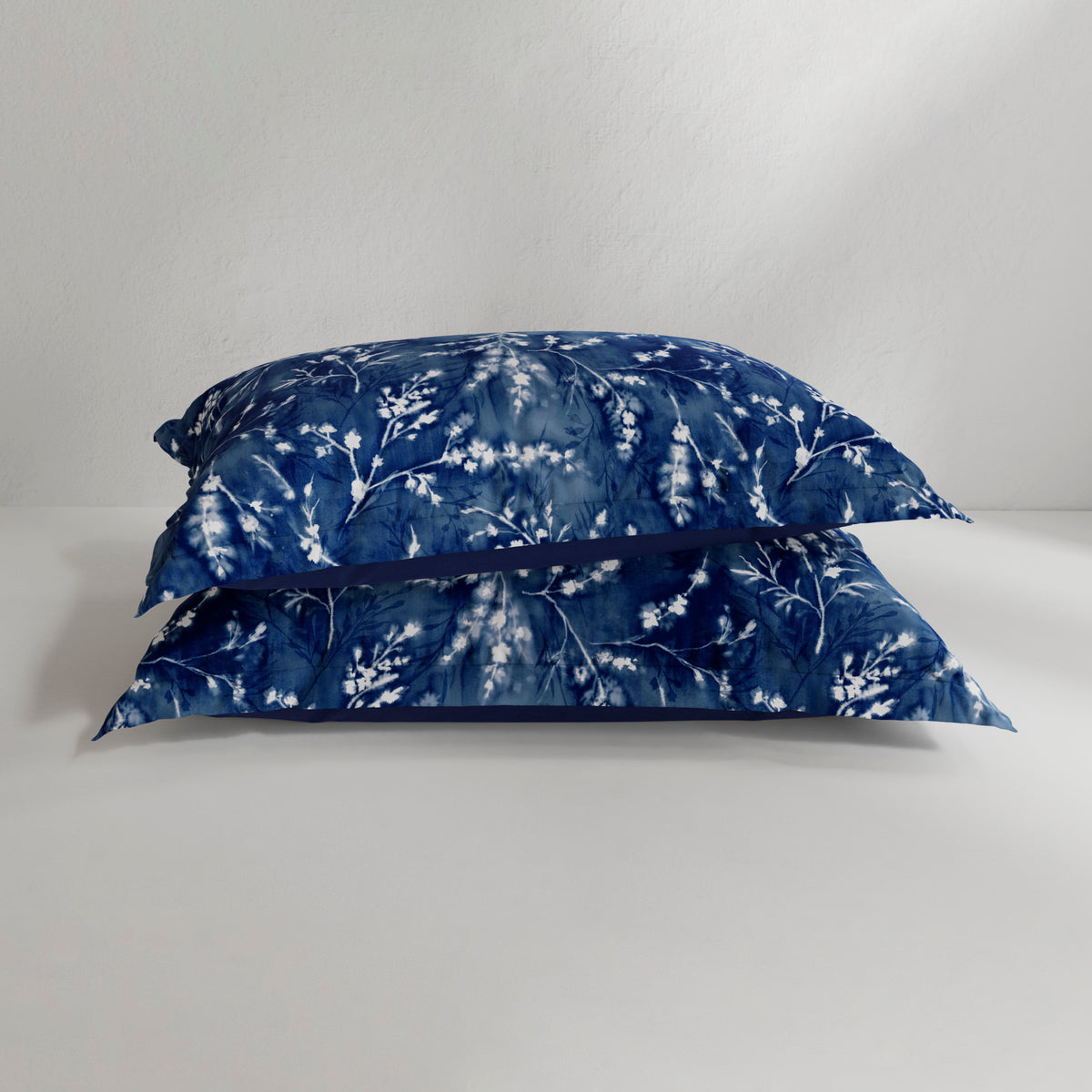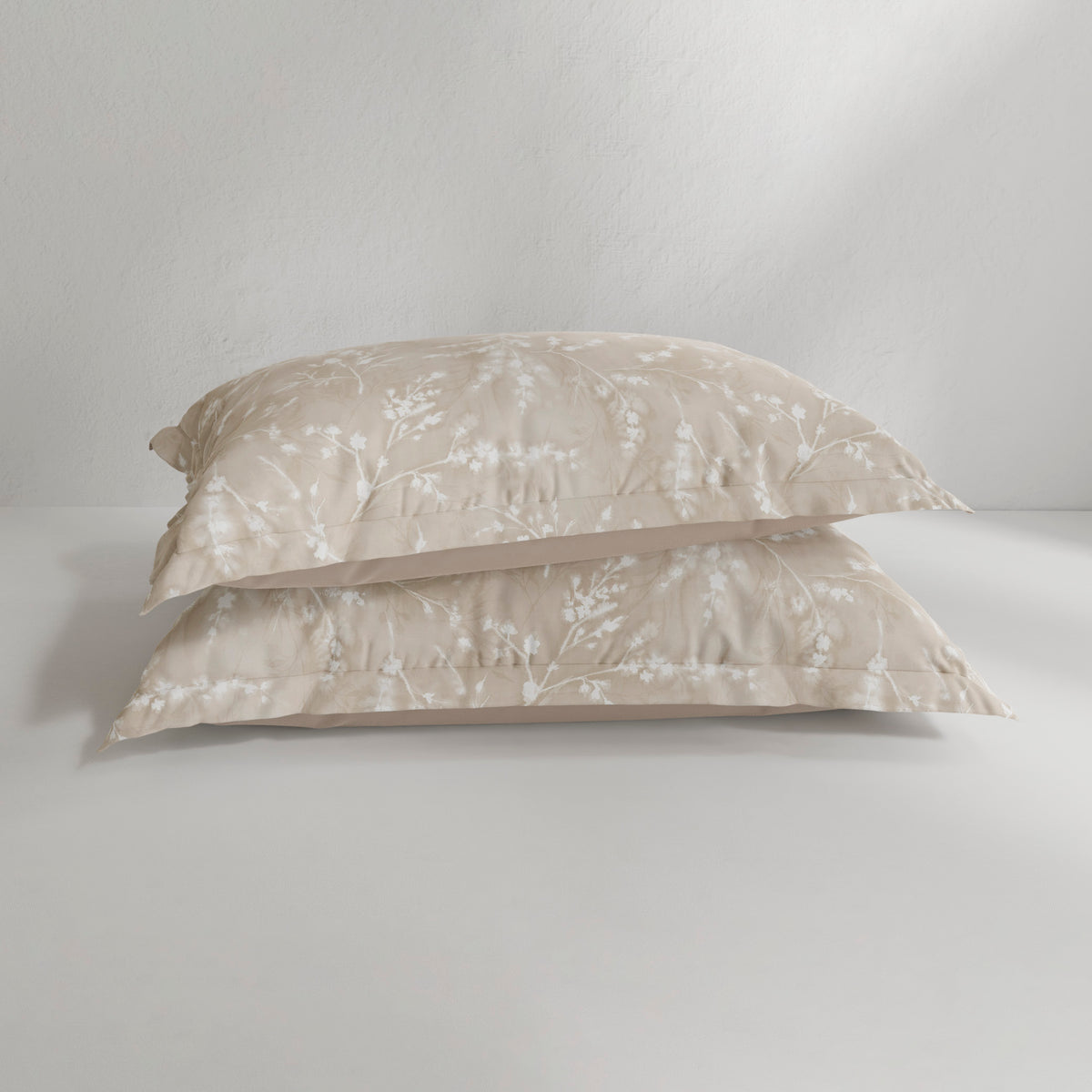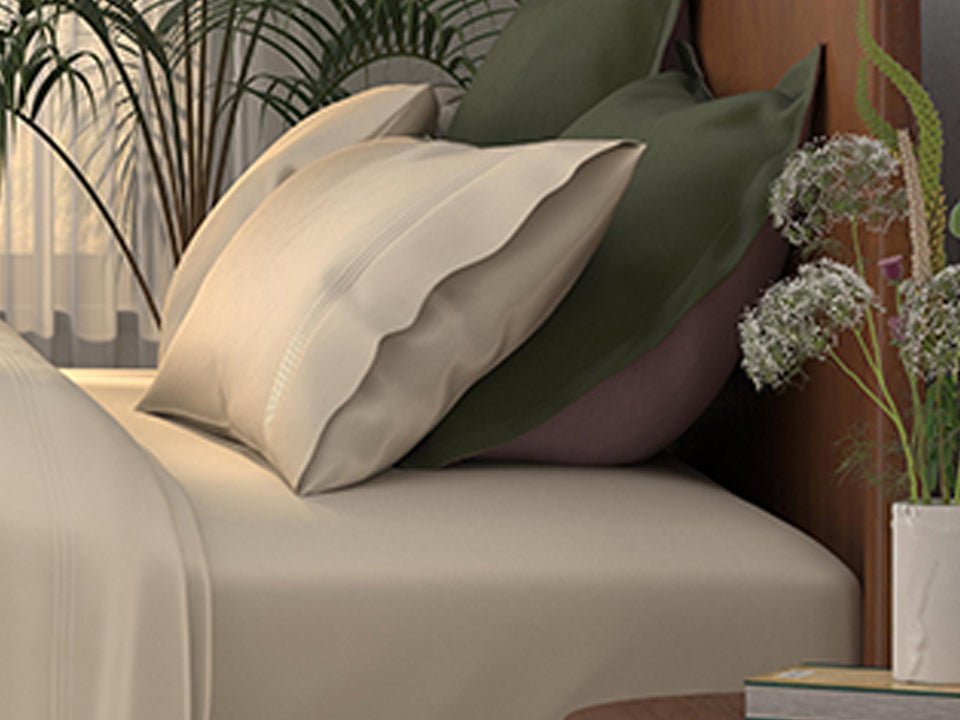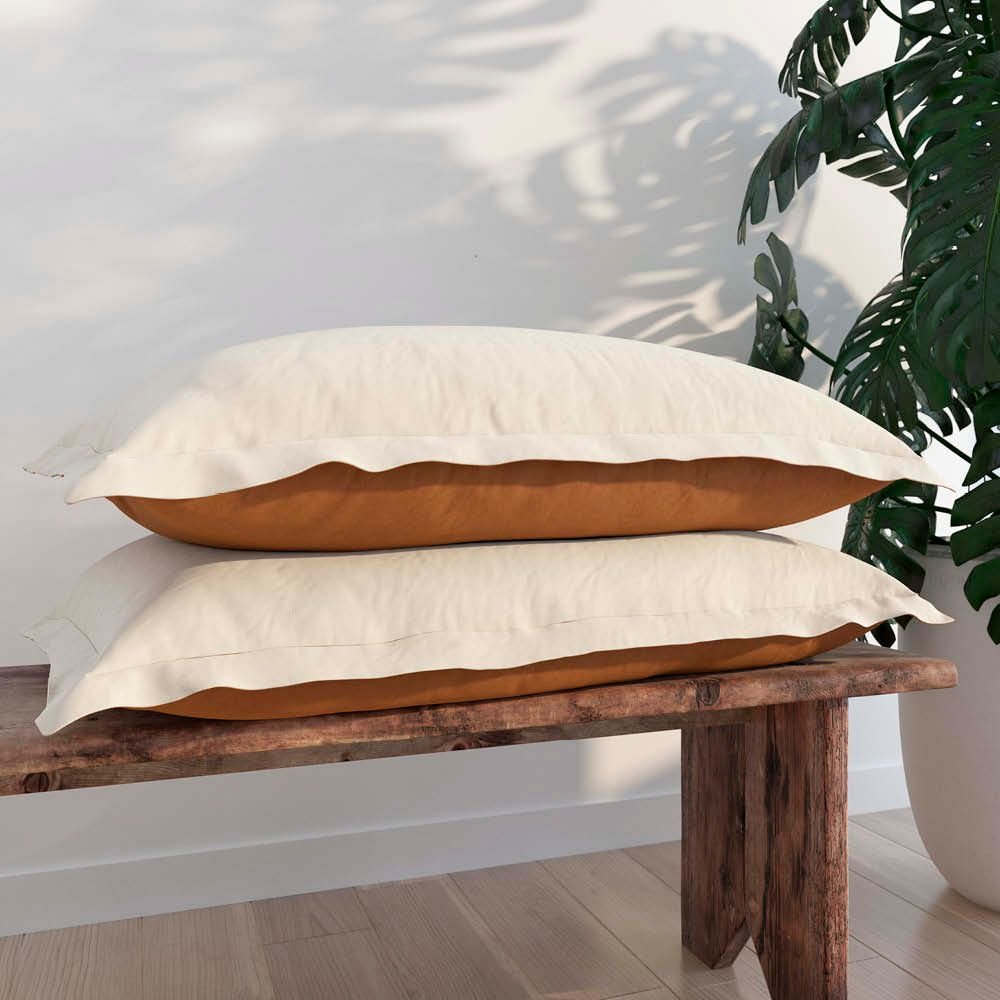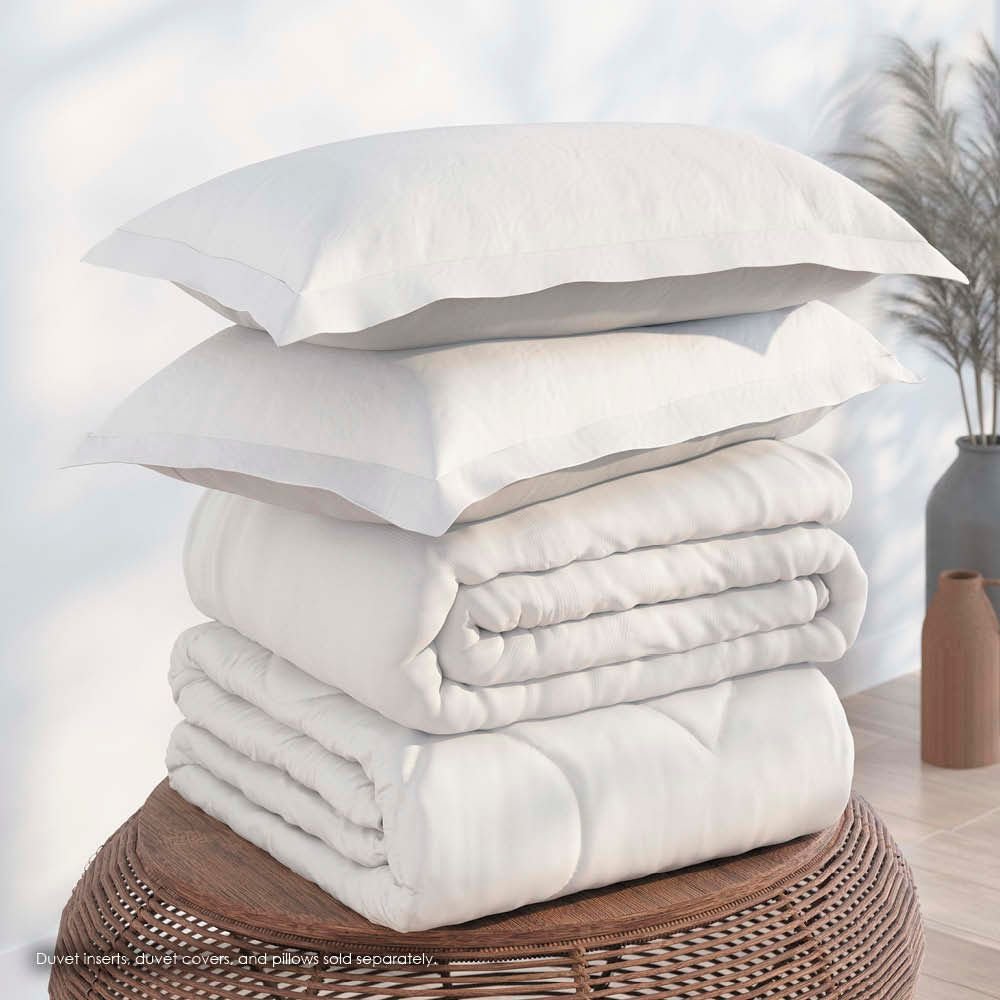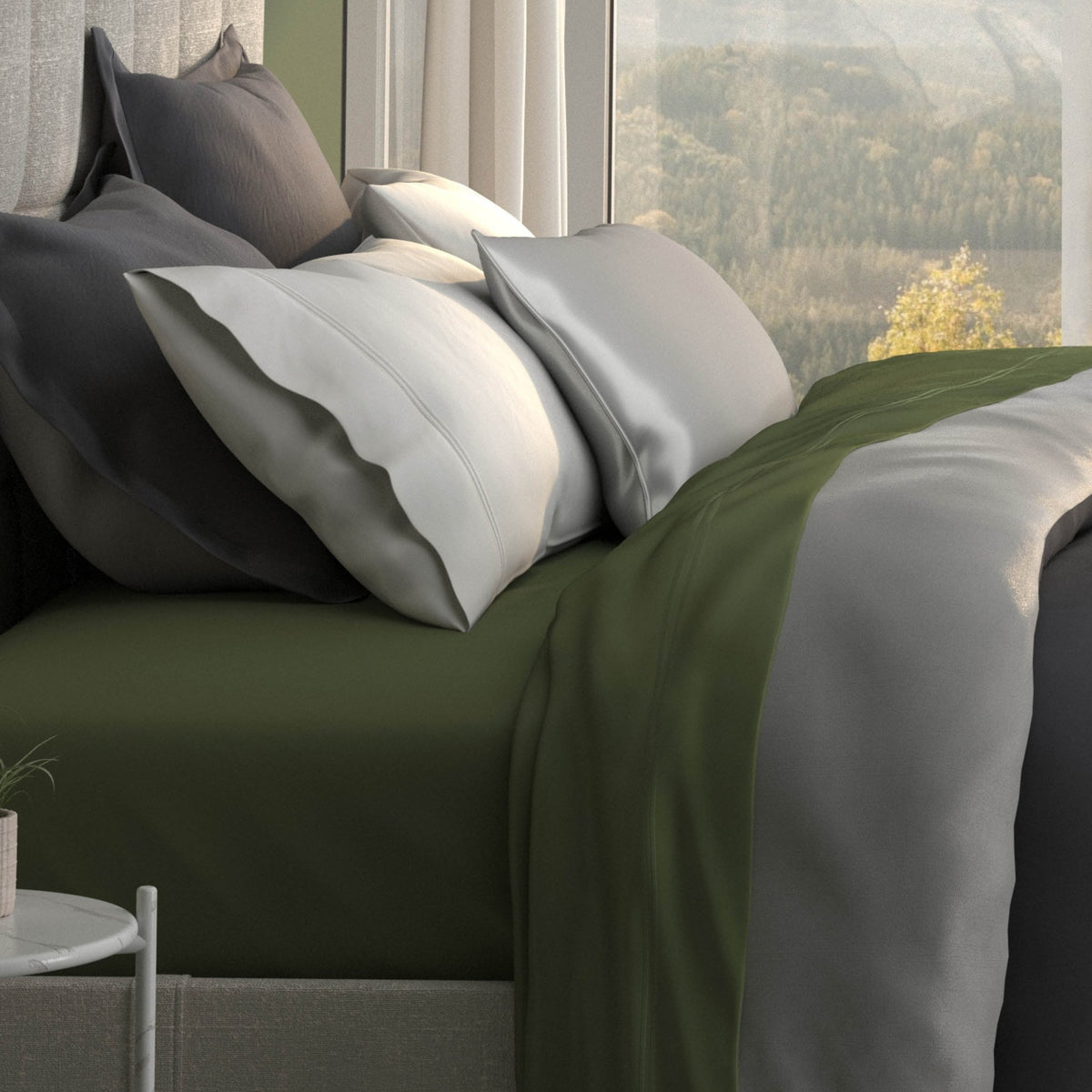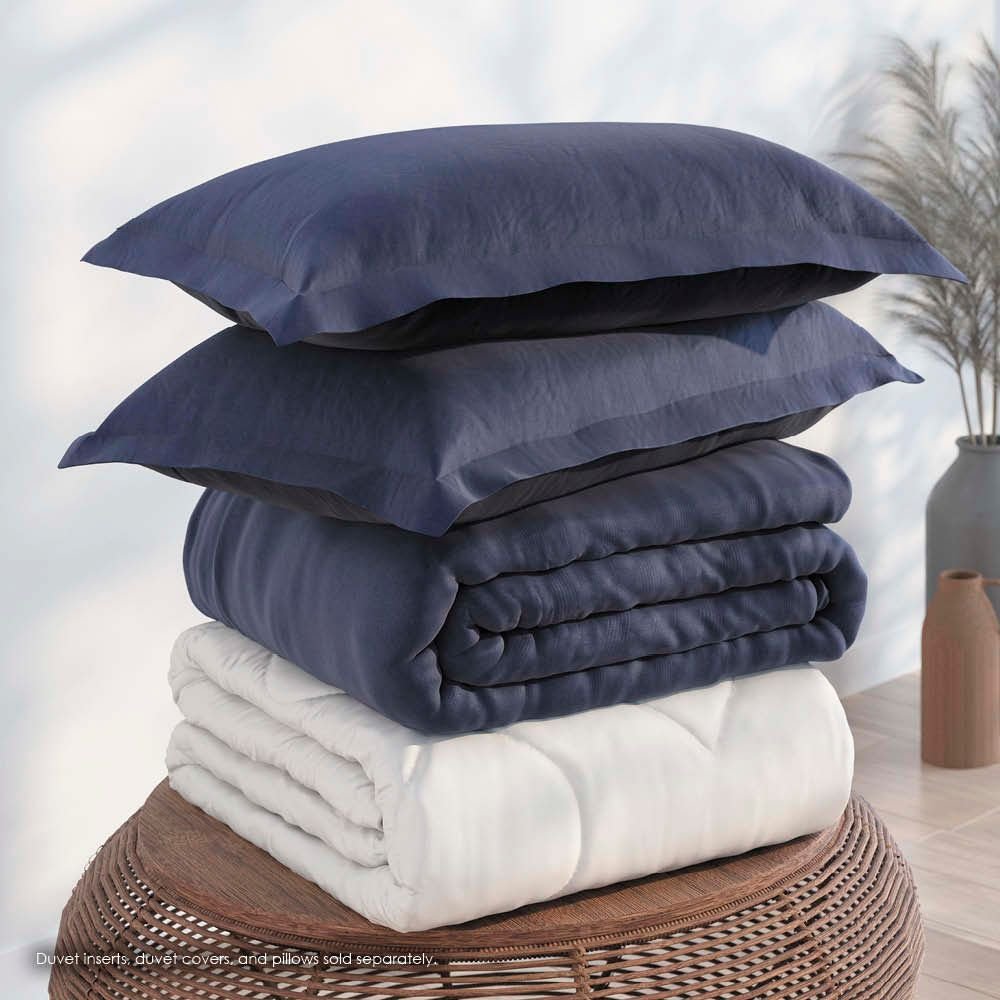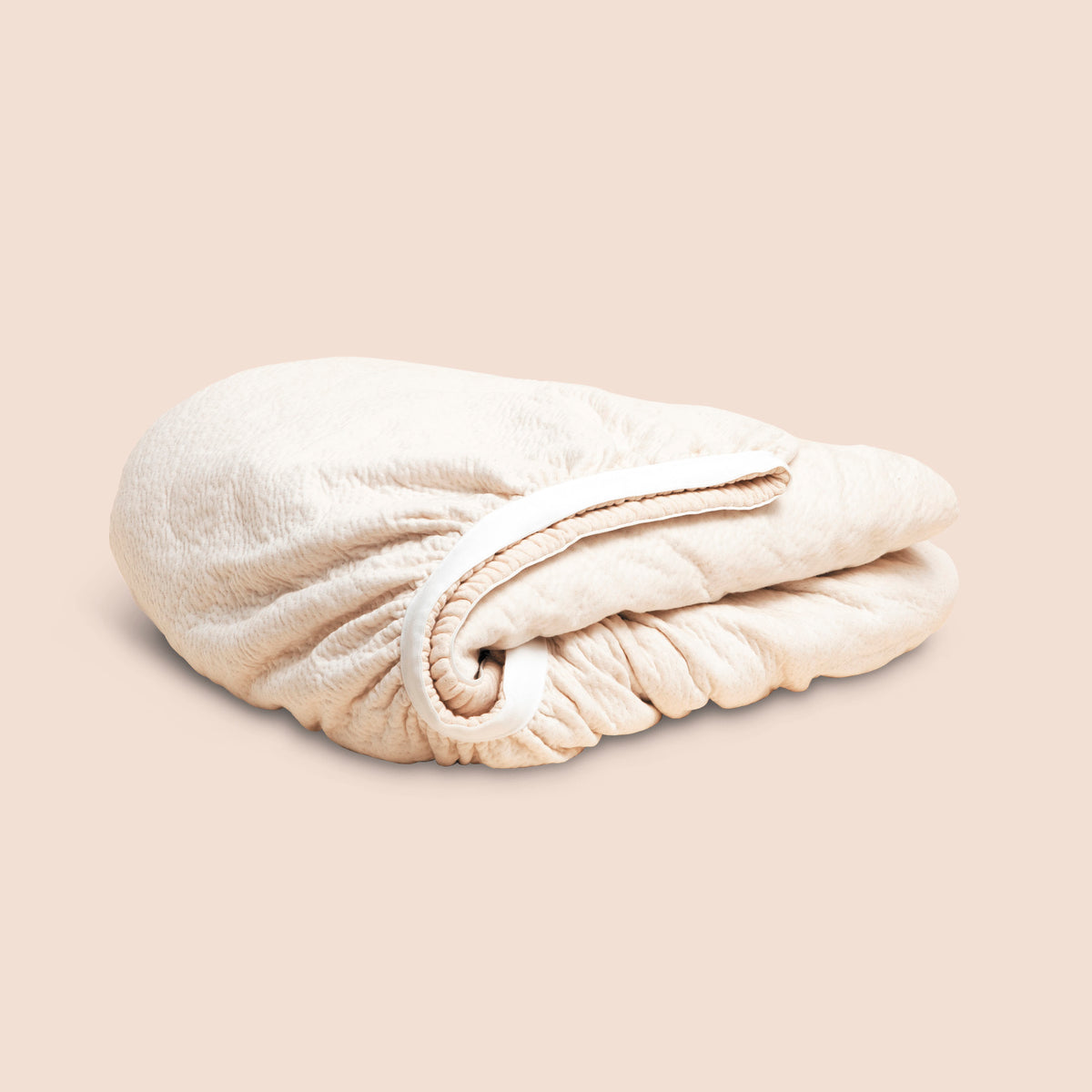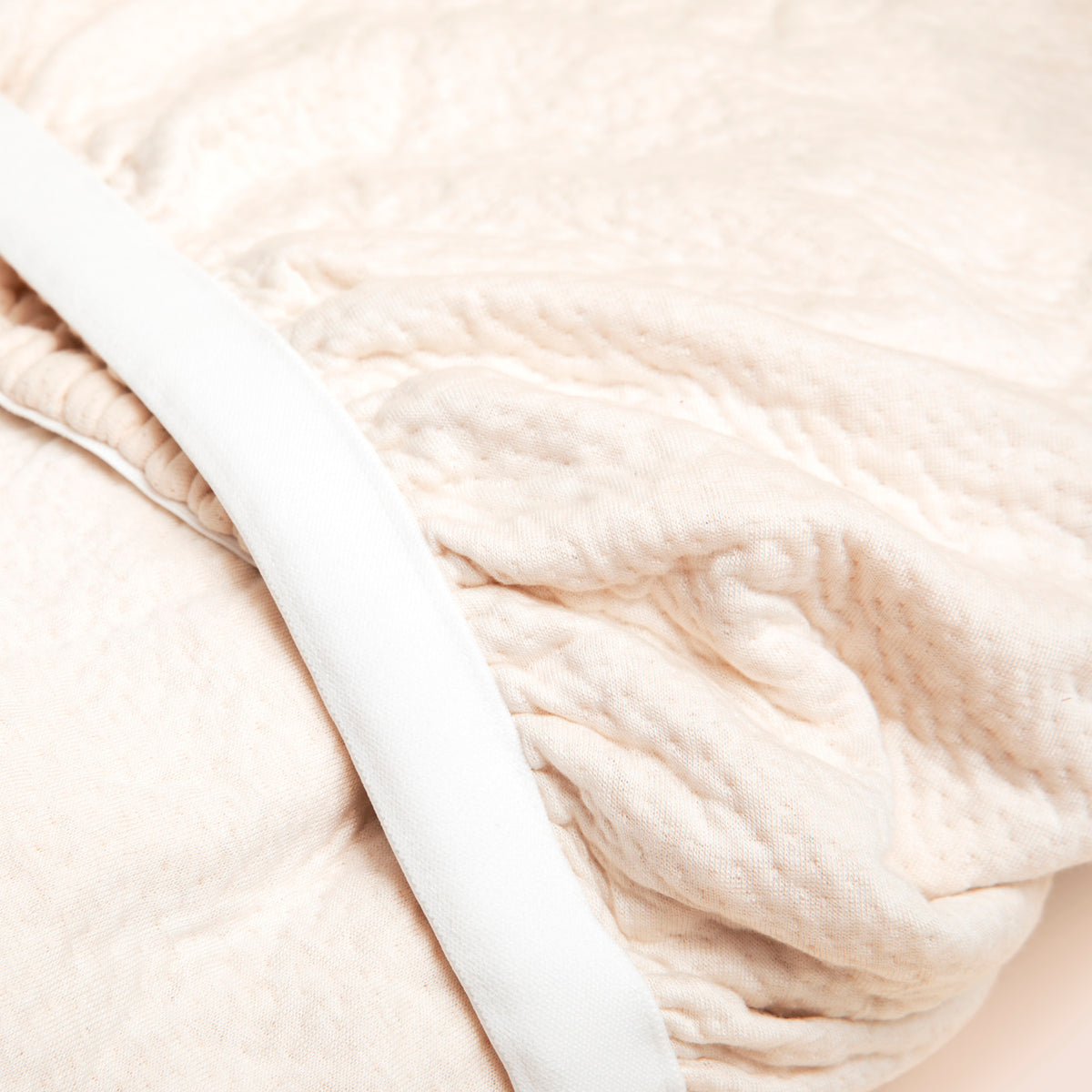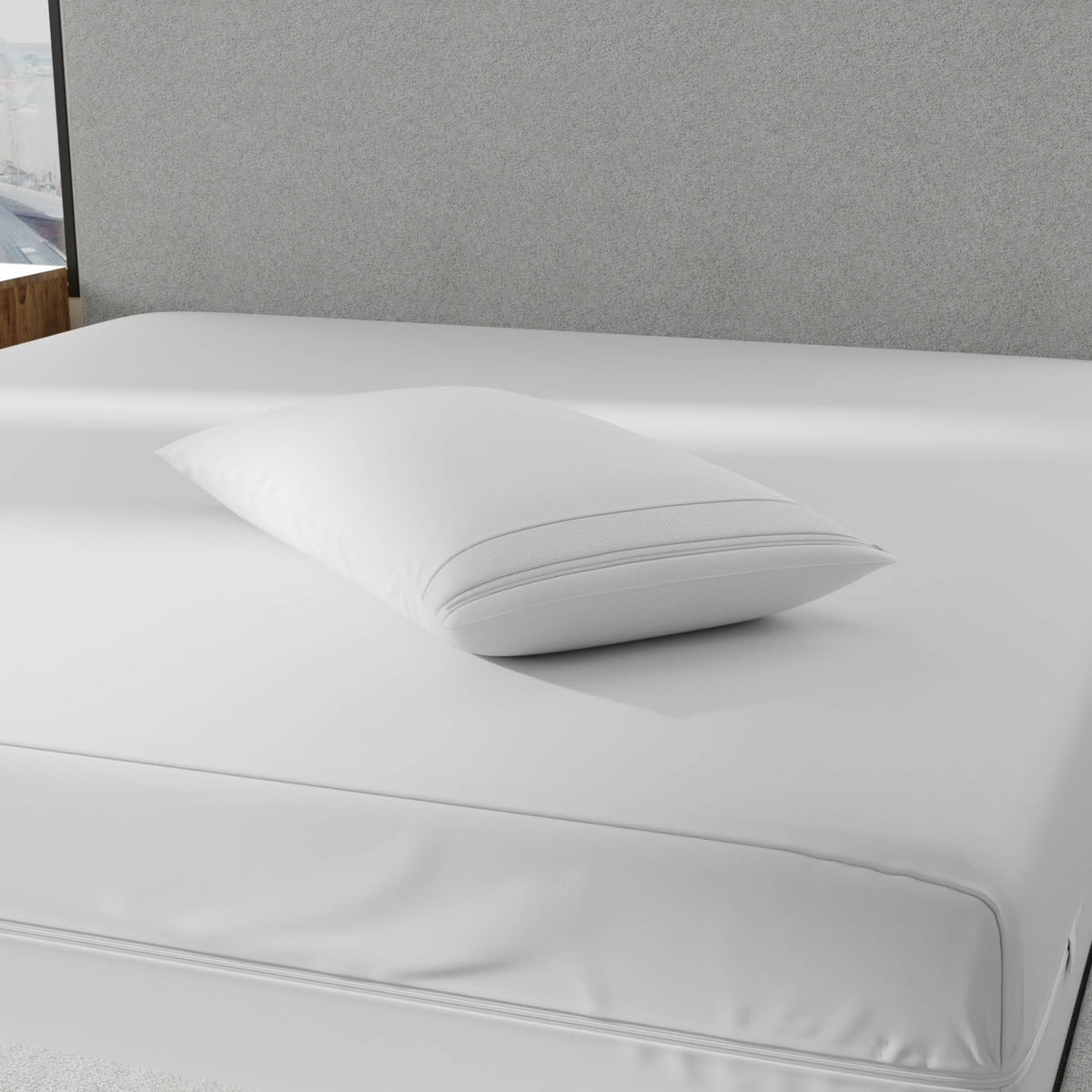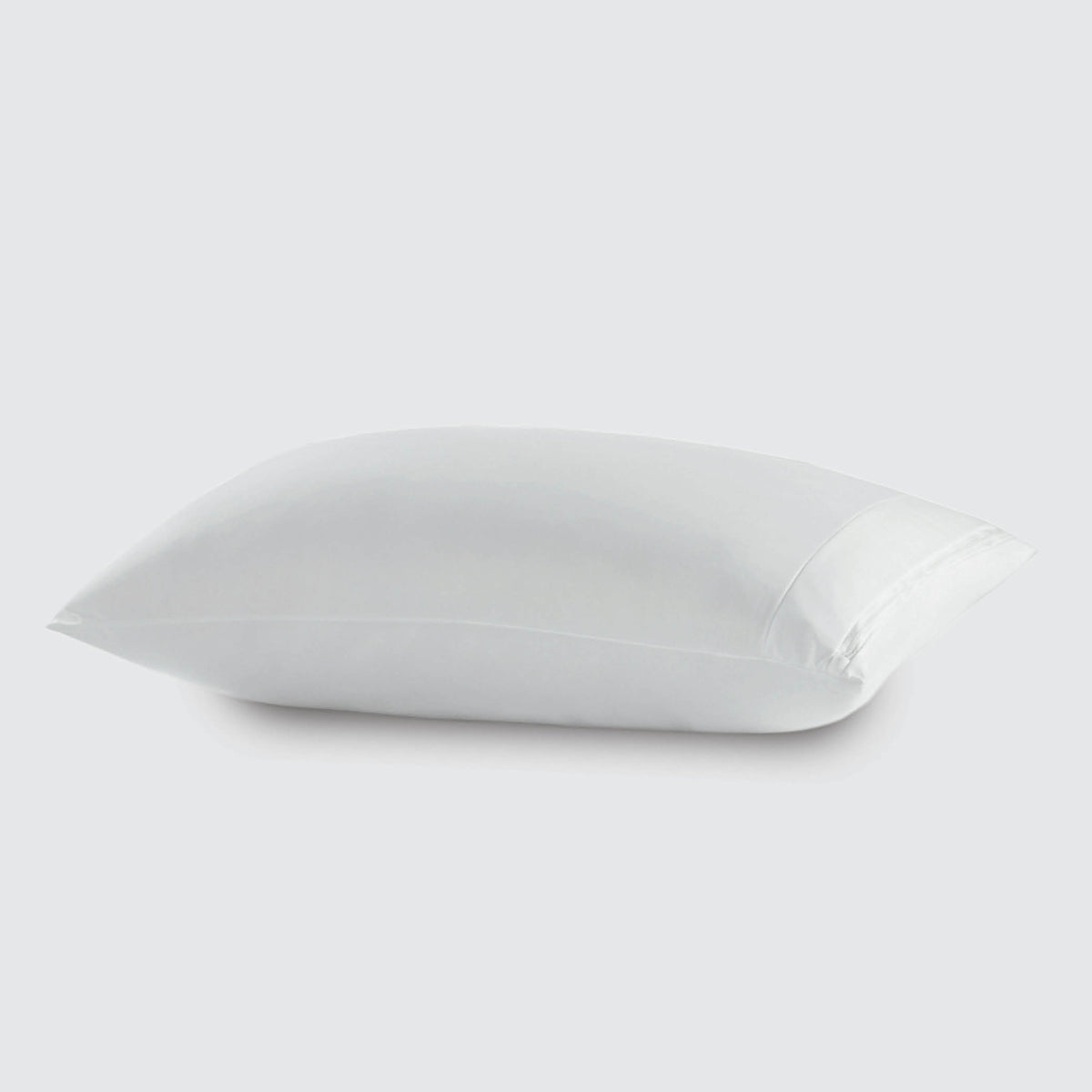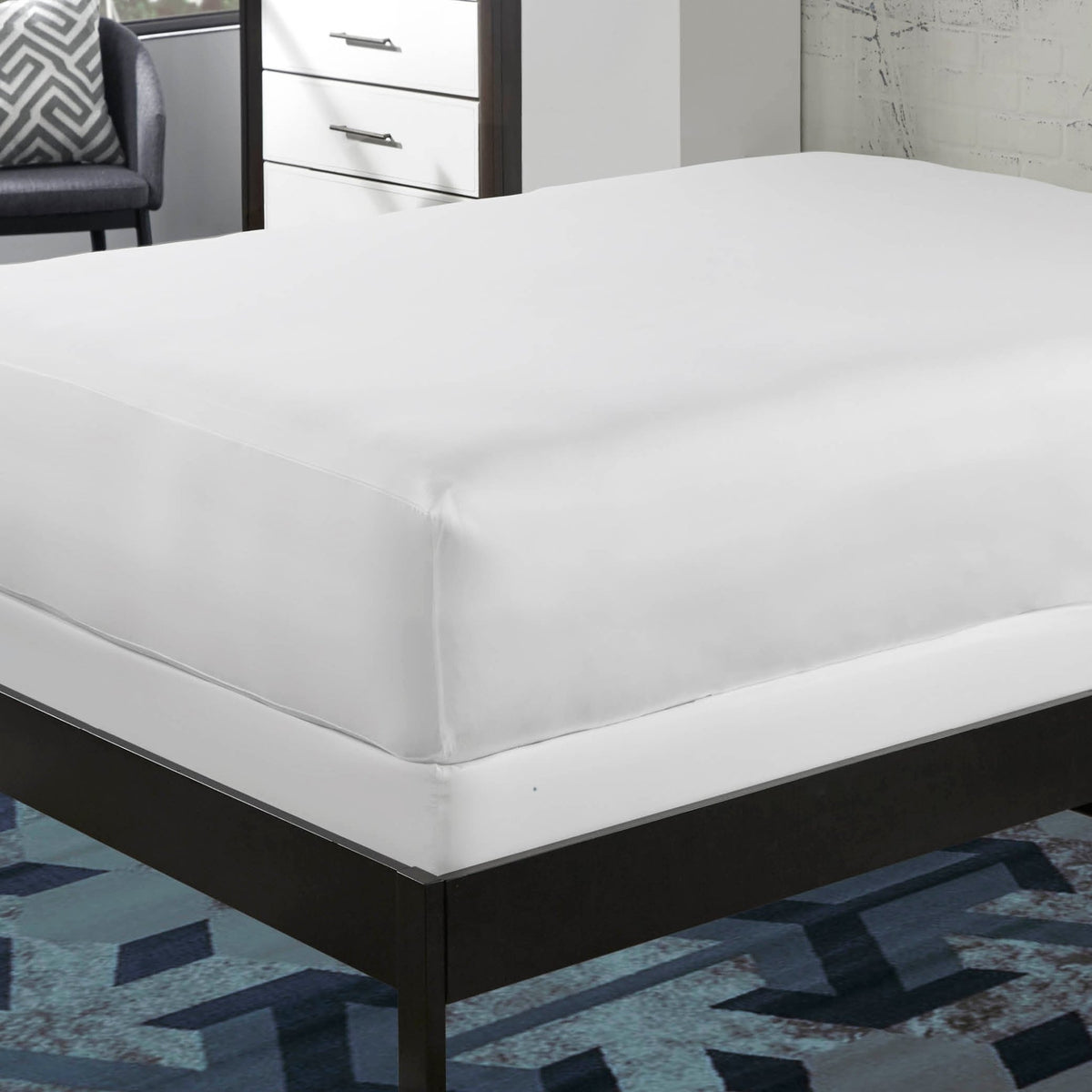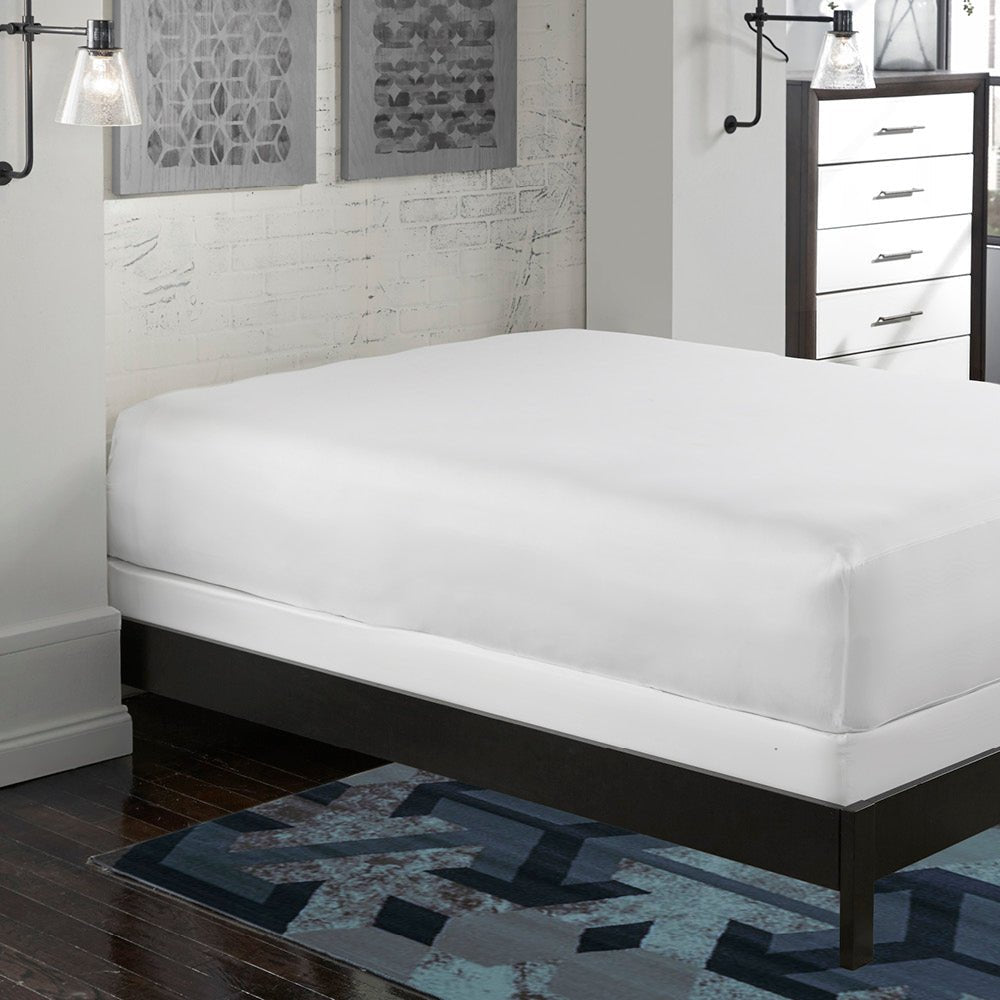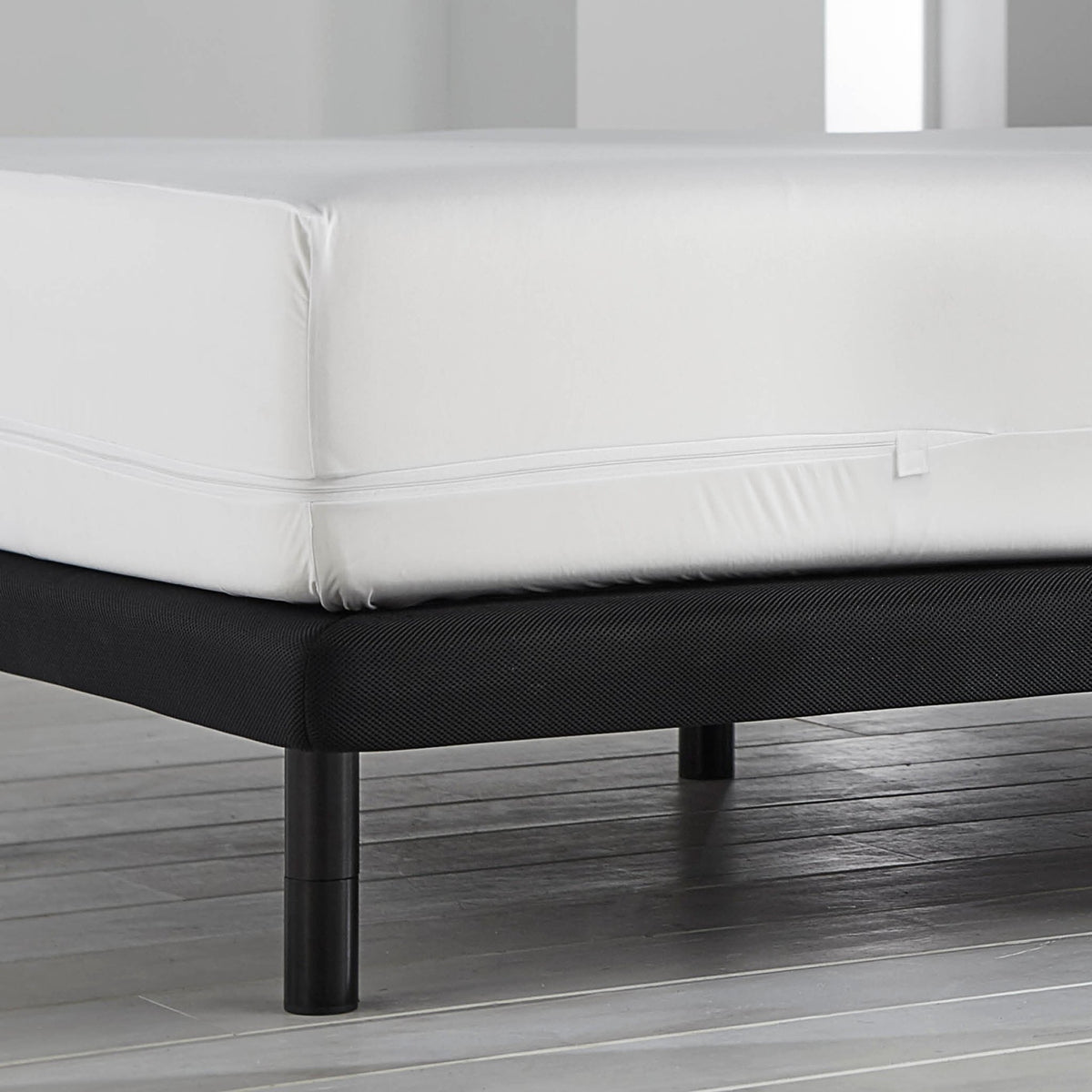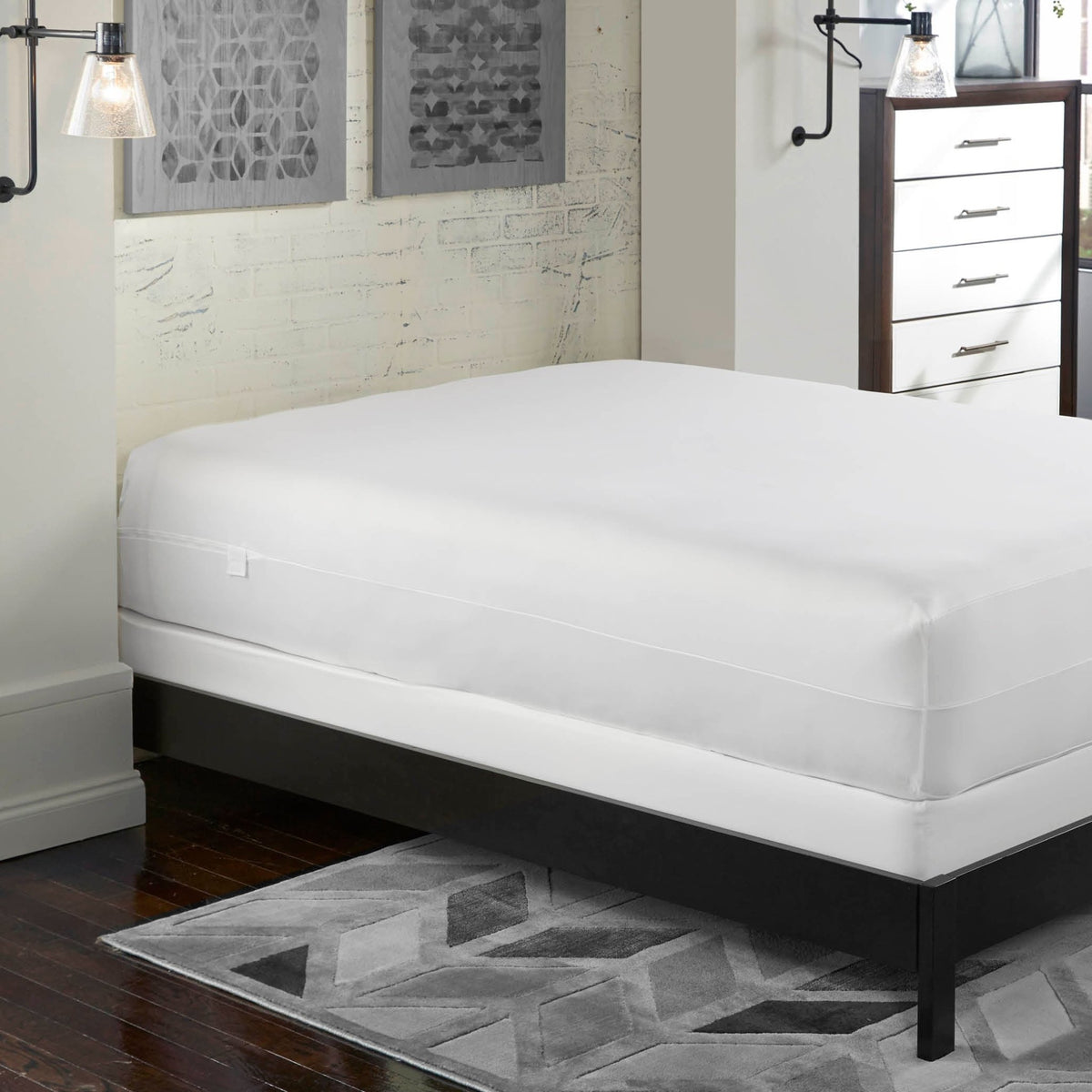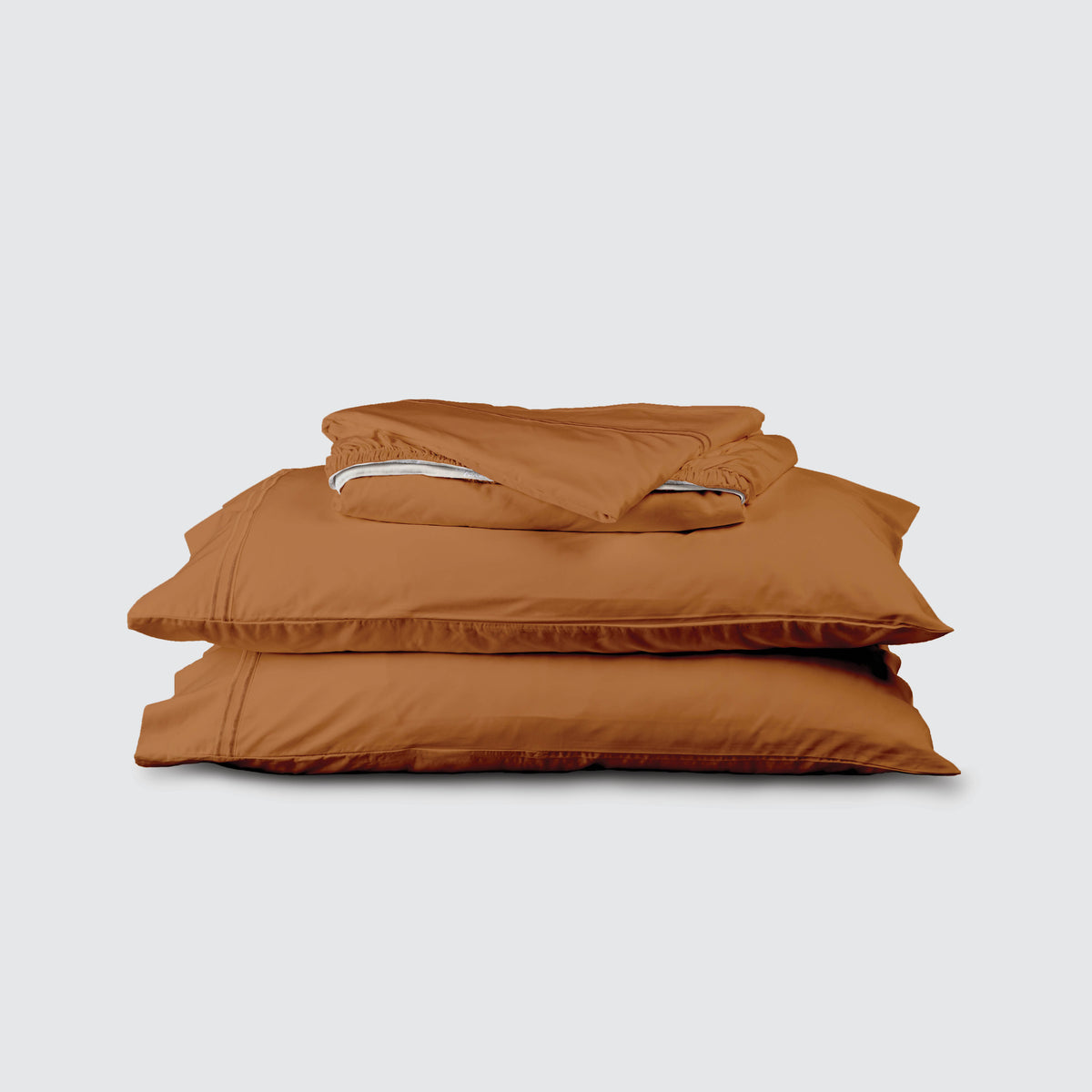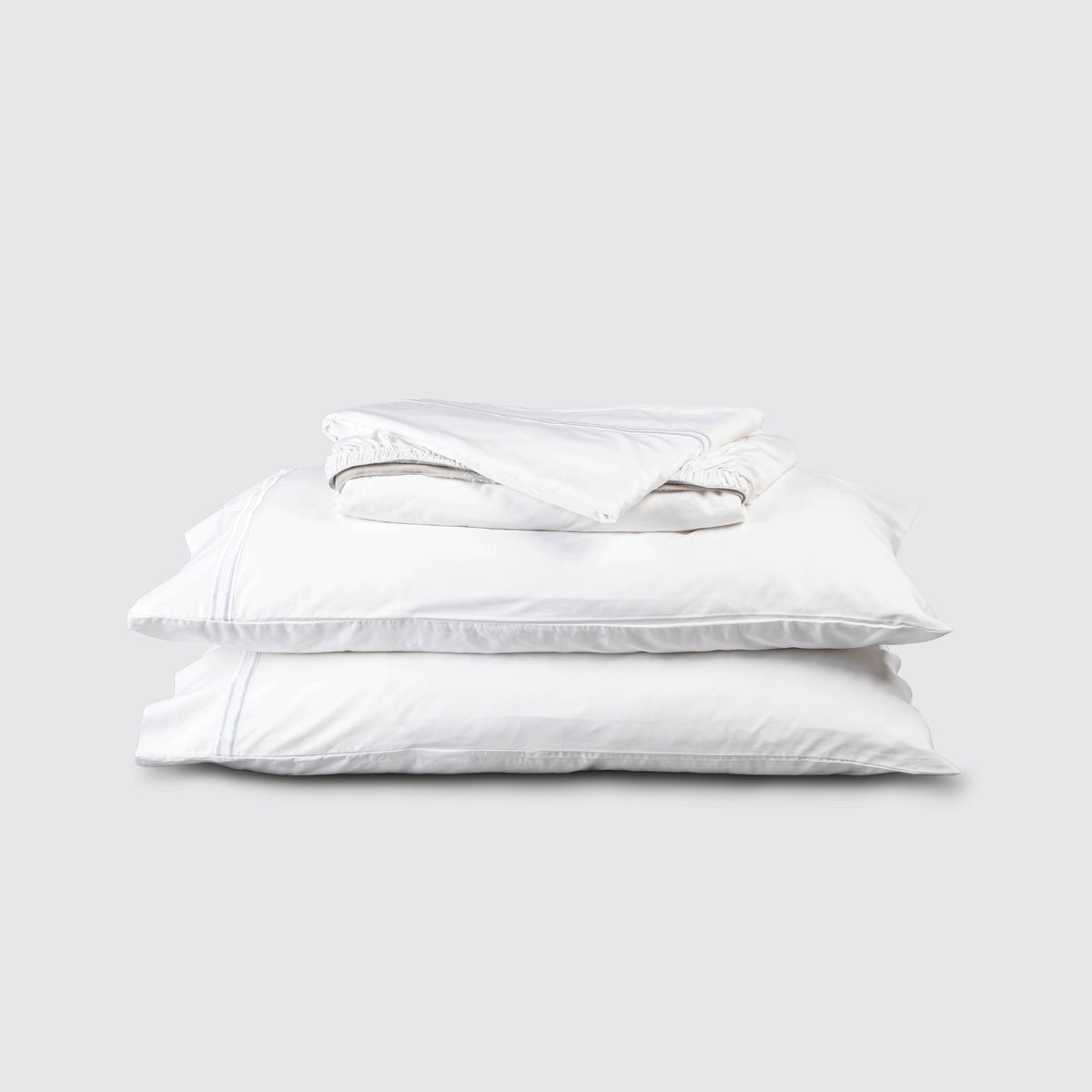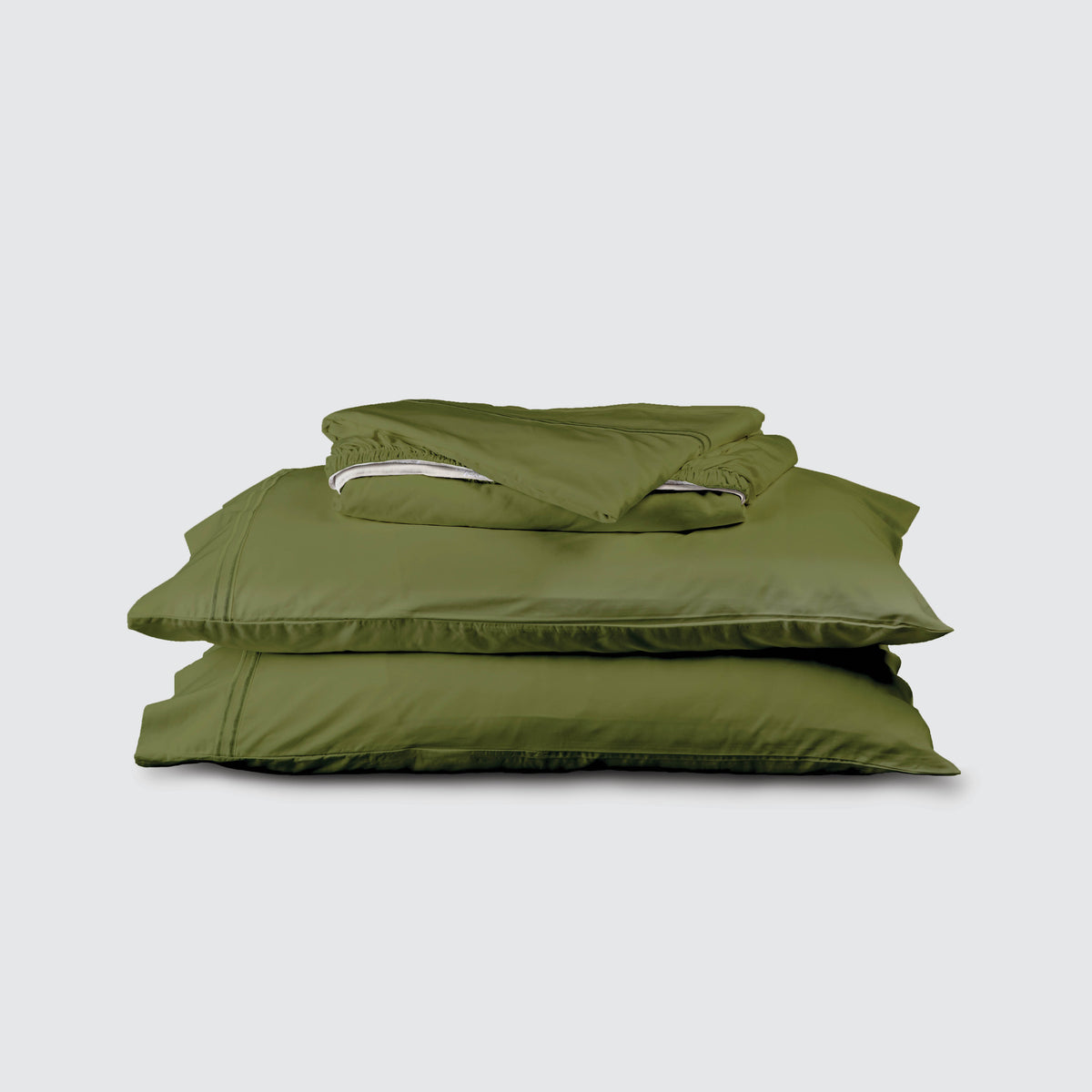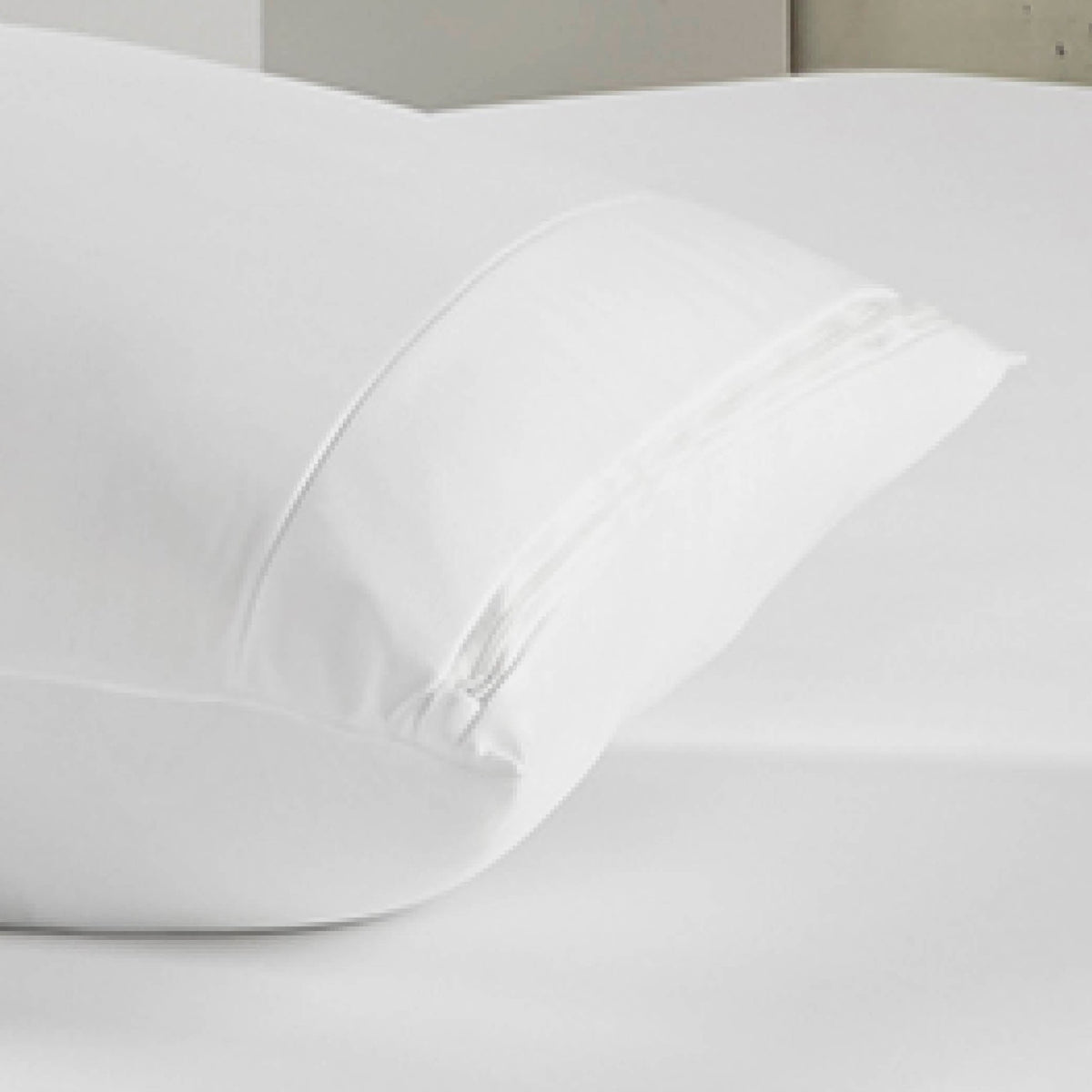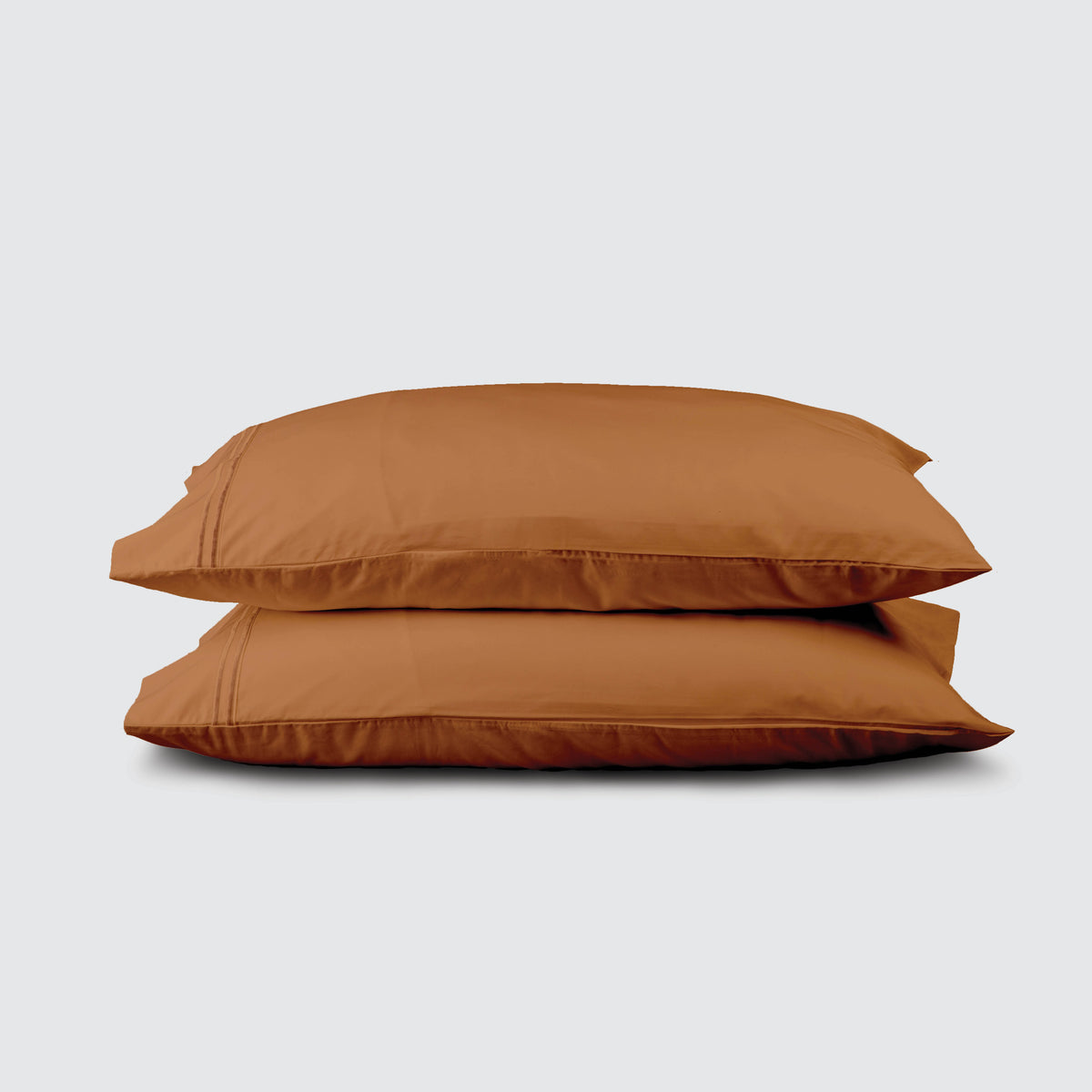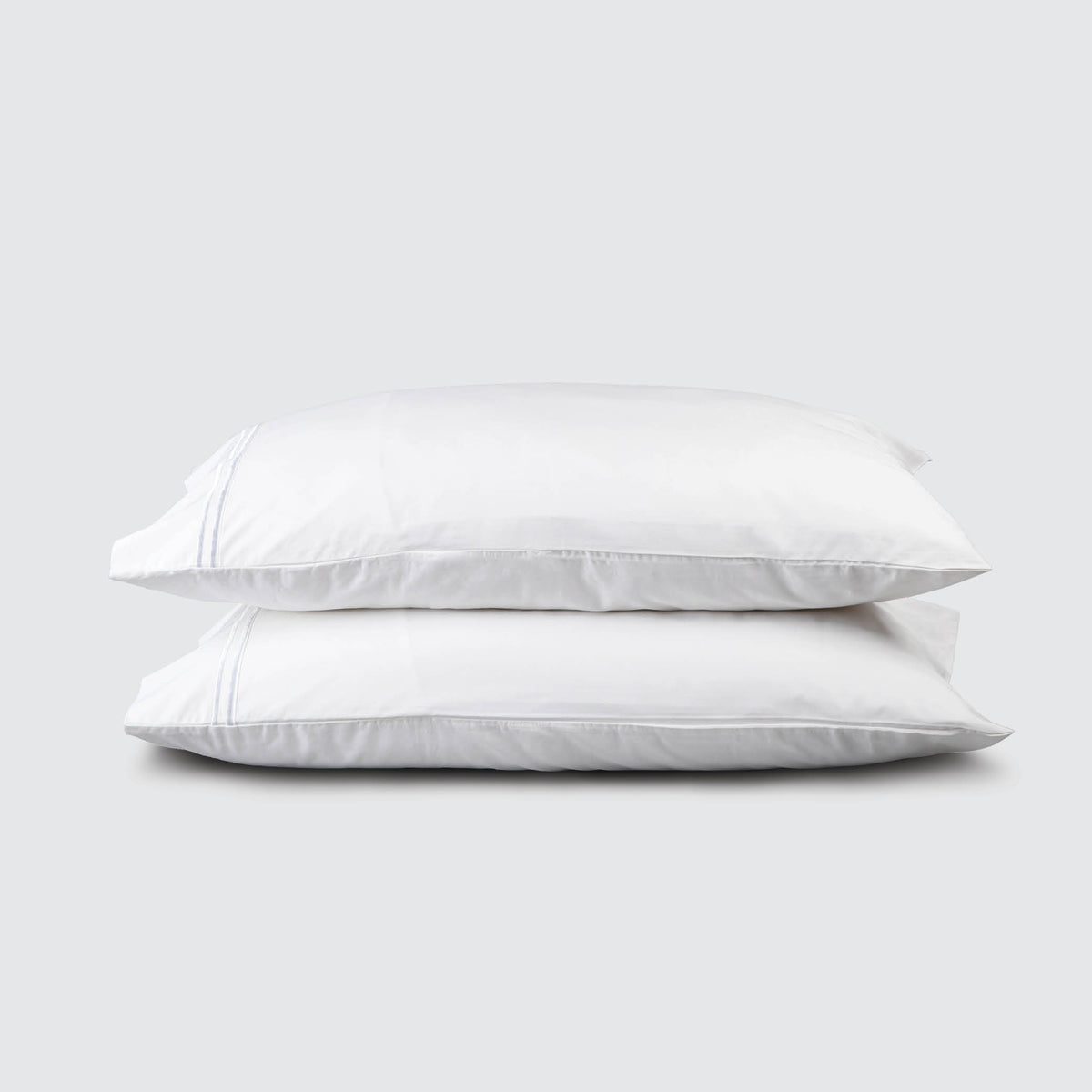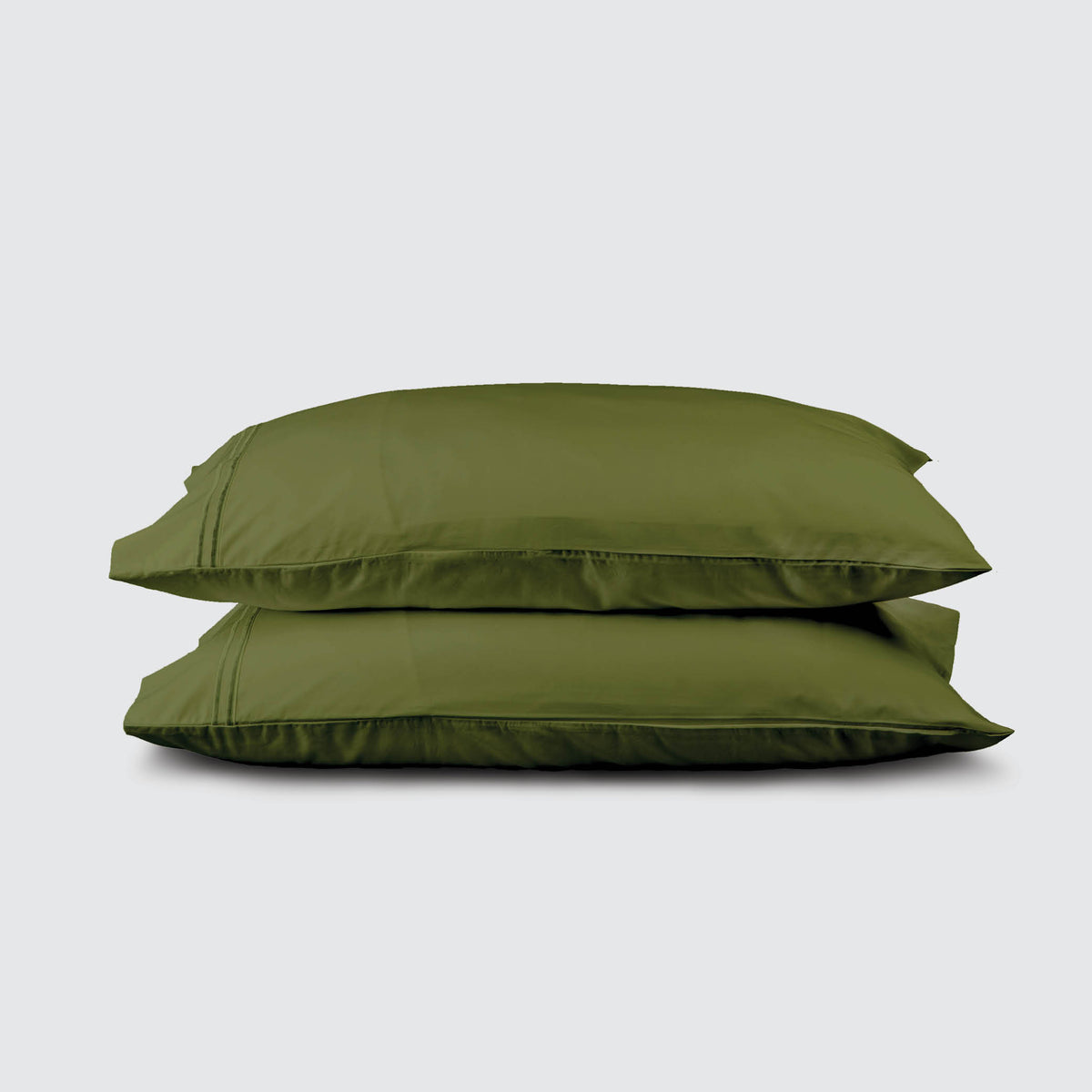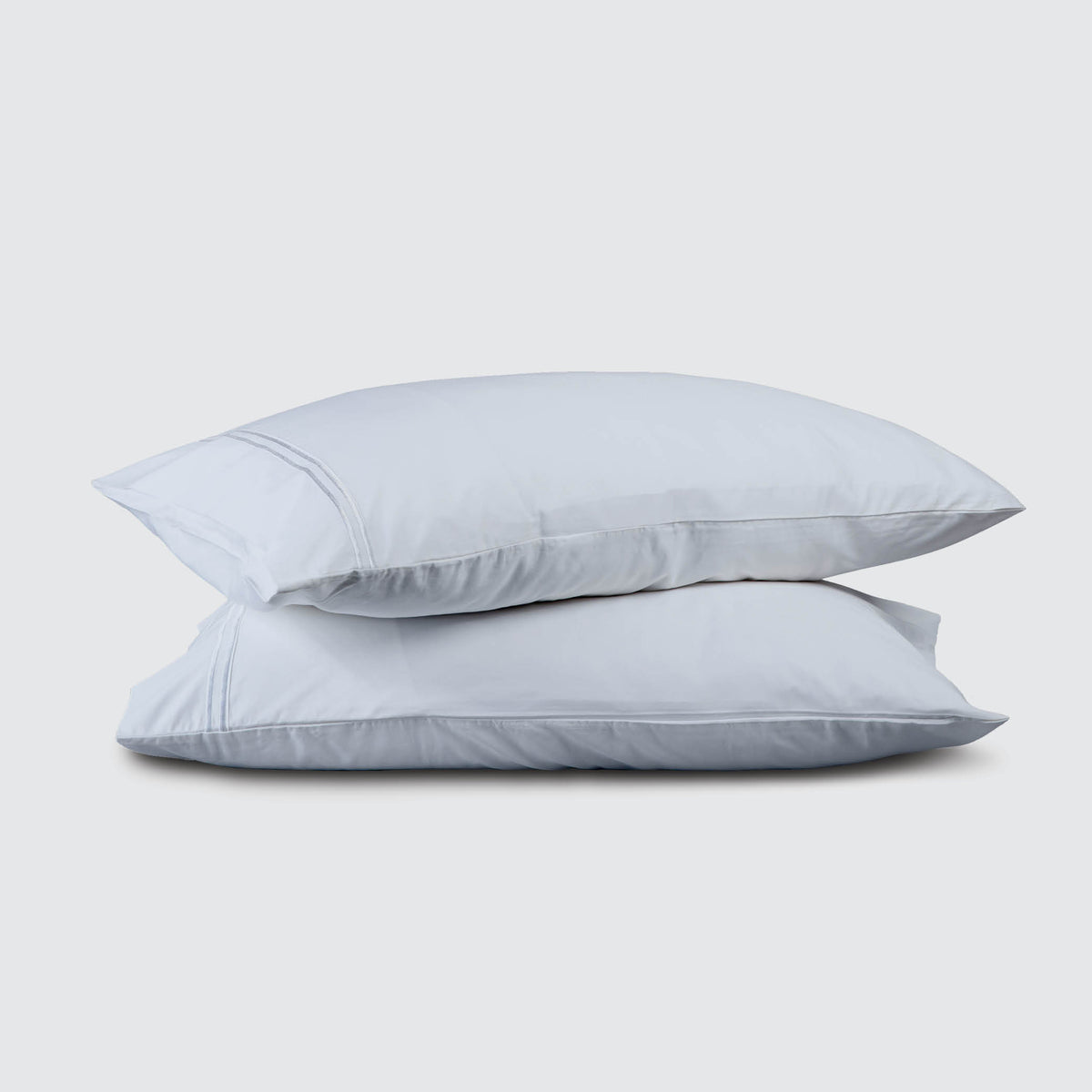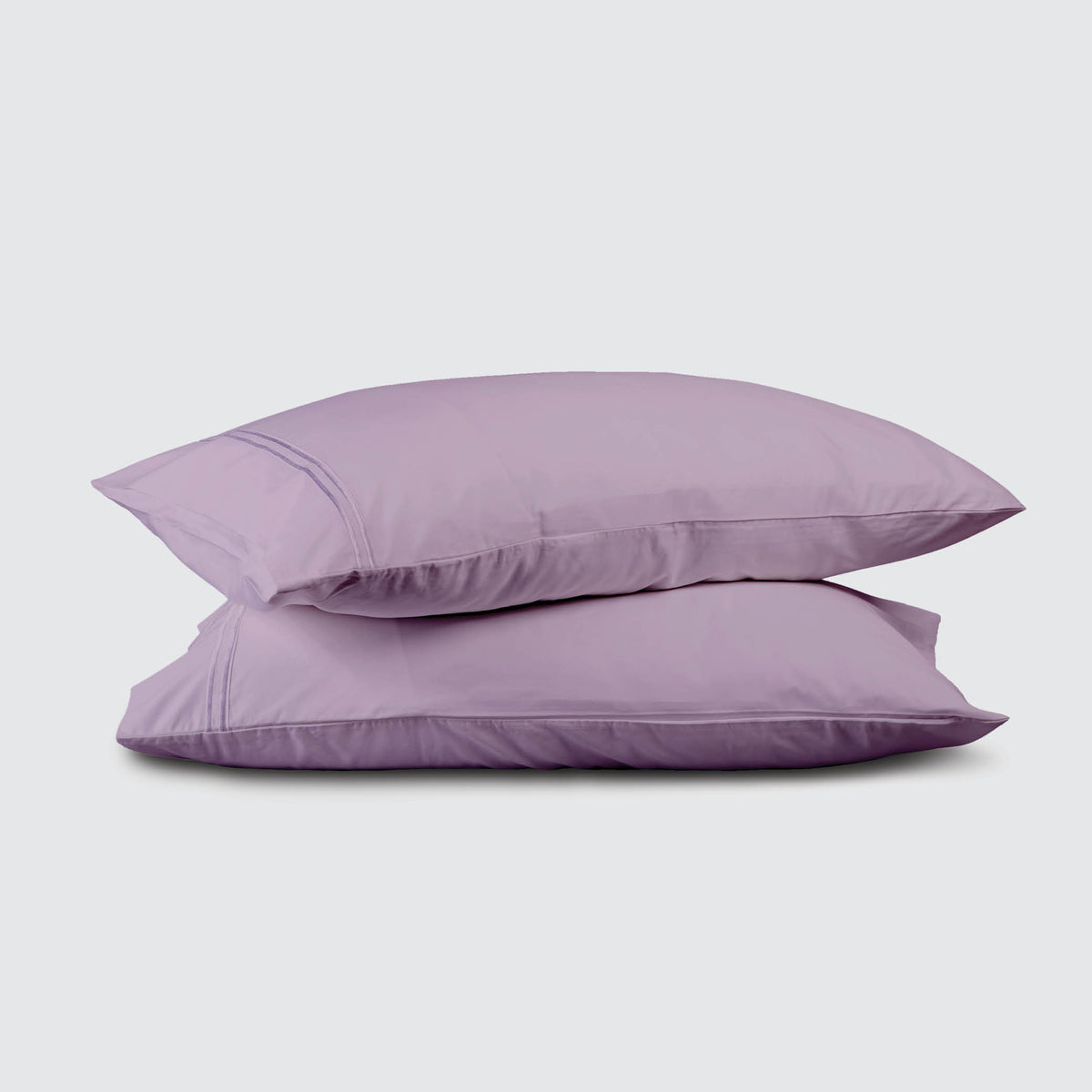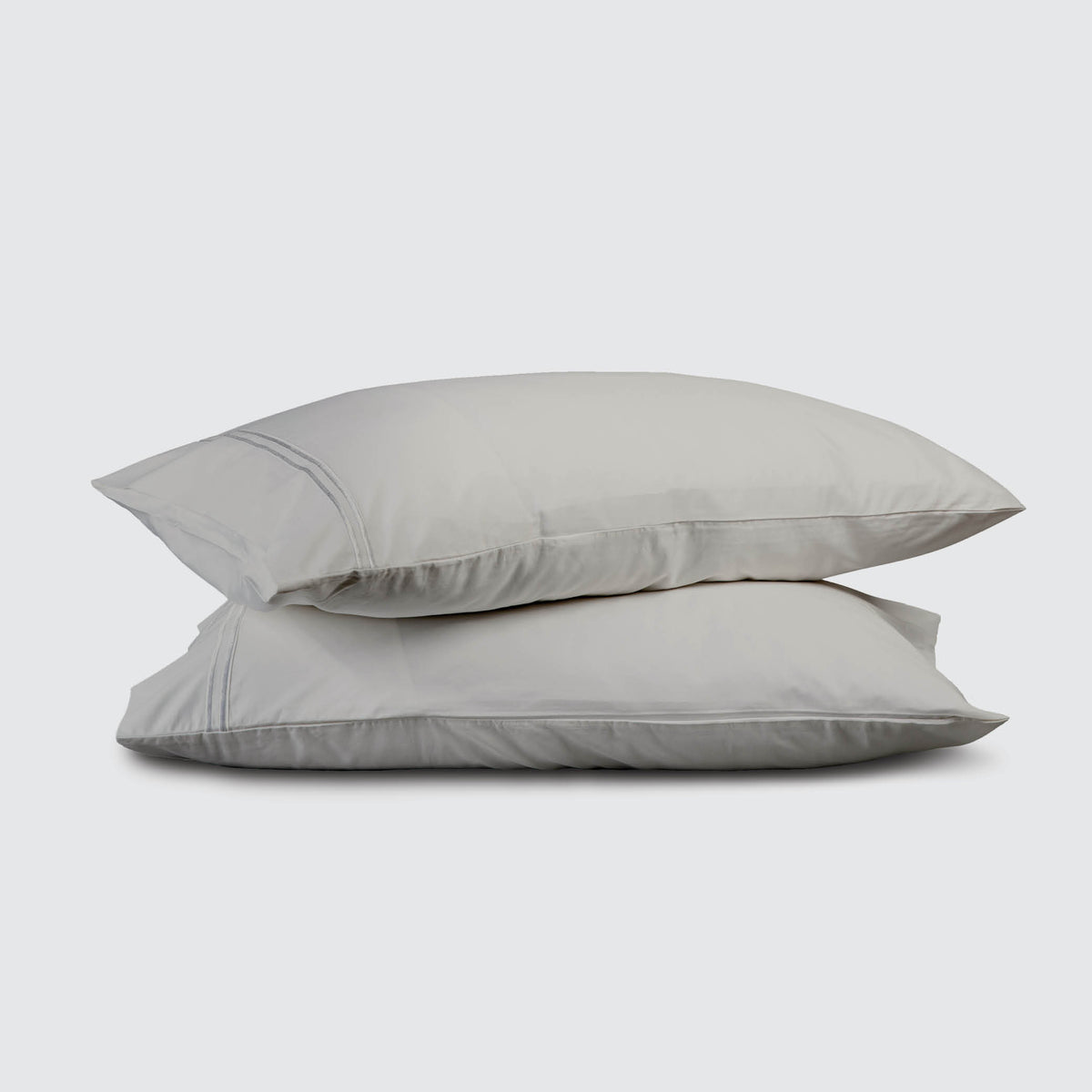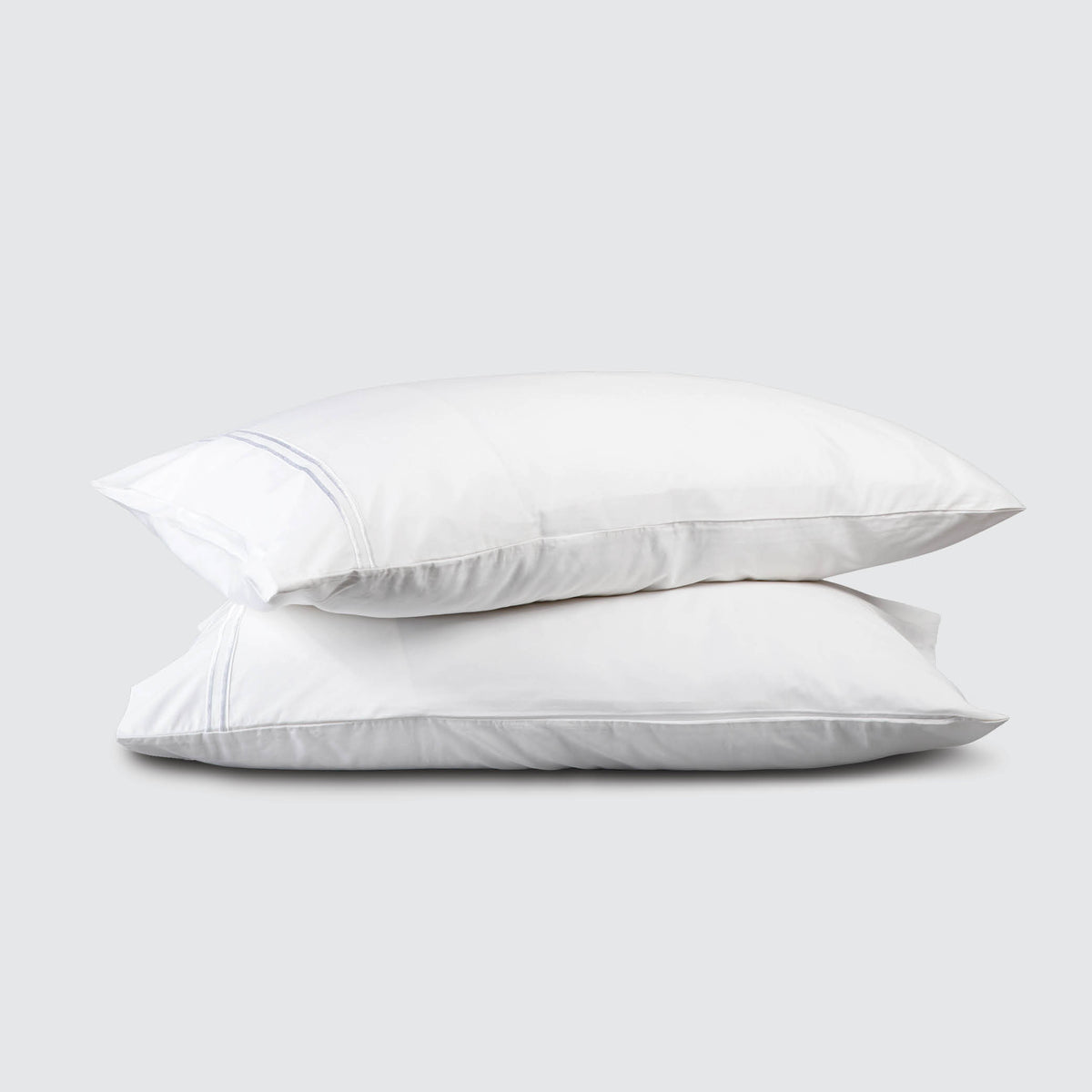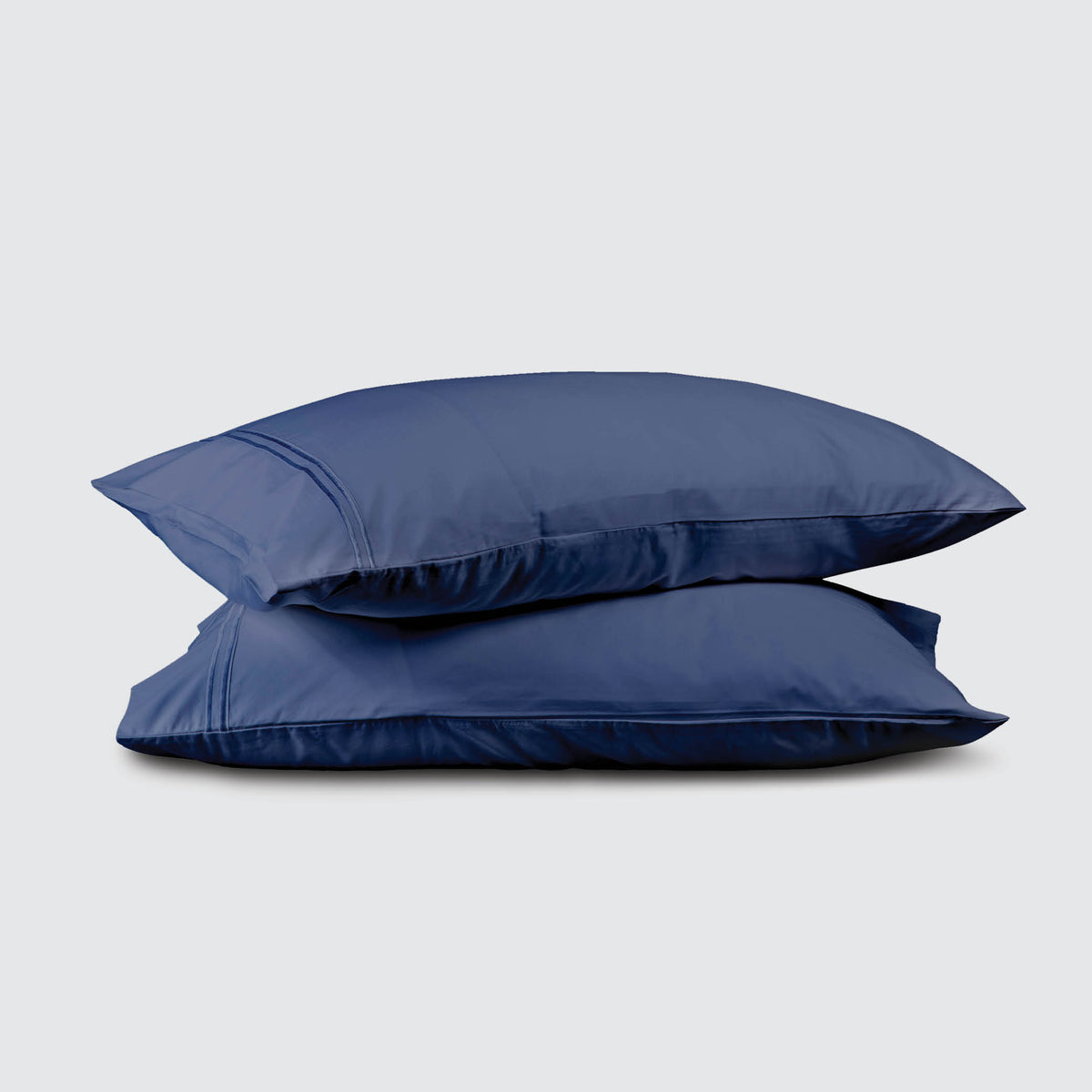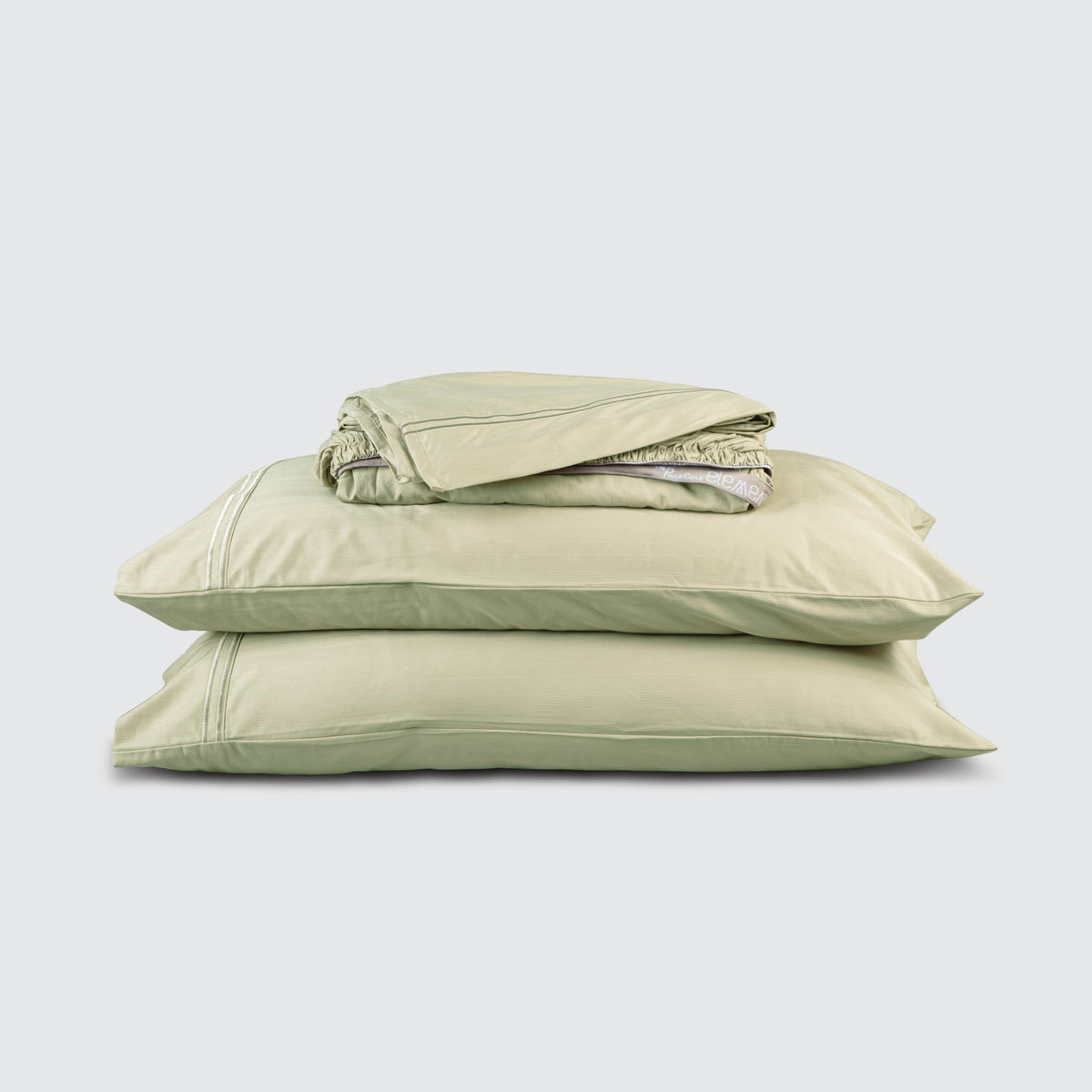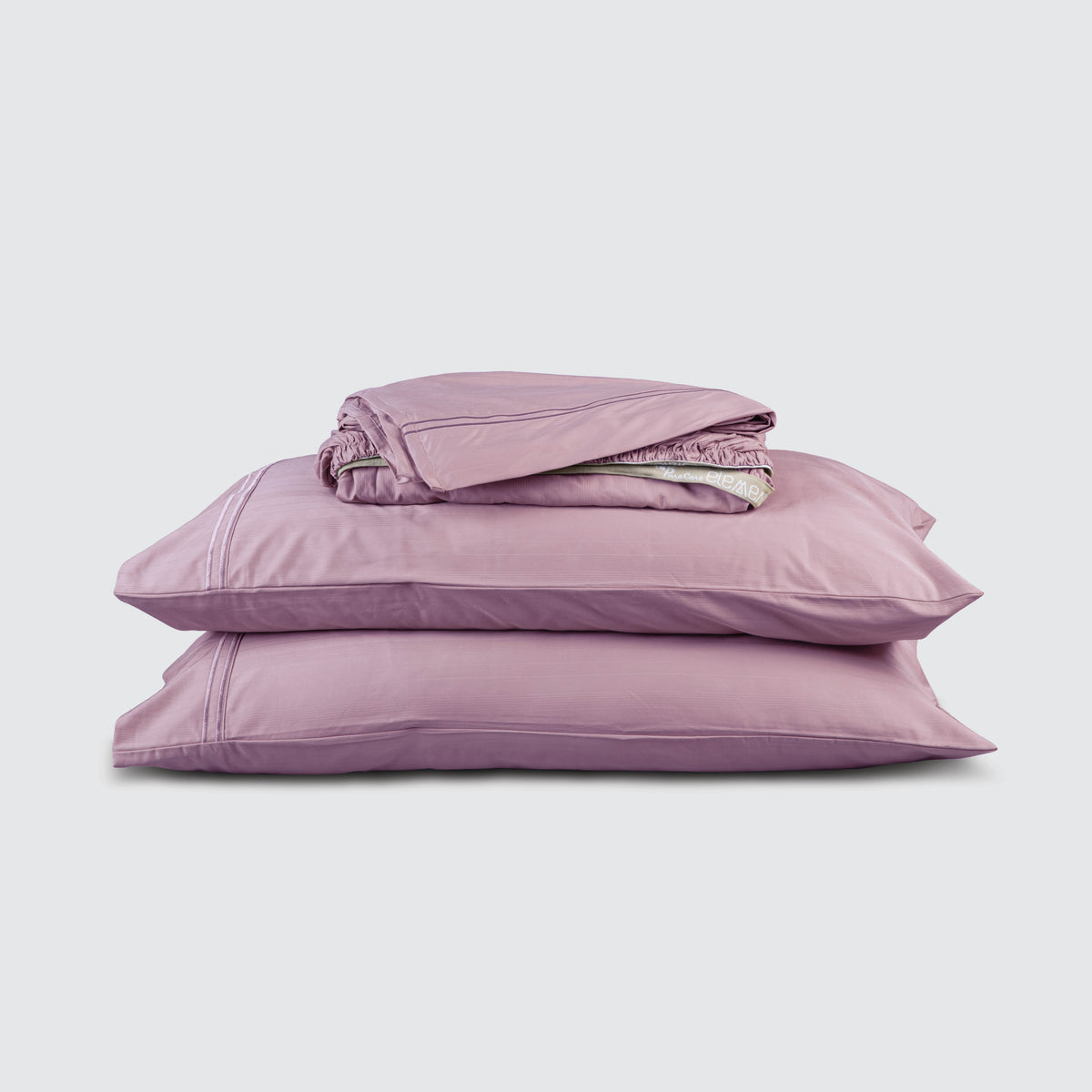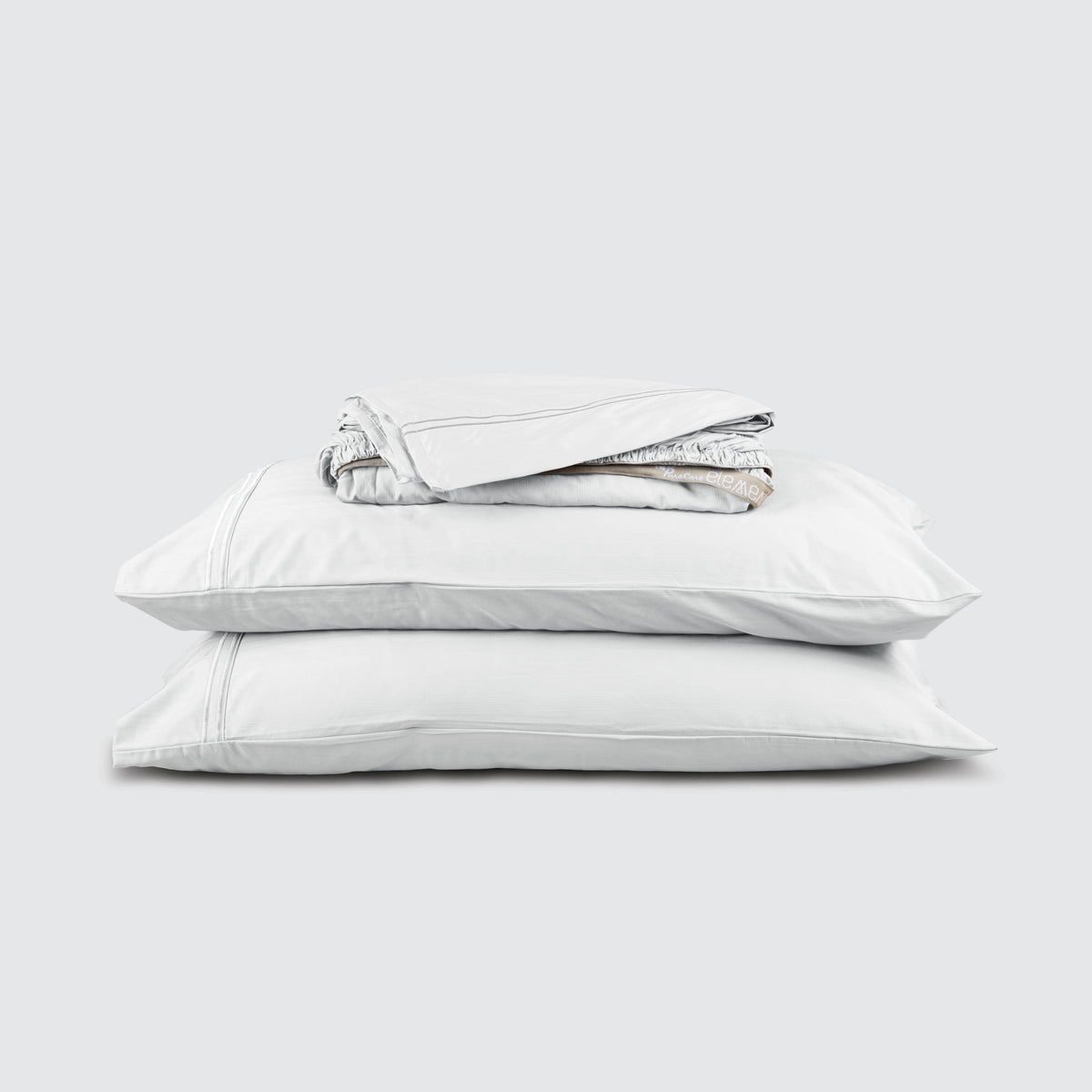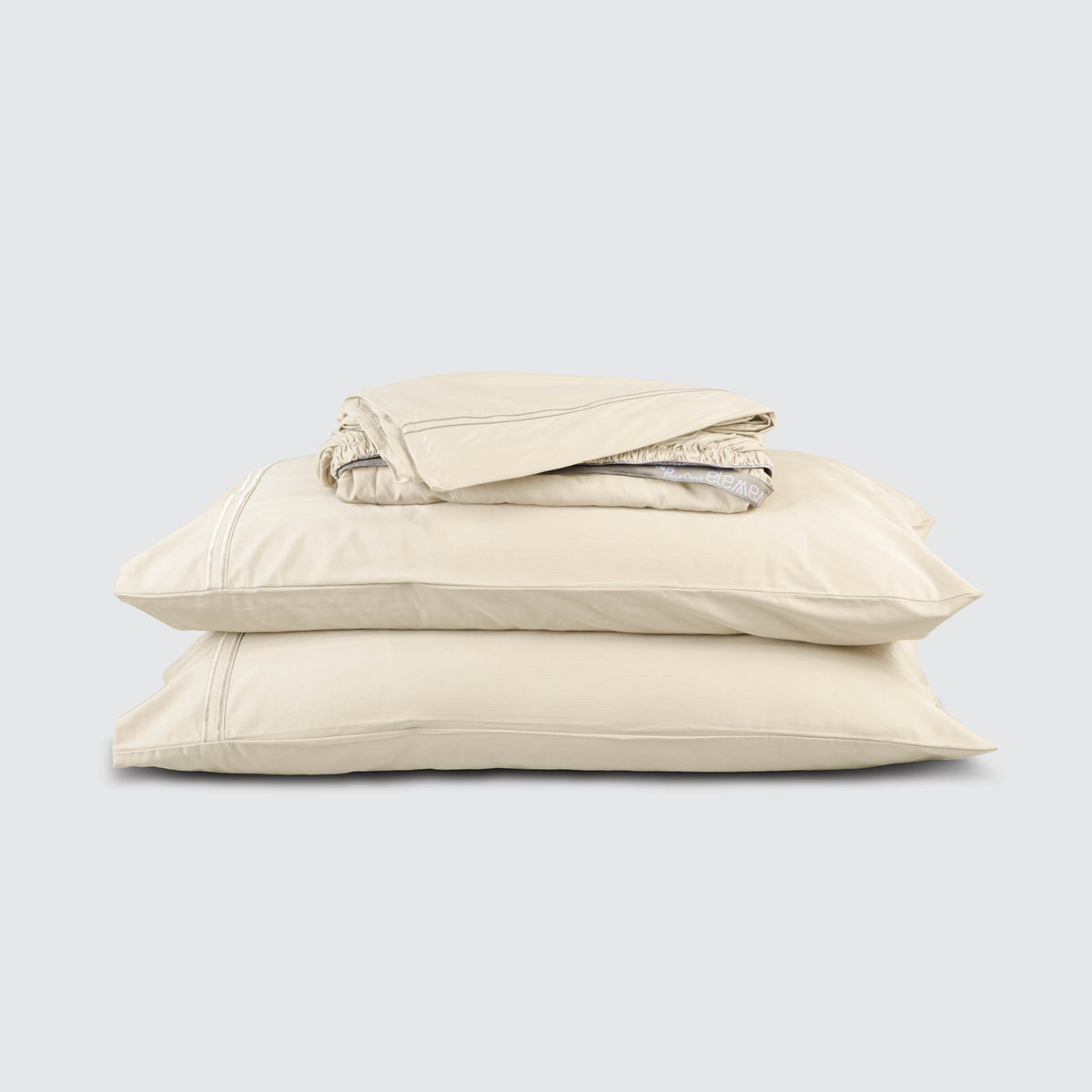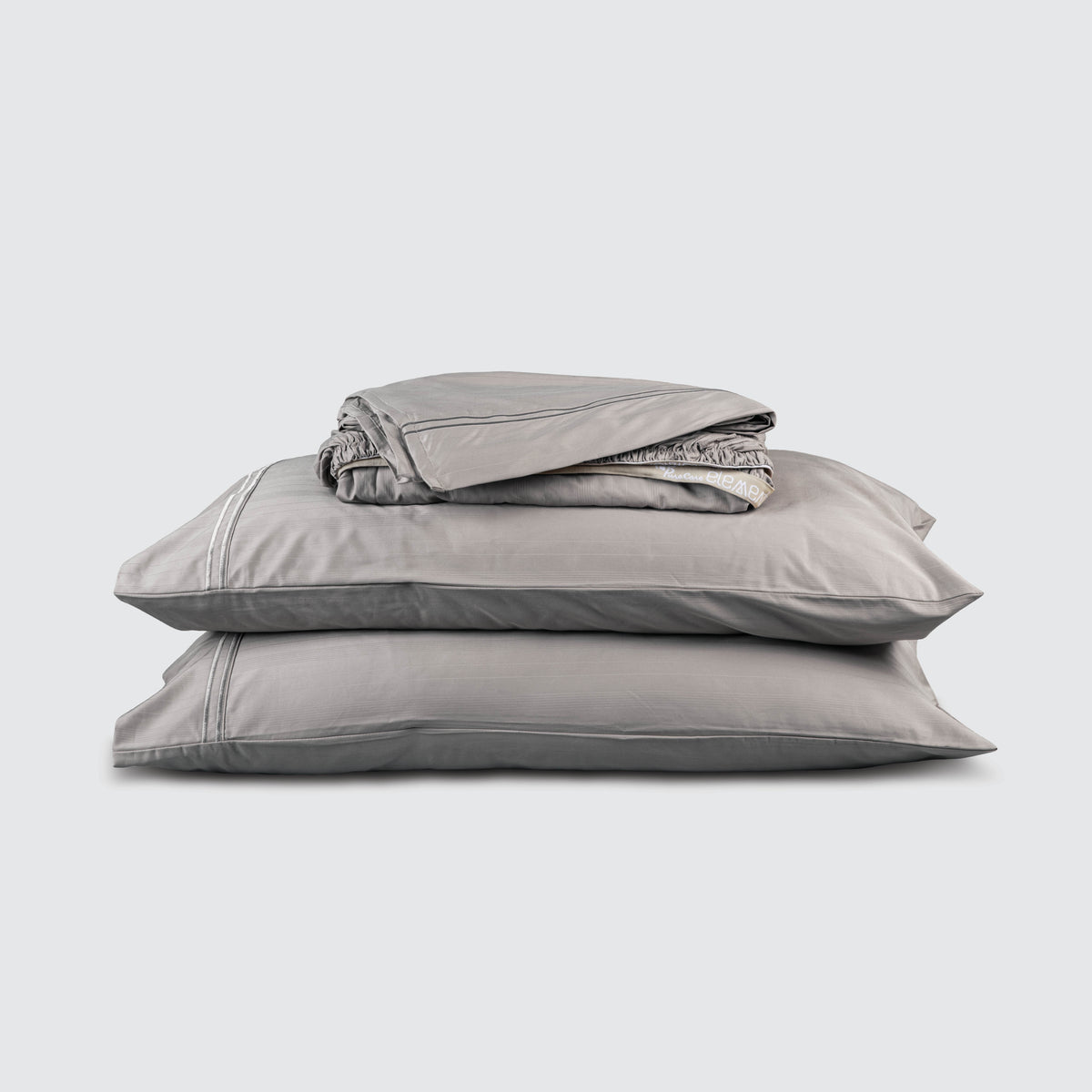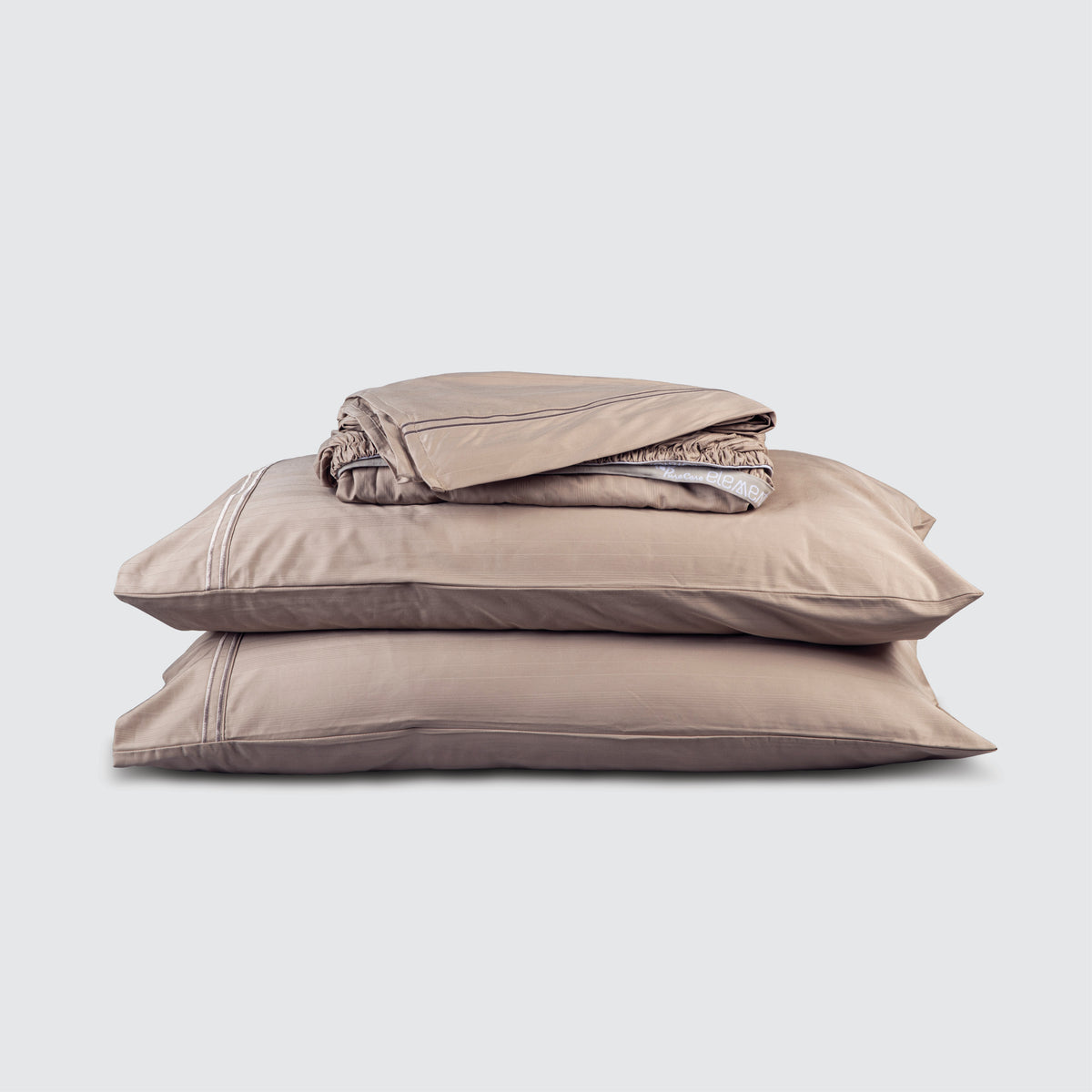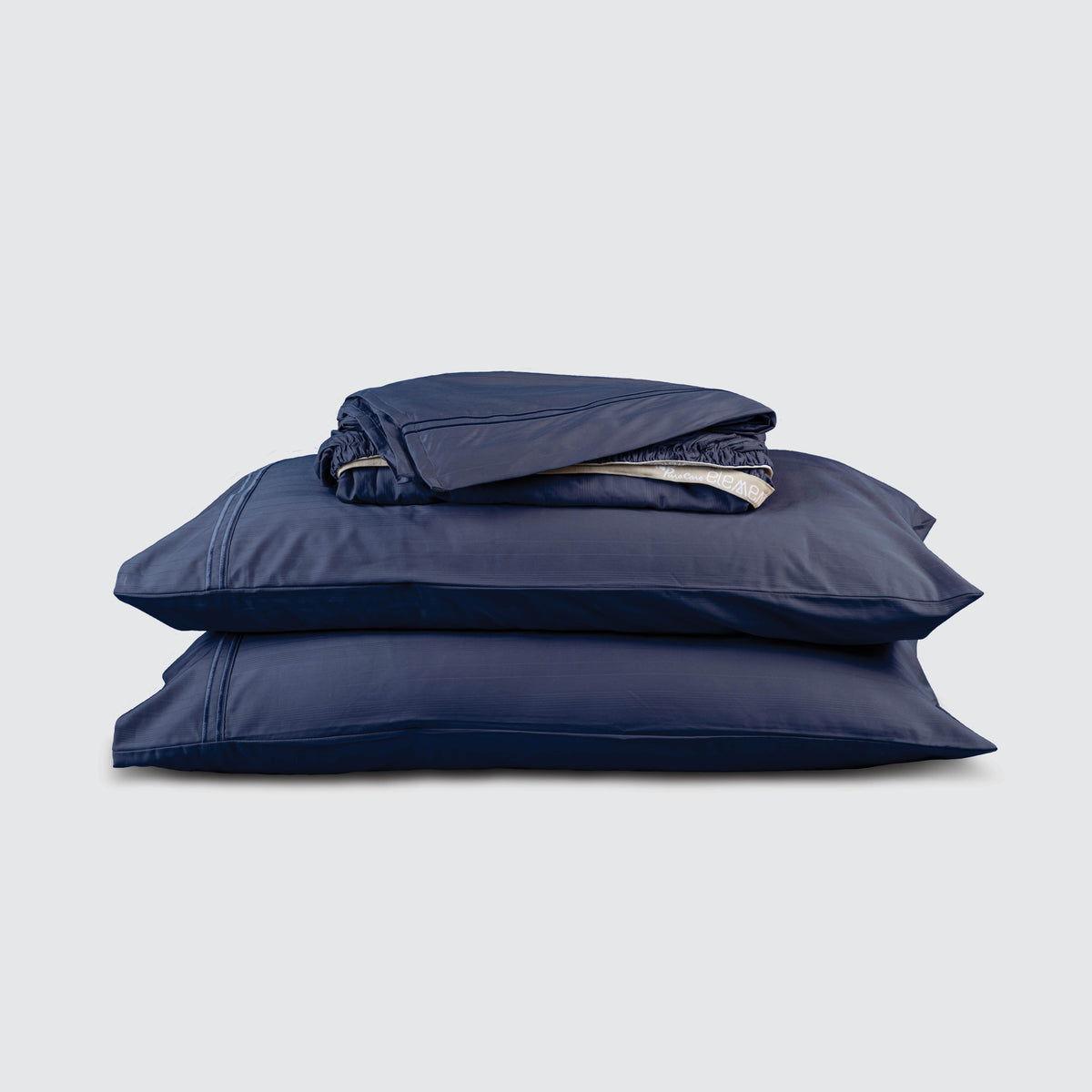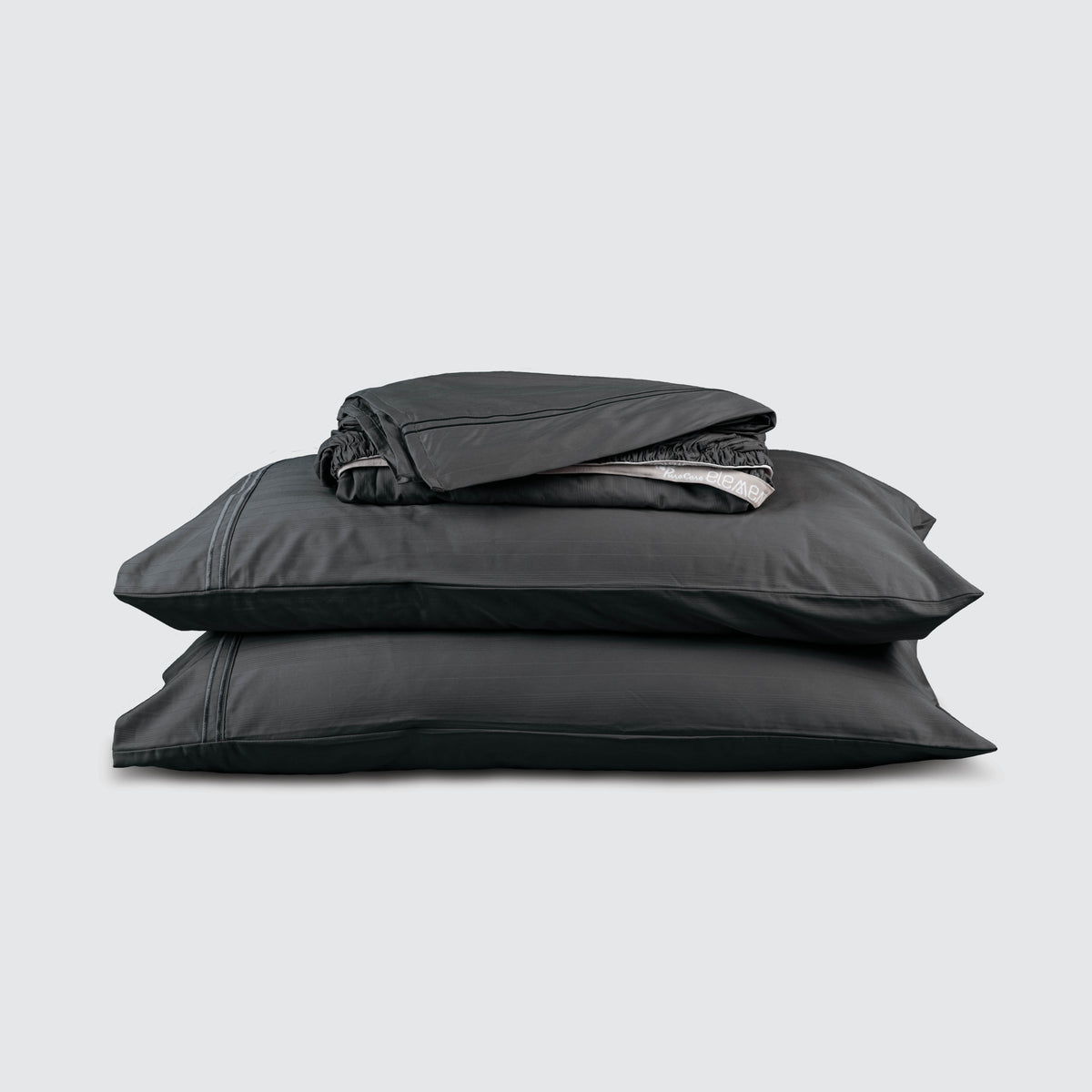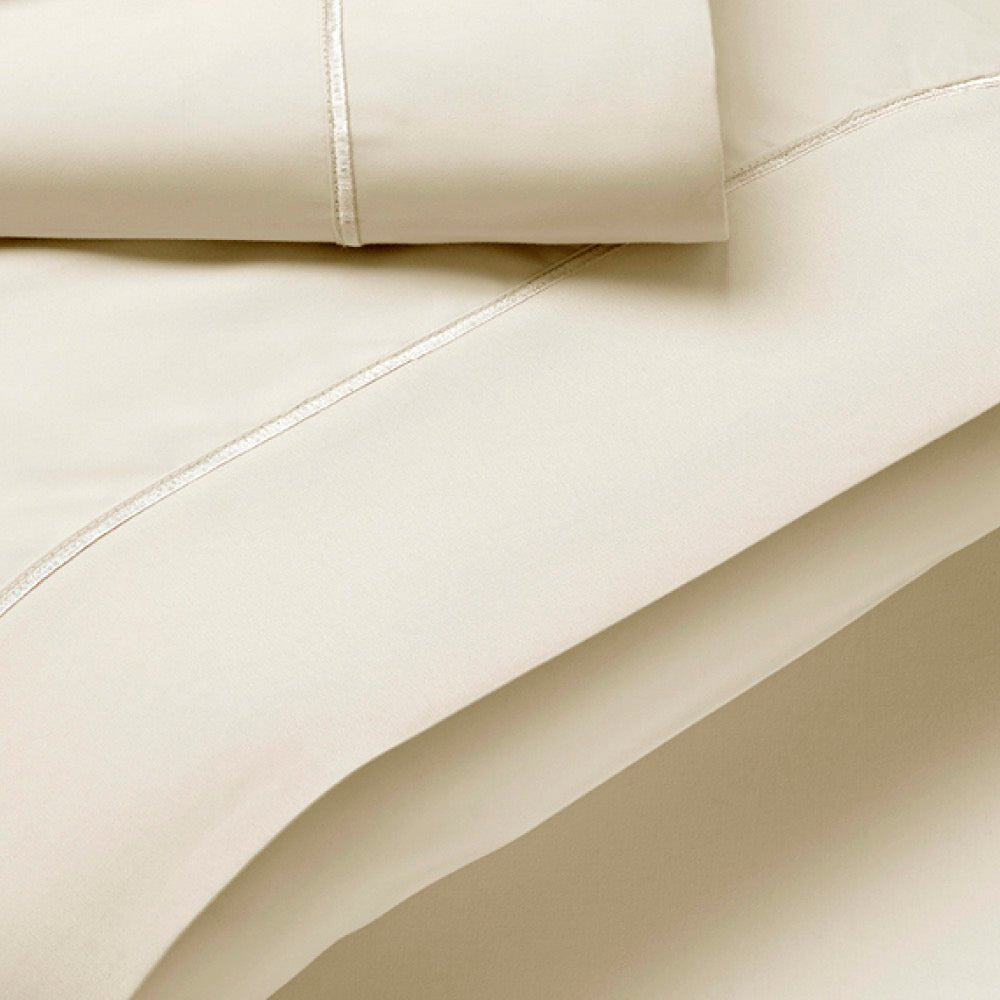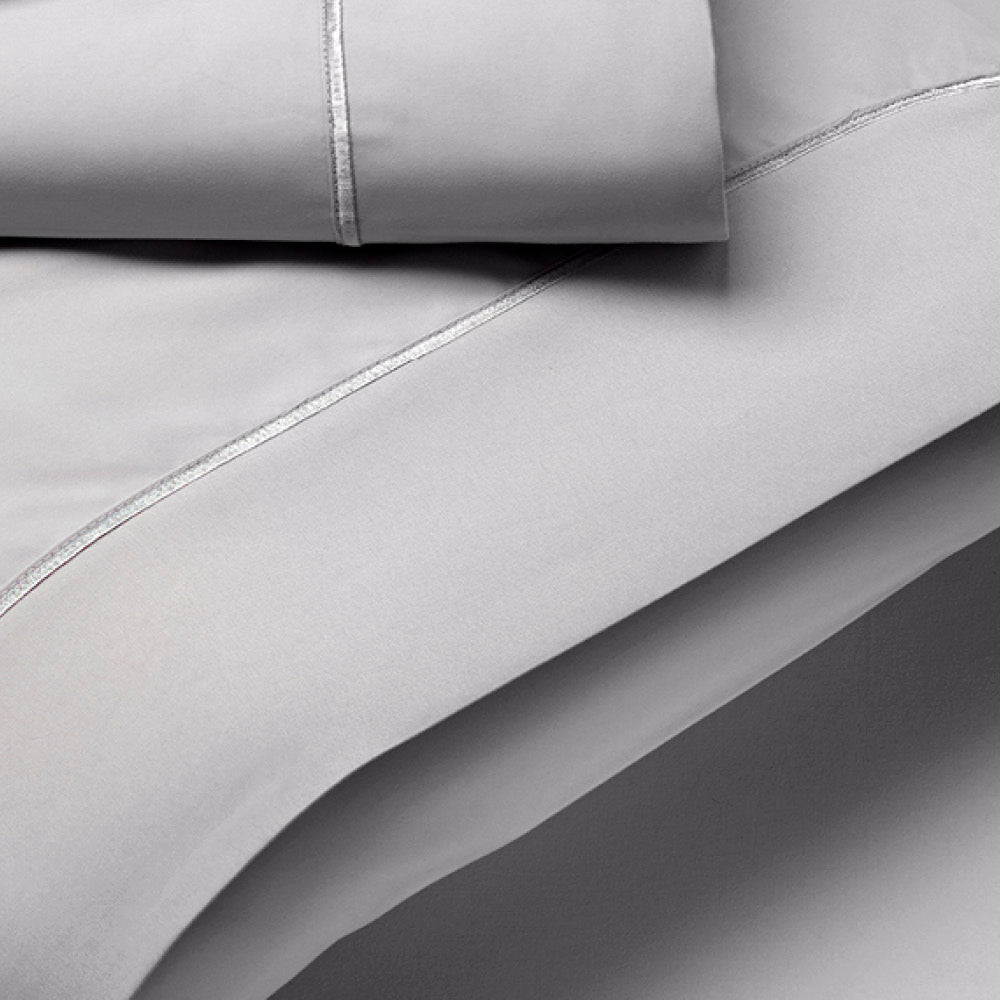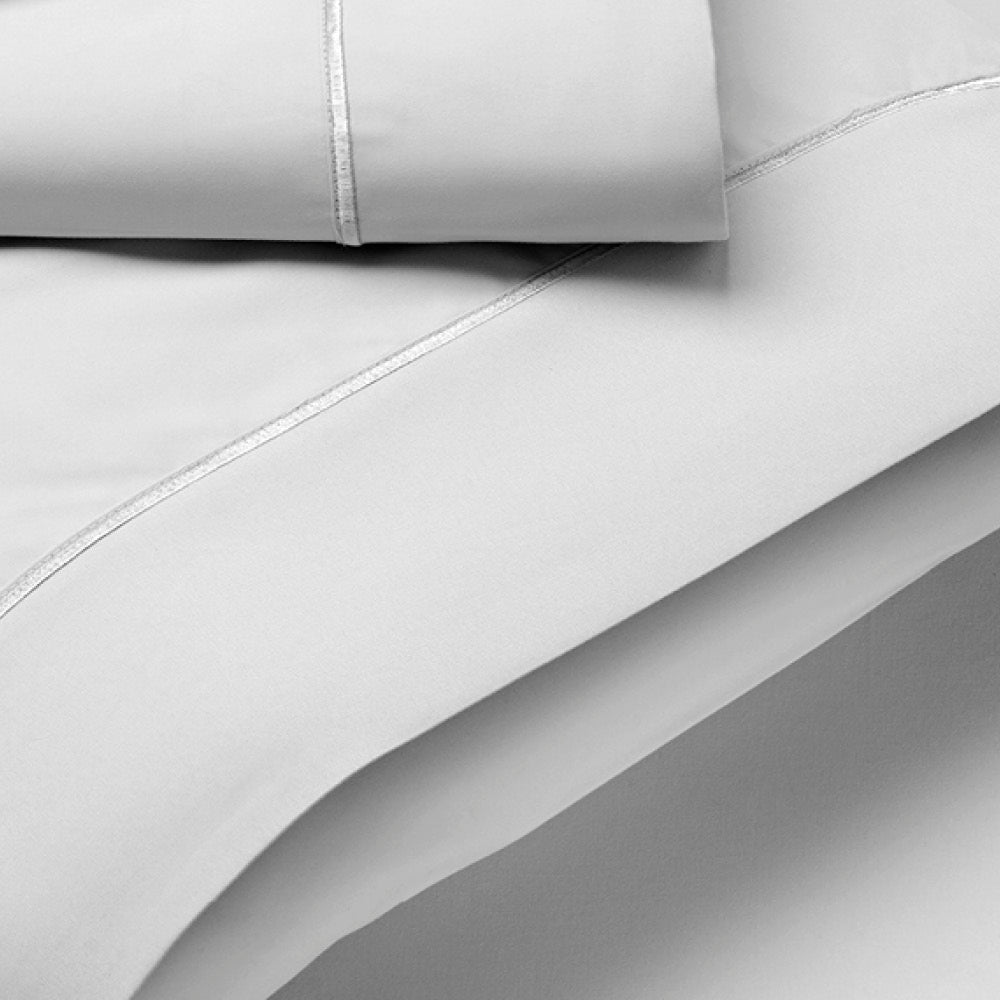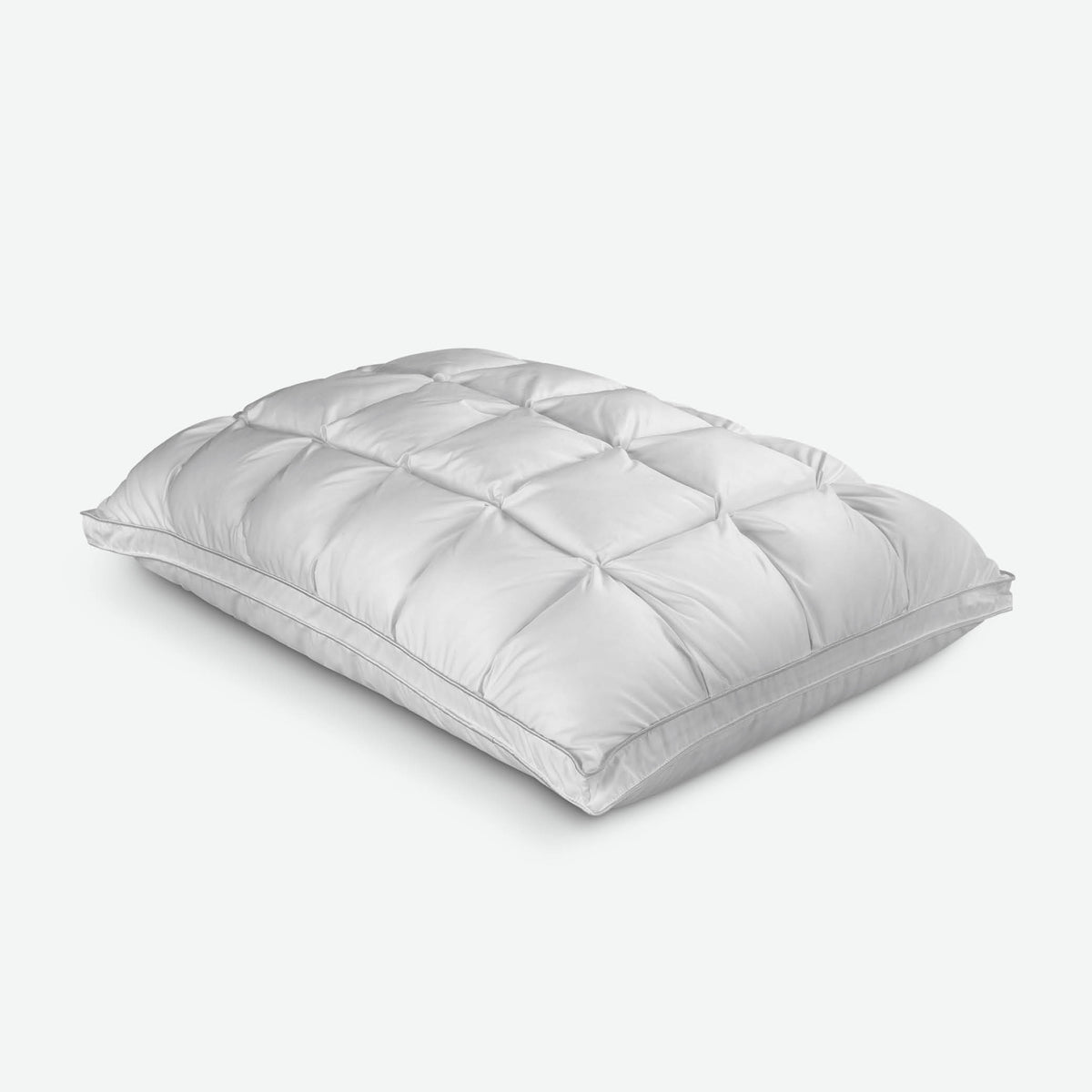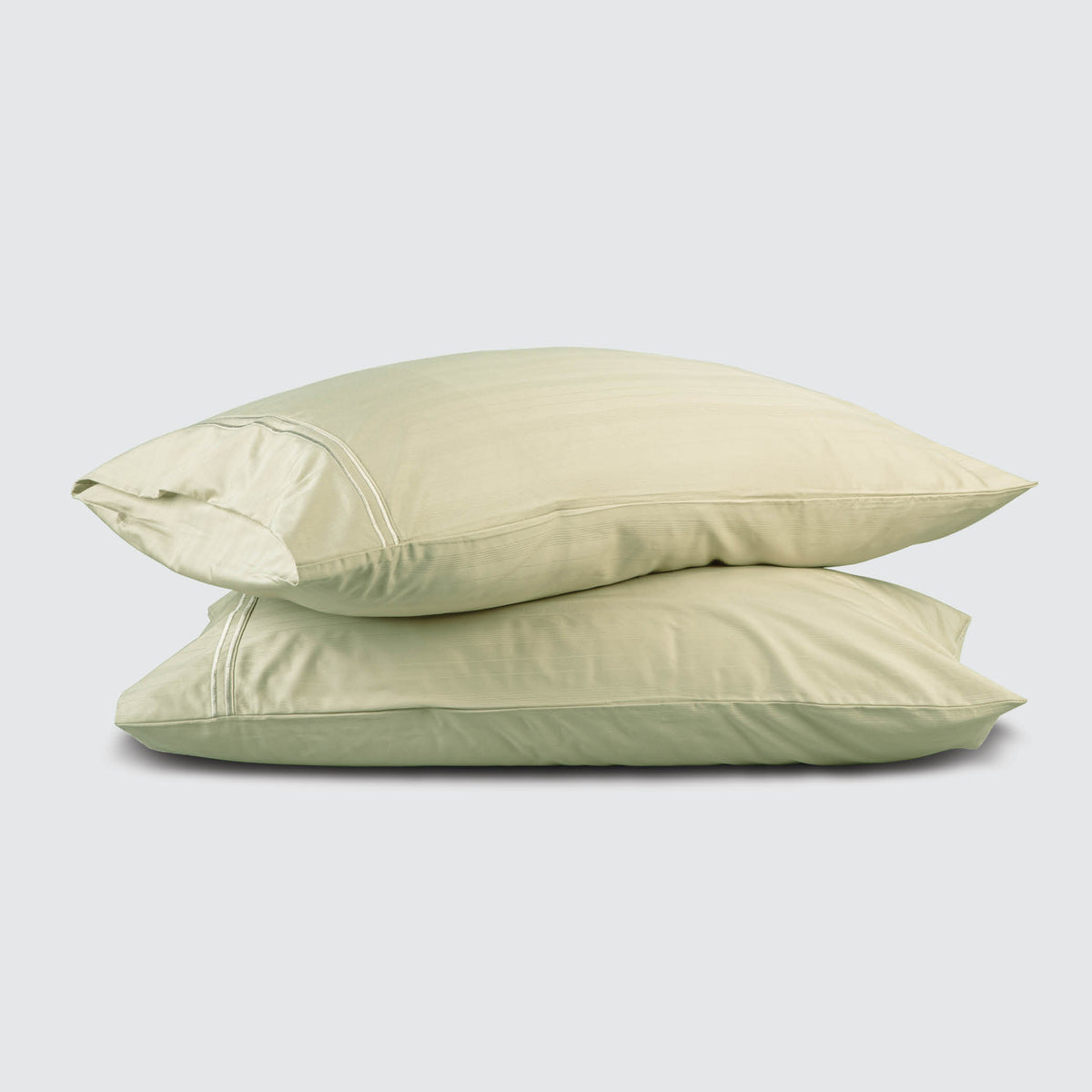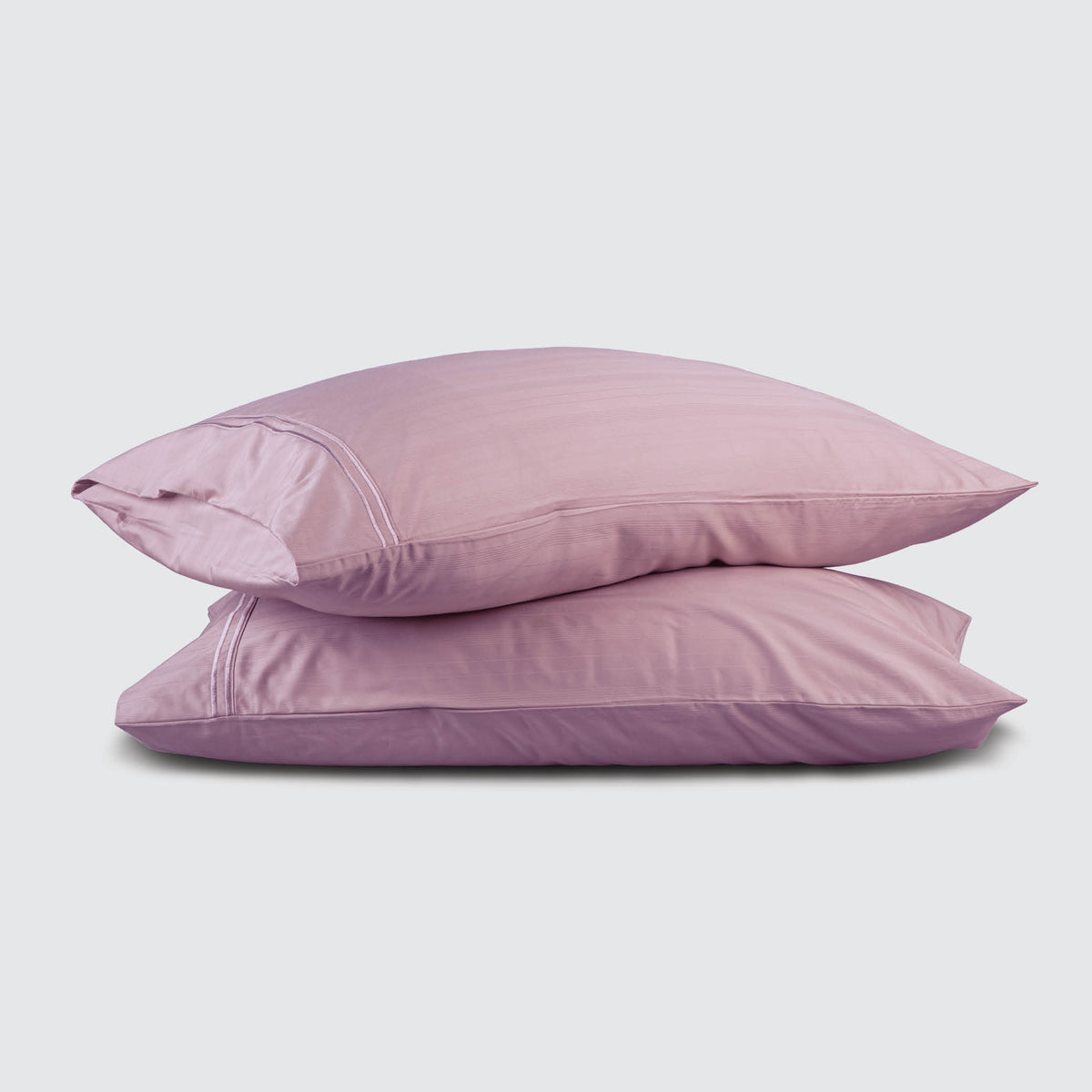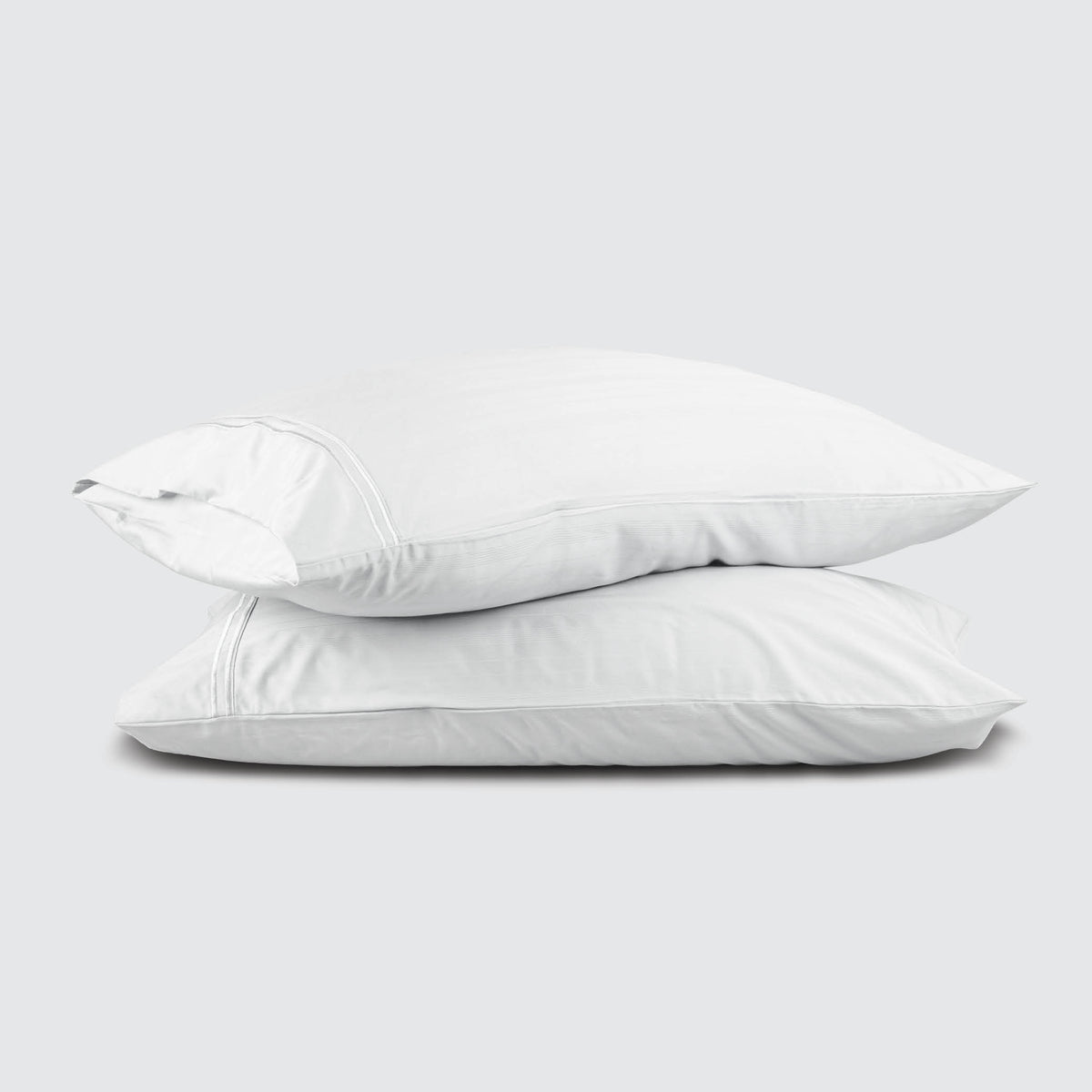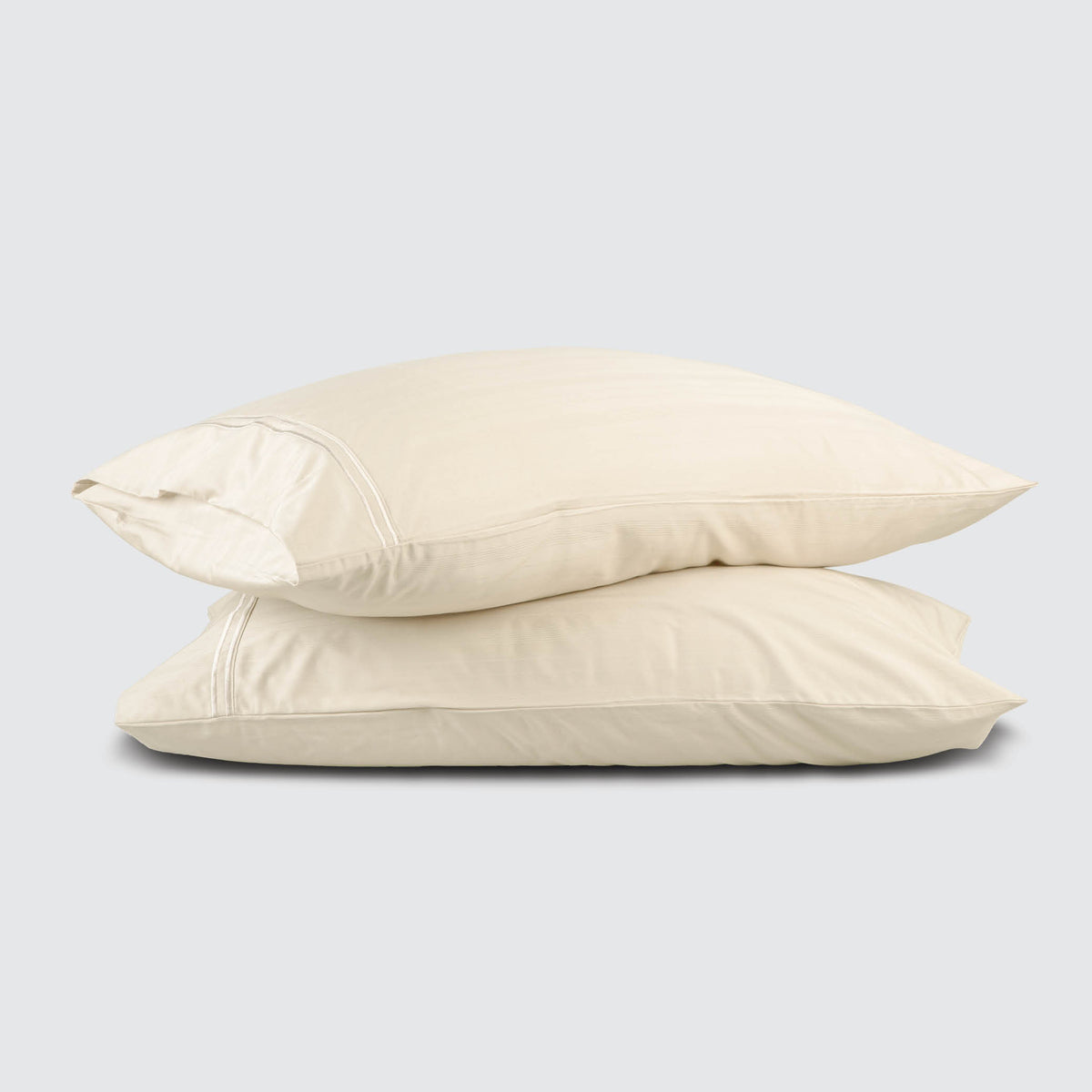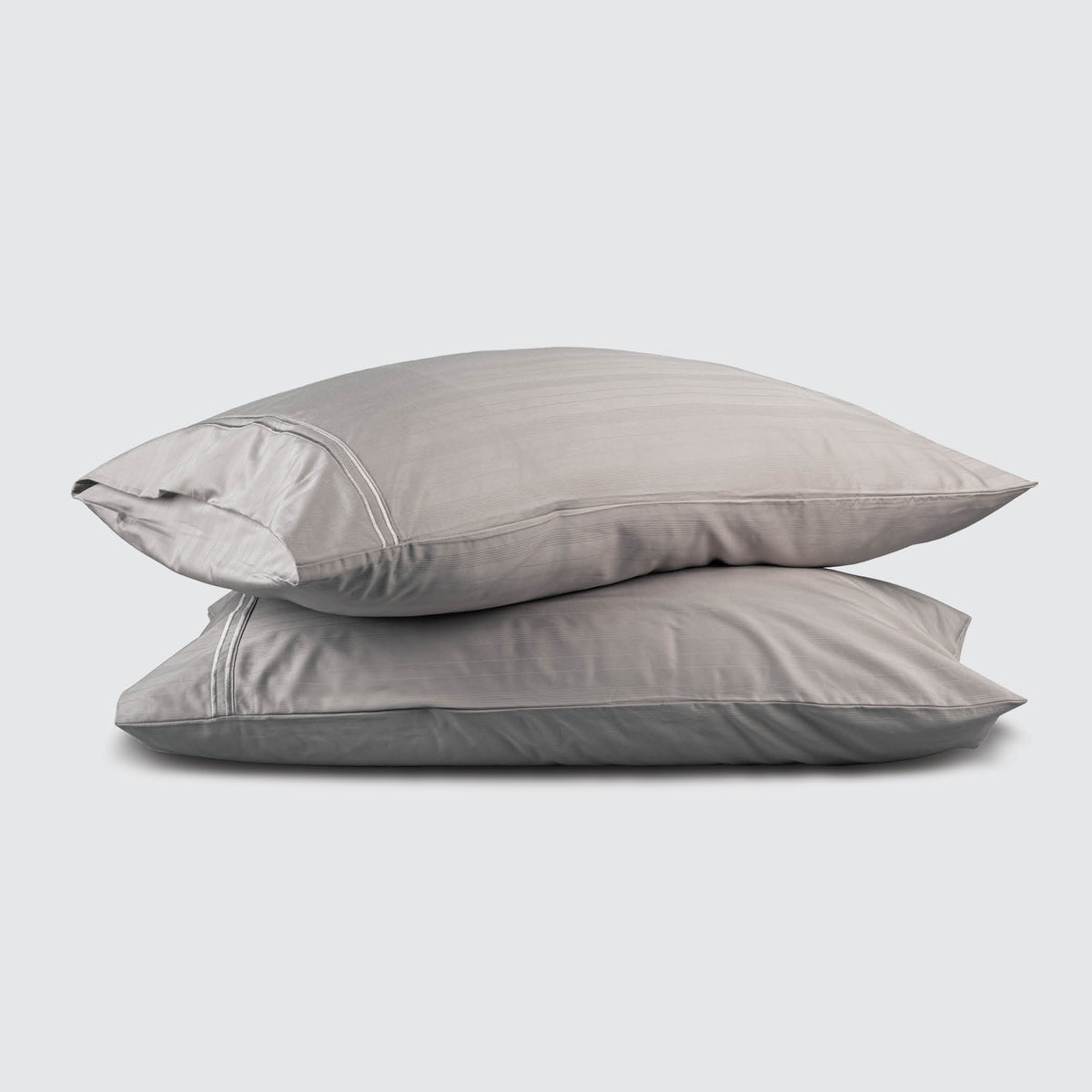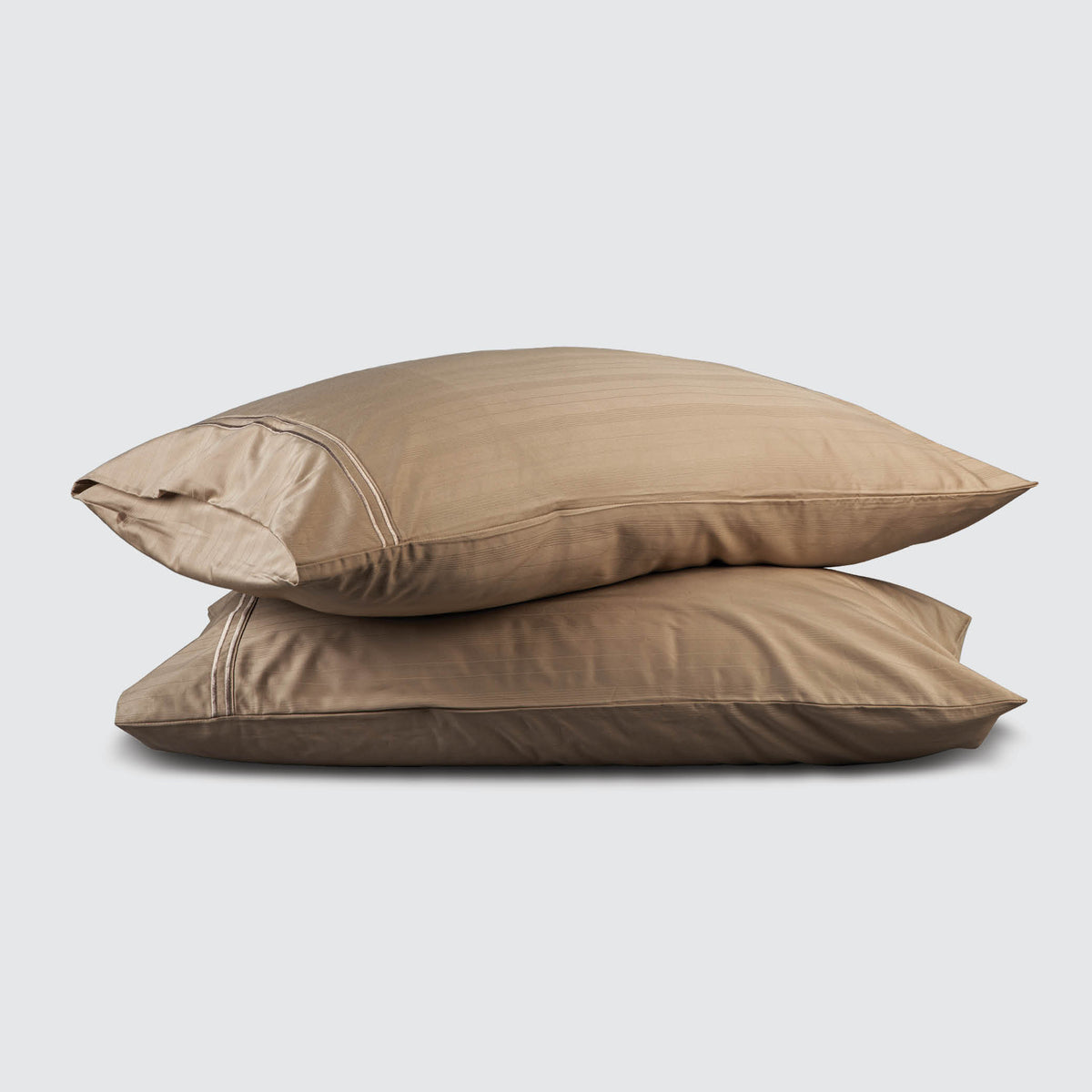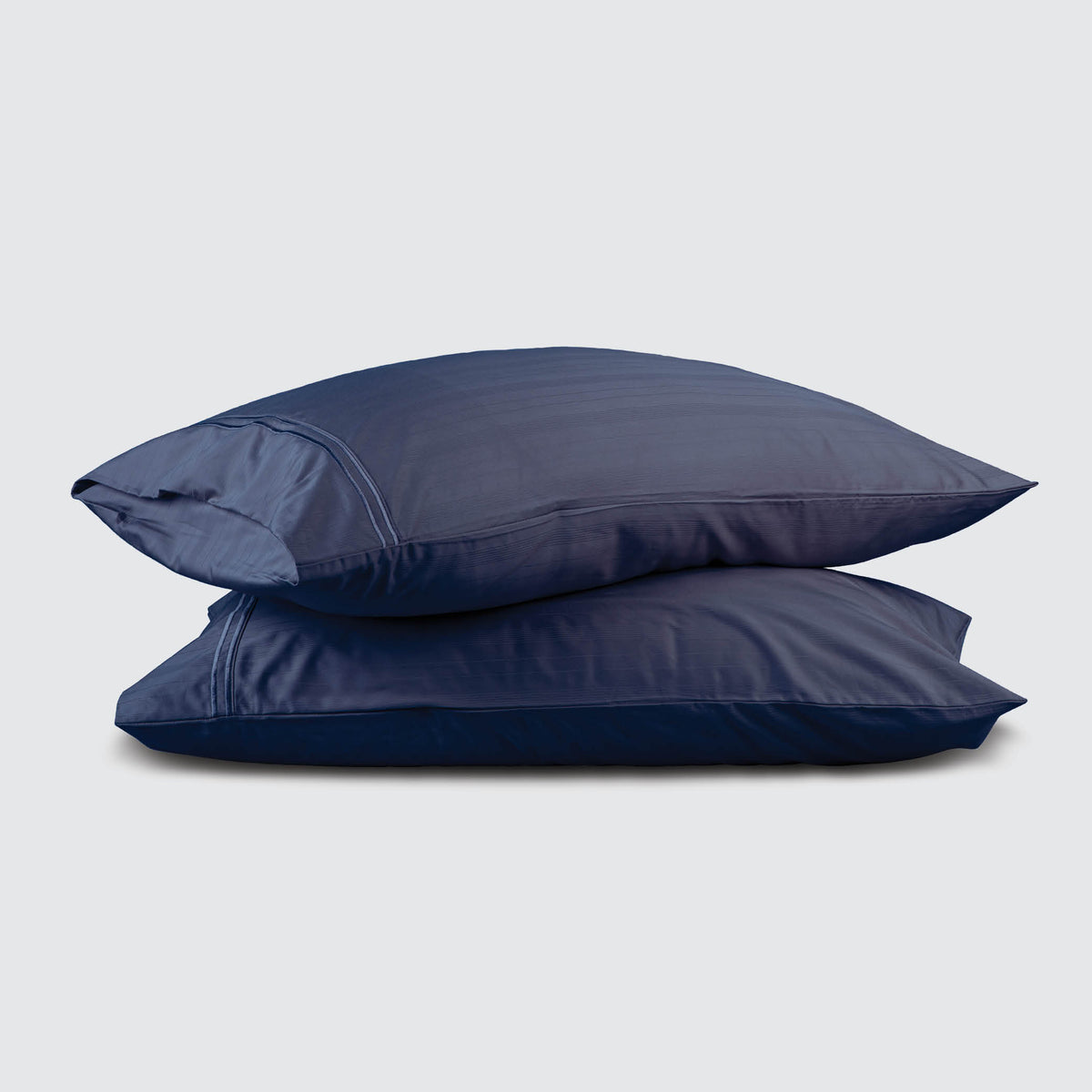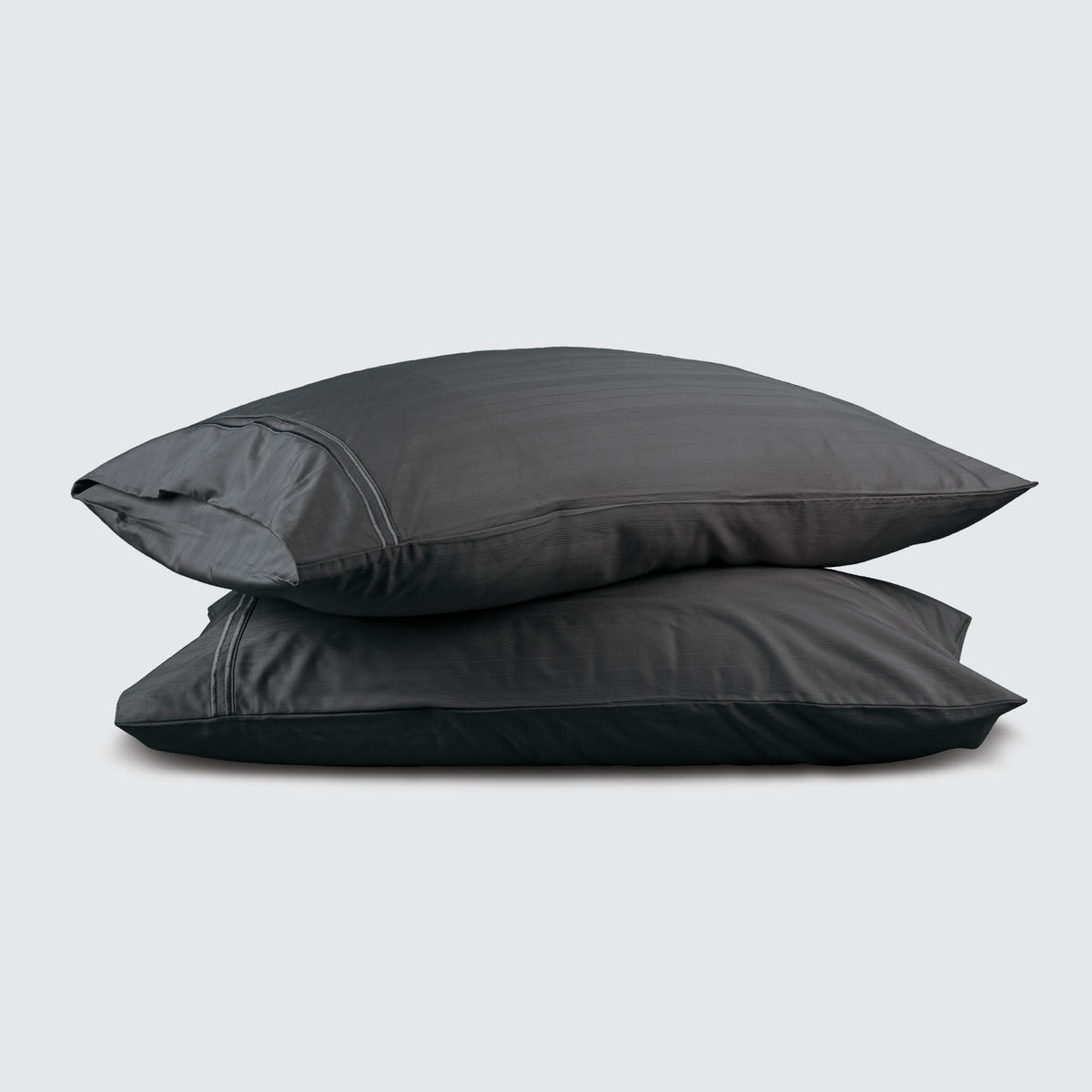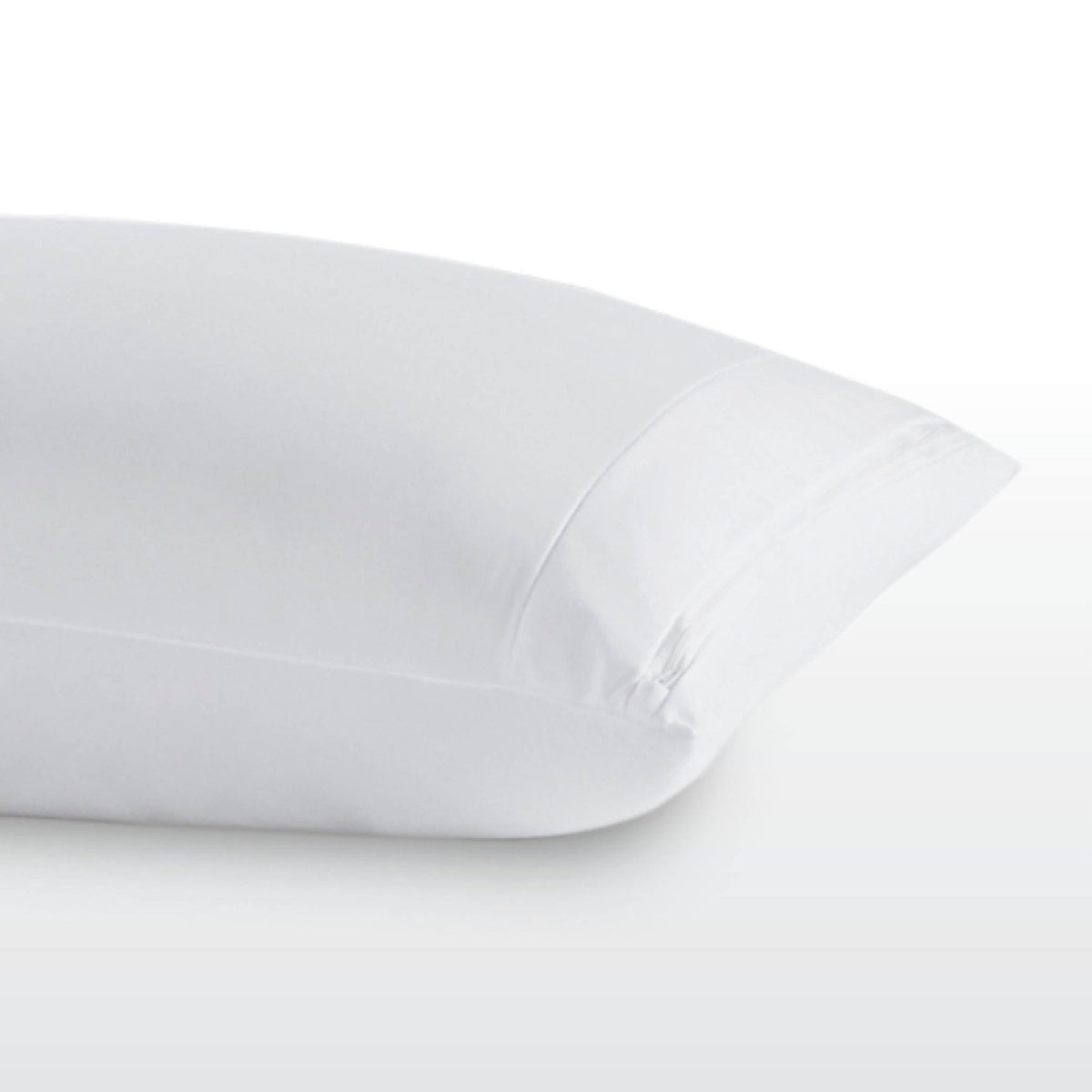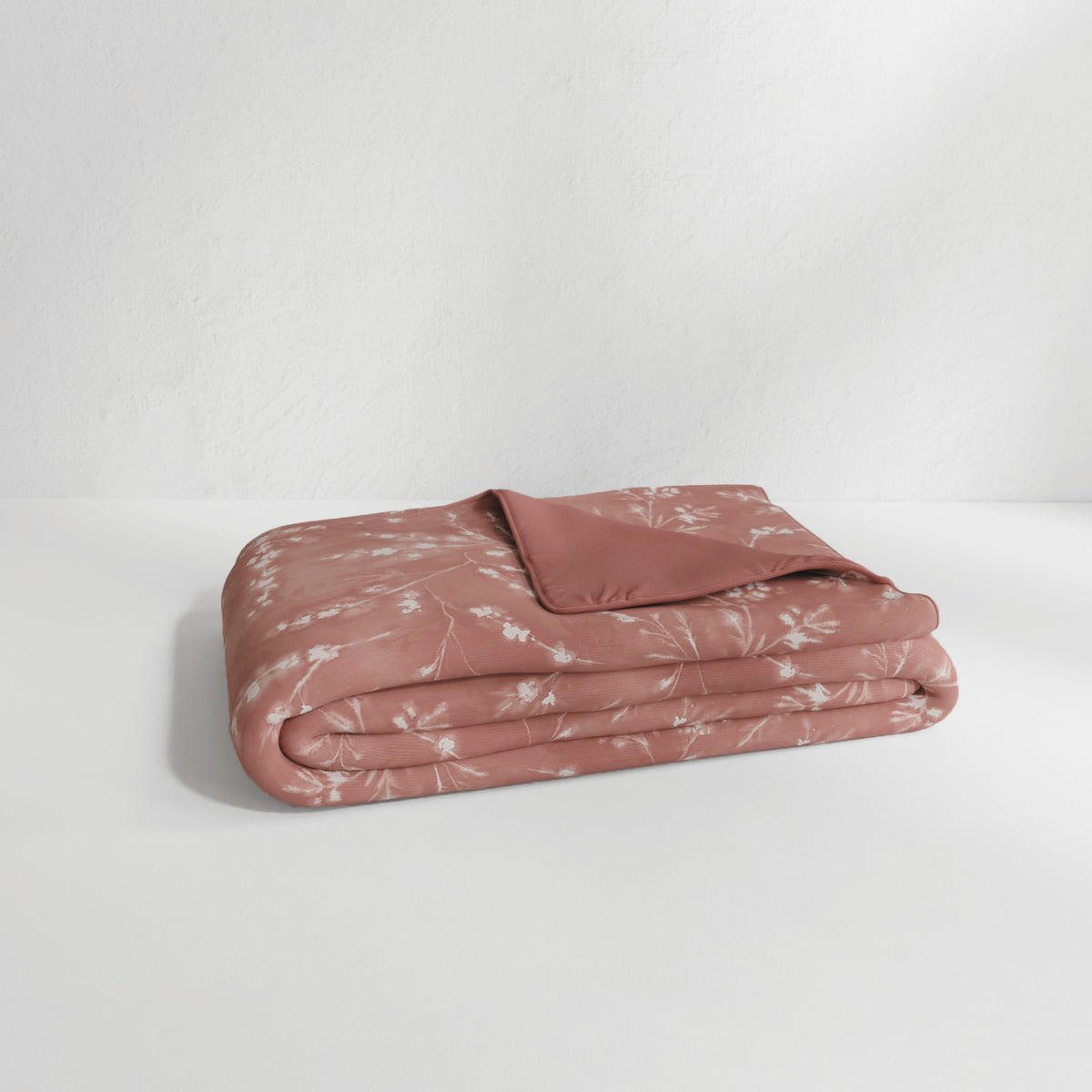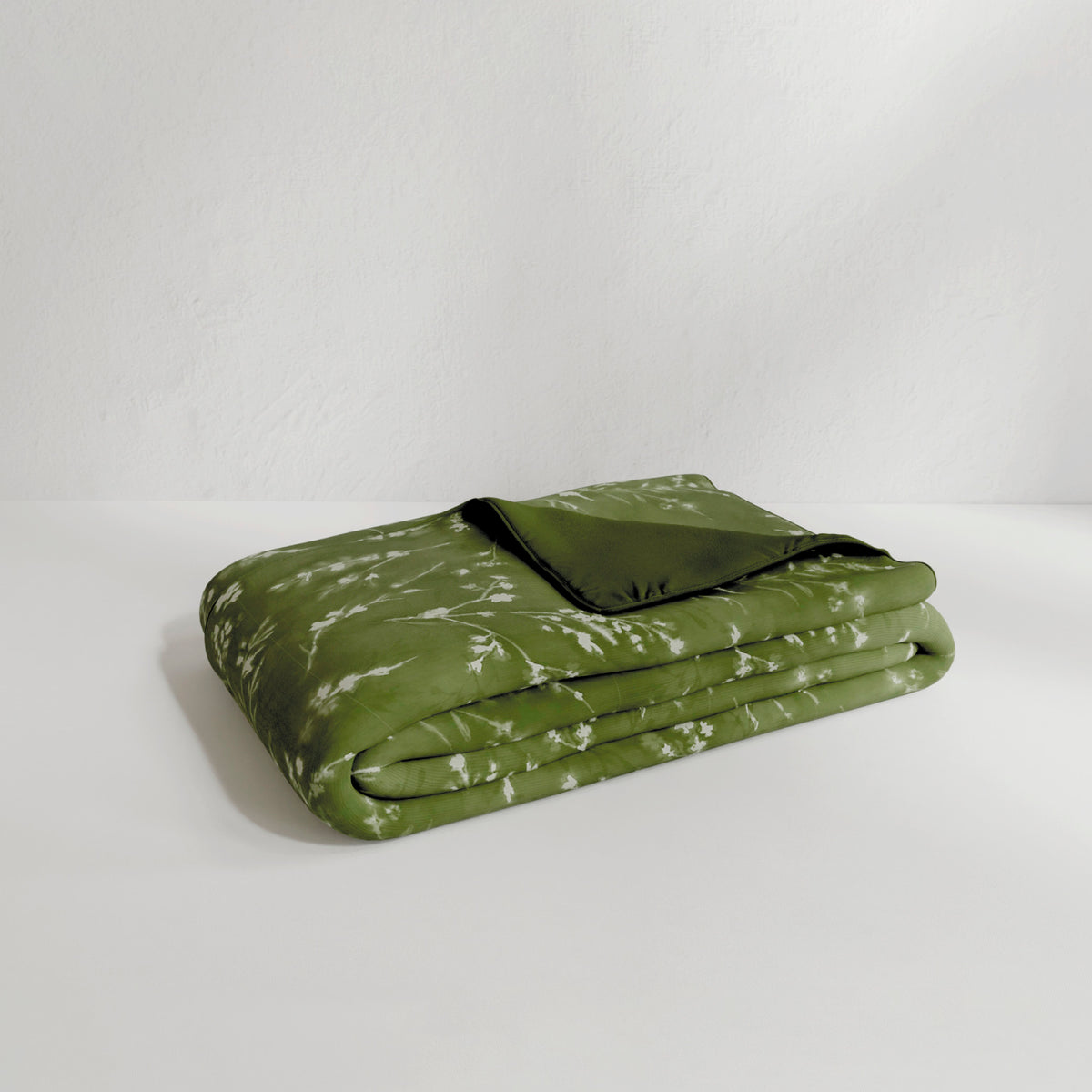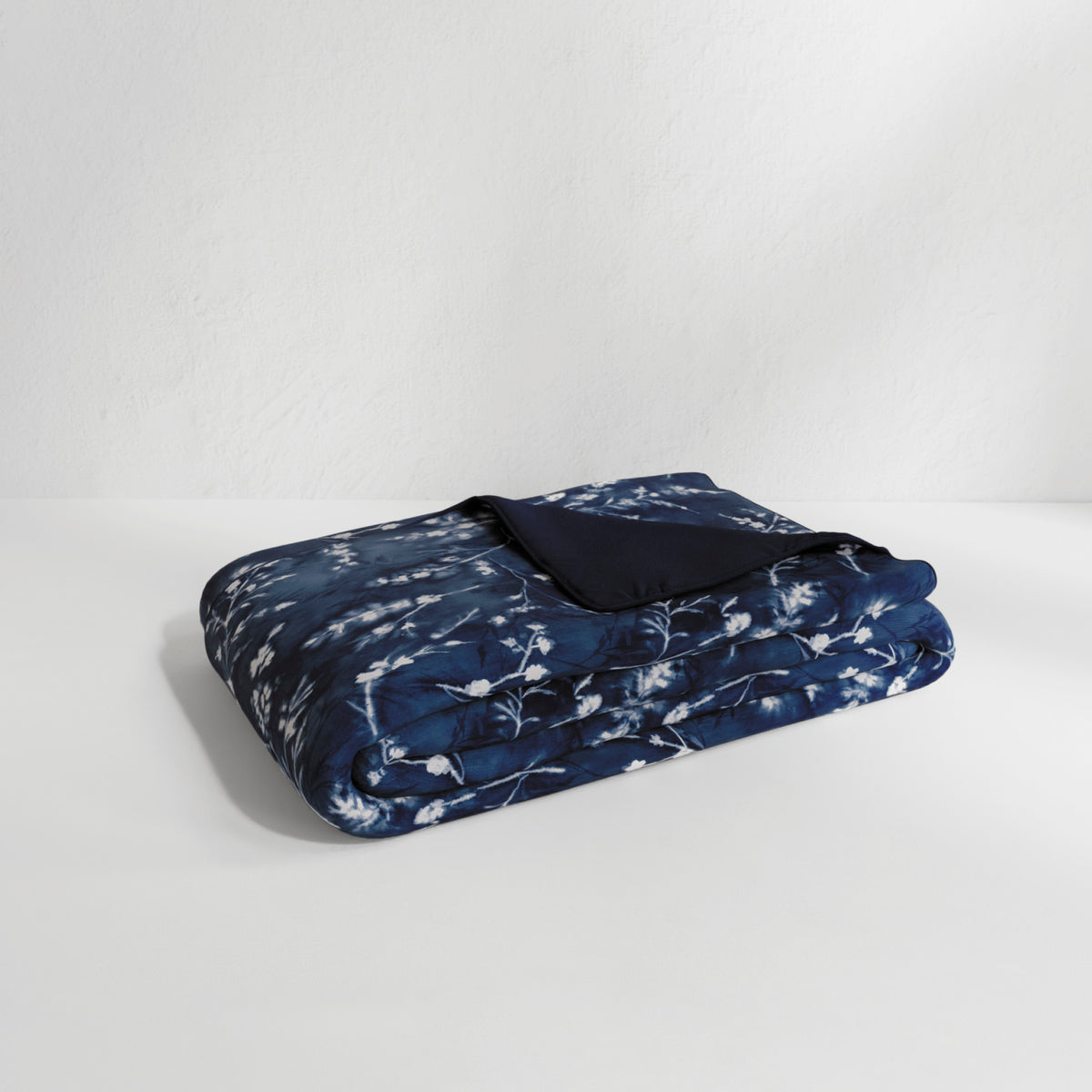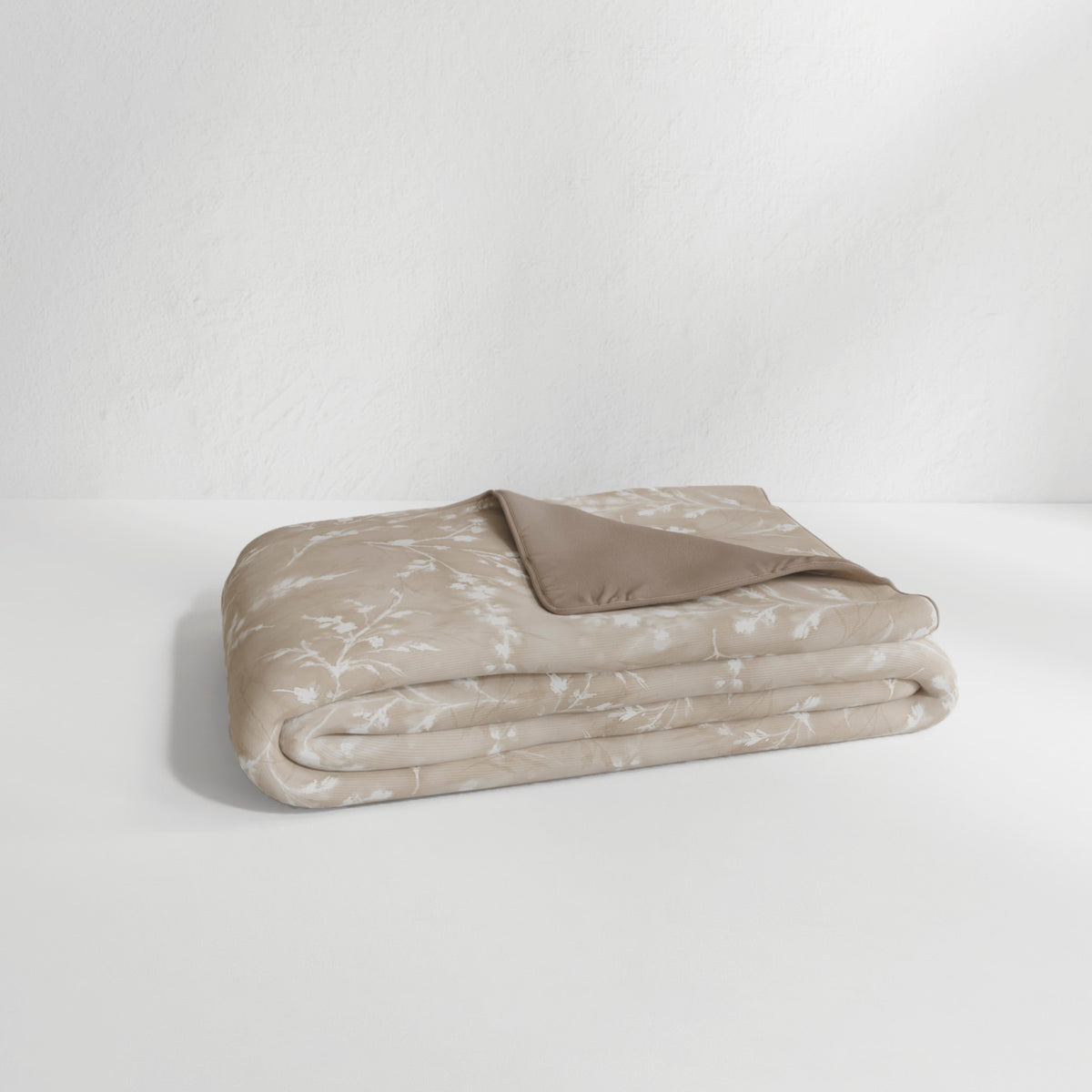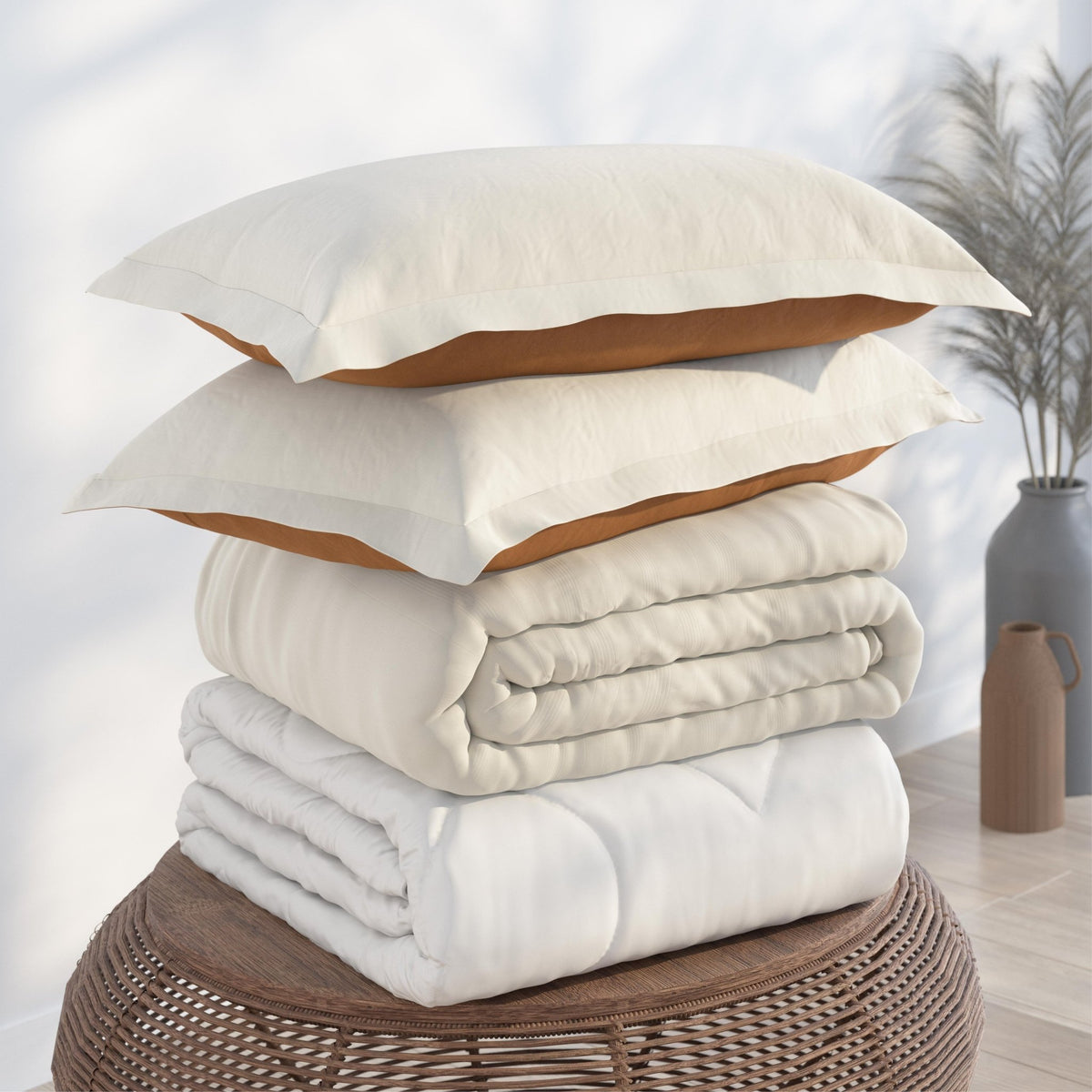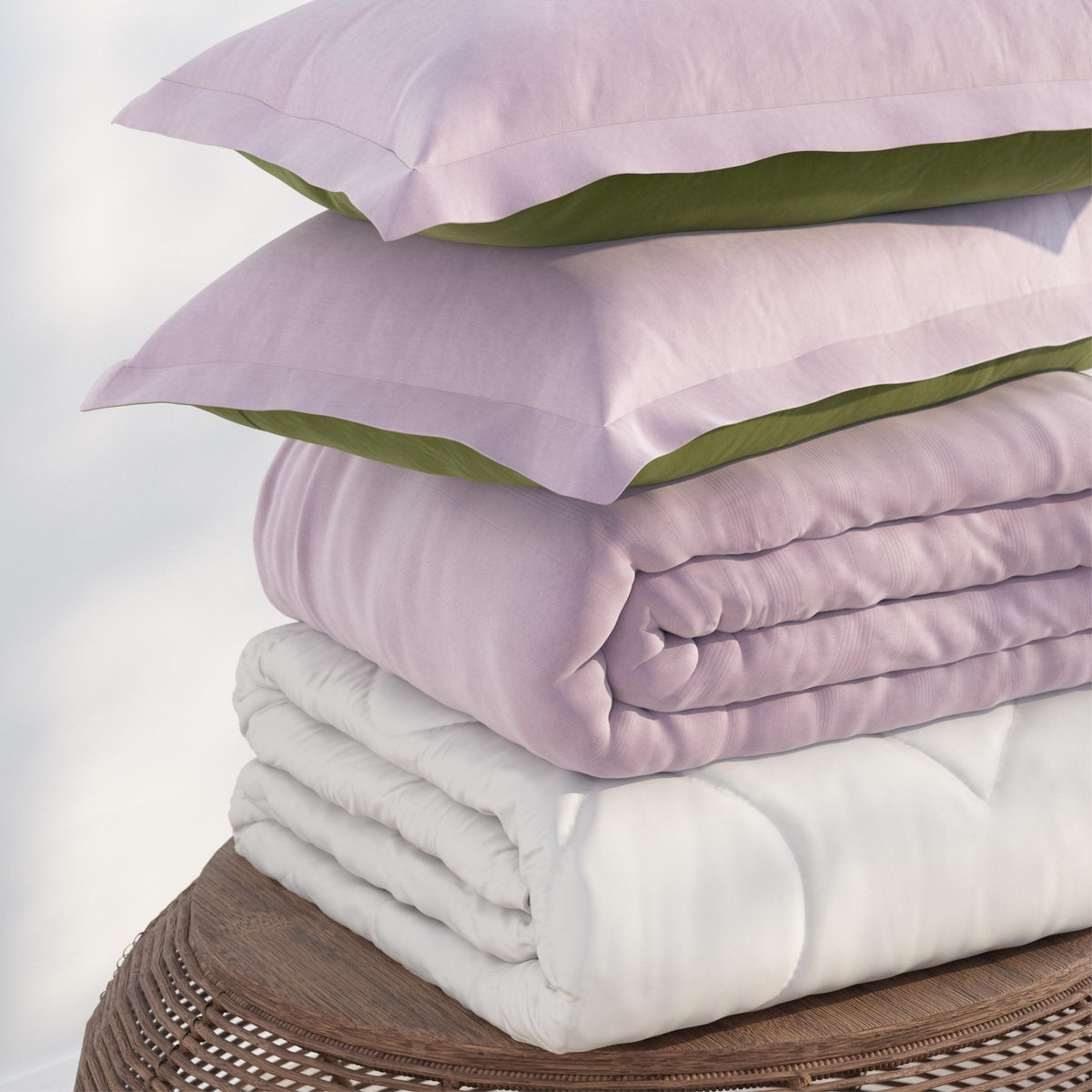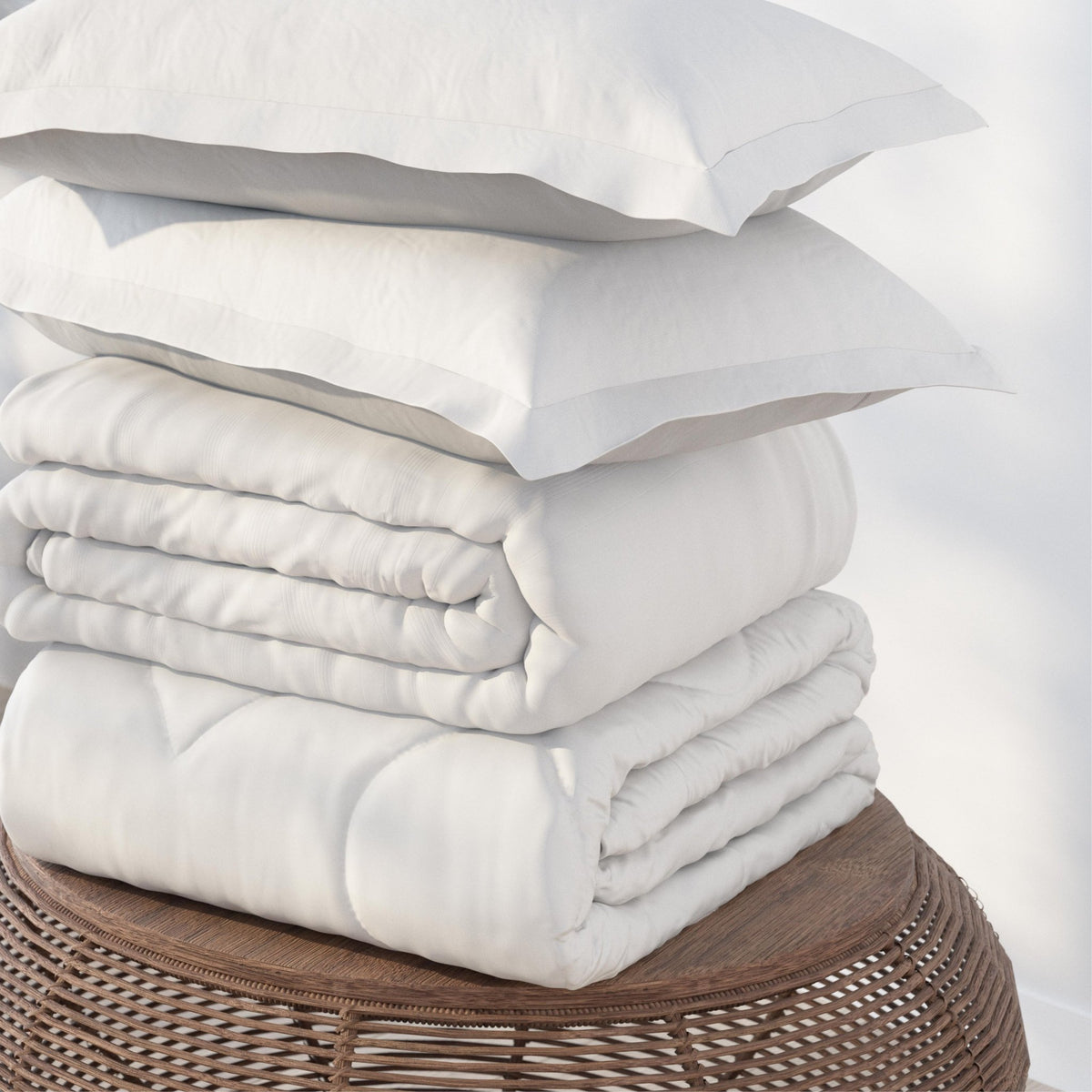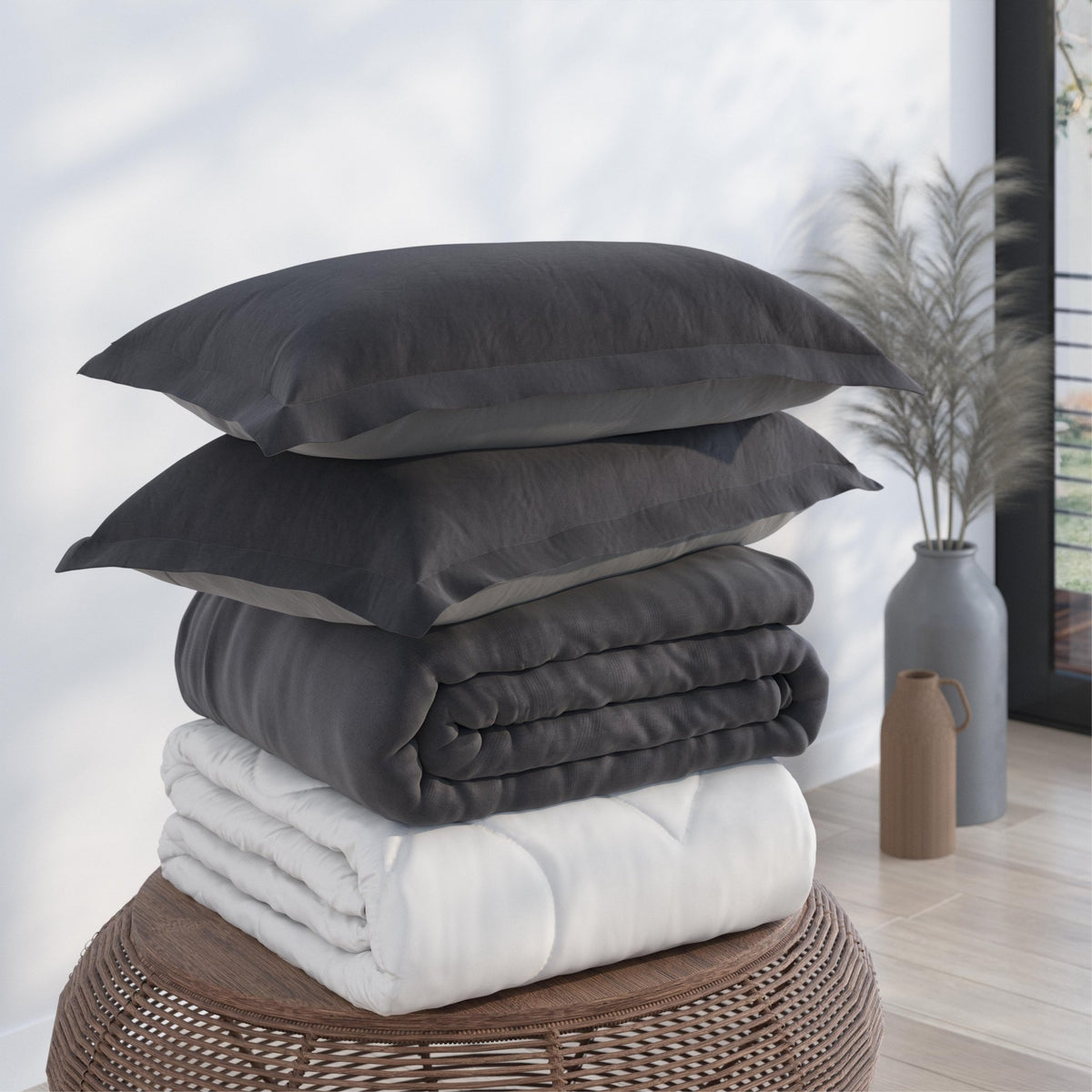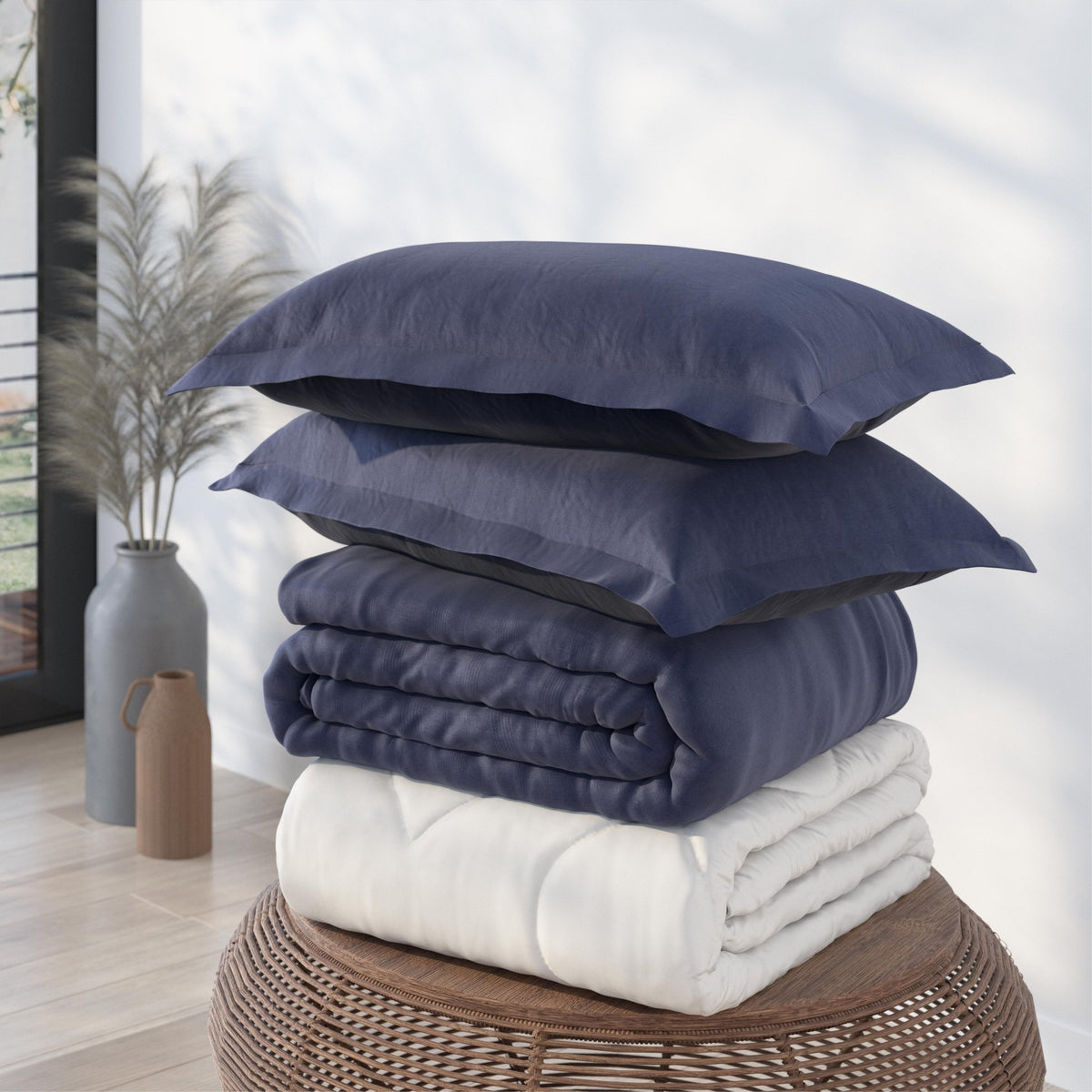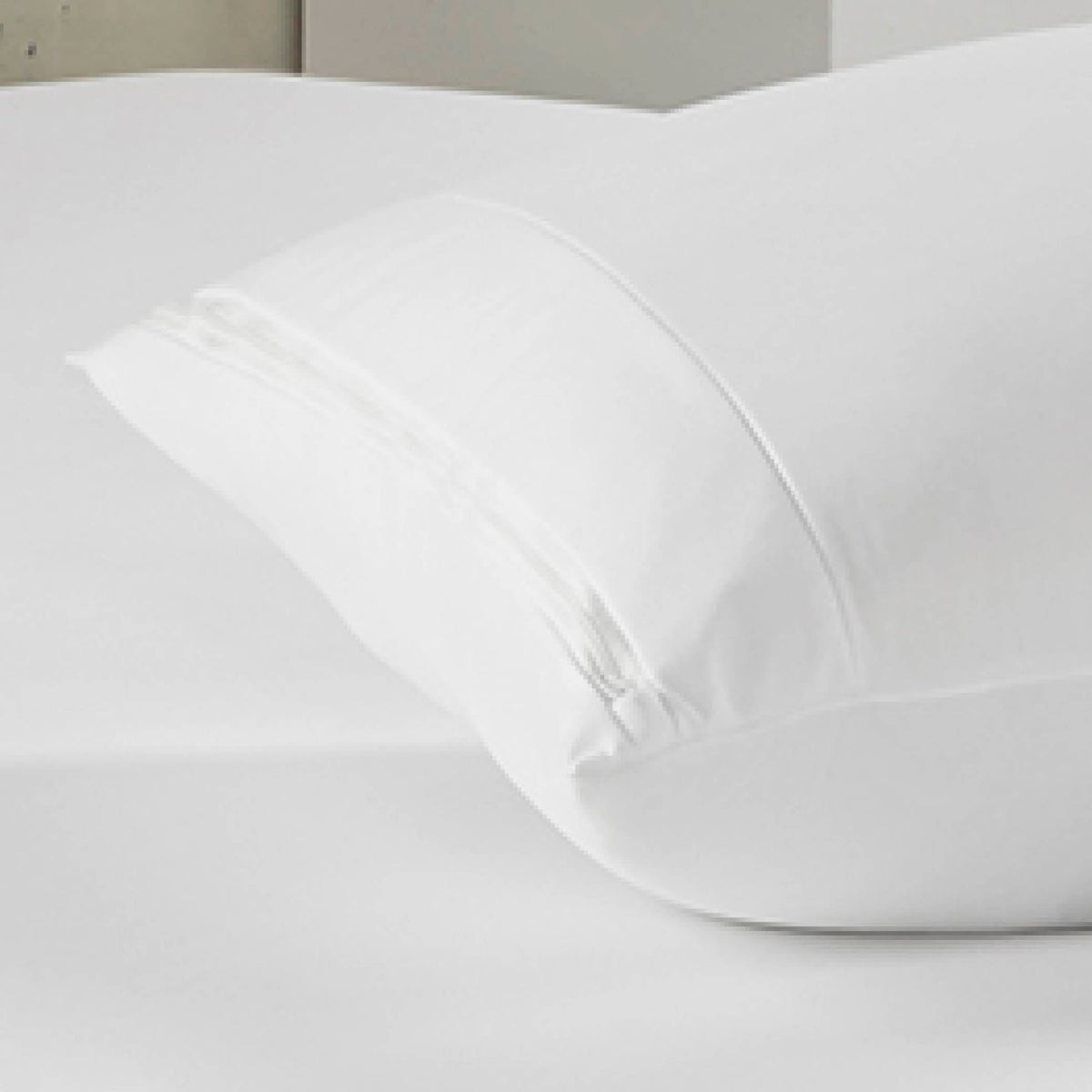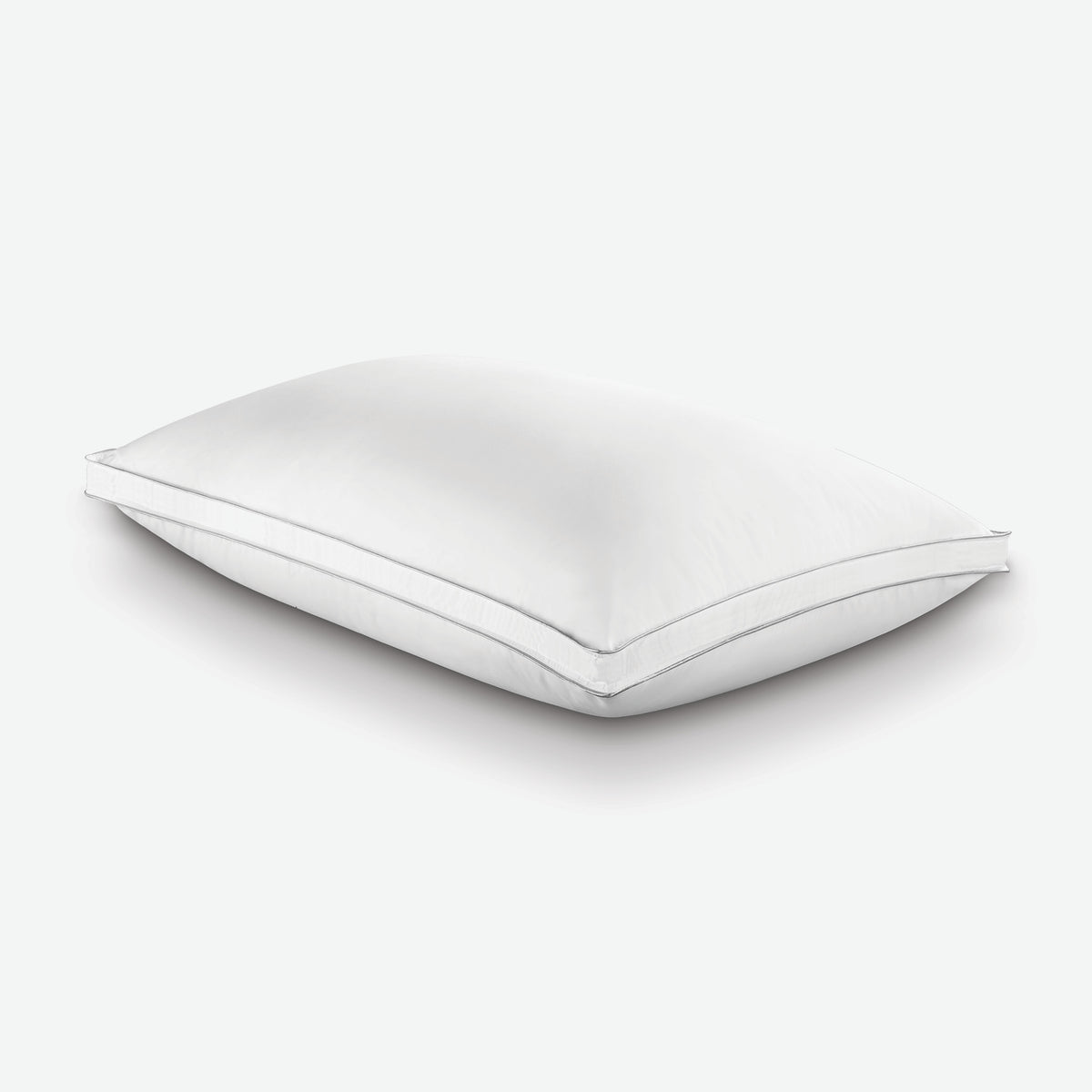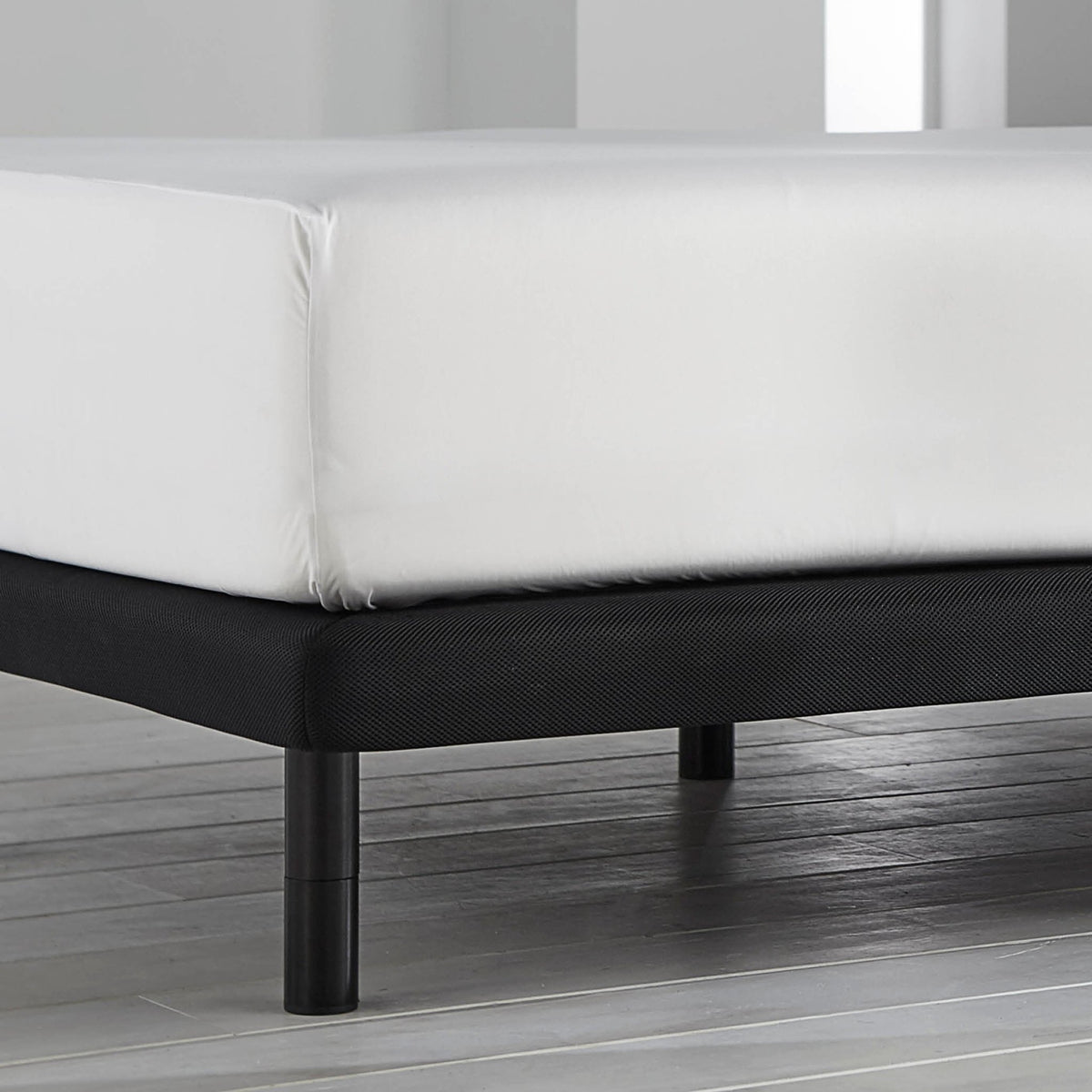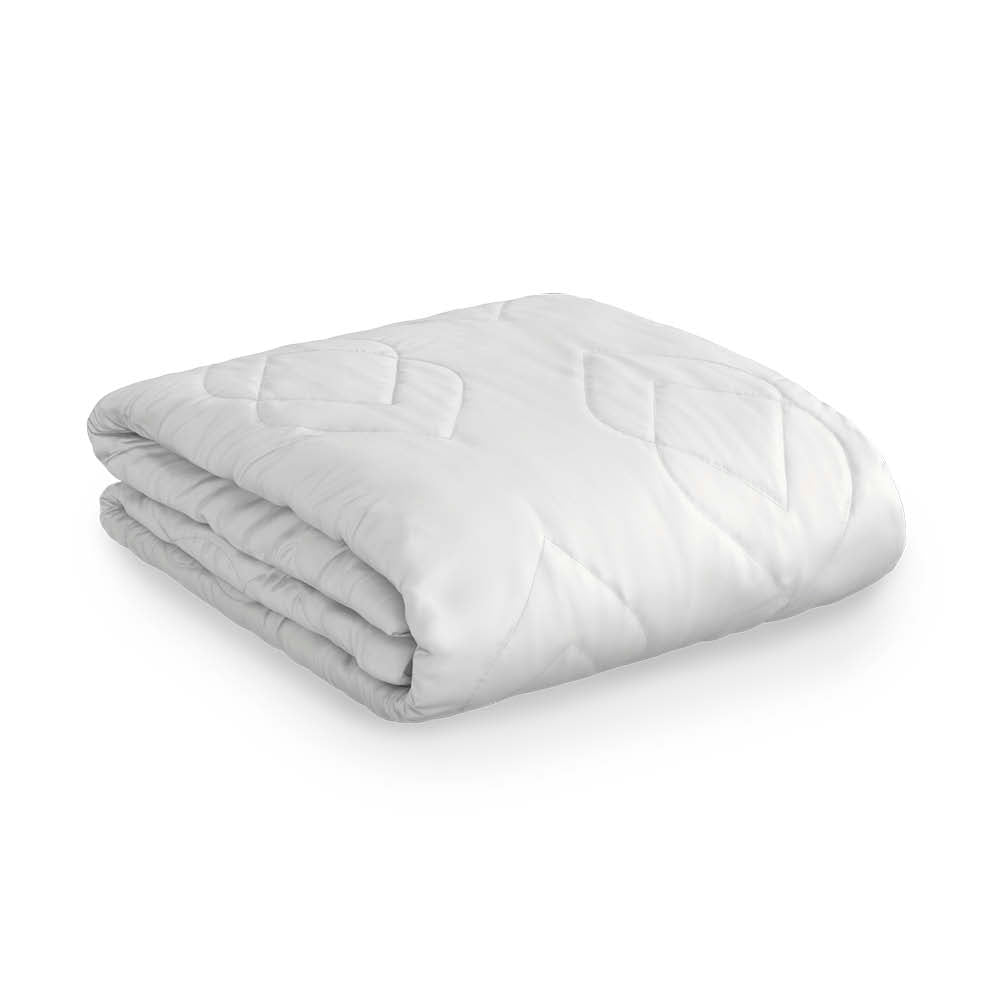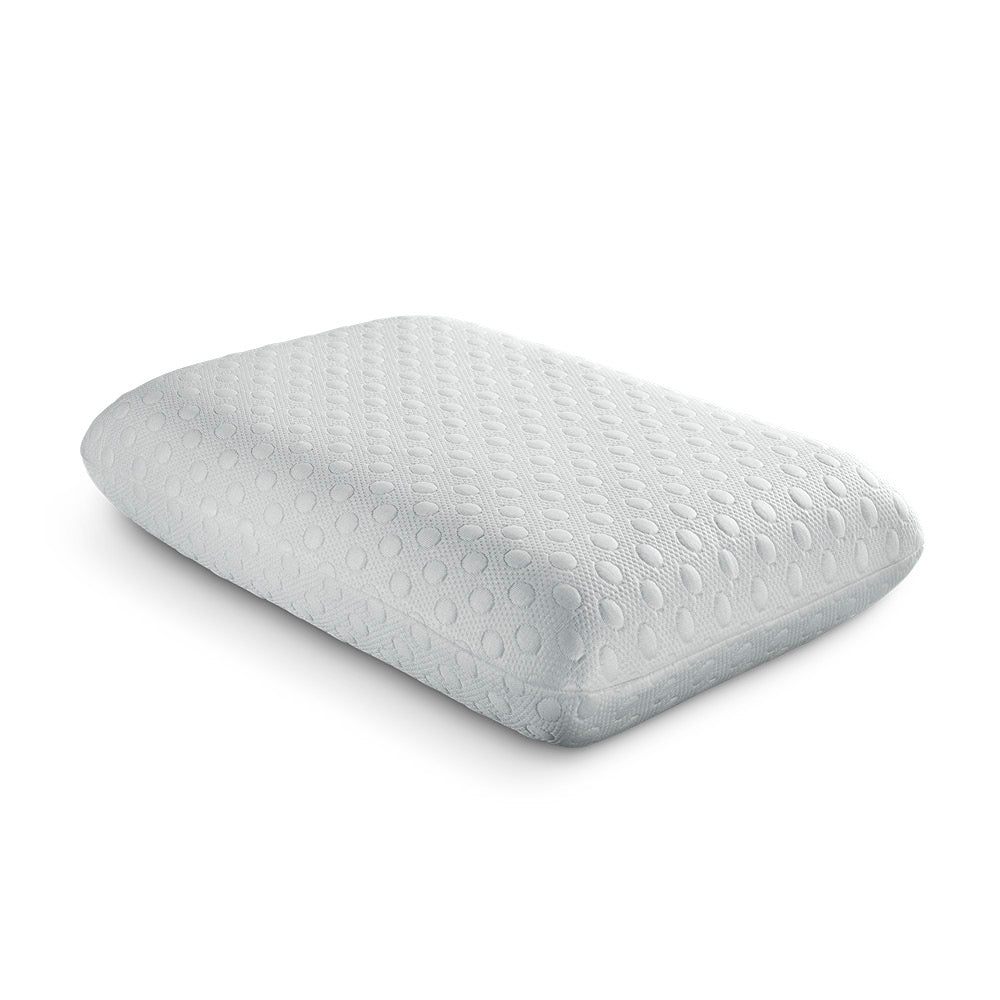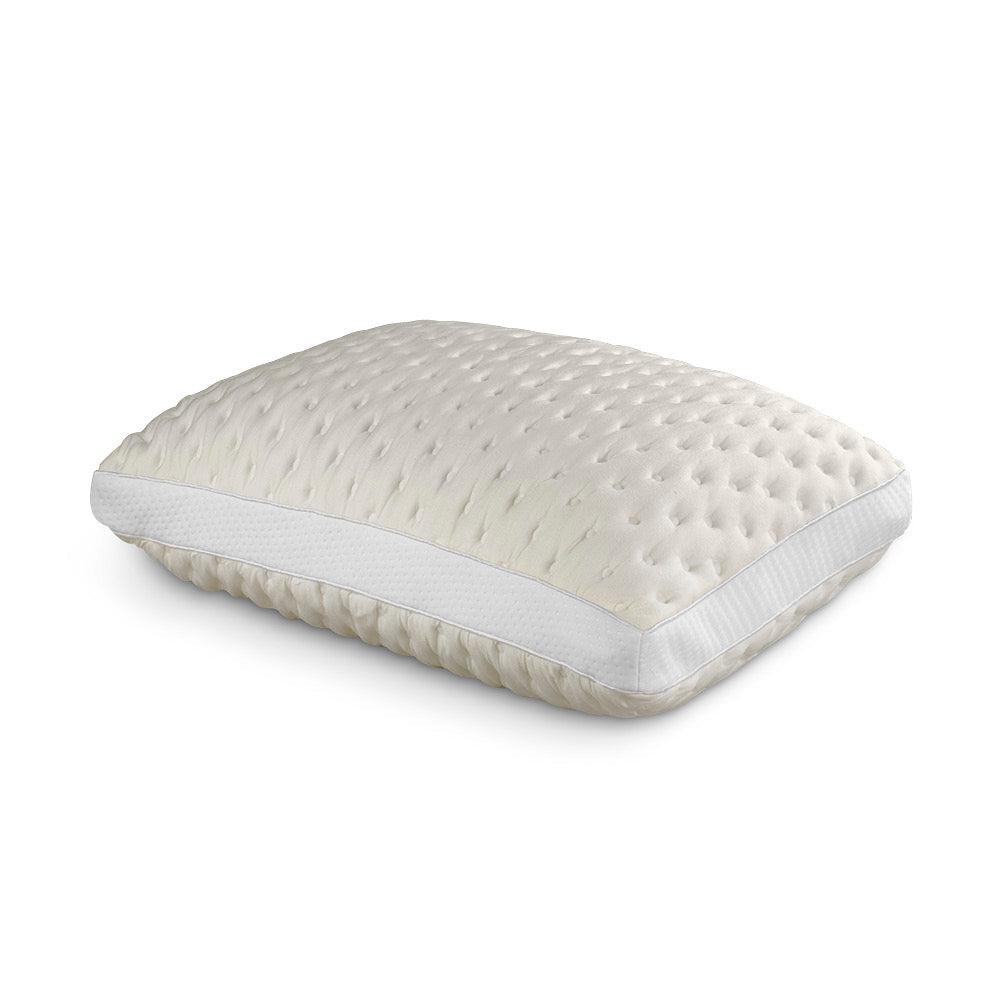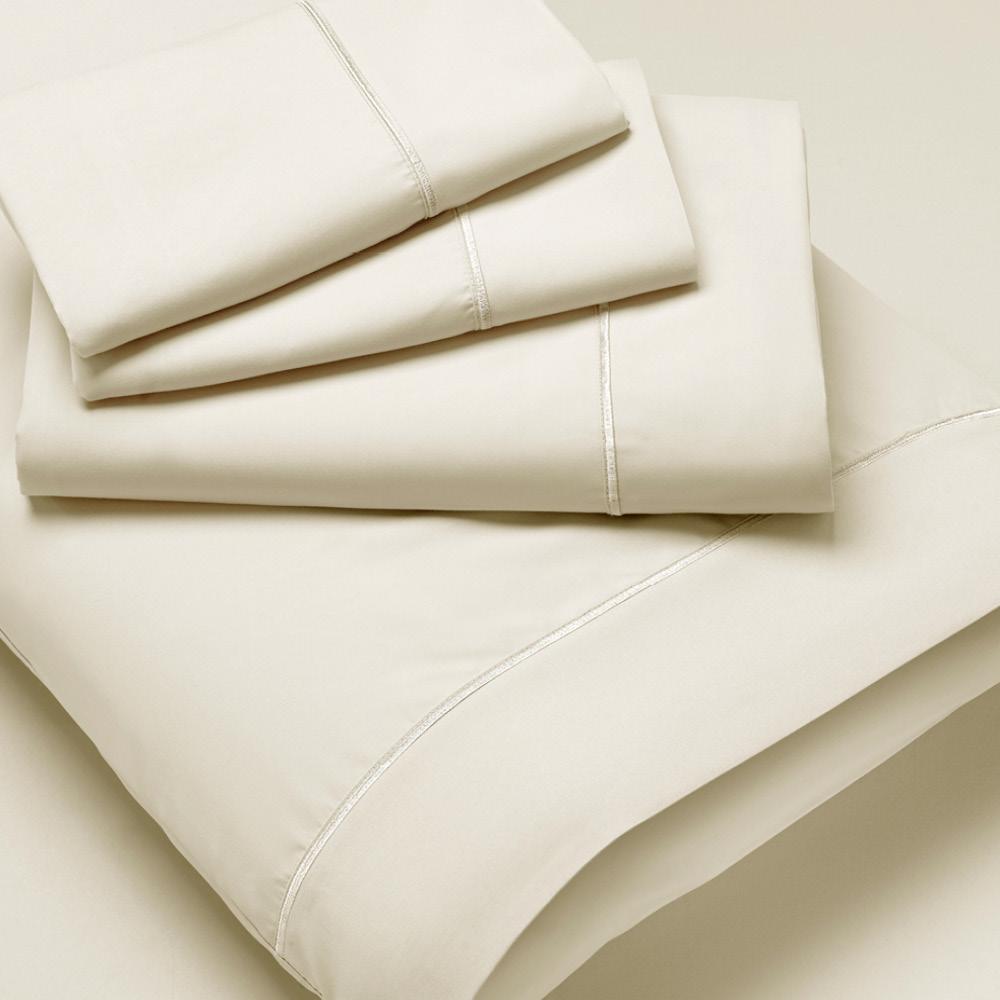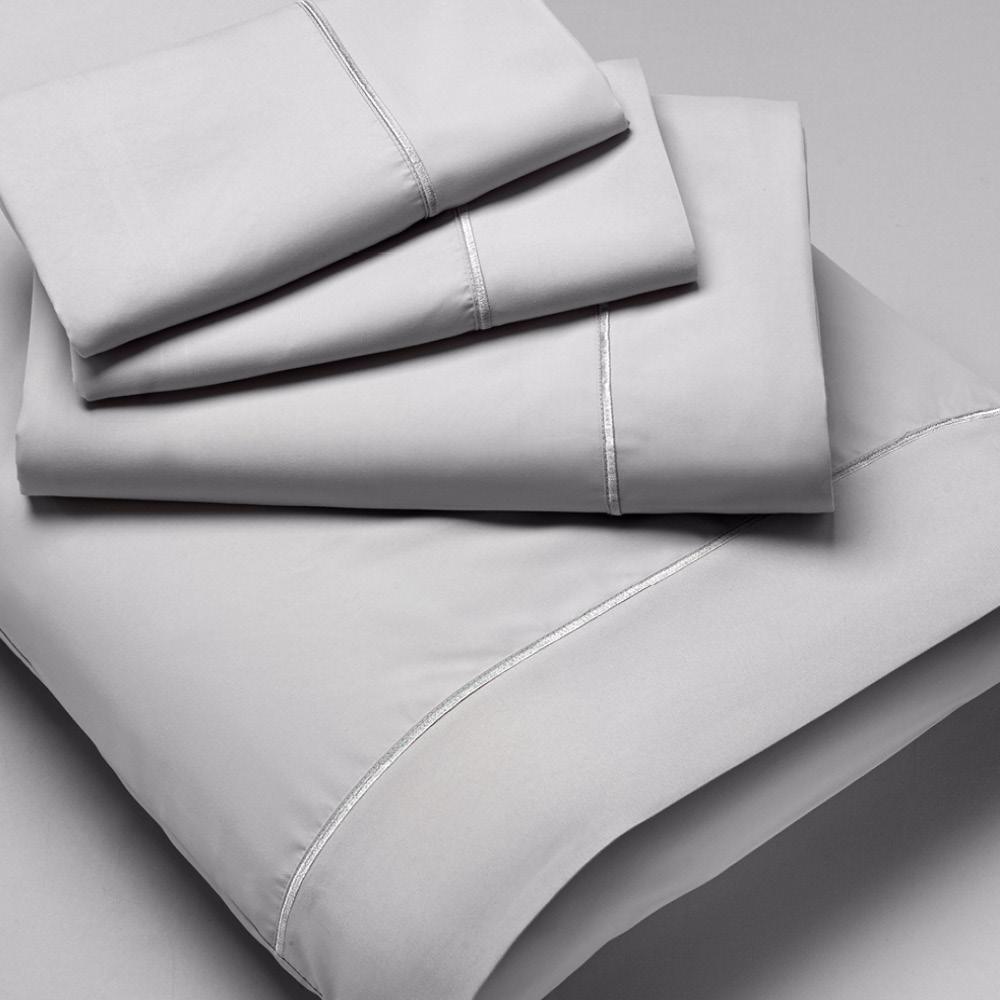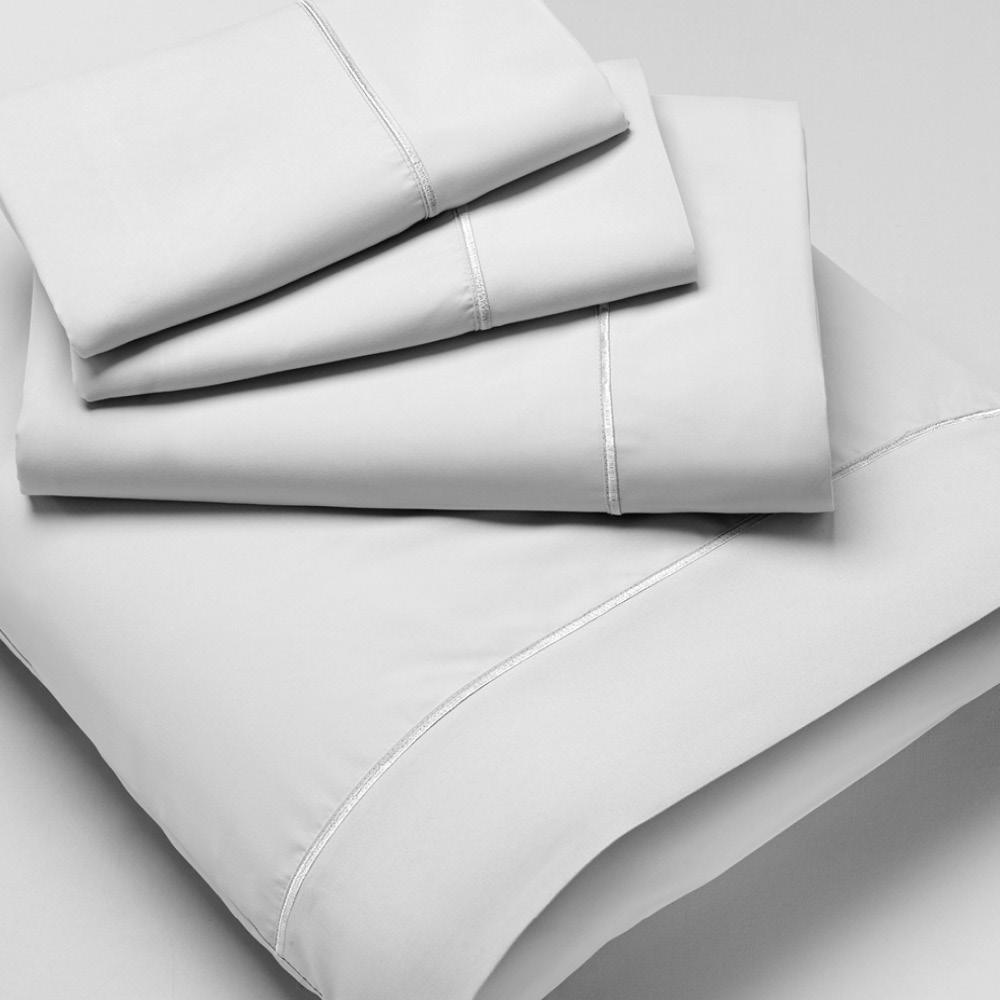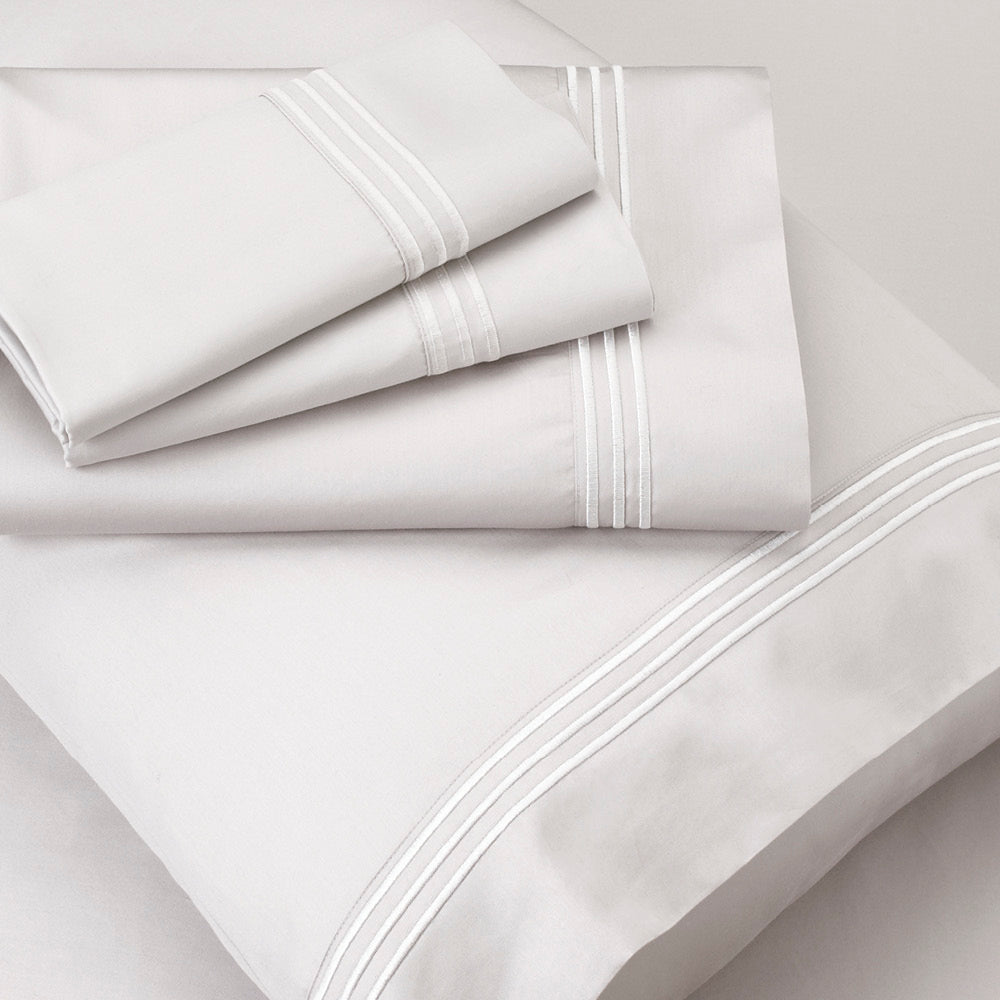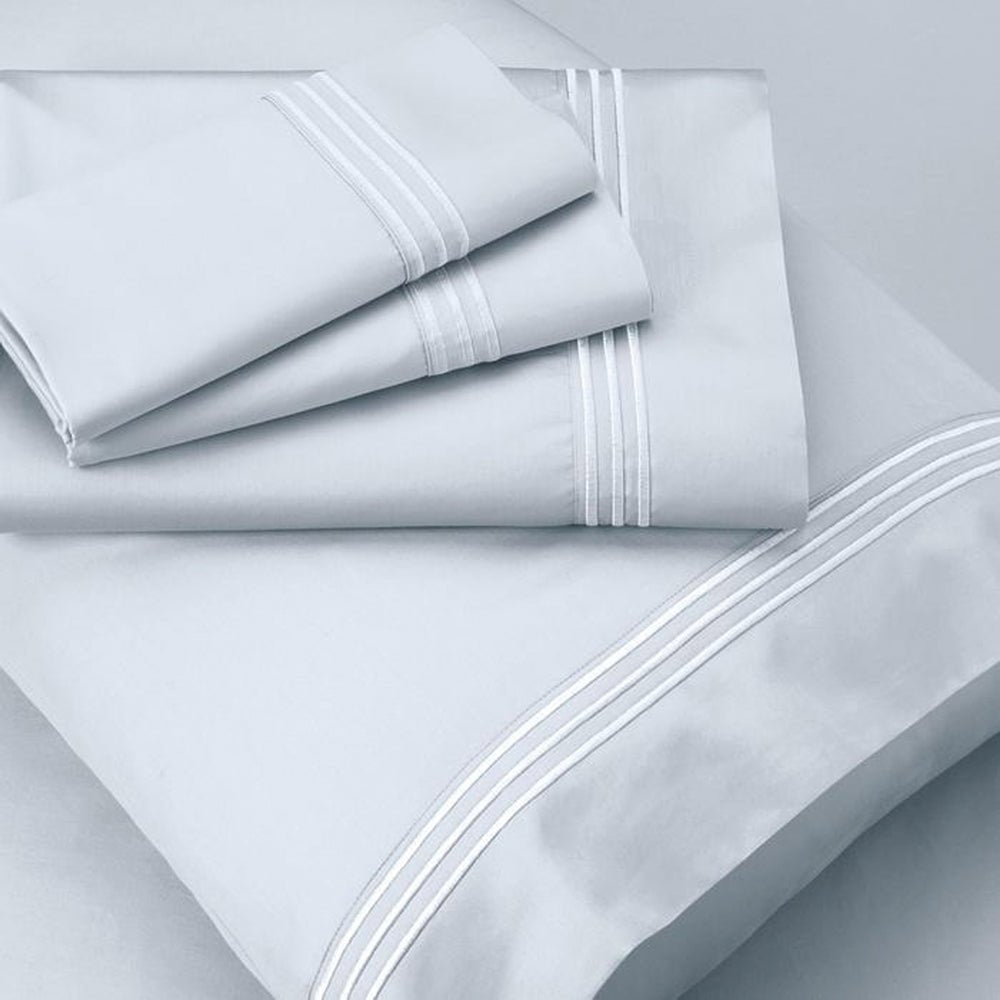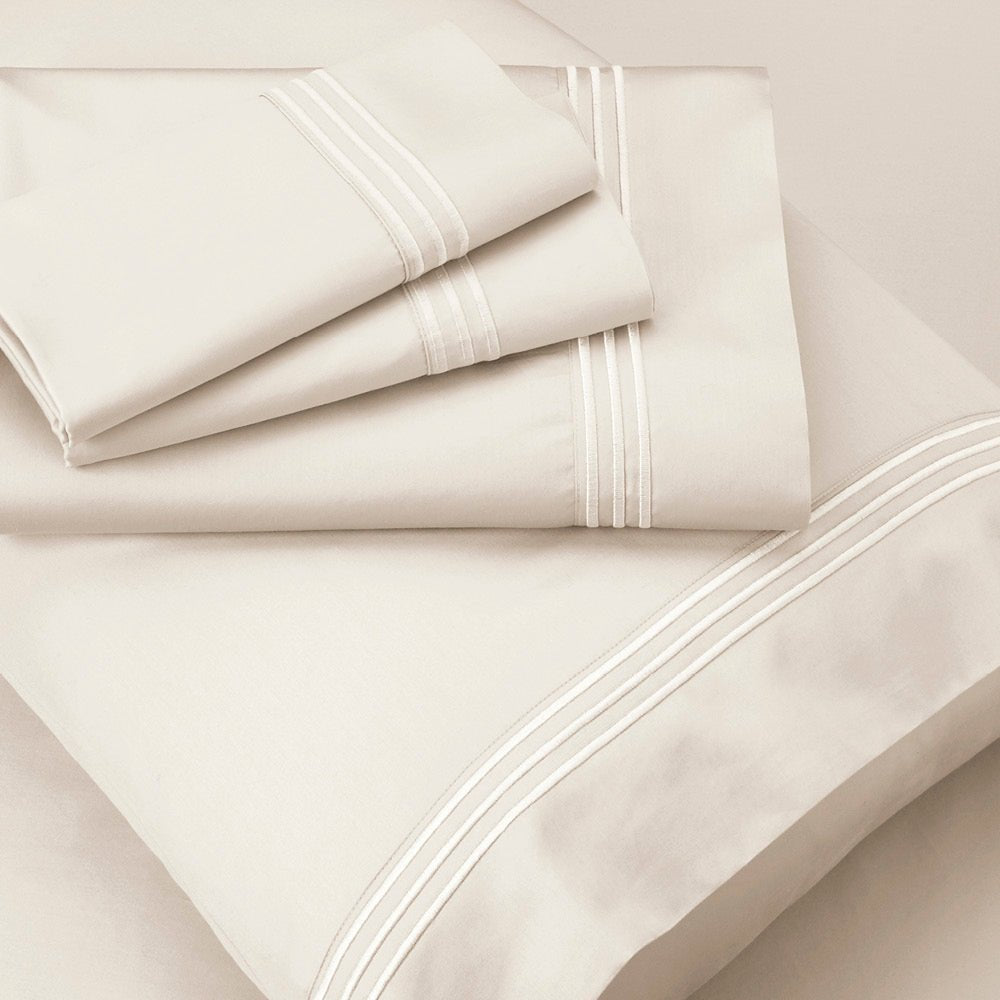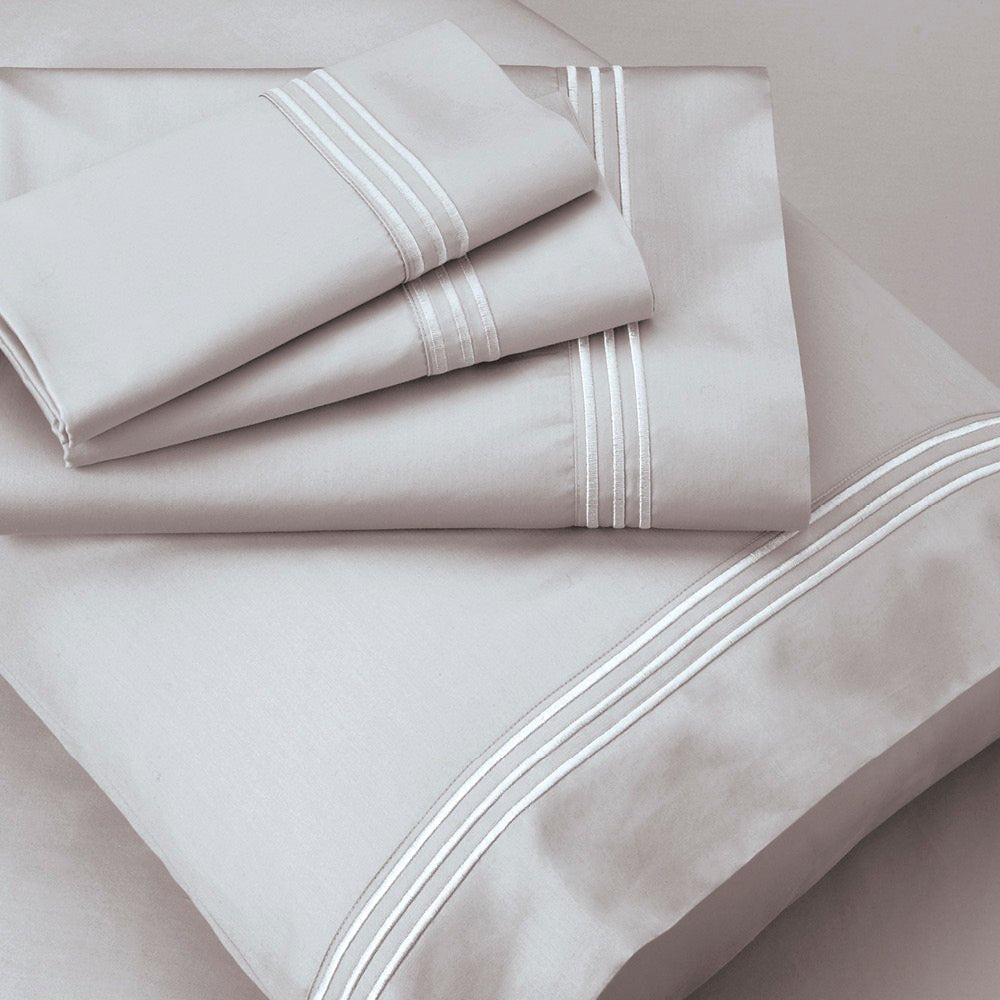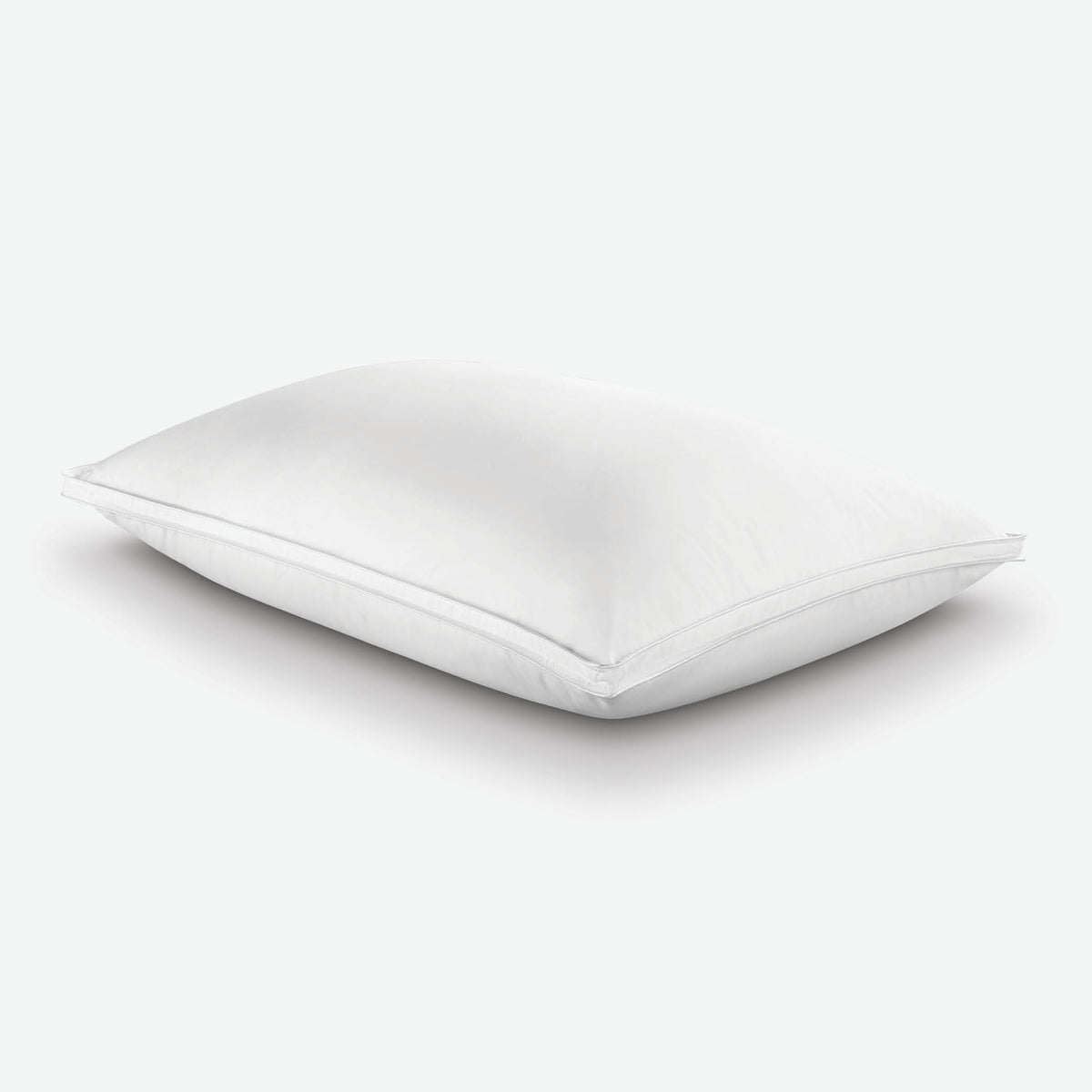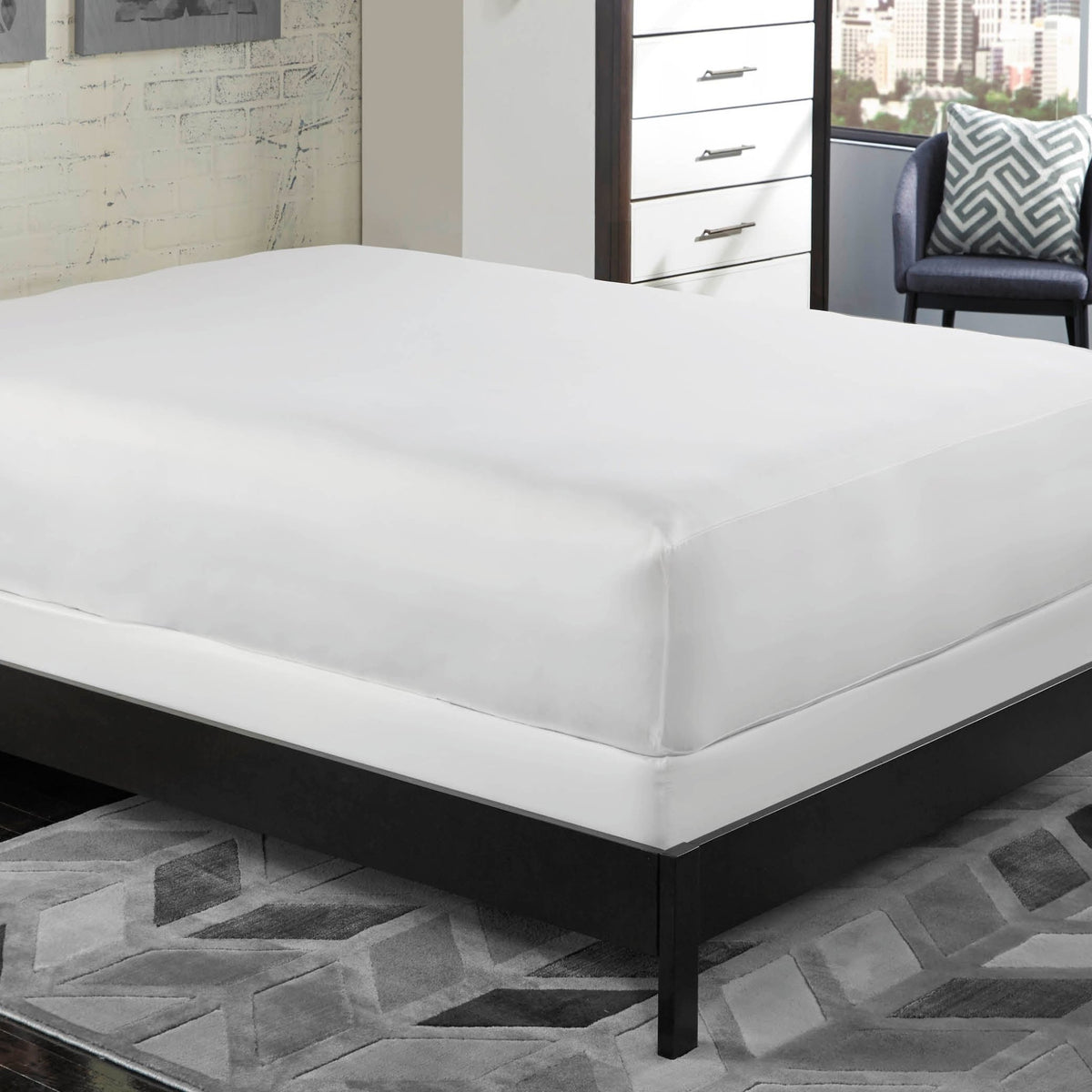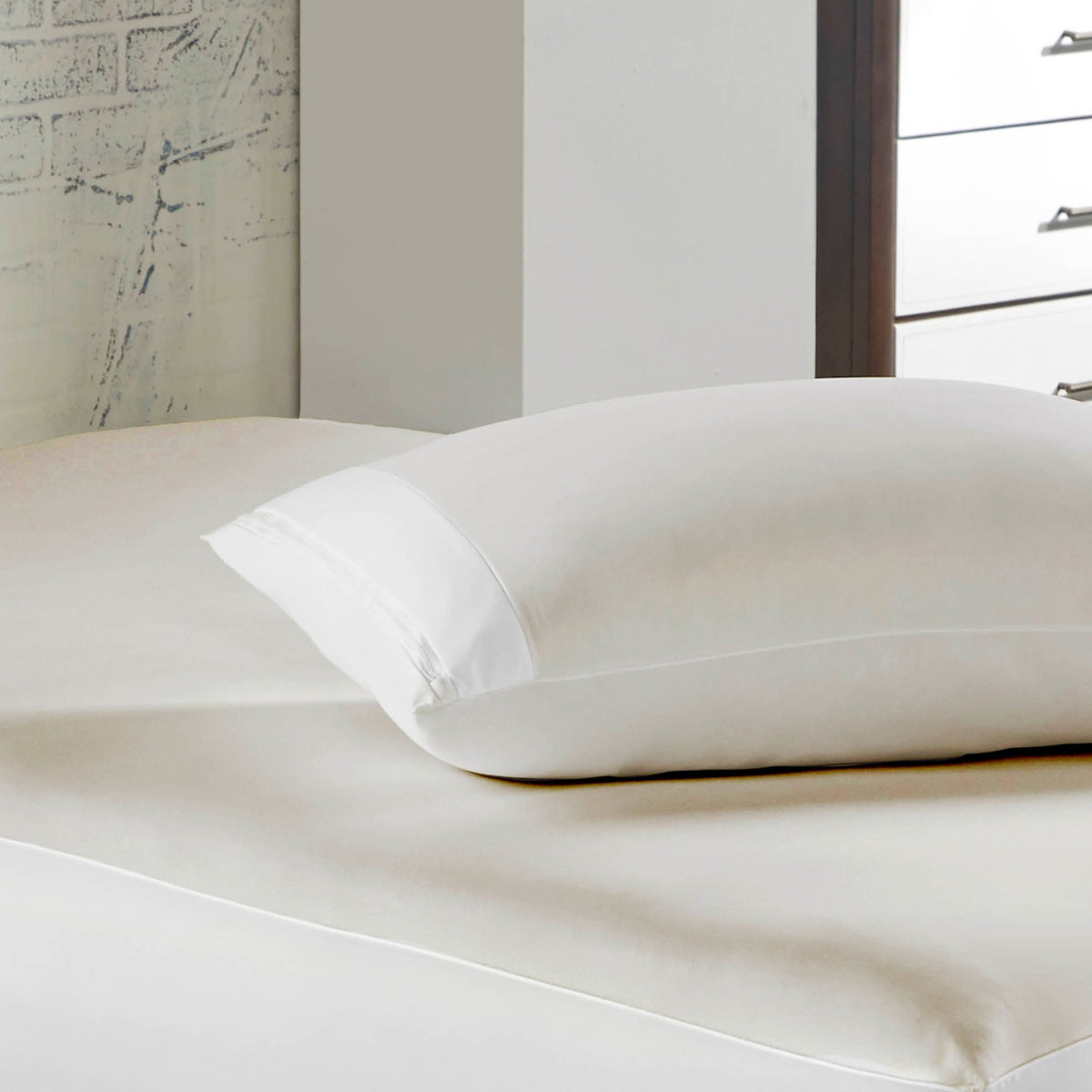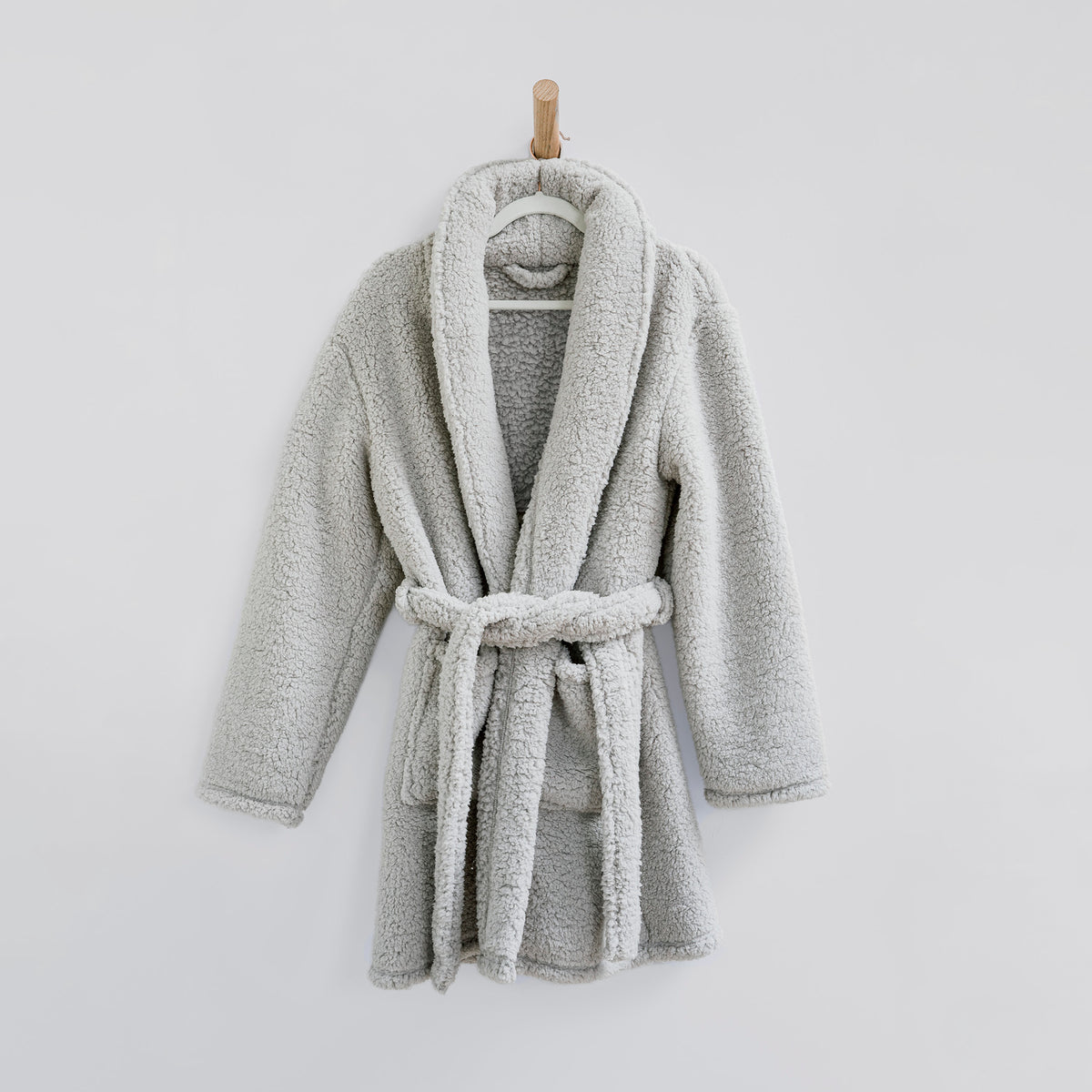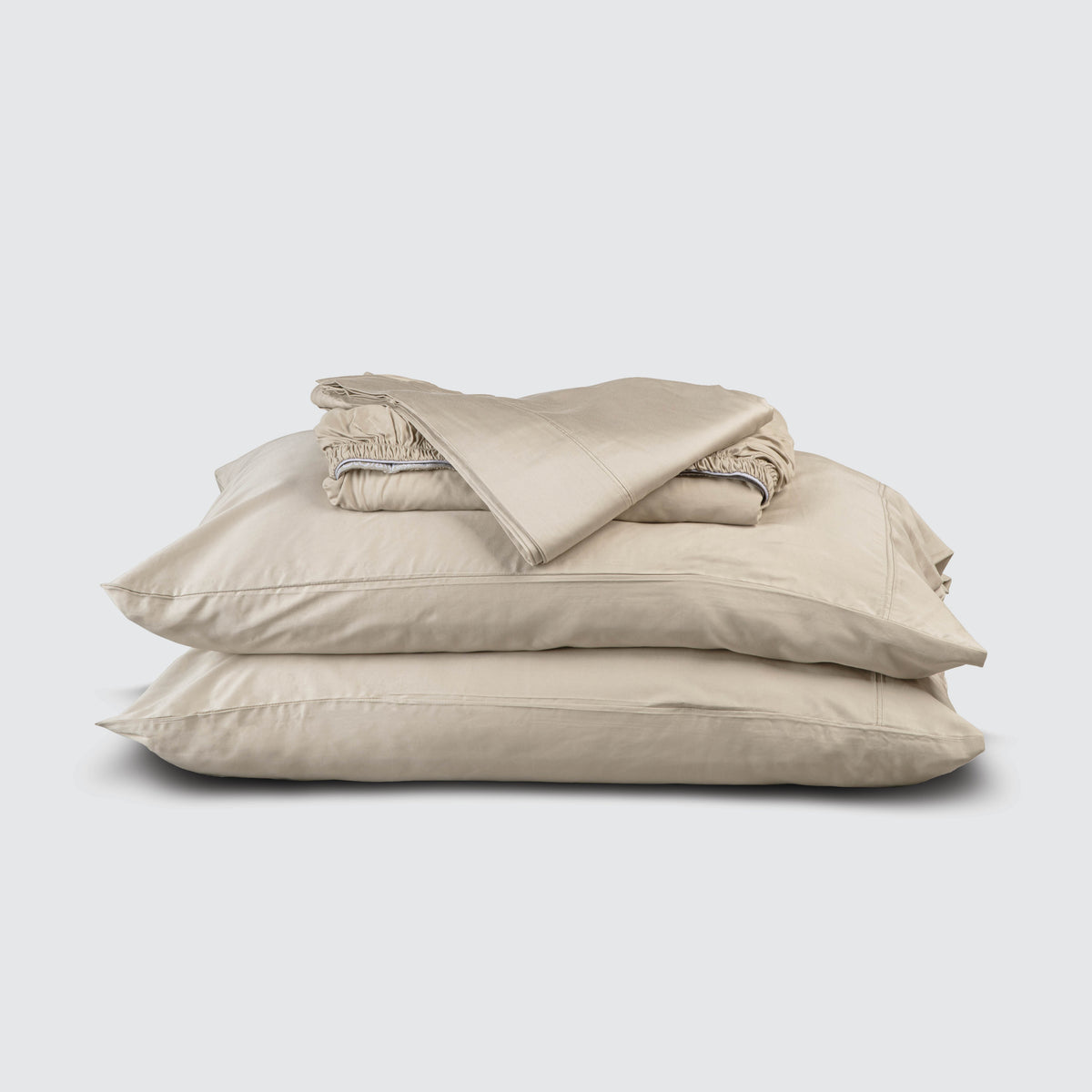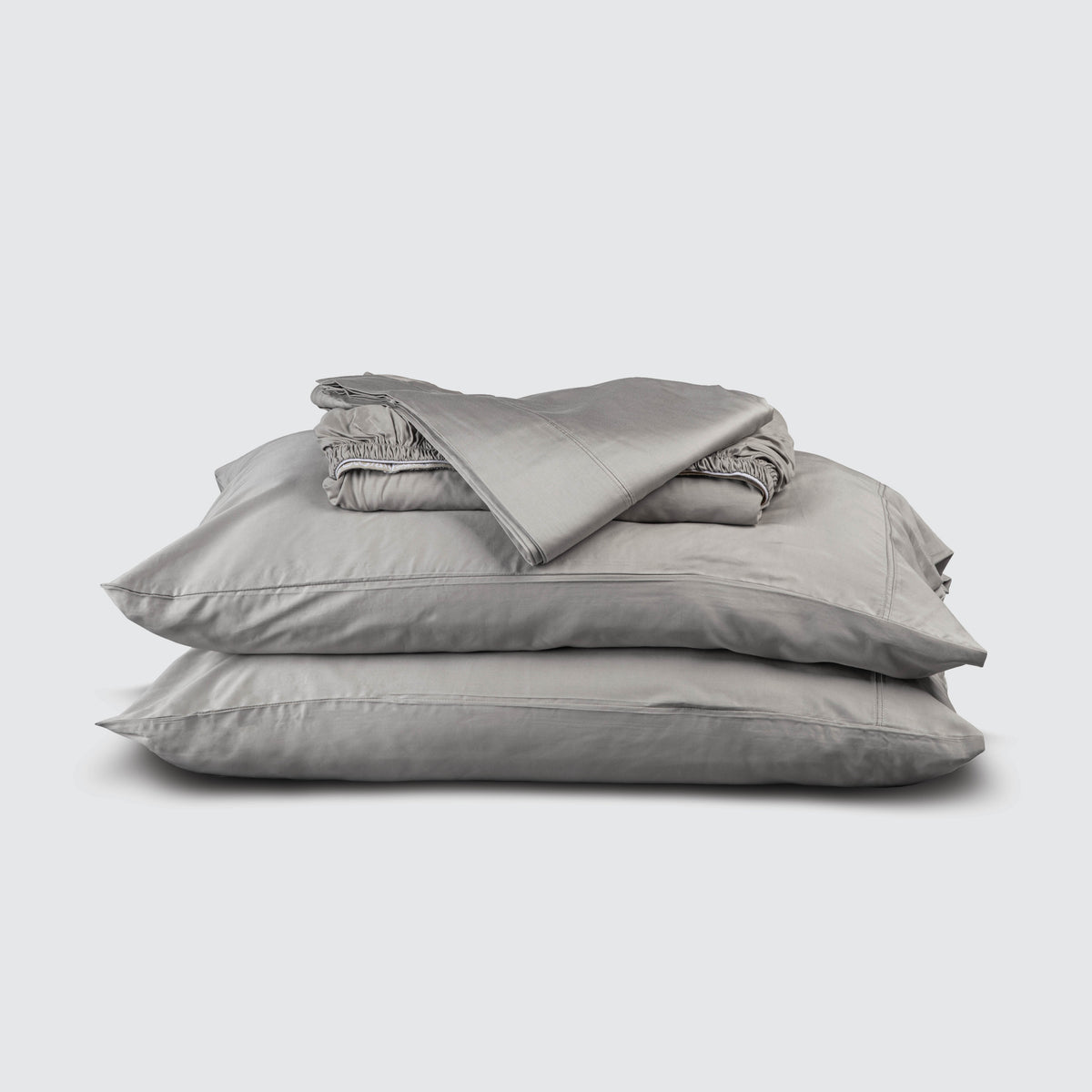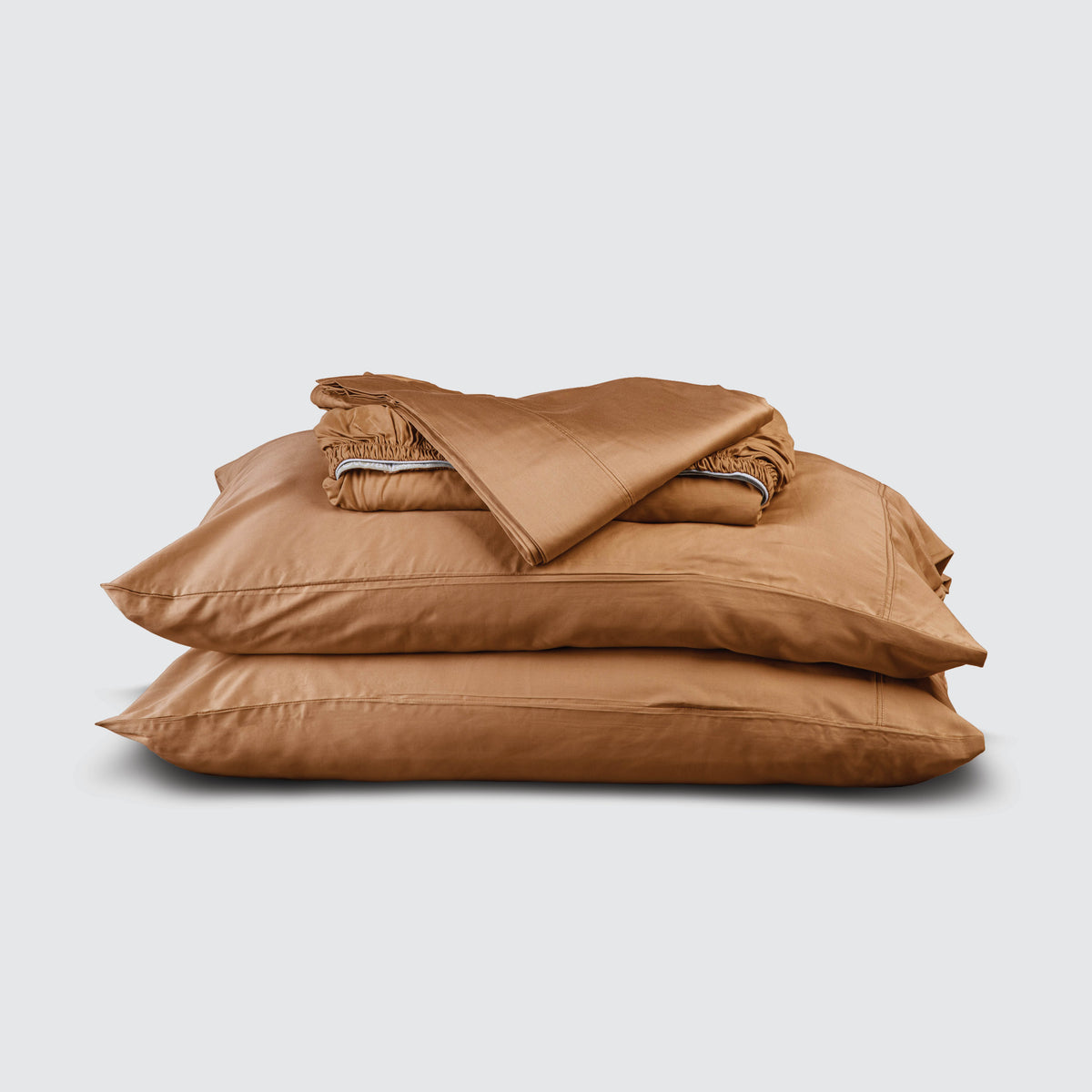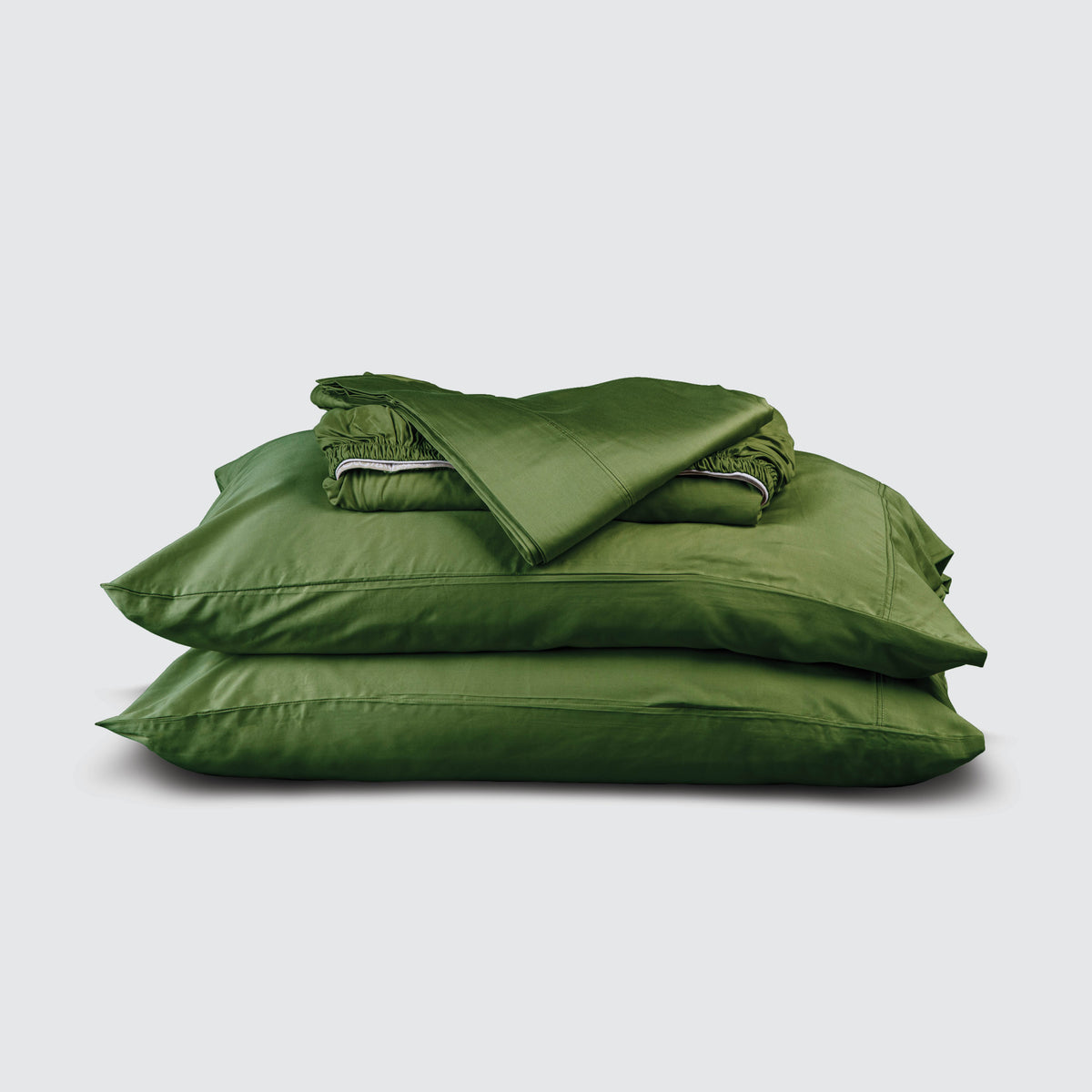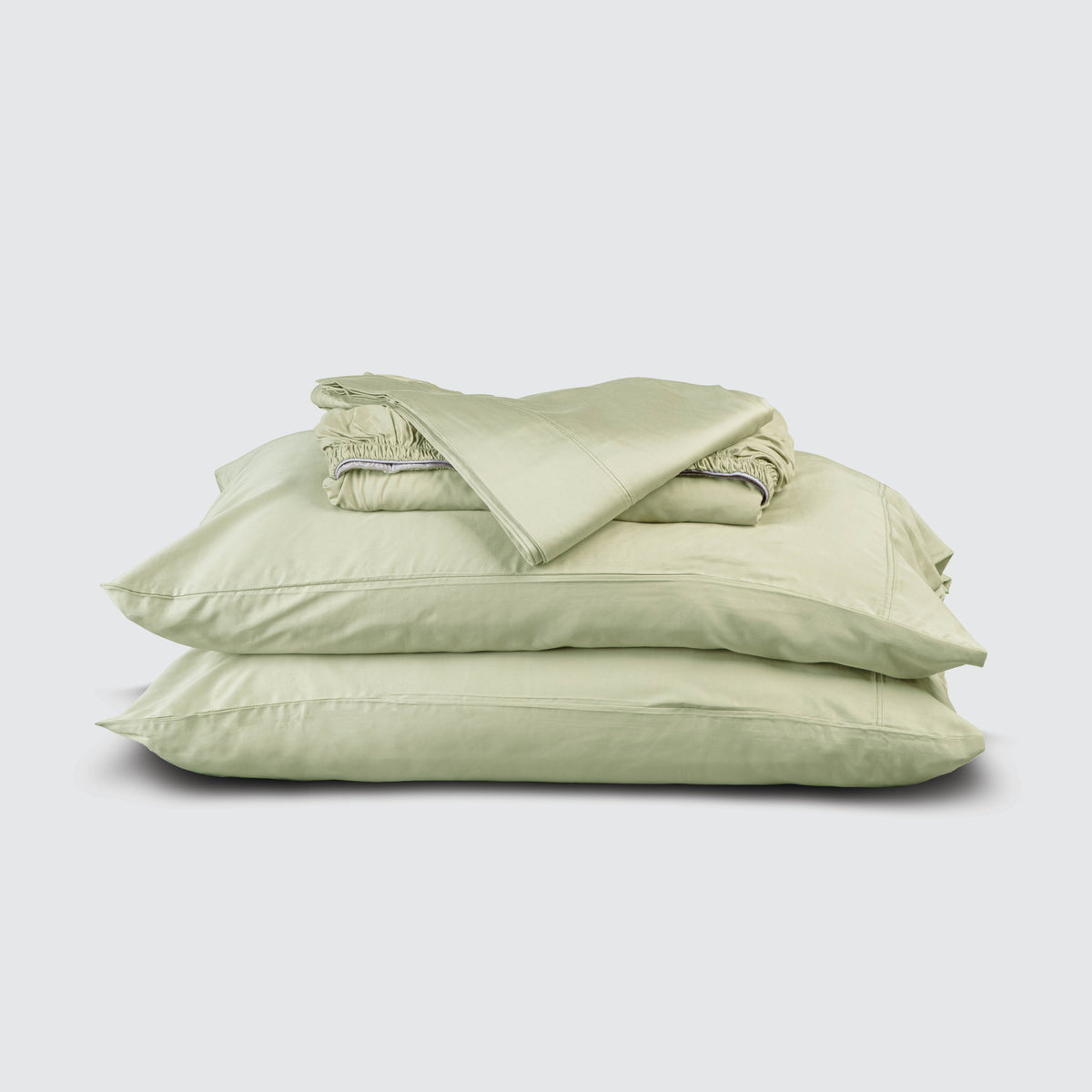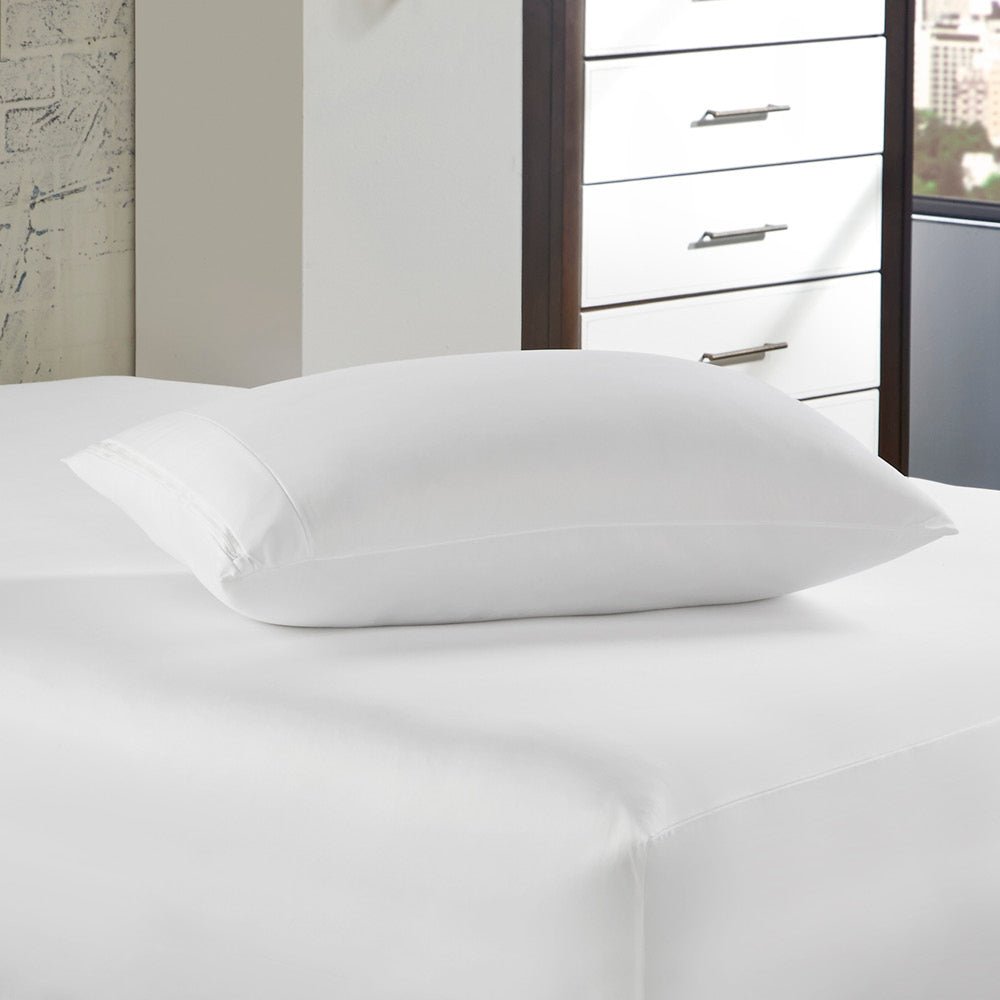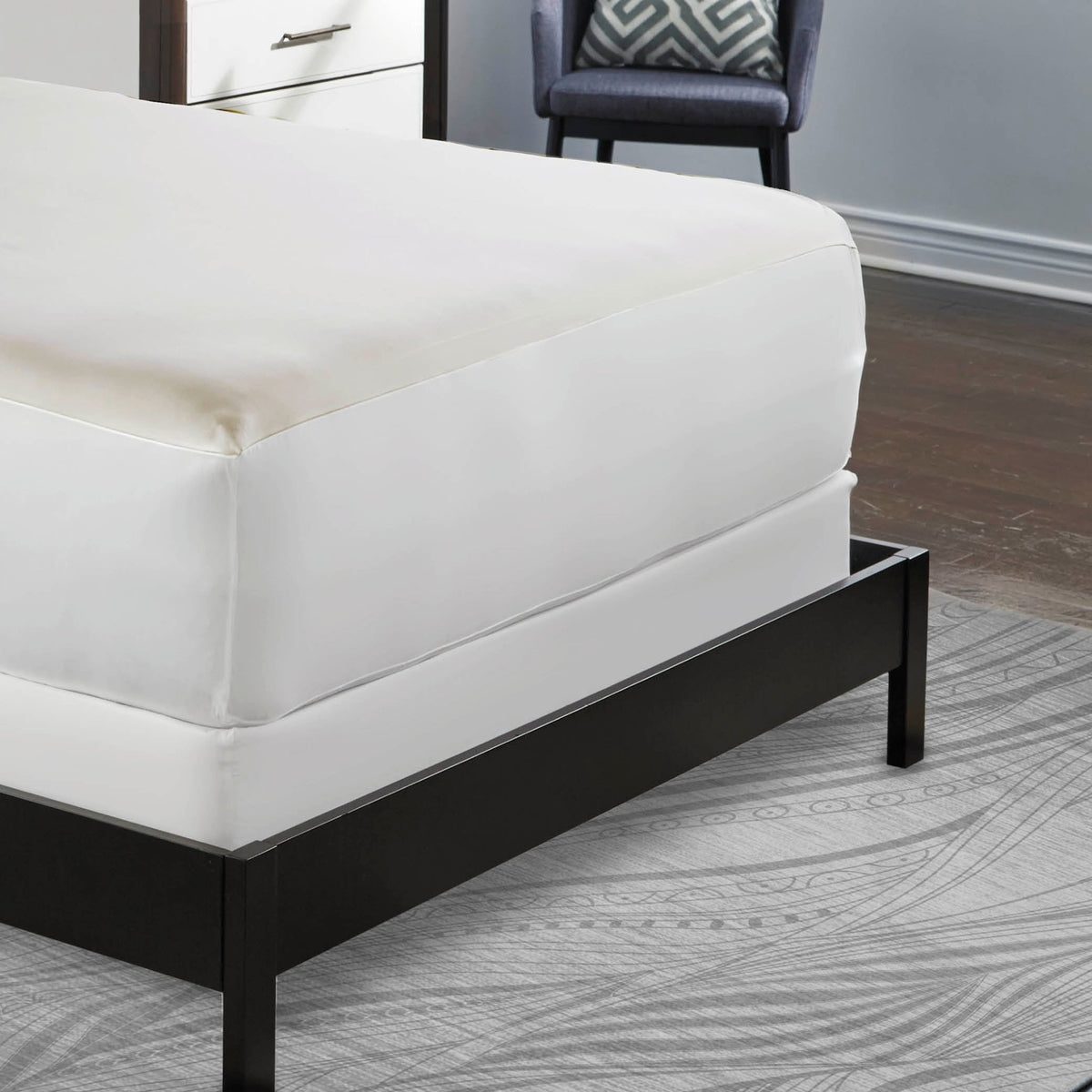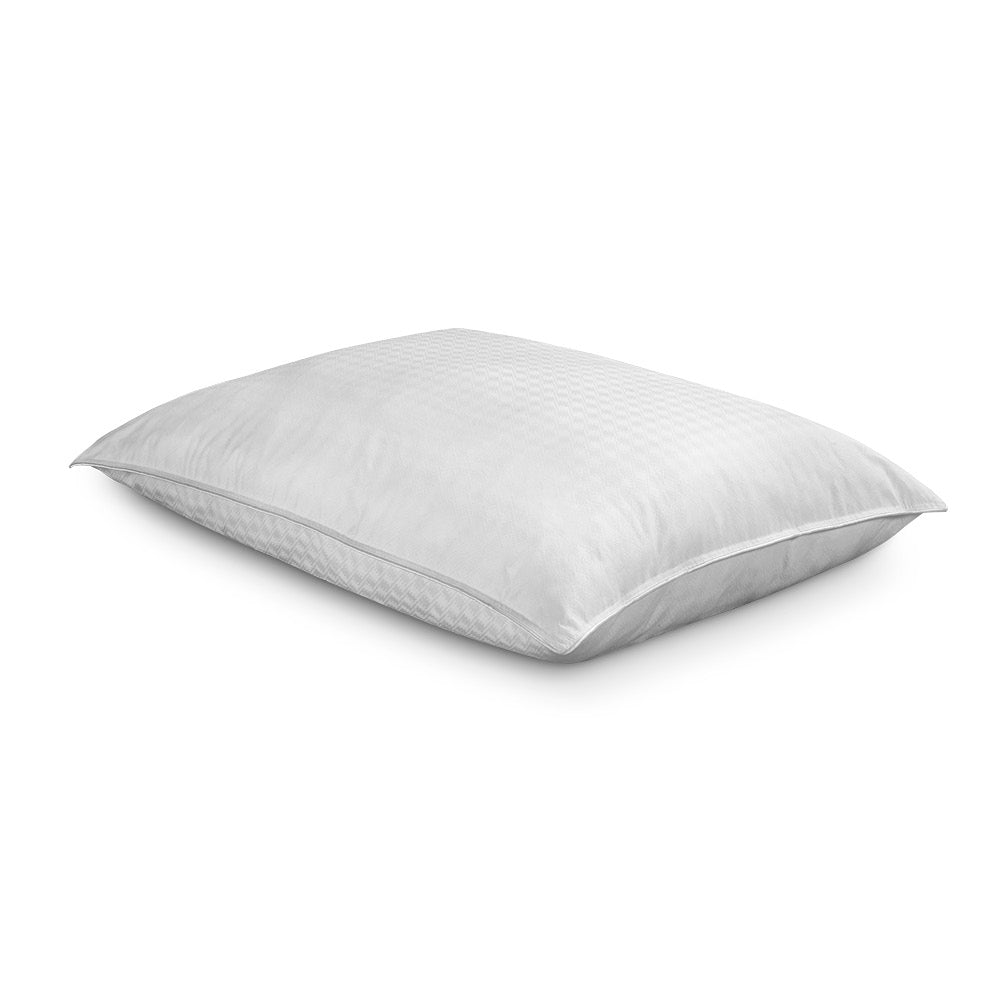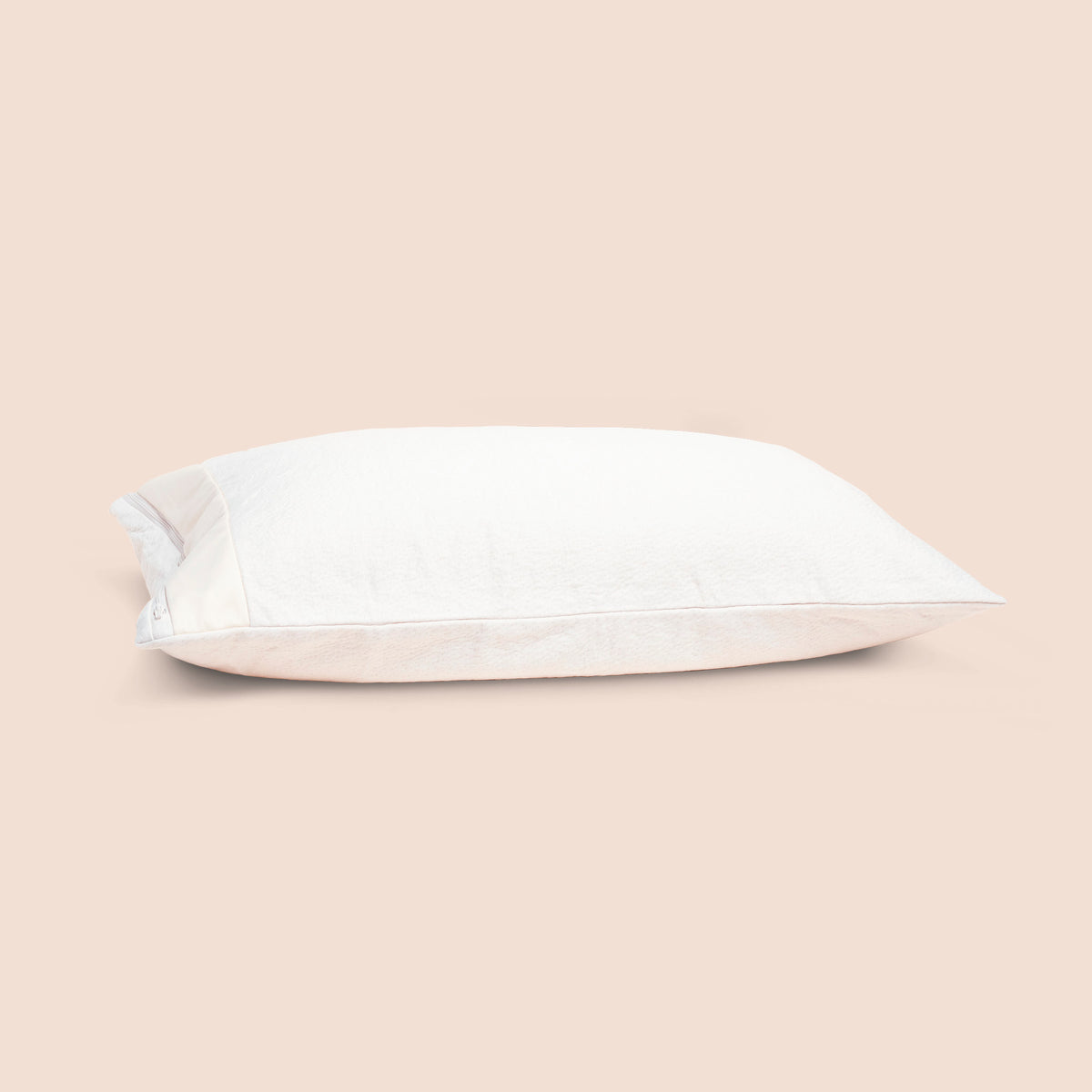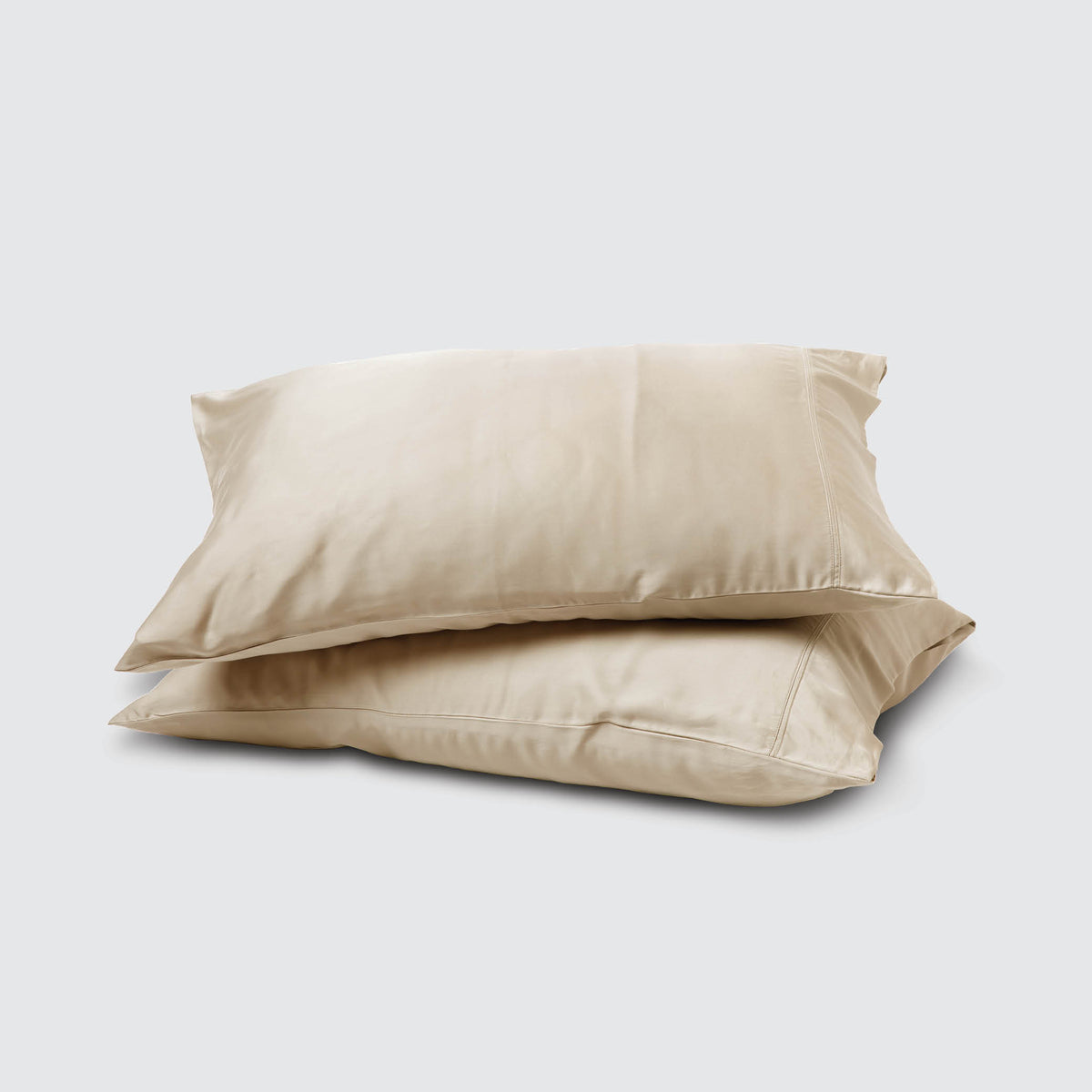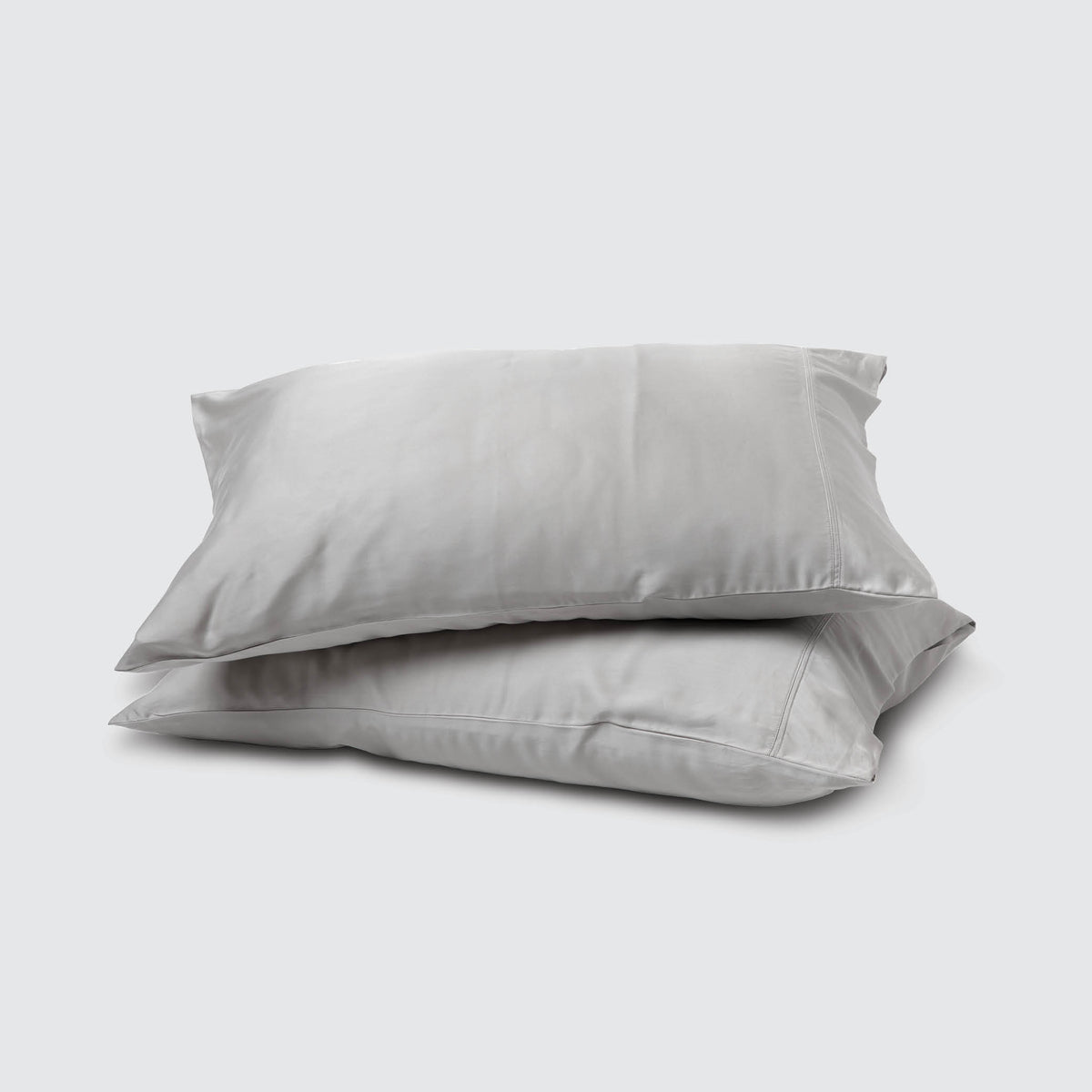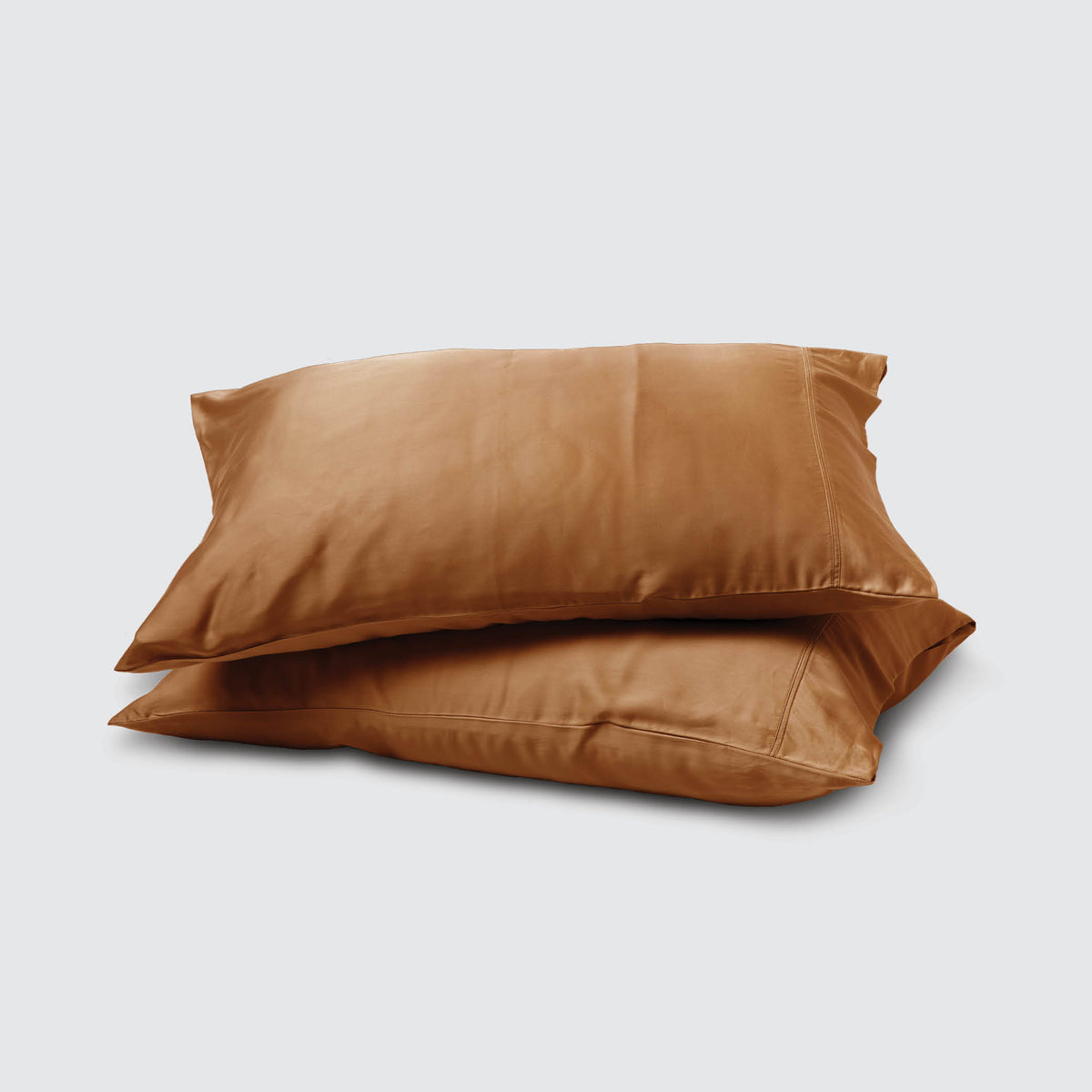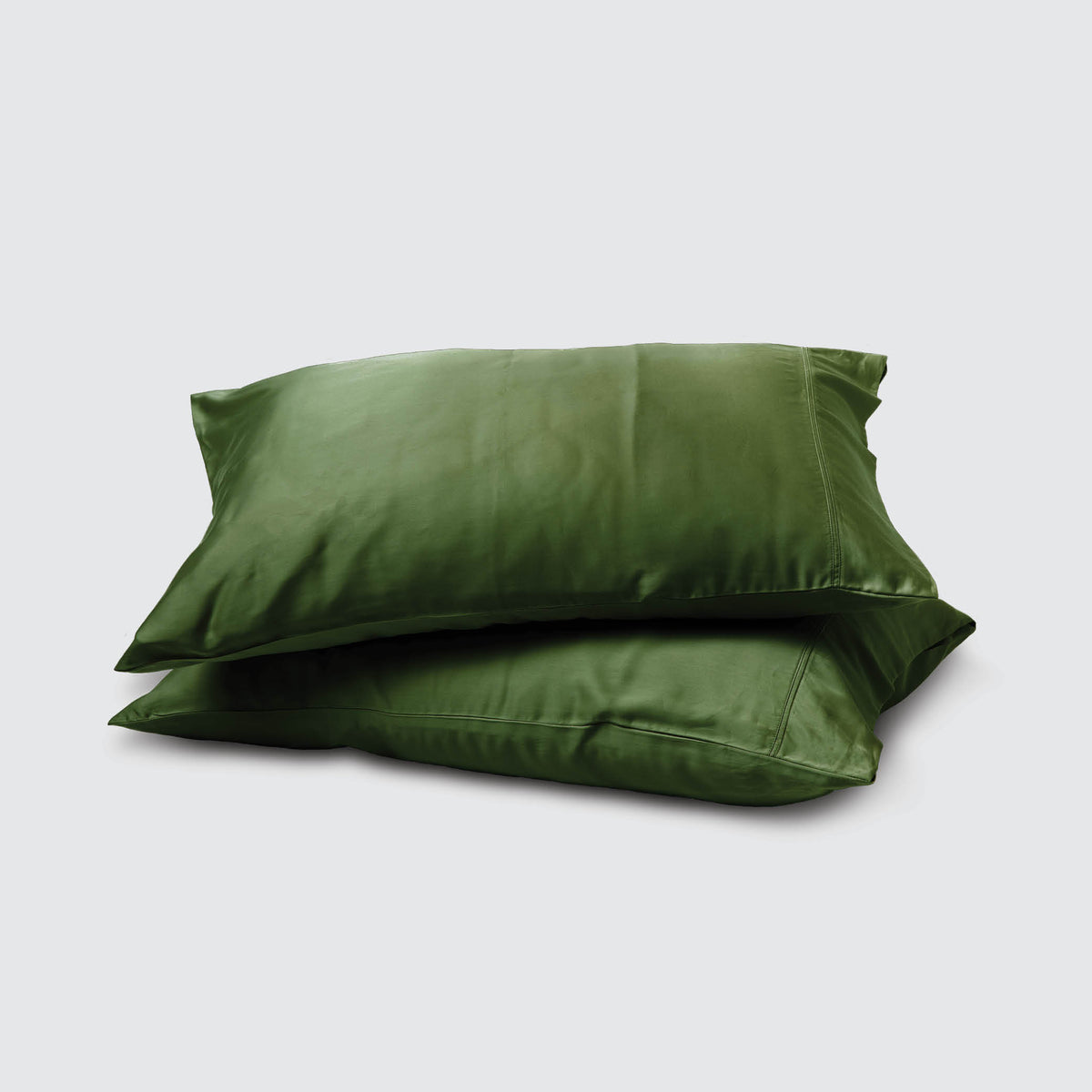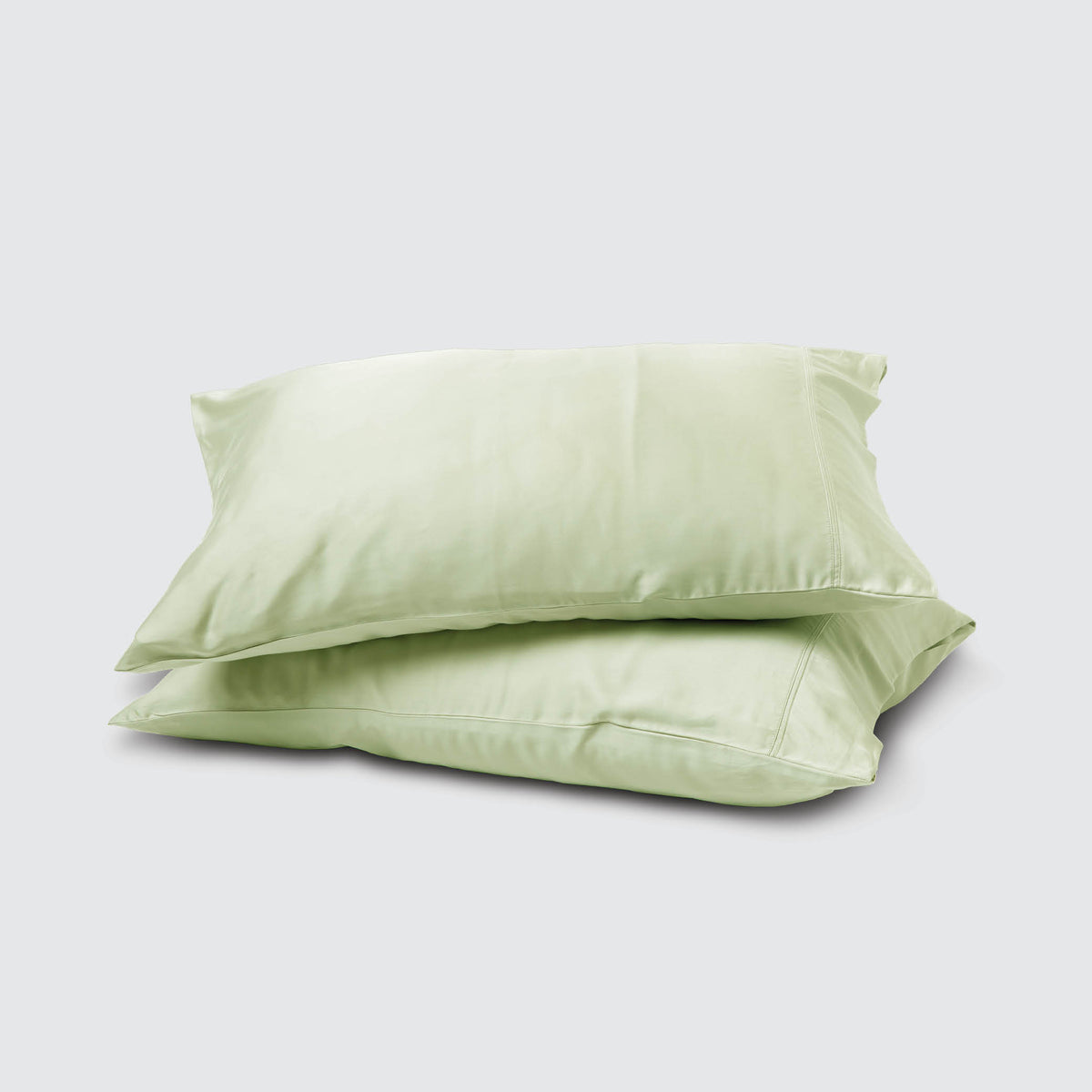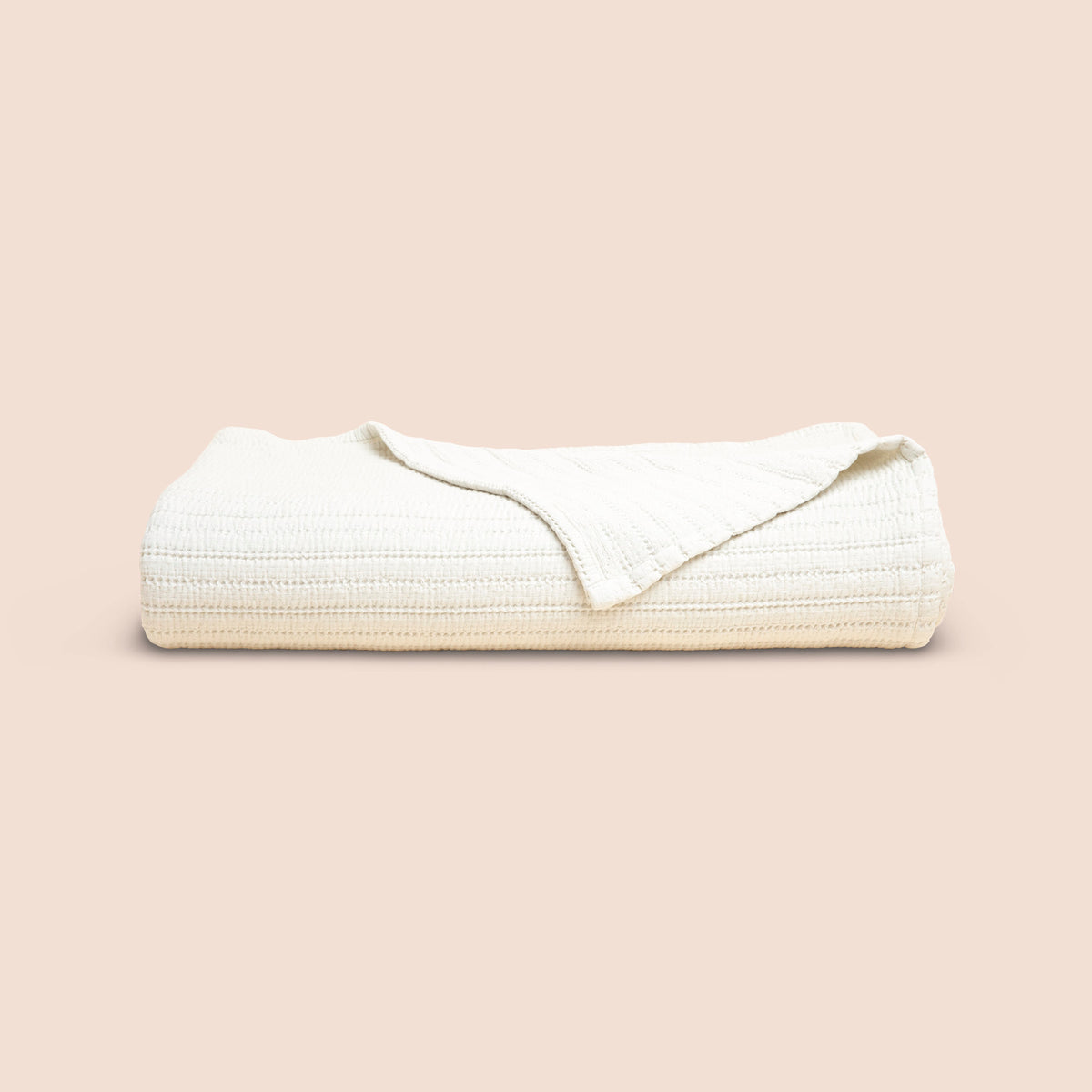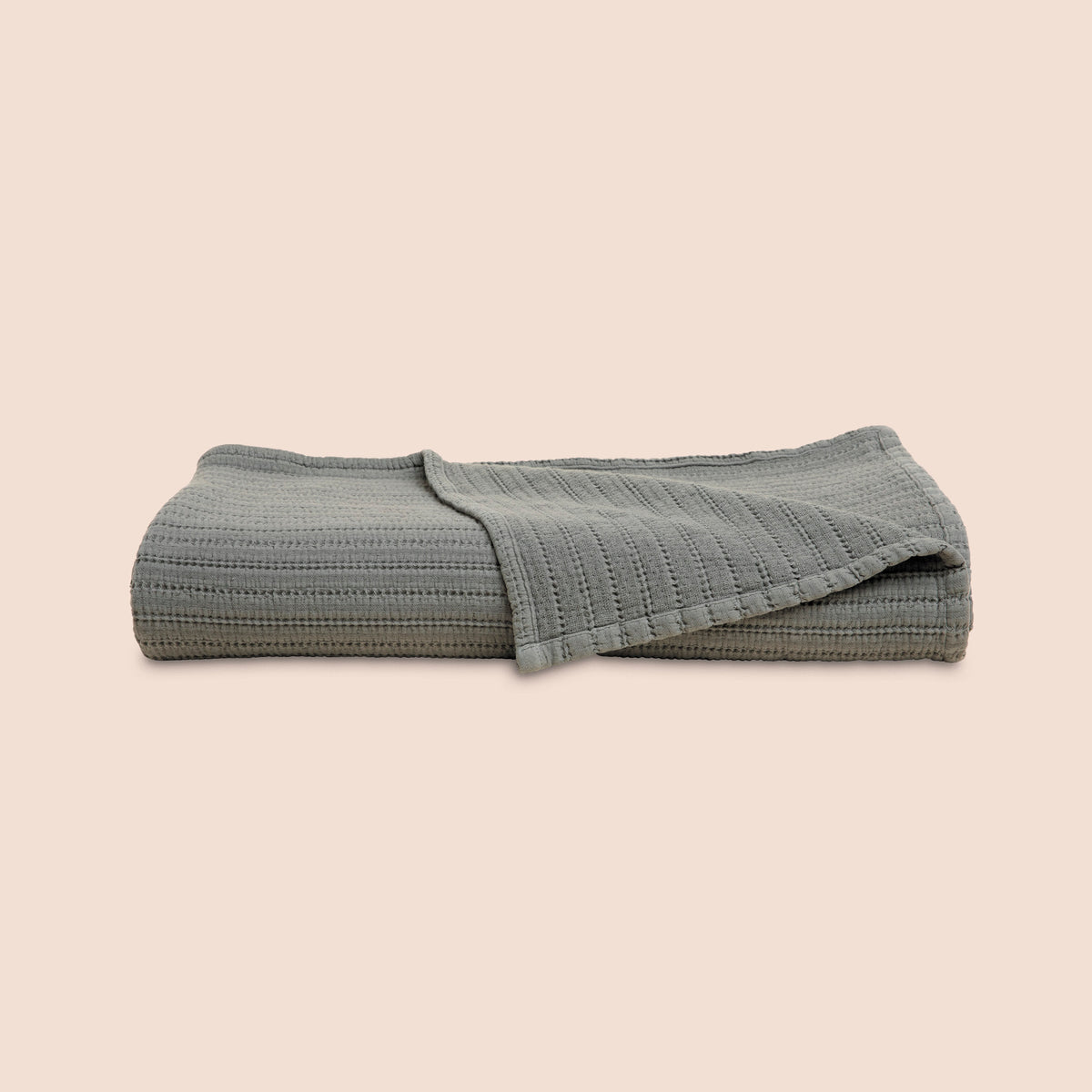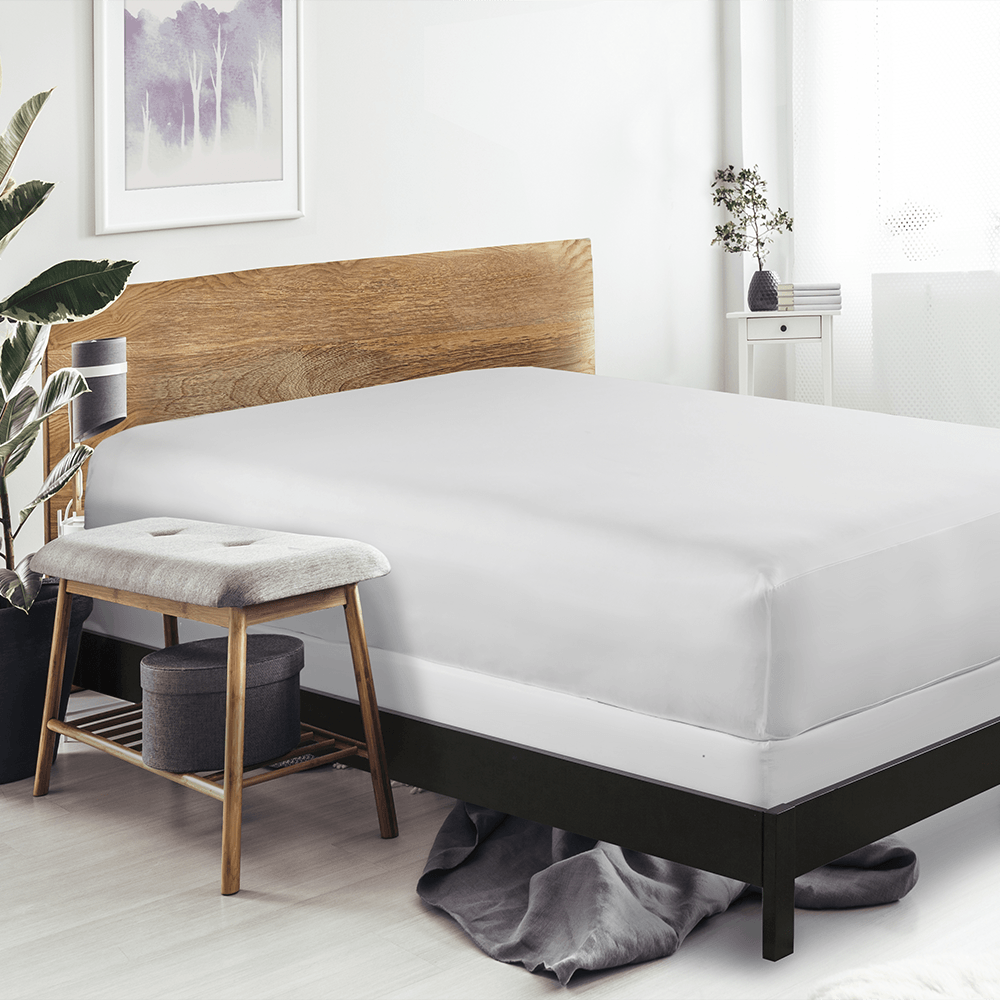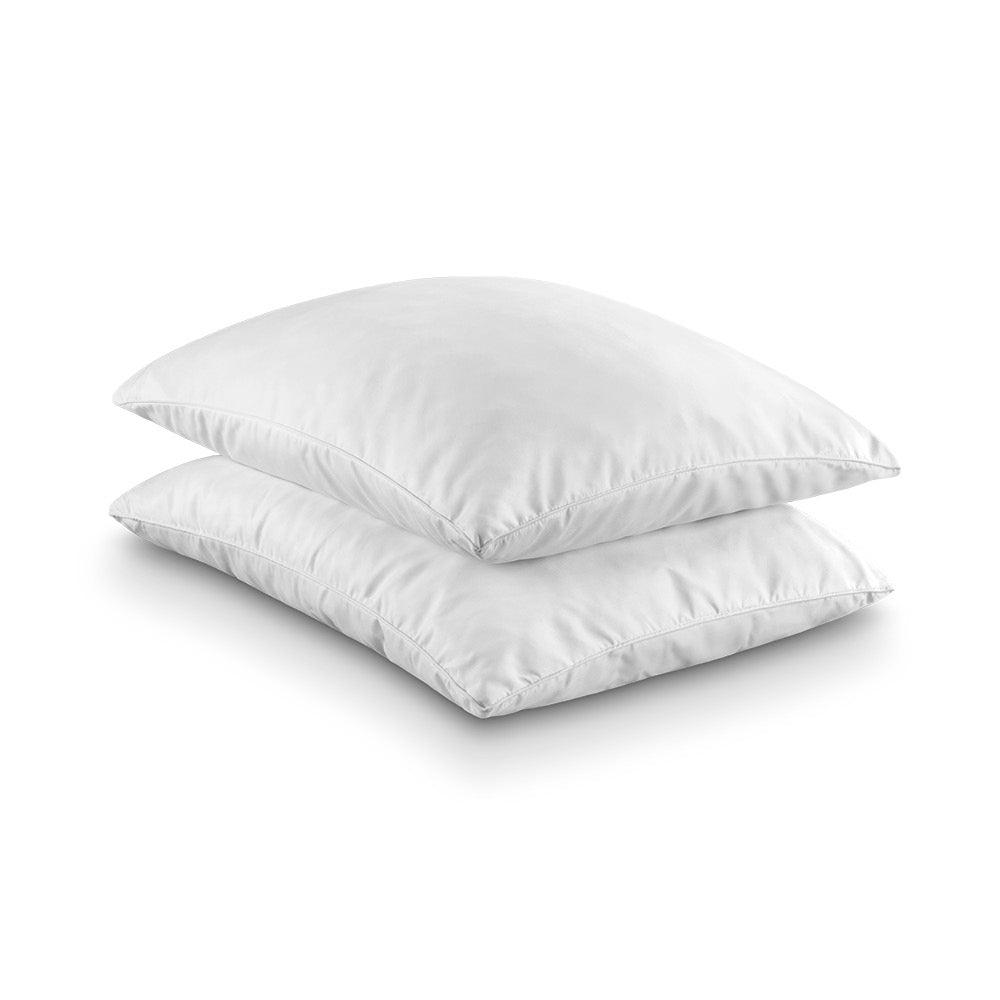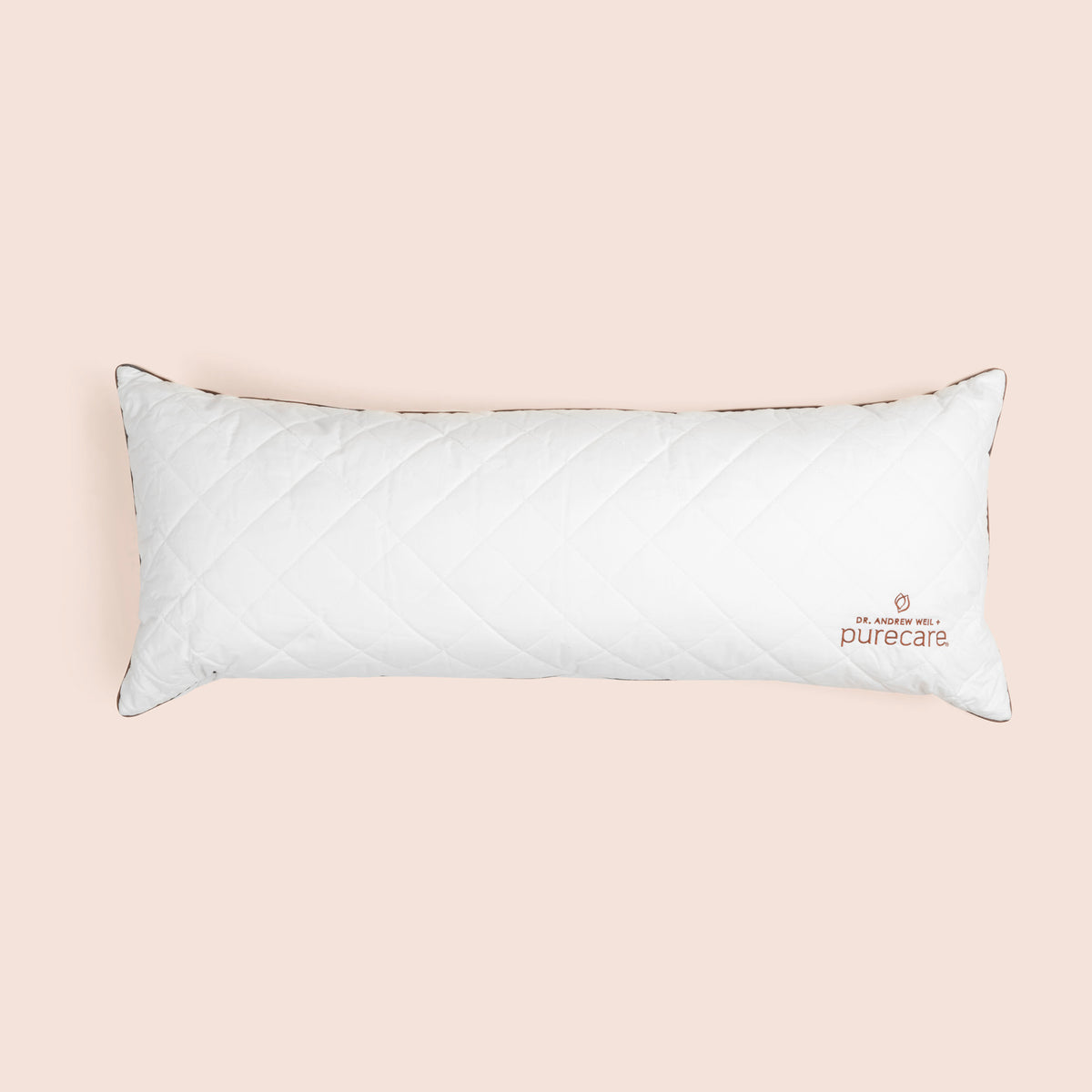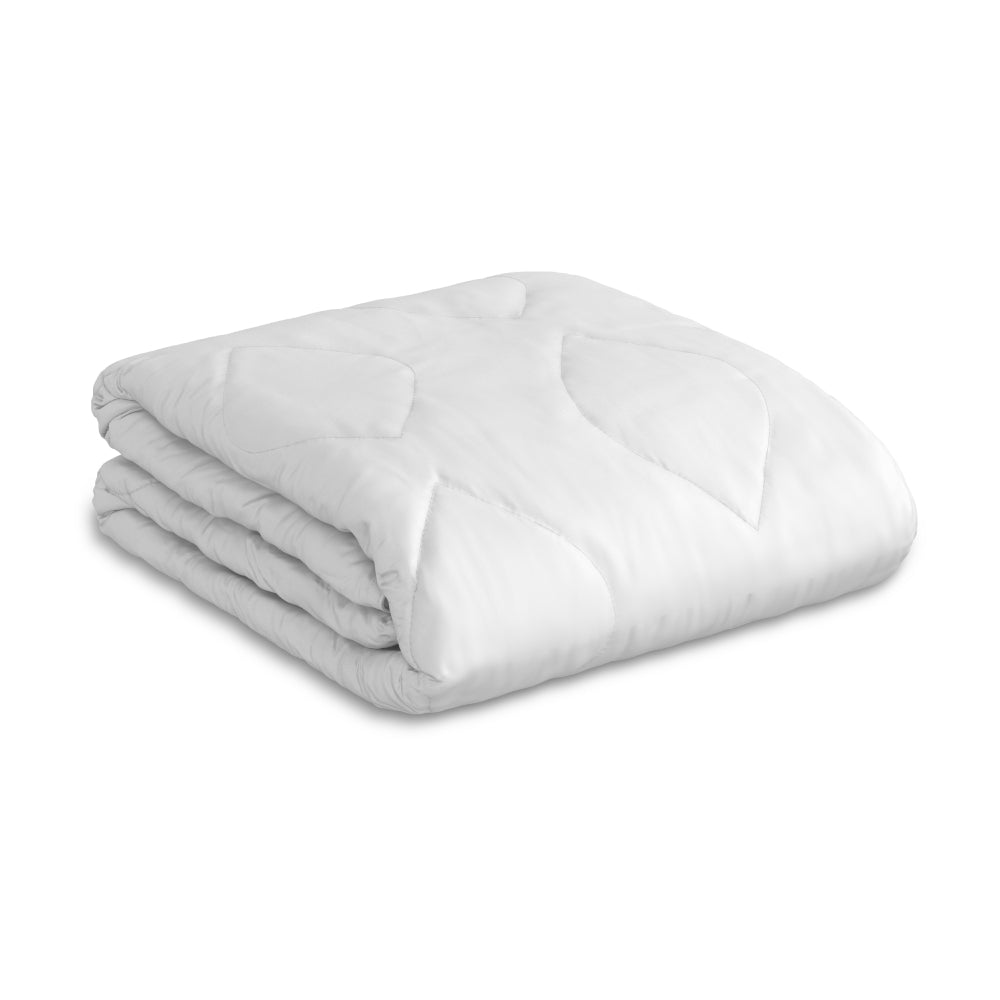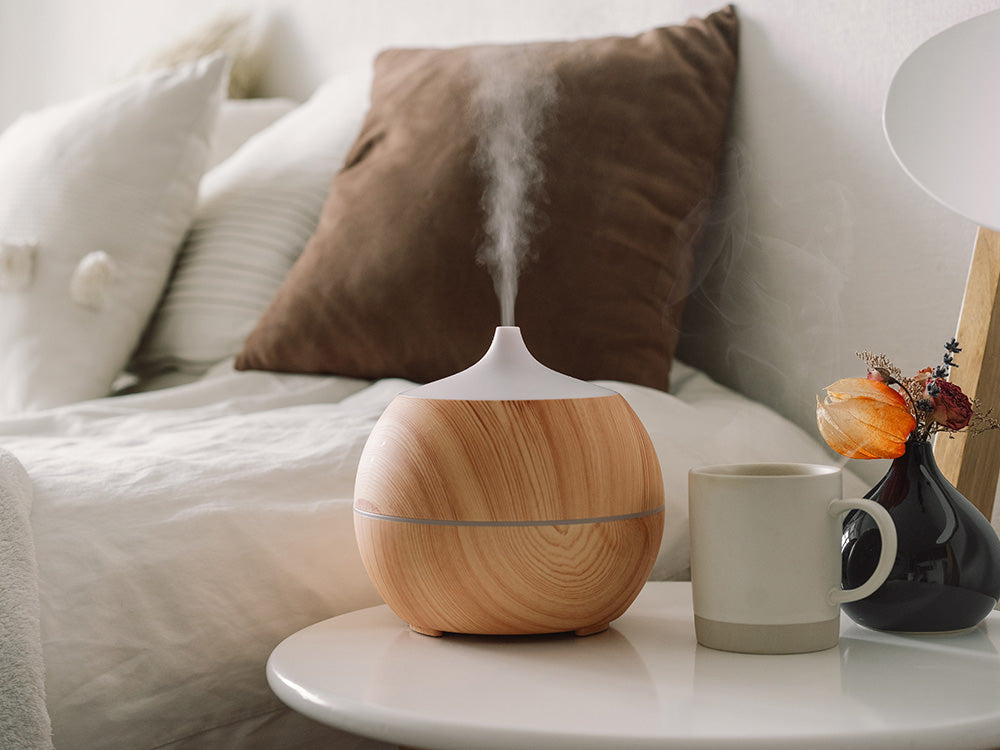Our bodies lose heat at bedtime. It's how we stay in sync with the environment, as light and heat work together to our brains that it's time to sleep. In fact, we're most likely to choose our "lights-out" moment at the time when our body temperatures are falling fastest. And later, just 2 hours after we fall asleep, our body temperatures are as low as they go. All that heat has to go somewhere, so it radiates out, making our skin warmer at the surface.
So picture it: you're cuddling up with your hot-skinned partner. Even your dog is emitting heat. You snuggle under thick blankets.
Unsurprisingly, this doesn't end with restful sleep in a cozy sleep environment. It ends with midnight wake-ups from feeling sweaty and overheated.
Want to sleep better? We're explaining how temperature and relative humidity work in your bedroom.
The Idea Temperature and Humidity Explained
The Ideal temperature for sleep is about 63.5 degrees with 50% humidity (that's around 17 degrees Celcius).
Why so chilly?
Our bodies produce and release melatonin, a natural sleep hormone, when it's cooler. Ultimately, we get sleepy faster and fall asleep easier in cool temperatures because of this biological boost in sleep chemicals. Cooling your room can trigger the release of melatonin.
But here's the rub: if our core temperature falls too fast, we shiver. That takes energy and keeps us uncomfortably awake. For the perfect balance, keep temperatures in the low to mid-60s Fahrenheit.
Comfort is the reason for the ideal humidity of 50%, too. There's a range of problems that could keep you up when you are trying to sleep with low humidity:
- Nose and throat irritation
- Bloody nose
- Dry, scratchy eyes
- Sinusitis
- Cracked, itchy skin with uncomfortable rashes
- Amplified asthma and allergy symptoms
- Chapped, burning lips
- Increased static electricity in sheets, bedding, and pajamas
Is your bedroom humidity too high? That comes with its own set of problems:
- Feeling dehydrated and thirsty
- Sweat not evaporating from bedding
- Increased dust mite activity
- Muscle cramps, headaches, and faintness: all early signs of heat exhaustion
The sweet spot? Indoor humidity ideals range from 30 to 60%.
How Humidity Affects Sleep
The ideal humidity level in your bedroom for sleep is around 50%. That doesn't differ much from the ideal humidity for daytime activities, so there's no need to change your climate control settings.
However, the average sleeper is typically a little pickier about their preferred humidity when they're sleeping.
Why?
It’s because we have less control over adjusting to ambient humidity. While asleep, we're wrapped in blankets, we expend more stable energy across the night, and we can't change our clothes or activity levels to adjust our comfort levels on the fly. So when our body temperature shifts with our sleep stages during the night, there's little we can do to compensate.
Because high humidity makes us feel warmer than the temperature indicates, turning the humidity down a few percentage points at night can be a way to improve your sleep quality and get the best sleep of your life.
High humidity can also cause secondary sleep disruptions from increased mildew, mites, and mold. With an itchy nose, allergies, and irritation, indoor humidity levels are a root cause of sleep disruption.
How Temperature Affects Sleep
Temperature is one of the most important mechanisms to impact sleep. From the time we're trying to sleep, cool temperatures:
- Create an urge to snuggle up and get comfortable
- Help us expend less energy
- Shorten how long it takes to fall asleep
- Signal the release of melatonin, which causes blood vessels in hands and feet to dilate, cooling us even more
- Reduces cortisol, which helps us feel alert
When we've been sleeping, temperature continues to impact the quality of sleep we get, whether it wakes us or not. Some impacts include:
- Promoting NREM (deep, slow wave sleep) that's associated with core and brain cooling
- Signaling when it's time to enter REM sleep and how long that sleep phase lasts
- Losing sensitivity to hot and cold during REM sleep
- Alerting us when it's time for us to wake
Our temperature during sleep helps keep us asleep and moves us through sleep cycles. Problems with this circadian cycle, which relies on temperature, emerge when temperature is not ideal. Even though we might stay asleep, we’re likely to wake feeling less than rested because our sleep cycles were interrupted. Because we don’t wake in the night, we may not even realize there’s a problem.
Increasing Humidity in the Bedroom
You can optimize your bedroom for an ideal path through your sleep cycles by hacking your bedroom temperature and humidity. Here are some methods of increasing humidity for sleep:
- Become a Plant Parent: Plants naturally increase 97% of the moisture they consume into the air around them, increasing your room's humidity. They also add a natural look to your bedroom and there are tons of easy-to-grow non-toxic options.
- Let Your Shower Do the Work: If you shower in the evening, open your bathroom door and let that steam into your bedroom.
- Check Your Weatherstripping: If it's been a while since you've checked the seals on your windows and doors, make sure they're not cracking, letting valuable moisture stroll right out of the room.
- Line-Dry Your Clothes: When air is dry, it absorbs water from wet objects around it. This is great for drying your hair fast, but it's also handy when you want to increase the humidity in your room. Hang your clothes on drying racks in the bedroom, rather than running the dryer. You'll increase the humidity in your room and save the planet, too.
- Try Bowls, Vases, and Fish Tanks: All will evaporate water into the air daily (and even more when the air is dry).
Lowering Humidity in the Bedroom
High humidity and sleep don't go together any better than dry air and comfortable sleep. Want some natural tips for optimizing bedroom humidity when you live in a stuffier environment?
- Get Some Air: Throw open those windows! Circulating air can make you feel cooler and combat the threat of mildew caused by high humidity.
- Display Your Salt Lamp: You can also use rock salt in bowls around the room. They'll soak up the moisture in the air, lowering humidity.
- Consider Shorter, Cooler Showers: If that sounds too chilly, consider shifting your schedule and taking morning showers, so excess moisture will clear from your bedroom long before it's time for bed.
- Invest in a Ceiling or Portable Fan: Get the air moving. If you rely on A/C instead, ensure the filter is clean for maximum airflow.
- Buy a Dehumidifier: A very humid environment may need a big solution. Consider a dehumidifier, designed to capture water vapor in the air. It's made to keep your home drier (and cooler, too).
Other Tips to Maintain Optimal Humidity Levels
It's easy if you live in a place where the ambient humidity is generally very high or very low, but what if it varies through the night? There are still some ways to ensure your body and bedding stay cool and fresh.
- Invest in a Cooling and Warming Mattress Protector: The best mattress can make all the difference in your personal comfort. Keep your microclimate ideal all night with a mattress protector that comes with FRíO® rapid chill cooling fibers on one side and Heatstar® warming fibers on the reverse.
- Try Cooling Bedding: Even if you sleep cool, cooling bedding ensures that when you do sweat, your bedding wicks moisture away from your body, keeping you that way. Your body's core temperature stays low, so you won't wake up prematurely.
- Change your Bedding for the Season: Some sleepers change their bedding four times yearly to maintain their perfect temperature. Others switch twice — from a warm-weather bedroom (using bedding like bamboo and linen) to cold ones (like velvet, flannel, and heavier duvets). Both options are fine as long as you stay asleep and feel comfortable all night long.
- Give Scandinavian Sleeping a Try: Common in Nordic countries like Sweden and Norway, the Scandinavian sleep method involves couples sleeping in the same bed while using their own bedding. Double duvets allow couples to self-regulate their temperature without a fight, curl their blankets all around them, and adjust to their thermal needs at night without the threat of blanket stealing.
Optimal Sleep Should be as Easy as Dozing Off
The best room temperature and humidity? It's relative. We talked to sleepers who balked at temperatures in the low 60s, saying they'd wake shivering. However, at the end of the day, the drop in core body temperature that precedes slumber means we all appreciate the bedroom a little cooler than our personal daytime ideals. Your ideal is your own.
If you're struggling to get to sleep and stay asleep, start by chilling out your bedding environment with cooling technology. You might just find it’s an easy way to make your bedroom the cocoon of tranquility it should be.
